In My Korea

Complete South Korea Travel Guide 2024: Korean Travel Tips
Planning a trip to Korea but not sure where to start? First-time traveller who isn’t sure if Korea is the right country for your next trip? Worried about travelling to Korea and facing problems with the Korean language, culture, money, Internet, transportation, hotels, food, or etiquette? Then this complete South Korea travel guide is packed full of tips that you’ll certainly need.
You’ll find all the best Korean travel tips and advice in this article. Whether you’re a first-time traveller to Korea, or you’ve visited before, this South Korea travel guide will show what to see, when to travel, and which places to visit, as well as help you avoid any difficult situations or surprising culture shocks.
This guide is designed to walk you through everything you need to know to prepare for your trip to Korea. You can use it to plan your itinerary, to pre-book travel essentials, to learn about what festivals and seasonal events are on, and to find more reasons to want to travel to Korea right now.
Table of Contents
Affiliate Disclaimer : This site contains affiliate links and I may earn commission for purchases made after clicking these links.
What’s In This South Korea Travel Guide
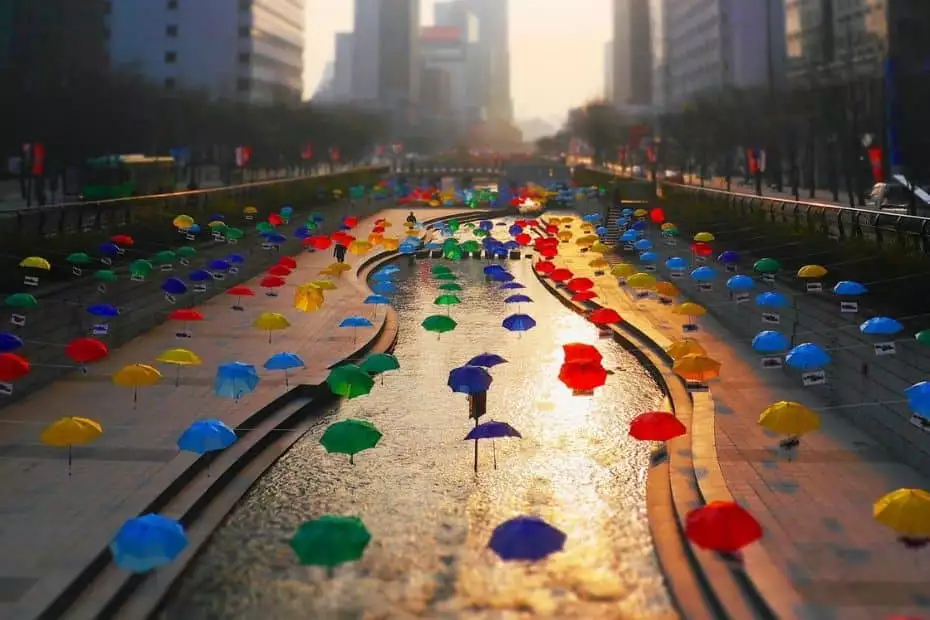
This South Korea travel guide covers all the essential information you need to plan a trip to Korea. This is useful for first-time travellers to Korea who might not be aware of uniquely Korean cultural and travel issues. Even if you’ve visited Korea before, I’m sure you can learn a lot from this travel guide.
This article contains lots of insights and knowledge about travelling to Korea and is quite long. I’ve added links in each section to articles that provide more information about each topic. Therefore, I suggest viewing this South Korea travel guide on a desktop computer as it will be easier to read.
What Are You Looking For?
To help make it easier for you to find what you’re looking for, I’ve broken this article into the following sections. Click the quick links below to jump straight there or keep reading through all parts.

Latest Travel News
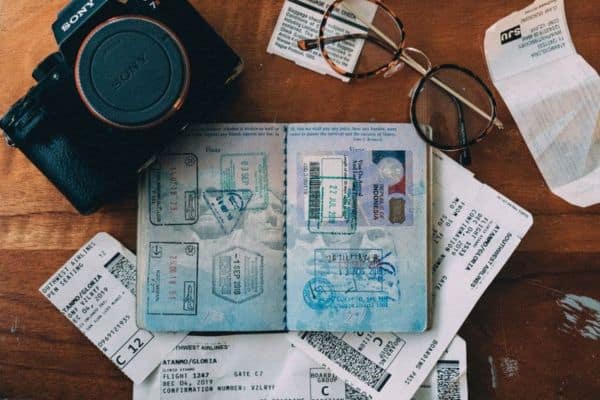
Entry Requirements
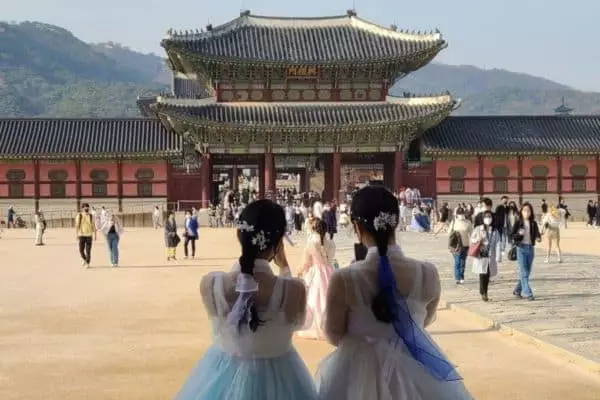
Why Visit Korea
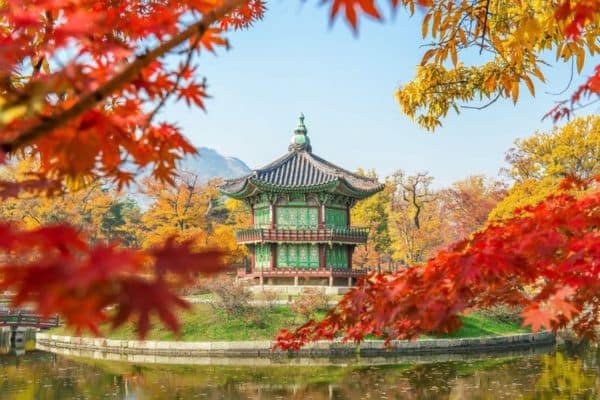
When To Visit
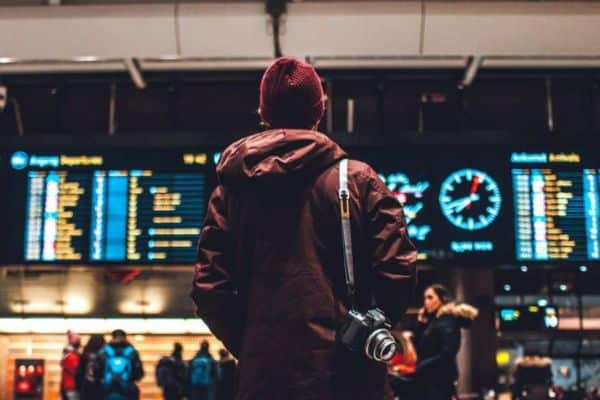
Flights To Korea
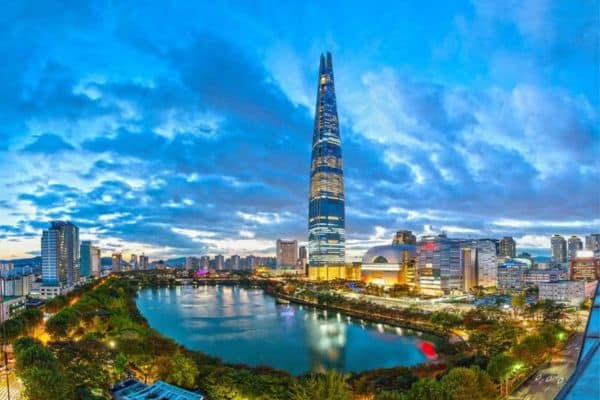
Where To Stay

Korea Travel Costs
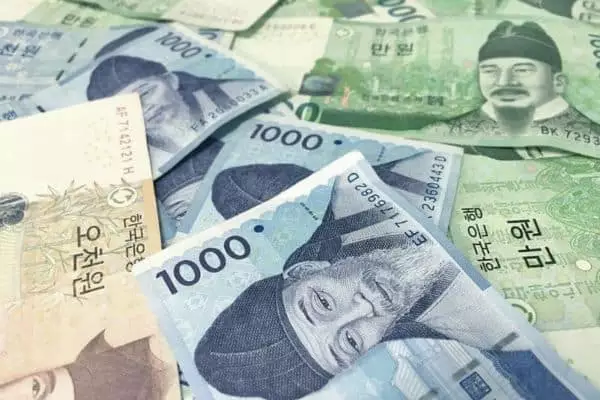
Travel Money
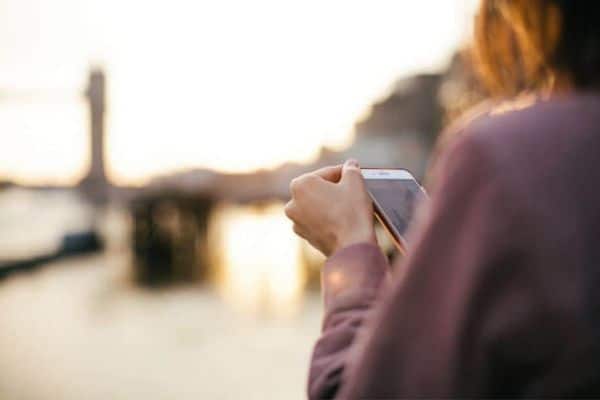
Phones & Internet
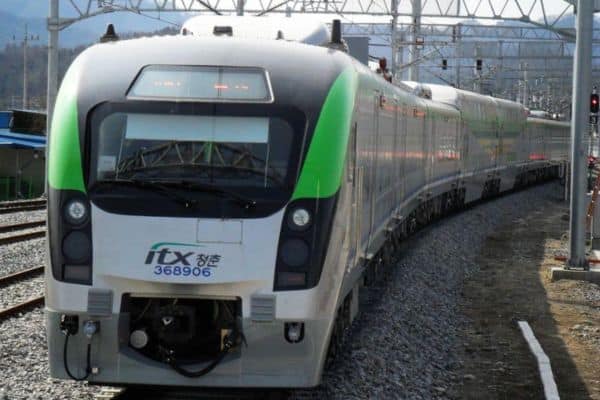
Public Transport
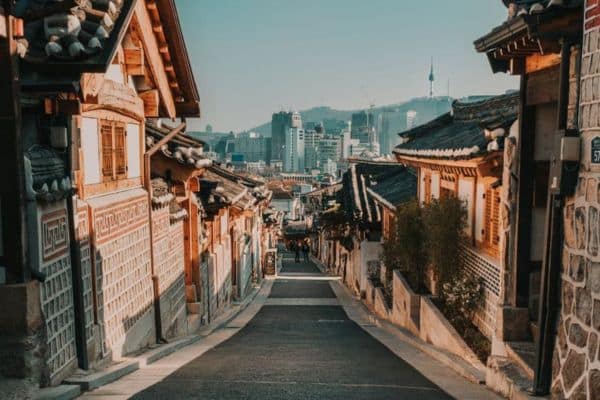
Where To Visit
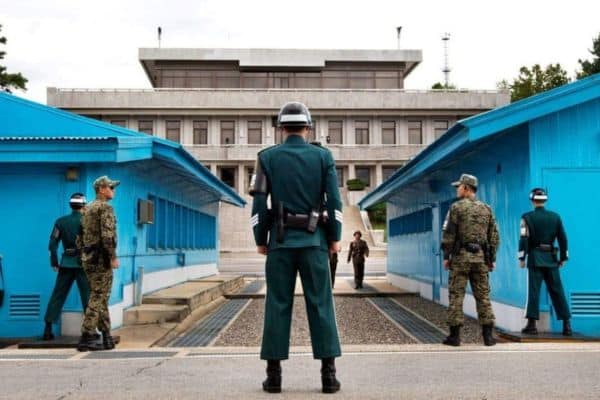
Seoul Day Tours
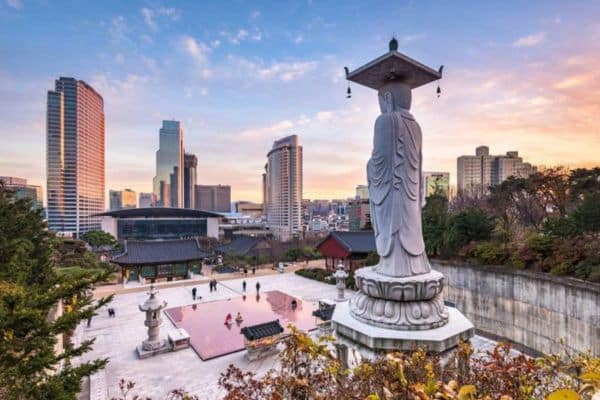
Sightseeing Spots
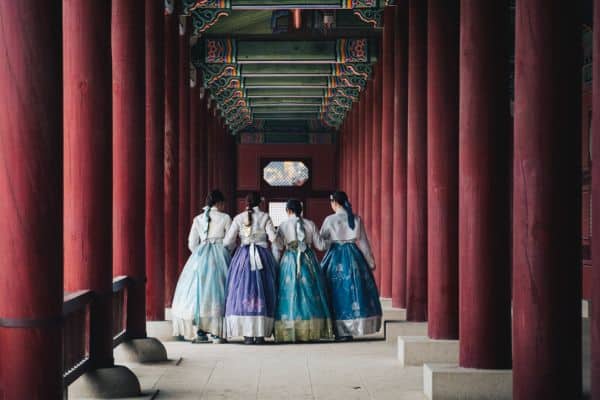
Korean Activities
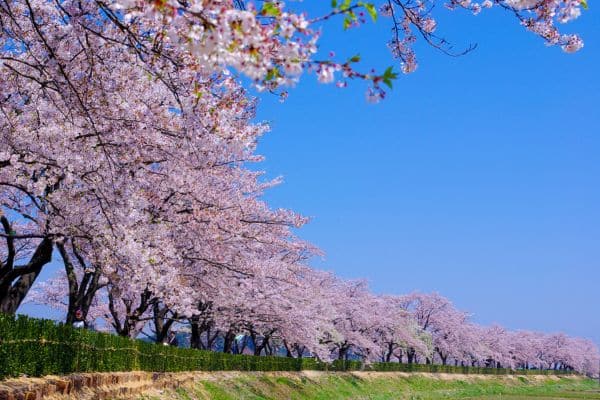
Korean Festivals
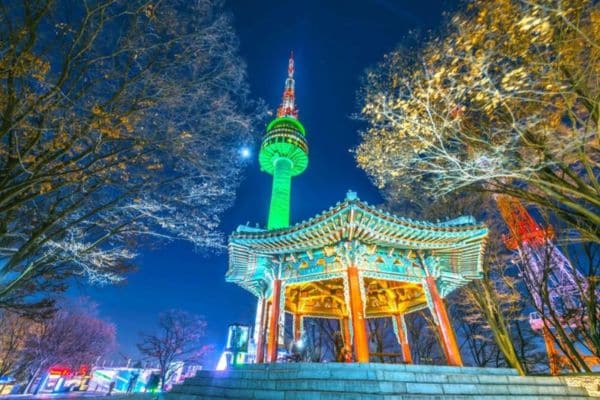
1-Week Itinerary
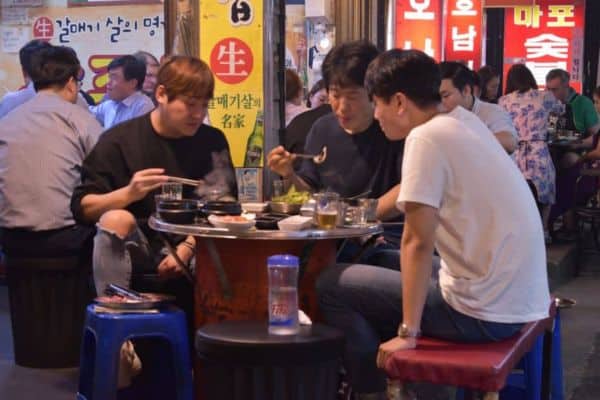
Culture Issues
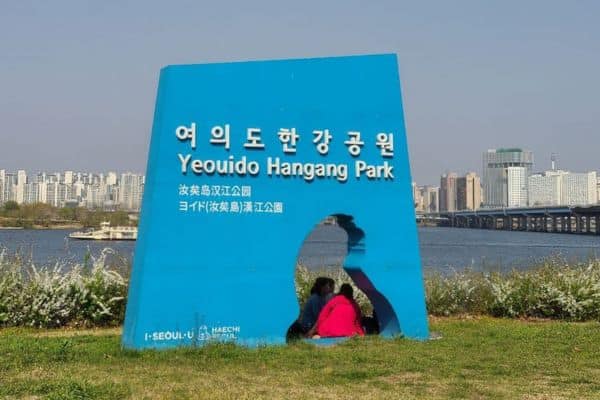
Language Issues
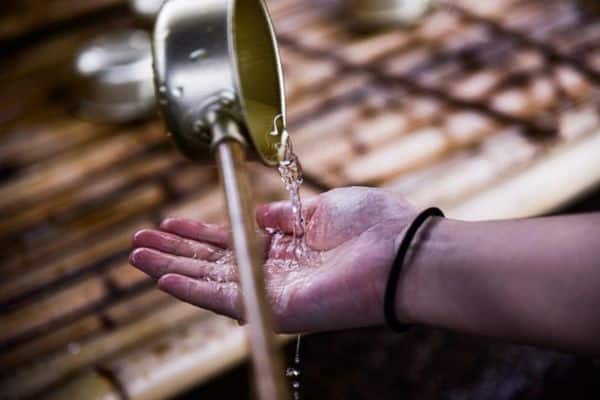
Health & Safety
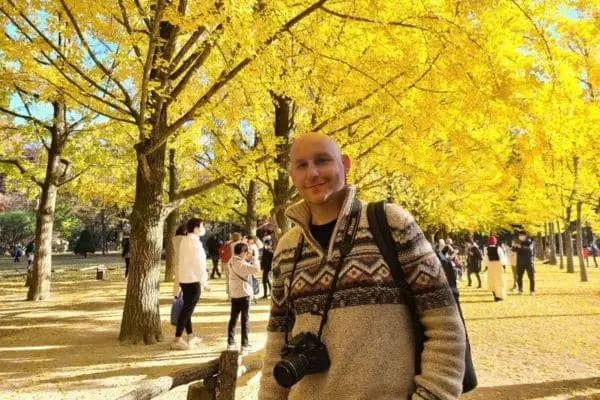
Korean Travel Tips
Korean Travel News And Travel Restrictions 2024
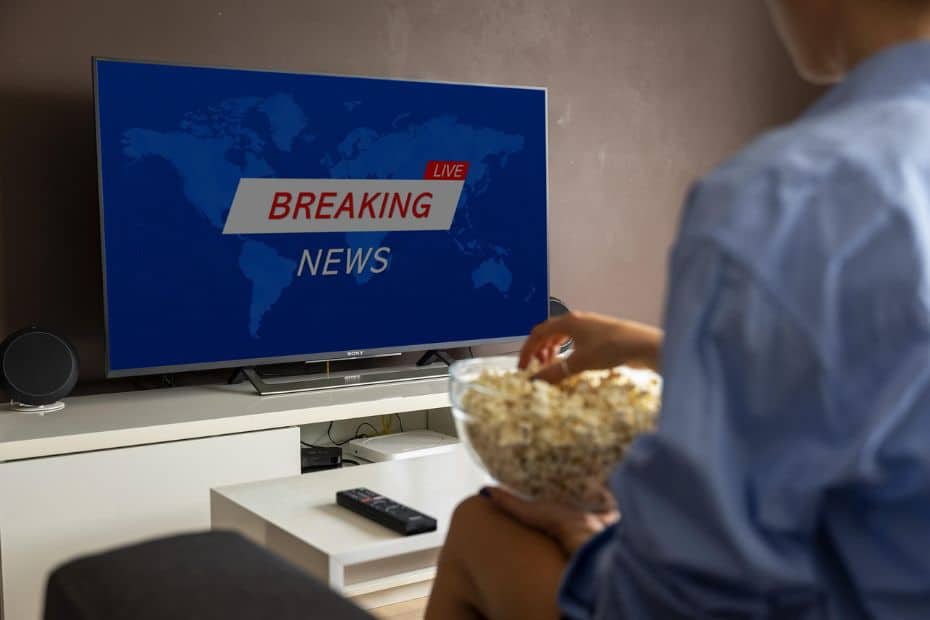
This section of the South Korea travel guide will show you the latest travel news and restriction updates, including any temporary or permanent changes to the entry process, visa changes, and other things that might affect travel to Korea. COVID-related updates will also be posted here.
Latest Korean Travel News In 2024
This section will detail any interesting or important travel news that could affect travellers to Korea, such as price increases in public transport, travel changes, new services, or closures.
The Korean government is aiming to boost tourism to Korea by doubling the amount travellers can claim back in tax when shopping in Korea. From 2024, travellers will be able to claim up to 5,000,000 KRW on eligible purchases with a limit of 1,000,000 KRW tax back per transaction. Source : Korea Herald
From August 2023, the price to travel on buses in Seoul is set to rise. Bus fares will rise to 1,500 KRW per journey. From October 7th, 2023, Seoul’s subway fares will rise to 1,400 KRW per journey. Other cities in Korea will enact similar rises throughout 2023 to cover higher costs of public transportation. Source : Korea Herald
From July 15th, 2023, the requirement to register your health condition through the Q-Code portal will be scrapped. Source : Korea Times
From July 3rd, 2023, children aged 17 years and younger, as well as adults aged 65 and older, will no longer need to apply for a K-ETA to travel to Korea. Furthermore, the validity period has been increased from 2 years to 3 years to make travelling to Korea easier. Source: K-ETA website .
From June 2023, Korea will end almost all pandemic-related restrictions for tourists and locals. Masks will no longer be necessary except in hospitals and infected people no longer face mandatory self-isolation (although the government still recommends 5 days self-isolation). Q-Code requirements haven’t been mentioned, however. Source : Korea Herald .
From April 2023 until December 2024, travellers from 22 countries won’t have to complete a K-ETA when visiting Korea, saving time and money for citizens of those countries. People from other countries still need a K-ETA. Source : K-ETA
The 22 countries temporarily excluded from the K-ETA requirement are Australia, Austria, Belgium, Canada, Denmark, Finland, France, Germany, Hong Kong, Italy, Japan, Macao, Netherlands, New Zealand, Norway, Poland, Singapore, Spain, Sweden, Taiwan, UK, US (including Guam).
From April 2023, all foreigners under 19 years old (18 and under) can now enter major royal palaces and tombs, including Seoul’s Gyeongbokgung Palace, for free. Previously, all foreigners were made to pay a fee to enter. Source : Korea Herald
From March 2023, a quarter of all buses in Seoul will refuse cash payments and allow only card payments using transportation cards, such as the T-Money card. Seoul’s night buses won’t be included for now, and 262 of Seoul’s 370 bus routes will still accept cash. Expect further increases in cash-free buses in the future. Source : Korea Herald
From February 2023, the base fare for a taxi journey in Korea has increased by 1,000 won to a minimum of 4,800 won. The distance that the base fare applies has also been shortened from 2km to 1.6km, which will make fares more expensive. Source : Korea Times
What Are the Current COVID Restrictions In Korea In 2024?
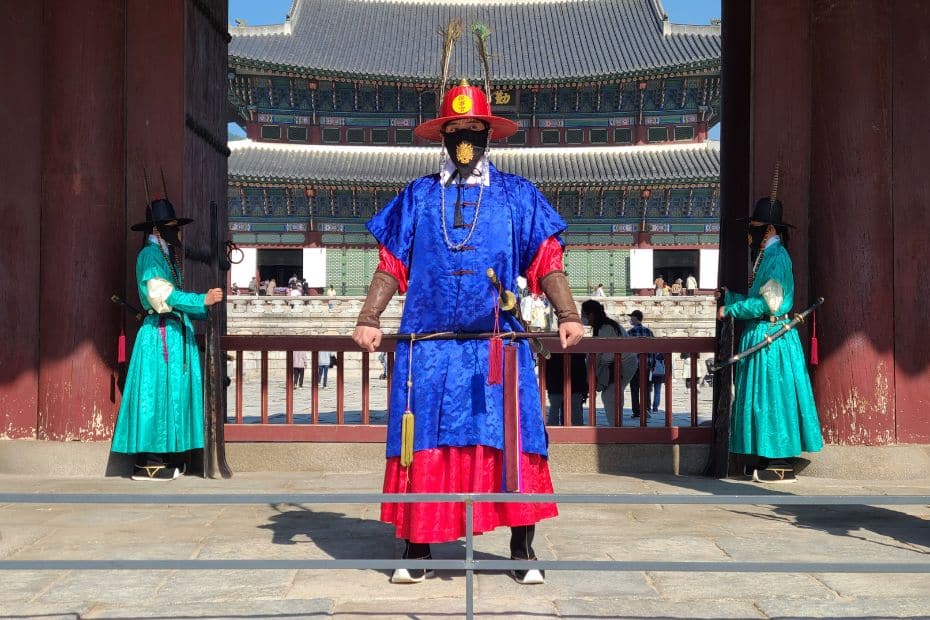
Korea has been removing COVID-related restrictions in the country throughout 2022 and 2023. It is no longer necessary to show a QR code to enter a building and restrictions involving masks and health checks have mostly gone. The latest COVID-related rules for Korea are as follows .
Masks : From Monday, March 20th, Korea has removed the mandatory mask rule for public transport, one of the final places that masks were required for the general public. The only places that require a face mask (from June 1st) are in medical facilities (hospitals). Masks are not mandatory elsewhere, including in schools, shops, restaurants or anywhere outside. Source : Korea Herald
Self-Quarantine : From June 1st, Korea will no longer impose a mandatory self-isolation period on infected people. The government instead ‘recommends’ a period of self-isolation for 5 days to reduce the chance of transmission to other people. Source : Korea Herald
For further details about the latest COVID requirements for entering or travelling in Korea, check out the second section of this South Korea travel guide, which has a list of all the updated entry requirements, including visas, tests, and other considerations.
Planning to visit Korea? These travel essentials will help you plan your trip, get the best deals, and save you time and money before and during your Korean adventure.
Visas & K-ETA: Some travellers to Korea need a Tourist Visa , but most can travel with a Korean Electronic Travel Authorisation (K-ETA). Currently 22 Countries don’t need either one.
How To Stay Connected : Pre-order a Korean Sim Card or a WiFi Router to collect on-arrival at Incheon Airport (desks open 24-hours). Alternatively, download a Korean eSIM for you travels.
Where To Stay : For Seoul, I recommend Myeongdong (convenient), Hongdae (cool culture) or Gangnam (shopping). For Busan, Haeundae (Beach) or Seomyeon (Downtown).
Incheon Airport To Seoul : Take the Airport Express (AREX) to Seoul Station or a Limo Bus across Seoul. Book an Incheon Airport Private Transfer and relax to or from the airport.
Korean Tour Operators : Tour companies that have a big presence in Korea include Klook , Trazy , Viator , and Get Your Guide . These sites offer discounted entry tickets for top attractions
Seoul City Passes : Visit Seoul’s top attractions for free with a Discover Seoul Pass or Go City Seoul Pass . These passes are great for families and couples visiting Seoul – you can save lots.
How To Get Around : For public transport, grab a T-Money Card . Save money on Korea’s high speed trains with a Korea Rail Pass . To see more of Korea, there are many Rental Car Options .
Travel Money : Use money exchanges near Myeongdong and Hongdae subway stations for the best exchange rates. Order a Wise Card or WOWPASS to pay by card across Korea.
Flights To Korea : I use flight comparison sites such as Expedia and Skyscanner to find the best flights to Korea from any country. Air Asia is a good option for budget flights from Asia.
How To Learn Korean : The language course from 90 Day Korean or Korean Class 101 both have well-structured lessons and lots of useful resources to help you learn Korean.
Current Requirements To Travel To Korea In 2024
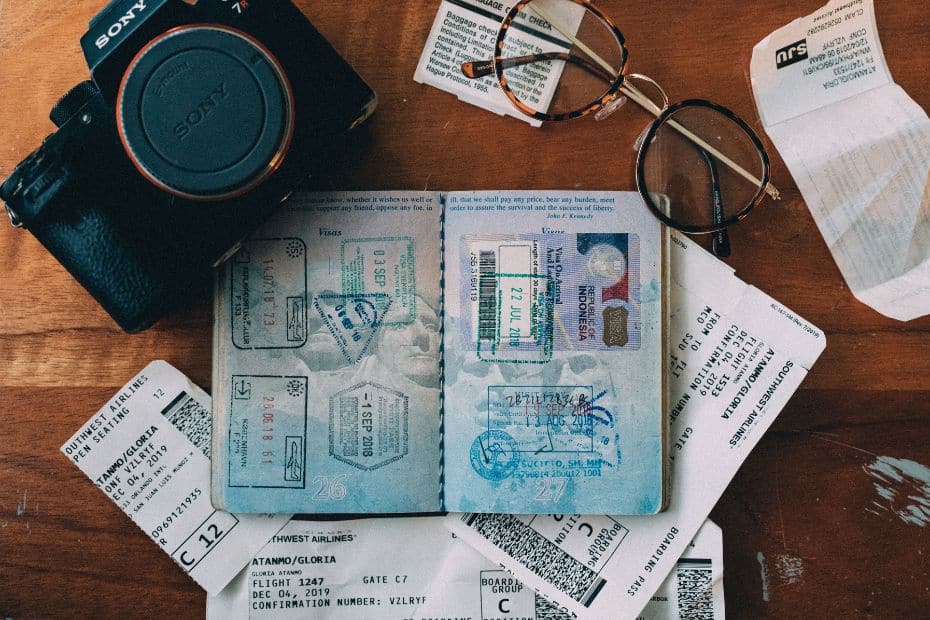
This part of the South Korea travel guide is for tourists . If you plan to travel for business, employment, or other reasons, check your nearest Korean embassy for the latest travel requirements.
Most of the restrictions and requirements for travelling to Korea have now been scrapped. You can see what entry and travel rules are in place for Korea in the table below:
The following section provides more information and exceptions about these requirements:
COVID-positive travellers should avoid travelling to Korea : To avoid infecting others on the way to Korea, as well as in Korea, the Korean government recommends that you shouldn’t travel to Korea if you exhibit COVID-symptoms or have tested positive. Self-quarantine is mandatory in Korea.
There are no PCR or other testing requirements : It is not necessary to take a PCR or other test before travelling to Korea. However, you will be asked to take a test if you show symptoms of COVID or similar illnesses when travelling to or arriving in Korea.
There is no quarantine on arrival : Travellers to Korea no longer need to quarantine when entering Korea. From June 1st, there is only a ‘recommended’ 5 day self-isolation period for infected travellers, but this is not enforced.
Complete the self-health check before or on arrival : From July 15th, 2023, travellers to Korea no longer need to complete a Q-Code self-health check or declare their health status on arrival.
Apply for a K-ETA or tourist visa before travelling : You need to apply for either a K-ETA or tourist visa for South Korea before flying to the country. Entry will be prohibited without the correct one. From April 1st, 2023 until December 31st, 2024, 22 countries are excluded from the K-ETA.
If you’re not sure which of these you need to apply for, more information is provided in the next section of this South Korea travel guide about the K-ETA and tourist visa for Korea.
K-ETA (Korean Electronic Travel Authorisation)
The K-ETA (Korean Electronic Travel Authorisation) is an online travel authorisation that visa-free foreign visitors aged 18 to 65 must obtain before entering the Korea for tourism, visiting relatives, participating in events or meetings, and for business purposes other than profitable activities.
Tourists from 112 eligible countries need to apply for a K-ETA before travelling to Korea and won’t be allowed to board a flight to Korea without it. The approval process isn’t difficult, but requires accommodation details, travel dates, and personal details such as passport number, etc.
From April 1st, 2023 until December 31st, 2024, the Korean government has decided to suspend the K-ETA requirement for travellers from the following 22 countries:
Australia, Austria, Belgium, Canada, Denmark, Finland, France, Germany, Hong Kong, Italy, Japan, Macao, Netherlands, New Zealand, Norway, Poland, Singapore, Spain, Sweden, Taiwan, UK, US (including Guam).
The aim is to reduce the burden of travellers coming to Korea and to encourage more people to visit Korea during the ‘Visit Korea Year’, which runs during 2023 and 2024.
Source : K-ETA website news .
From July 3rd, 2023, the Korean government will no longer ask for travellers who are 17 years and younger, or 65 years and older, to apply for a K-ETA when visiting Korea. These are ages based on the time you travel to Korea, not the age when you apply to travel.
Furthermore, the validity period of the K-ETA is now 3 years, not 2 years. The Korean government has decided to extend the validity period to make it easier for people to travel to Korea.
The K-ETA is based on your nationality , not the country you’re travelling from. That means, if you require a tourist visa from your home country (e.g. the Philippines), but are travelling from a country that requires a K-ETA (e.g. the USA), you can’t use the K-ETA to travel to Korea.
Tourists should apply as far in advance as possible at the official K-ETA website. If you would like to know more about the K-ETA, check out my article explaining what is the K-ETA . The K-ETA costs 10,000 KRW (about $9.00 USD). If you are charged more than this, you’re on the wrong site.
Official K-ETA website
Not sure if you need a K-ETA? Check out this infographic to find out.
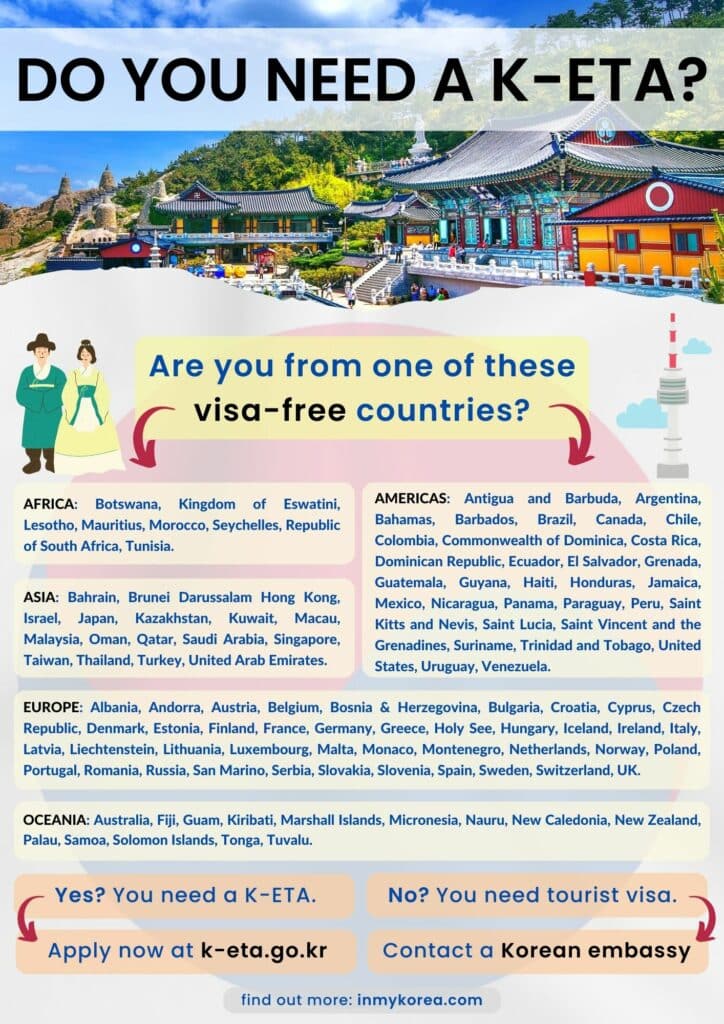
Will The K-ETA End In The Future?
The K-ETA will continue for the indefinite future. It is not a pandemic-related travel restriction but a permanent feature that just happened to start in 2021. The Korean government have stated that the K-ETA will be ongoing and other countries and areas, such as the EU, are planning similar ETAs.
Update : In July 2023, the Korean government stopped requiring children 17 years and younger and adults 65 years and older to apply for a K-ETA. The validity period was also increased to 3 years.
Update : In April 2023, the Korean government suspended the K-ETA for travellers from 22 countries (listed previously). This is in an effort to reduce the burden on travellers visiting Korea during the ‘Visit Korea Years’ of 2023 and 2024. This lasts until December 2024, but could possibly go on longer.
Tourist Visas For South Korea
Tourists that aren’t from one of the 112 countries that require a K-ETA to travel to Korea will need to apply for a tourist visa. This includes nationals from countries such India, Indonesia, Pakistan, and the Philippines. Tourist visas are based on nationality (passport), not country of residence.
The process to apply for a tourist visa differs depending on the country and may be as simple as submitting an application at the Korean embassy in the country you live in. For other countries, it may be necessary to submit extra information like bank statements and a full itinerary.
If you need a tourist visa for South Korea, contact your nearest Korean embassy as soon as you can to start the process. Tourist visas may be rejected, delayed, or take longer than expected. For some countries, such as the Philippines, it is necessary to apply through a specialist visa agency.
Transit Tour Visas For South Korea

Visa-free entry for foreign transit passengers at Incheon Airport will resume from May 2023 after being suspended for 3 years during the pandemic. There are two types of visa-free transit entry methods for travellers to Korea, they differ in length, requirements, and eligibility.
The first type of visa-free entry for transit passengers is open to all travellers to Korea and allows entry for 3 days, as long as they take a transit tour from Incheon Airport. The second type of visa-free entry for transit passengers is available for 30 days, but only from travellers from 36 select countries.
Visa-Free Entry For Transit Passengers (3 Days)
From May 15, 2023, travellers from any country can travel from Incheon Airport to the Seoul Metropolitan area for up to 3 days, as long as they book at least 1 transit tour from Incheon Airport. If Korea is not their final destination, they’re free to explore more of Seoul after the tour.
There are a wide range of transit tours available from Incheon Airport, including cultural, historic, food, shopping, and entertainment tours. See the sights of Seoul’s most popular places in a few hours, or stay for longer and see more. You can find out more about transit tours from the Visit Korea website .
Requirements : To be eligible for a transit tour visa, travellers must:
- Have an onward flight to their home country or a 3rd country after Korea.
- Participate in a transit tour program by a designated travel agency.
- Stay within the Seoul Metropolitan area only.
- Have more than 2 hours between connecting flights.
Eligible countries : Visa-free entry with a transit tour is open to passengers of all countries, as long as they meet the above requirements.
Tip : If you have a transit tour in Korea, I recommend staying in Hongdae , as there is a direct train from Incheon Airport to Hongdae called the All-Stop Airport Line. Hongdae is also a really fun place where you can see lots of culture, try Korean dishes, and pack your suitcase with Korean souvenirs.
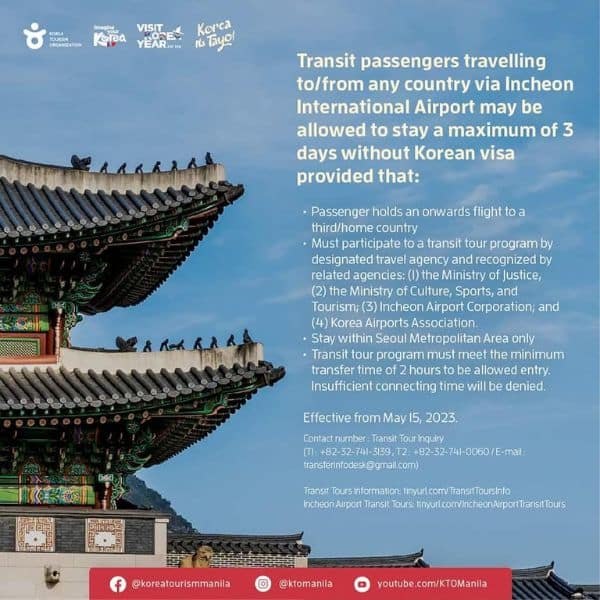
Visa-Free Entry For Transit Passengers (30 Days)
This will allow travellers from 36 countries to enter and stay in Korea for up to 30 days without a Korean visa. Travellers must be travelling to or from one of these 36 countries to be eligible to stay in Korea without a visa. This includes passengers who are not citizens of those countries.
Requirements : To be eligible for a visa-free entry as a transit passenger, travellers must:
- Hold an onward flight to any of the 36 countries mentioned below.
- Have no illegal stay records of any kind, nor have been denied entry to Korea.
- Not have exceeded a maximum of 3 days stay in any other transit airport.
Eligible countries : Travellers from the USA, Canada, Australia, New Zealand, and 32 EU countries (see picture below) can stay for up to 30 days, as long as the above-mentioned requirements are met.
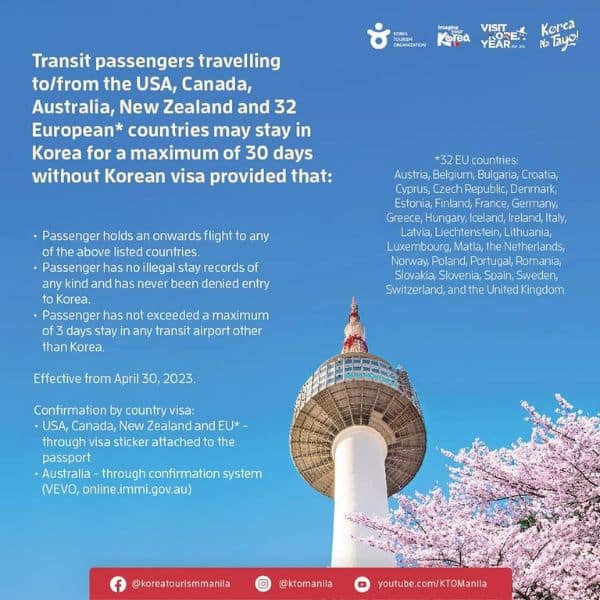
Why You Should Travel To Korea In 2024
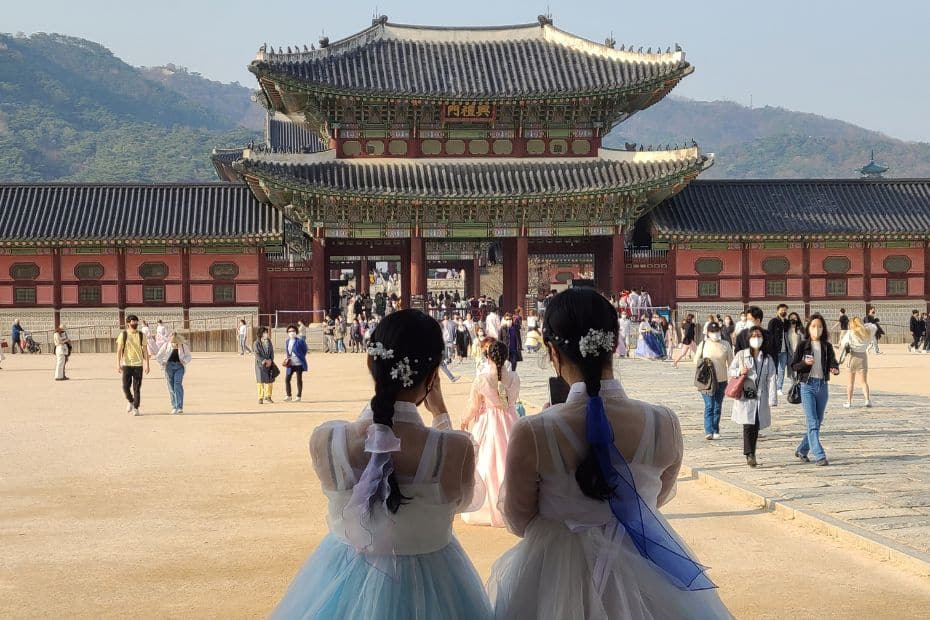
There’s not enough space in this South Korea travel guide to write down all of the reasons why you should travel to South Korea. Korea is an under-appreciated gem that has so much to discover and experience that’s completely different from what you’ll find in other countries.
Much the way that Japan has a very distinct culture and history, Korea has lots of unique, appealing places to see, people to meet, history to learn about, and natural sights to appreciate. Many people only see a small slice of Korean culture and beauty through modern media, but there’s a lot more.
Here are some of the reasons you should travel to Korea:
- Delicious foods and tasty seasonal dishes.
- Four distinct seasons that offer a variety of views.
- Fascinating history to learn about and explore.
- Stunning mountains and beaches for outdoor lovers.
- Unique and unusual festivals throughout the year.
- Friendly locals and a safe country to travel around.
- Modern, high-tech cities that are clean and efficient.
- Welcoming Buddhist temples and temple stays.
- Cheaper than most other developed countries.
- A shopper’s paradise with many markets and malls .
- Korea really wants you to come and visit.
Korea wants you to visit so much that they declared 2023-2024 the Visit Korea Year . This two-year period, confusingly referred to as a single year, is set to feature loads of events and activities to draw tourists to Korea, and includes promotions for discounted flights, accommodation, and food.
Some of the events you can expect to see during the Visit Korea Year(s) include K-Pop concerts, e-sports competitions, food festivals, and cultural celebrations. There’ll be K-Cultural stars involved, too, including your favourite K-Pop and K-Drama stars. Get ready to travel to Korea soon!
Want to know what you can do in Korea that you can’t do in other countries? Check out these amazing unique Korean experiences that should definitely be on your Korean bucket list.
The Best Time To Visit Korea
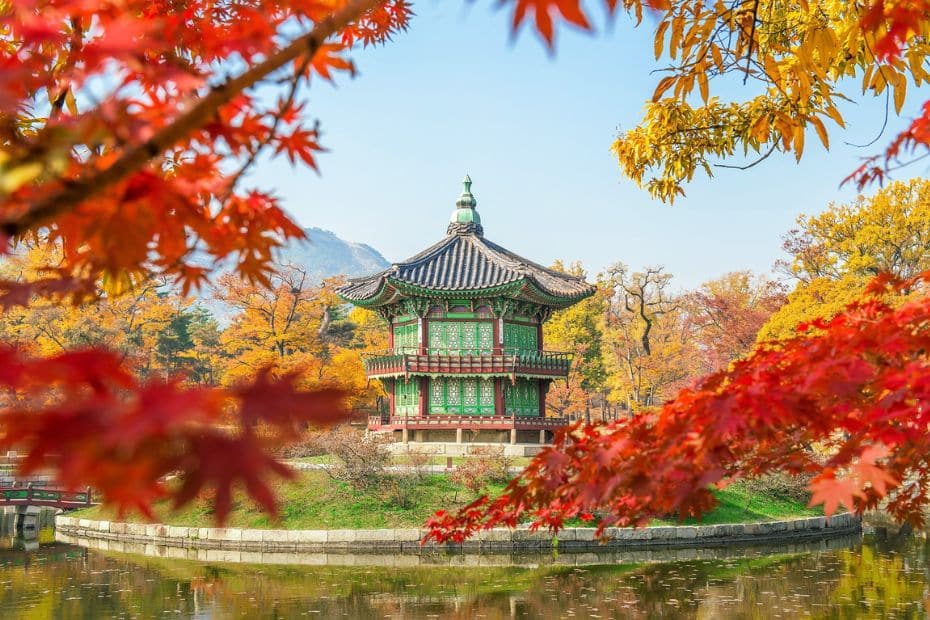
The best time to visit Korea is in spring (late-March to May) or autumn (mid-September until mid-November). These seasons have the most comfortable weather, ranging from 10 to 30 degrees Celsius, an average amount of rain, and also have the most festivals and events.
My favourite months to travel in Korea are April and October . Early-April is when cherry blossoms come out and the weather warms up enough to stop wearing a jacket. October in Korea is a beautiful month when autumn foliage sweeps across the country and the weather is warm and calm.
When you travel to Korea, the season you travel in can have a big impact on what you can see, eat, and do. This section of the South Korea travel guide is one of the most important and if you want to travel to Korea in the future, I recommend learning about Korea’s seasons before making plans.
What Can You See In Korea Each Season?
Although spring and autumn are undoubtedly the best time to visit Korea, there are plenty of reasons to visit in other seasons, too. Visitors to Korea who are restricted to travelling during certain times, such as during school or work holidays, needn’t be put off by travelling in summer or winter.
Here’s a summary of what you can see and do in each season in Korea:
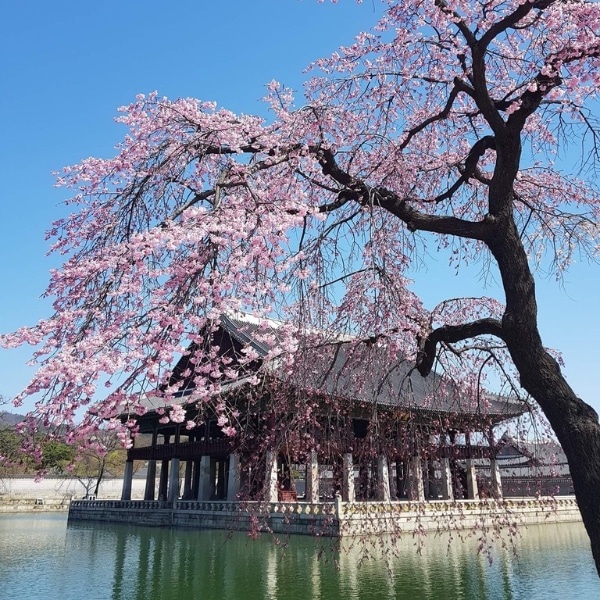
Spring: Cherry Blossoms, Blooming Nature, Culture Festivals
Spring is an amazing season to travel in Korea as you can see colourful plum blossoms (Mar), cherry blossoms (Mar-Apr), and many other bright sights. The warm weather allows people go out more to enjoy cultural activities and spring festivals , such as the Lotus Lantern Festival and Jindo Sea-Parting Festival, and also trekking, hiking, and cycling. Spring is one of the most popular times to travel in Korea for locals, so expect places to be busy, especially around cherry blossom season.
Check out my cherry blossom guide for the best places to see cherry blossoms in Korea.

Summer: Beaches, Korean Desserts, Water Sports, Camping
Summer is a difficult season for travellers due to the high humidity and heat. June and July are rainy season in Korea and it may rain for days on end, causing people to change travel plans to indoor activities. In late July and August it gets very hot, which is good for going to the beach and enjoying water sports or water parks, which Korea has many of. Evening activities like hiking, drinking in rooftop bars, and visiting night markets are great ways to get out in summer when it’s not as hot.
Check out my guide to Korean summer activities for the best places to have fun during summer and rainy day activities in Busan in case the weather isn’t so good.
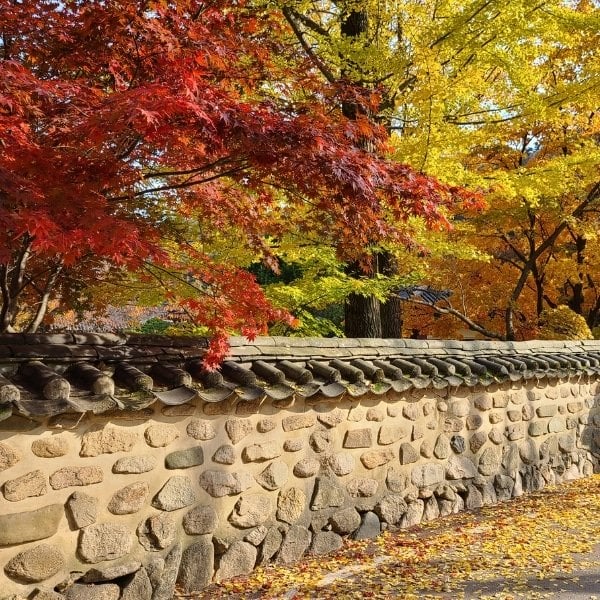
Autumn: Foliage, Festivals, Fresh Foods, Harvest Festivals
Autumn is another incredibly popular time to travel in Korea, especially in October when the autumn foliage is at its best. The foliage really brings everything to life, adding shades of colour to plain palace walls, mountains, and parks. The calm weather is warm with clear skies, making it perfect for going into nature to see the fresh fruits and other harvest goods, as well as join in harvest and cultural festivals. Enjoy local Korean dishes, fresh from the farm to your table.
Check out my guide to autumn foliage in Korea for the best places to see the leaves.
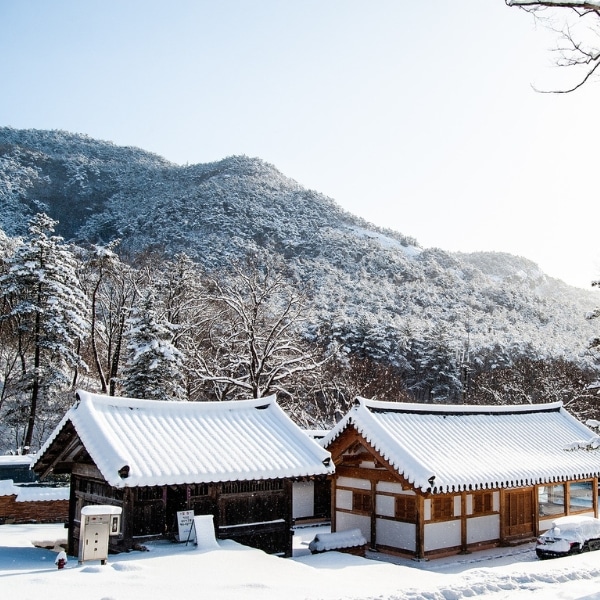
Winter: Snow, Winter Sports, Ice Fishing, Light Festivals
Winter in Korea is often neglected due to the cold weather, but is actually a very nice time to travel with delicious winter foods to try. It’s the driest time of year with blue skies making everything bright and beautiful. When it snows, sights look even more incredible. Jeju Island is a great place to visit during winter as it has fresh citrus and colourful camellia flowers to see. You can enjoy winter sports, festivals and activities, such as ice fishing, ice skating, sledding, and more.
Check out my guide to Korean winter activities for the best places to have fun during winter.
What Is The Weather Like In Korea?
The weather in Korea follows a similar pattern each year, spread over five distinct seasons. As well as spring, summer, autumn, and winter, Korea also has a rainy season, which starts around mid-June and finishes mid-July. It doesn’t constantly rain during rainy season, but may do for several days.
There’s always something to do in Korea, no matter what the season. Even rainy season in Korea is fine for travelling, as long as you plan lots of indoor activities and can be flexible with your schedule. Don’t let the weather in Korea put you off visiting, you’ll find plenty to do in each season.
Here’s a summary of the weather in Korea each season:
The graph below shows you the average temperature each month in Seoul. This is an average temperature, so some days will be much hotter and others much colder. I’ve experienced summer temperatures of over 35 degrees and winter nights of -20, so be prepared for both.
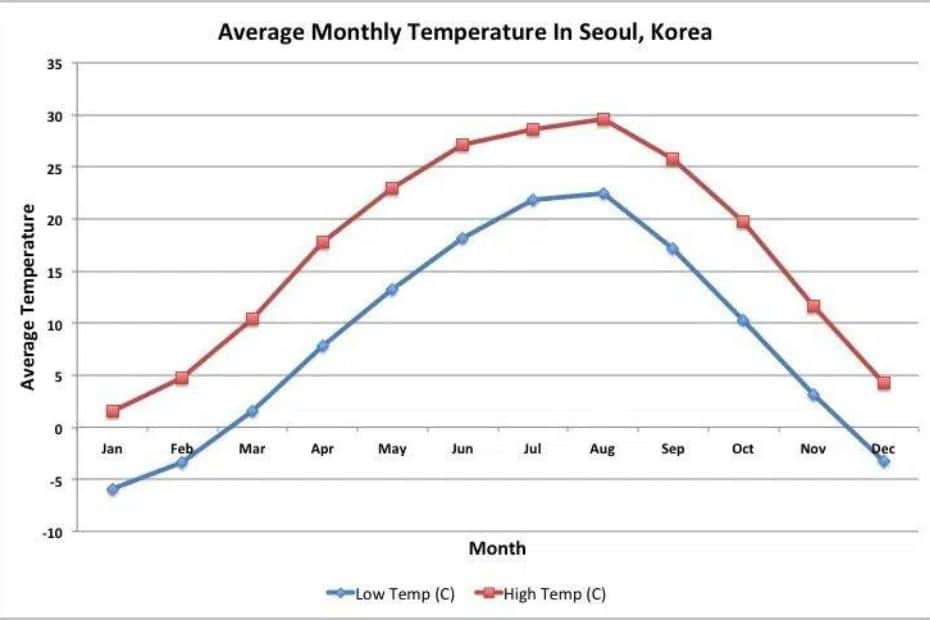
The table below shows the average rainfall for each month in Korea, based on records from climate-data.org . The summer months have the most, while winter in Korea is very dry. The rainfall in the winter months can turn to snow when it’s cold enough, too.
There will be more information about the sights, festivals, and events you can enjoy in Korea in later parts of this South Korea travel guide. Check them out for travel ideas for your trip to Korea.
How To Book Flights To Korea
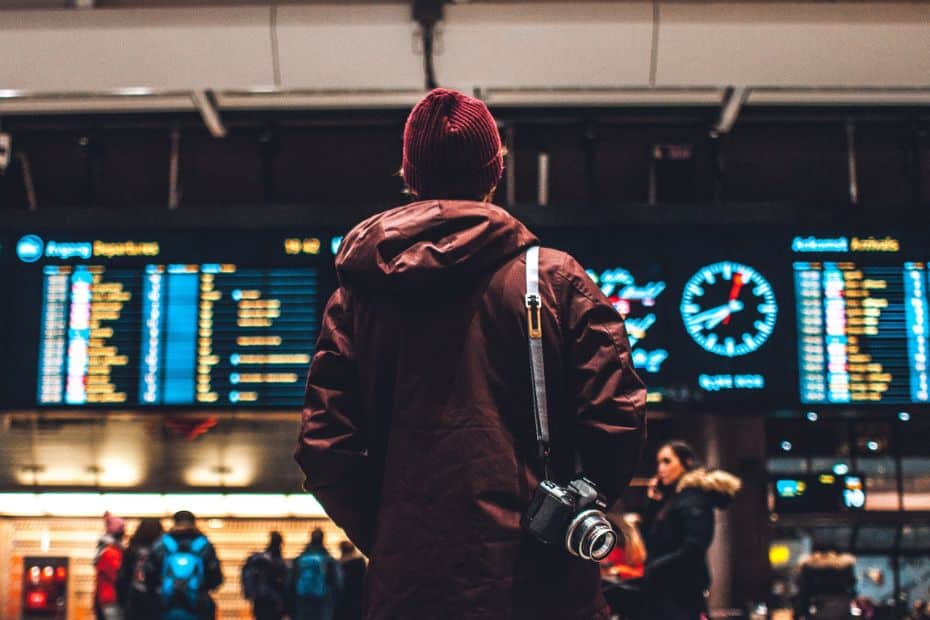
Flying to Korea in 2024 is getting easier with more airlines offering direct or connecting flights to Korea and budget airlines adding more routes to Korea from other parts of Asia and as far away as the USA. There aren’t as many routes as there were in 2019, but they are returning month by month.
Booking a flight to Korea is one of the first things most people do and finding the right flight can really affect your travels. Choosing the right flight not only affects how much money you need to spend, but also when you’ll arrive, how you’ll get to your hotel, and where you’ll arrive in Korea.
Check out my guide to booking flights to Korea to discover the best ways to book a flight to Korea, including the best time to book (21 to 127 days before travel), where to get cheap flights, the various airlines that offer flights to Korea, and lots more.
Arriving At Incheon Airport
Most flights to Korea arrive at Incheon Airport, which is near Seoul. It takes about an hour to get to the centre of Seoul from Incheon Airport and there are various transportation options including a high-speed train, subway, limo buses, taxis, and private transfers.
The best option for transferring from Incheon Airport to your hotel is usually a limo bus as these run to popular areas of Seoul, such as Myeongdong, Hongdae, Gangnam, and Insadong. There’s also a direct train to Seoul Station and a subway that goes to Seoul Station via Hongdae.
Arriving during the daytime gives you the best options for getting from Incheon Airport into Seoul, while nighttime flights will leave you fewer options. There are a few night buses that run, but late arrivals will either need to stay at the airport or book a private transfer or taxi instead. More details about taking a taxi from Incheon Airport can be found in my guide to taxis in Korea .
If you want to book a private transfer direct to your hotel from Incheon Airport, contact Jerry Heng , a freelance driver. I want to recommend Jerry as he has years of experience organising airport pick-ups and drop-offs, as well as personalised tours around Korea. He’s also a friendly guy.
Recommended Flight Comparison Sites
I suggest checking at least one flight comparison website before booking any flights. You can alter the arrival and departure times, flight duration, choose direct or indirect flights, and sort by price to find the perfect flight for you. Skyscanner is my preferred comparison site, but they’re all useful.
Take time to change the dates and flight times to find the most suitable flights for you. Cheaper flights often have inconvenient arrival times, so you should decide whether it’s worth the hassle to save a bit of money. Sometimes spending more for the right flight is worth it, especially when time is limited.
I try to go for a balance of convenience and savings and avoid flights that arrive late at night or leave too early in the morning. These flights require you to book an extra night at the airport or make you lose time when you could be travelling and doing more interesting things.
Here are 4 of the best flight comparison sites for booking flights to Korea:

Skyscanner is one of the most popular flight aggregators and offers flights, hotels, and other travel bookings for all major destinations. Skyscanner shows airline environmental ratings and which flights are practical or difficult.

Expedia is a large US travel company that offers tours, flights, hotels, and other services around the world. You can book hotel and flights together, to save you time and effort when travelling. A good place to start your flight search.
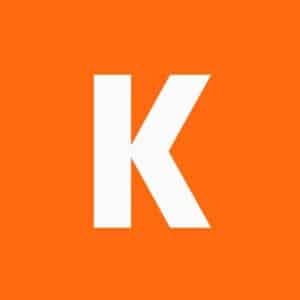
Kayak is great for people looking for cheap flights to Korea. You can see price trends for your flight to Korea to see when the best prices are available. There are also lots of budget travel options on the site that can save you more.

WayAway is a flight comparison site for the modern generation, with Instagram tips & travel advice as well as a good selection of cheap flights. You can get cashback on bookings with their premium service.
Where To Stay In Seoul
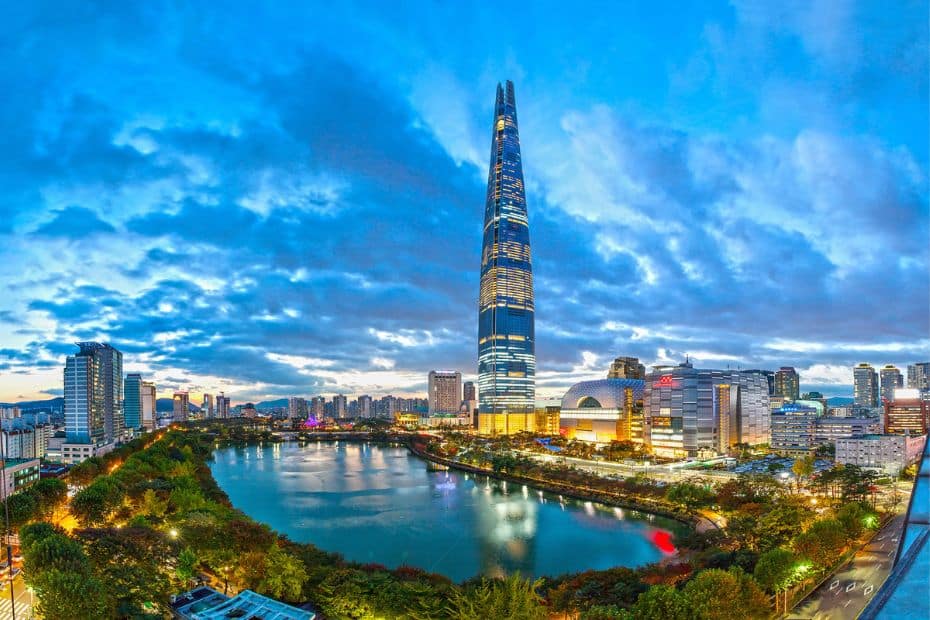
Incheon Airport is the main arrival destination for most travellers visiting Korea, with more than 71 million travellers passing through the airport in 2019, making it the world’s 14th busiest airport . It’s close to Seoul and has lots of transportation options to get into Korea’s capital.
Seoul is the first place people visit, not only because it’s close to Incheon Airport, but because it’s undeniably the heart and soul of Korea. The greater Seoul area includes about 50% of Korea’s population (25 million people) and is by far the biggest, most vibrant, and fun city in Korea.
To travel to Korea you need either a K-ETA or tourist visa . One of the requirements to apply for these is the address of the first place you’ll be staying in Korea. Therefore, you should book at least your first hotel in Korea so you can begin those applications. Seoul is an ideal first place to stay.
Best Neighbourhoods To Stay In Seoul
Deciding where to stay in Seoul can be difficult because there are so many unique neighbourhoods, each offering something interesting for travellers to experience. Knowing which has the best sights, entertainment, culture, shopping, transport, markets, restaurants, cafes, etc., is useful.
Seoul’s neighbourhoods typically contain a mixture of several of these elements and will appeal to different types of travellers. Below is a very rough guide for which neighbourhood each type of traveller might enjoy. Of course, there are plenty of other things to do in each area.
As you can see from the list above, both Hongdae and Myeongdong have a lot to offer and I would definitely recommend either of these neighbourhoods for first time travellers to Seoul. Even people who have travelled to Korea before will find lots of reasons to stay there. They’re where I usually stay.
I have detailed guides to hotels in the two best districts for staying in Seoul – Hongdae and Myeongdong. My guide to hotels in Hongdae includes a range of hotels for all types of travellers, while my guide to hotels in Myeongdong highlights Myeongdong’s best budget to mid-range hotels.
Each neighbourhood feels unique and offers something to discover, from traditional markets and eateries, modern Insta-worthy cafe districts, peaceful parks and lakes, world-class skyscrapers, and many fun activities. Wherever you choose to stay, you’re sure to find something you enjoy.
I’ve included the 8 best neighbourhoods in Seoul in this South Korea travel guide, along with a small summary about what you can expect in each area. These are the most popular areas for tourists to stay in, but certainly not the only places to stay. There are also links to hotels in these areas.
Here are the 8 best neighbourhoods in Seoul:
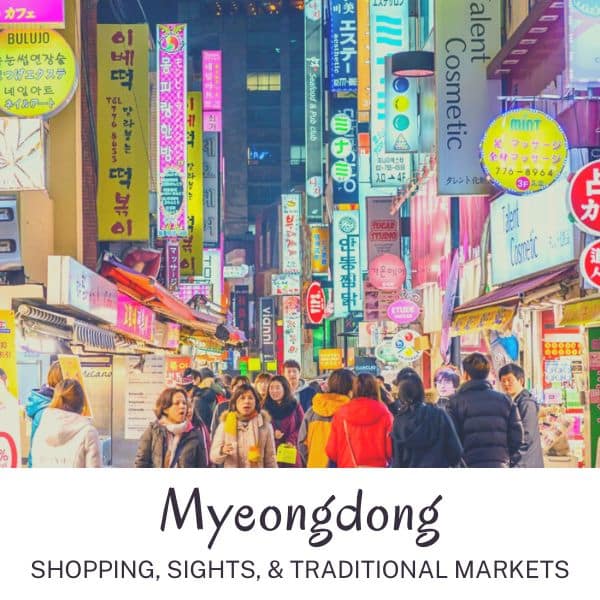
Myeongdong is arguably one of the best places to stay in Seoul for any traveller. It has the best range of budget and mid-range hotels in Seoul and is conveniently located for sights, activities, and public transport. It’s close to popular tourist sites, such as the N Seoul Tower and royal palaces. There are traditional markets and Myeongdong’s famous street food alley to check out. As Myeongdong is popular with tourists, you’ll find more people that can speak English and places to exchange money.
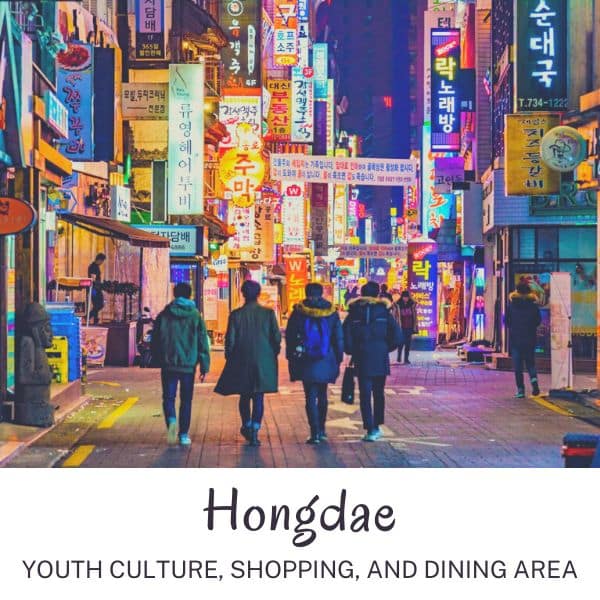
Hongdae is one of the coolest neighbourhoods in Seoul and a must-see for any traveller to the city. This area has emerged as a creative hotbed for the latest Korean fashion, art, food, and culture, thanks to innovations from students of nearby universities. Youth culture is on display in Hongdae’s main and side streets, with boutique shops, trendy bars and cafes, inventive restaurants, street art, and live performances. If you want to see a vibrant, colourful side of Seoul, then Hongdae is the place for you.
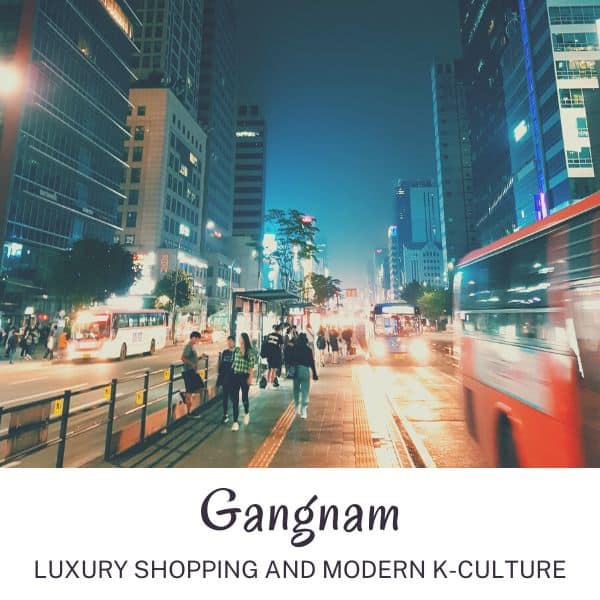
Gangnam is an upscale area of Seoul that’s home to some of Korea’s biggest stars. This area was where K-Pop was invented, as can be seen by the golden Gangnam Style statue outside COEX Mall. Gangnam is a lot more than that, and is a powerful business area with Seoul’s best shopping and dining experiences, as well as some of the city’s finest cafes and bars. Gangnam has a host of upmarket hotels that provide outstanding luxury, but also has a selection of budget and mid-range hotels making it accessible for all travellers.
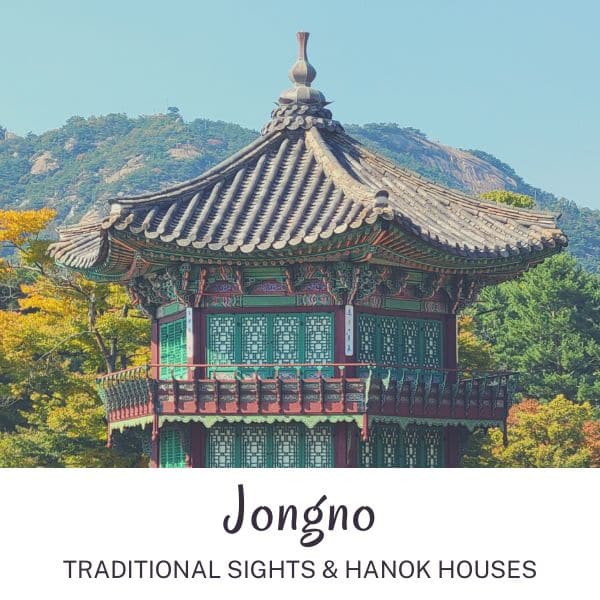
Jongno is the area north of Myeongdong that includes Insadong, Bukchon Hanok Village, Ikseongdong Hanok Village, Jogyesa Temple, 4 of Seoul’s royal palaces, the presidential Blue House, and lots more. This area is packed full of interesting sights and traditional restaurants and tea houses to explore. You can find a good range of hotels in Insadong, Seoul’s artistic area that is home to artists and tourist-friendly attractions. There are also guesthouses and apartments to rent in the residential areas of Jongno that offer a more homely stay.
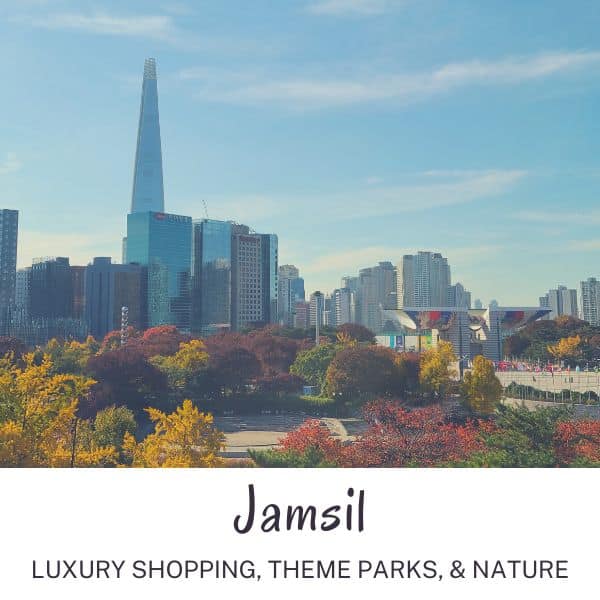
Jamsil is an upmarket residential neigbourhood close to Gangnam that’s home to one of Korea’s largest companies, Lotte. You’ll find the Lotte World Tower, Lotte World Theme Park, and Lotte Aquarium in this area, as well as the beautiful Seokchon Lake and leafy Olympic Park. Jamsil is a great base for people visiting for cherry blossoms in spring as the Seokchon Lake Cherry Blossom Festival is one of Seoul’s best. There are lots of trendy cafes and bars near the lake and it’s a relaxed part of the city to stay in.
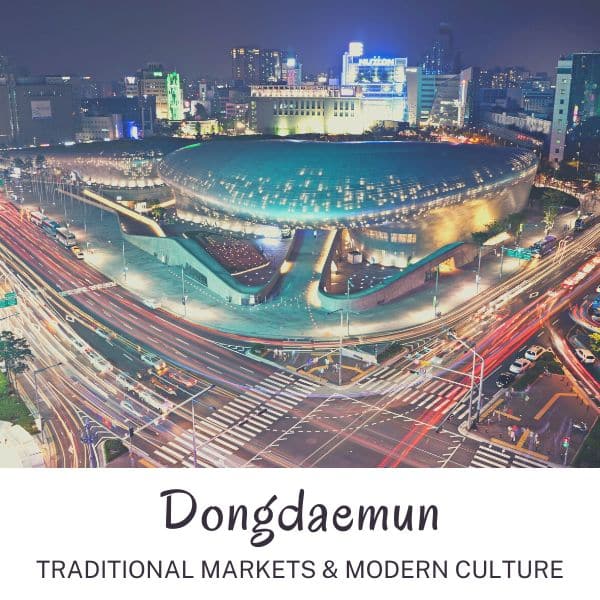
Dongdaemun is known for both its traditional markets, where you can buy a range of goods, as well as the futuristic Dongdaemun Design Plaza (DDP). The area is an unusual mix of traditional Seoul, with Gwangjang Market offering some of Seoul’s best Korean street food, and modern culture, displayed by the night markets and art installations at the DDP. There are lots of cheap eats and bargain markets and malls in this area, making it a great place to stay if you plan to do a lot of bargain shopping in Seoul.
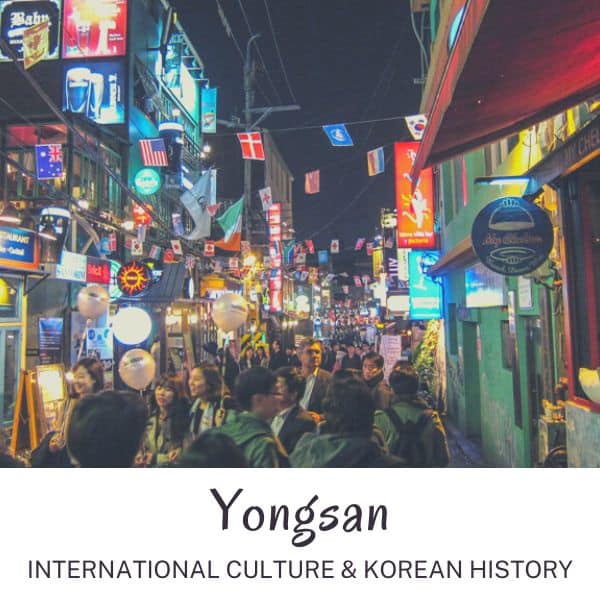
Yongsan is the area encompassing the N Seoul Tower, the popular international area of Itaewon, the trendy hilltop area of Haebangchon (HBC), Seoul Station, the National Museum of Seoul, and many riverside parks. Yongsan has a busy train station with towering skyscrapers and hotels around it catering to business and luxury travellers, as well as shoppers. This quiet business and residential area has good transport links and fewer crowds than other parts of Seoul, as well as interesting cultural attractions.
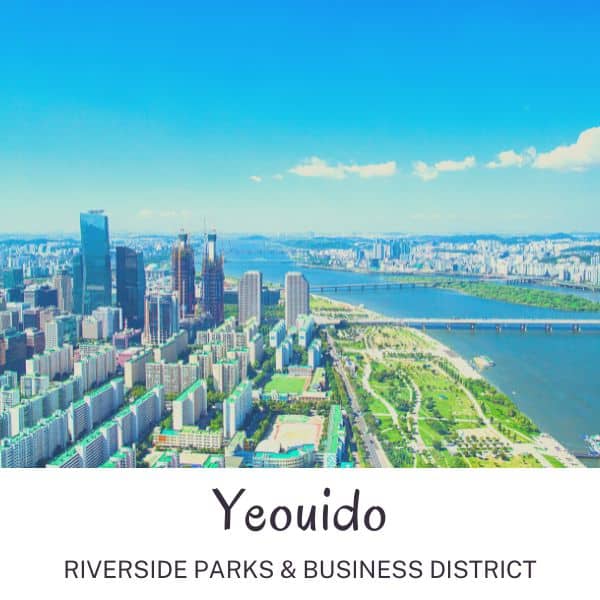
Yeouido is a large island that rests in the Han River, overlooking Hongdae and Yongsan. It has some of the best parks in Seoul and is a popular place for locals to walk along the river on weekends and at night. These parks are home to Seoul’s biggest cherry blossom festivals, as well as summer night markets, fireworks performances, live music, and people enjoying life outside of work. Yeouido is the upmarket financial centre of Seoul, making it an ideal base for business, luxury, and family travellers.
Seoul’s neighbourhoods are informal designations, not necessarily the official district name. For example, Hongdae is a neighbourhood in the Mapo-gu district and Myeongdong a neighbourhood in the Jung-gu district. Whereas Jongno is both the neighbourhood and district name (Jongno-gu).
You might see some areas referred to differently. However, the terms I’ve used in this section are the names most commonly used to describe these areas by tourists and expats. Koreans will certainly know which area of Seoul you’re talking about when you use these names.
Learn more : If you want to know more about Seoul’s best districts and figure out where the best place to stay for your trip to Korea, then check out my detailed guide about where to stay in Seoul . It’s packed with useful info about each neighbourhood, hotel recommendations for different budgets, and tips about booking accommodation in Seoul. Also learn more about the Han River Boat Service launching in 2024 to connect Yeoudio, Jamsil and other riverside destinations.
Hotel Recommendations For Seoul

There are hundreds (maybe thousands) of hotels in Seoul to choose from ranging from multi-person dorm rooms to the height of luxury looking down over Seoul from a 5-star hotel room in the Lotte World Tower . Whatever your budget or requirements, there’ll be somewhere to stay in Seoul for you.
To save you time searching for the best places to stay in Seoul, I’ve created a list of the 9 best luxury, mid-range, and budget hotels in Seoul, as well as 6 long-stay serviced apartments. This list has been created based on customer reviews, location, facilities, amenities, reputation, and quality.
I live outside of Seoul, so often book hotels when I’m visiting Seoul for the weekend . I’ve stayed at quite a few of these, so can personally recommend them based on my own experience. I’ve had both good and bad hotel experiences in Seoul and only want to recommend the best to you.
Recommended Luxury Hotels
Seoul has some incredible luxury hotels to enjoy, each with a true 5-star service, excellent amenities, and delectable restaurants. Many of Seoul’s best luxury hotels are located in Gangnam, Seoul’s wealthiest district, where you can find top restaurants and designer brand shopping.
Recommended Mid-Range Hotels
If you want to experience a luxurious stay in Seoul without breaking the bank, then these mid-range hotels will be perfect for you. These unique, 4-star hotels are reasonably priced and provide stylish, comfortable rooms that you’ll sleep easily in after a busy day exploring Seoul.
Recommended Budget Hotels
Seoul has a wide range of excellent budget hotels with prices that might surprise you for a large city. These are some of my favourite places to stay in Seoul when I visit for the weekend and are popular with travellers due to their convenient location, facilities, and comfortable beds.
Recommended Serviced Apartments
If you plan to stay in Seoul for a month or more, these serviced apartments will provide you all the comforts of home with the benefits of staying at a hotel. These excellent serviced apartments come with cleaning services, health facilities, cooking facilities, and are value for money.
Cost To Travel In South Korea In 2024
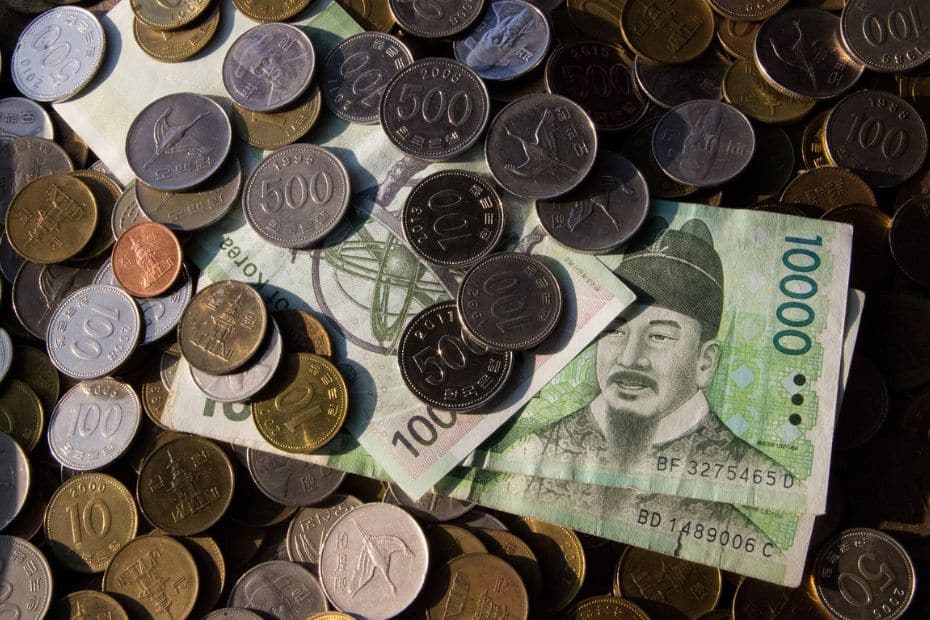
This part of the South Korea travel guide will help you understand some of your expected costs to travel to Korea. The costs to travel to Korea include flights, accommodation, food, drinks, transportation, activities, sim cards, visas, souvenirs, travel insurance, and lots more.
The costs you will pay when you travel vary massively depending on what type of traveller you are and what style of travel you can afford. If you want 5-star luxury and fine-dining, your budget will be very different from someone eating ramyeon from 7-11 and staying in a budget guesthouse.
Therefore, I will try to provide expected costs for 3 different types of traveller – budget , mid-range , and luxury . These aren’t exact figures, but should give you a rough idea of how much you’ll spend.
Daily Costs To Travel In Korea
There are costs that you will pay each day when travelling in Korea that can be averaged out to give you a daily cost. Knowing these figures will help you plan your budget for Korea and to see where you can afford to spend more for the one-off costs to travel, which will be covered next.
The daily costs are accommodation, food & drinks, transportation, attractions & tours, and miscellaneous expenses that can pop up unexpectedly. These miscellaneous costs might include getting a street food snack, an unexpected entrance fee, or a few extra drinks in the evening.
Transportation will be covered later in this South Korea travel guide and there are some useful tips to reduce your transportation costs. You will also be able to see some of the best attractions, tours, and activities in Korea and you’ll be able to work out how much you’ll spend on those.
Here are the daily costs per person to travel in Korea:
Please note : These are costs per day, per person . Couples and families sharing a room will have lower costs as double rooms aren’t much more expensive than single rooms. Some days will be cheaper, some much more expensive, especially if you take day trips or visit premium attractions.
There are also one-off costs not included in these daily costs. These can be pre-travel costs, such as flights and a K-ETA or tourist visa (already covered), travel insurance, vaccinations, and such like. Pre-travel costs are different for each traveller and depend on your country of residence.
Other one-off costs during travel in Korea may include day tours, souvenirs, shopping, celebrations, medical costs, and expenses that you don’t normally pay each day. Again, these vary for each traveller and are difficult to calculate as people’s budgets are so different.
Is Korea A Cheap Country To Travel In?
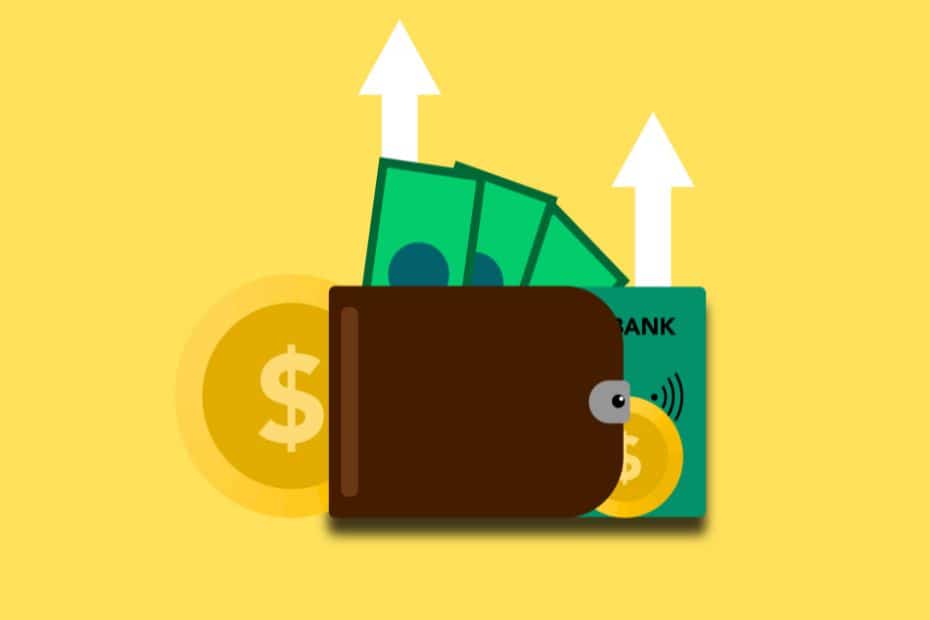
Korea is relatively cheap country to visit, but certainly isn’t always a budget destination. The cost to travel to Korea has risen over the last few years and might be more expensive than you think, even if you’ve previously visited Korea. Flying to Korea is certainly more expensive now.
Food costs rose by 7.5% in 2022 alone and these costs have been passed on to restaurants, which now charge higher prices for meals. Transportation costs rose by about 20% in 2023 for buses and subways, although these are still relatively cheap compared to some countries.
Despite these price increases, travelling in Korea is still cheaper than travelling in most other high-income industrialised countries such as Japan, the USA, and Western Europe. If you’re from countries such as the Philippines, Thailand, Indonesia, or Malaysia, Korea may seem expensive.
City Passes That Save You Money In Seoul
There are a number of city passes that can save you money when visiting Seoul by offering free or discounted entry to some of the best attractions in the city for a single price. The original city pass for Seoul is the Discover Seoul Pass, but now there is also the Go City Pass and Klook Pass Seoul.
Here’s a summary of each of these Seoul city passes:
Discover Seoul Pass : Available in 24 | 48 | 72 hour periods, allows entry to top attractions in Seoul such as Lotte World Adventure, N Seoul Tower, COEX Aquarium, Alive Museum, Zoolung Zoolung, Sealala Sauna, Gyeongbokgung Palace, and more. Prices start at 50,000 KRW .
Go City Seoul Pass : Available as 1 – 5 day passes or a flexible pass for up to 7 attractions. Covers a wider amount of attractions than the DSP, including a DMZ Tour, Nanta Cookin’ Musical, Seoul Land, Seoul Pub Crawl, Seoul Ghost Tour, and more. Prices start at 68,000 KRW .
Klook Pass Seoul : Available for use 2 – 5 attractions, including Everland or Lotte World Adventure theme parks. The Klook Pass Seoul allows free entry to selected attractions within a 30 day period. Attractions include the N Seoul Tower and Lotte World Aquarium. Prices start at 44,000 KRW .
If you’d like to know more about these passes, be sure to check out my article about the Klook Pass Seoul , as well as my suggested Discover Seoul Pass itineraries . I’ll have a review article of the Go City Seoul Pass soon, too.
How To Save Money In Korea
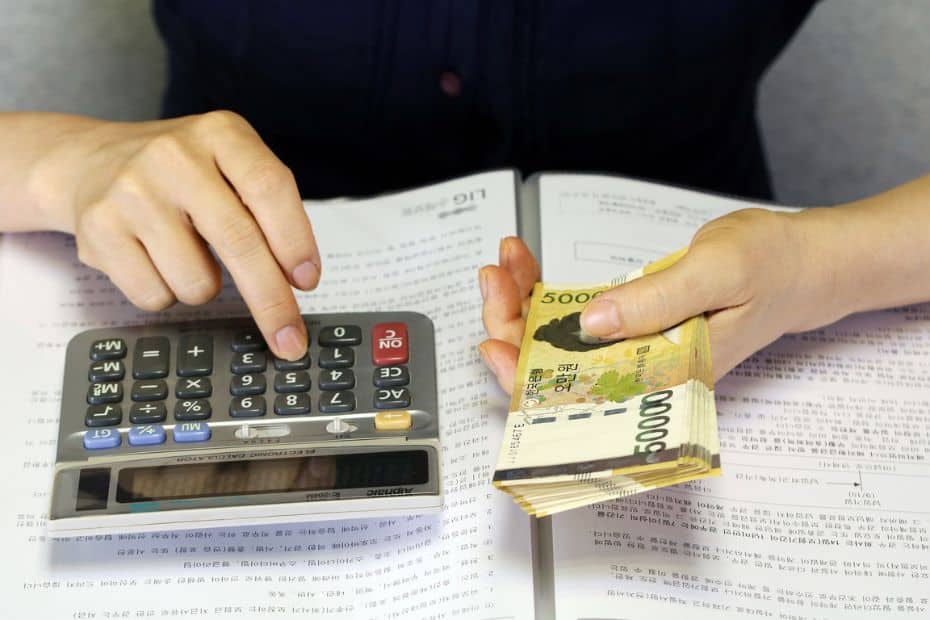
There are always ways to save money and spend less in Korea. Budget options exist for travellers and you can travel in Korea for less than 150,000 KRW per day, even as little as 50,000 KRW per day. Here are some of the ways you can save money in Korea and travel more for less:
Eat like a local : Visit the traditional markets, food stalls, and traditional Korean restaurants. These are much cheaper than eating foreign foods in Korea. University areas are usually cheap, too.
Spend less on coffee : Coffee in Korea can be expensive, but it doesn’t have to be. A latte could cost you 5,000 KRW in a chain store, but there are cheap hole-in-the-wall cafes where it’s half that.
Shop in the markets : From designer goods (possibly fake) to souvenirs, the markets of Seoul and other cities usually have the best prices. Don’t be afraid to haggle.
Use public transport : Korea has a fantastic public transport network both in cities and between cities. Don’t waste money on taxis and private transfers when you can use a bus or subway.
Book everything online : You can find discounted entry and tour tickets online that are much cheaper than the regular price. Use Klook , Get Your Guide , and Viator for the best prices.
Stay in guesthouses and hostels : You can find rooms for as little as 10,000 KRW per night in shared dorms and 20,000 KRW in guesthouses. Book ahead to find the best prices.
Take advantage of free things : There are lots of places you can visit for free in Seoul and free services, such as walking tours in Seoul, 30-minute hanbok rentals, and even free entry to the palaces.
Get your tax back : Korea makes it really easy to recover tax you’ve paid when shopping. Stores in Seoul will process tax returns for you or you can claim a refund at the airport when you leave.
You will see tips and links in this South Korea travel guide that are designed to help you save money when you visit Korea. Booking tours, attractions, and sim cards in advance can save you a lot of money, as can using a T-Money card and Wise travel card. Keep reading for more money-saving tips.
Travel Money And Money Exchanges In Korea
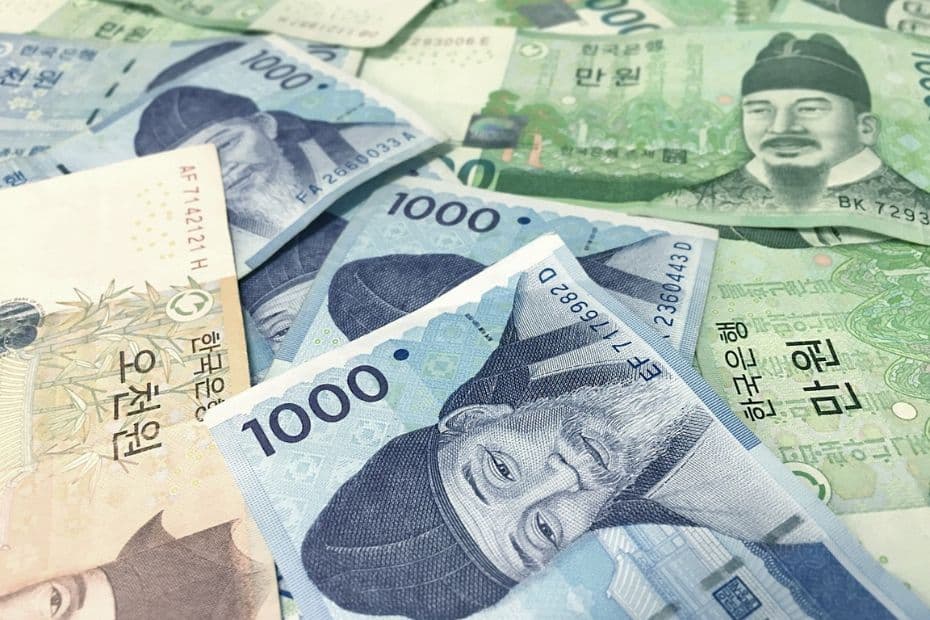
If you follow the tips in this section of this South Korea travel guide, you can certainly save yourself a lot of money and avoid unnecessary fees when spending in Korea. Learn where and how to exchange money, how to avoid ATM and card fees, and how to get tax back before you leave.
Because this section covers a lot of the common questions people ask about travel money in Korea, it will be broken down into a question and answer format. This should make it easier for you to find the information you’re looking for and discover answers you didn’t know you were looking for.
Can You Use A Foreign Card In Korea?
Almost all foreign credit cards with Visa or Mastercard will be accepted in Korea and it is possible to use these cards to pay across the country. American Express is also accepted in popular tourist areas, but not as widely as Visa or Mastercard and may have problems outside of big cities.
Foreign debit cards should work if they use Visa or Mastercard, but there may be restrictions in place with your bank when using them abroad. It is recommended that you call your bank to check before travelling. For both credit and debit cards, check your bank for any fees you’ll pay overseas.
Can You Withdraw Cash From An ATM In Korea?

You can withdraw cash from ATMs in Korea using a debit card, but not all ATMs will accept international cards. Look for a sign saying ‘Global ATM’ or ‘Foreign Currency ATM’ to withdraw cash in Korea with a debit card. You can also withdraw cash using a credit card, but it’s more expensive.
Whether you use a debit or credit card, an ATM is likely to charge a fee to withdraw money using a foreign card. Your bank or credit card company may also charge a fee or give a bad exchange rate. These costs can add up a lot if you withdraw regularly, so try to make fewer withdrawals.
Learn more : Should you use cash or card when you visit Korea? This article about the how to pay in Korea has lots of useful information about payment methods in Korea, including alternatives to the usual mix of cash and a credit card.
How Can You Save Money When Paying By Card In Korea?
Instead of using a foreign debit or credit card in Korea, which might have expensive fees or not work in places, here are two better options. The first is the WOWPASS travel card , which offers tourist-friendly card services in Korea. The other is to apply for a travel card that can be used globally.
Both the WOWPASS and the two other travel cards offer the ability to pay by card in Korea and to withdraw cash in Korean won. They also offer better exchange rates than you’ll find in airport or local money exchanges in Korea. They each have some unique features, which will be illustrated below.
Pay Like A Local With WOWPASS
The WOWPASS is a new way to pay in Korea that combines the essential functions of a T-Money transportation card with the benefits of a local debit card. This is a prepaid card you can top up at more than 90 locations in KRW or your own currency. Just look for the bright orange WOW machines.
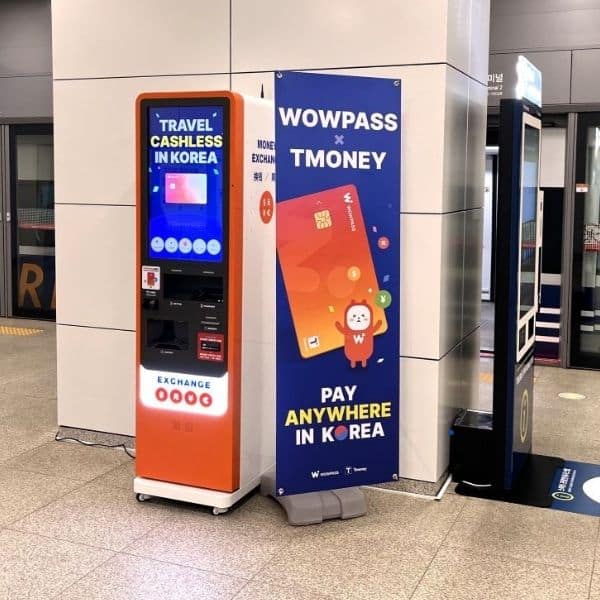
The T-Money function in the WOWPASS means it’s more useful than other travel cards as you don’t need to carry two separate cards when you travel. Please note, you still need to charge the T-Money balance of WOWPASS with cash, just like a regular T-Money card.
The WOWPASS travel card allows you to add up to 1,000,000 KRW to your card and can be used to pay for almost anything in Korea without any fees. The card is issued by a Korean company, so you can use it to withdraw cash at any WOWPASS machine located in Seoul & other cities in Korea.
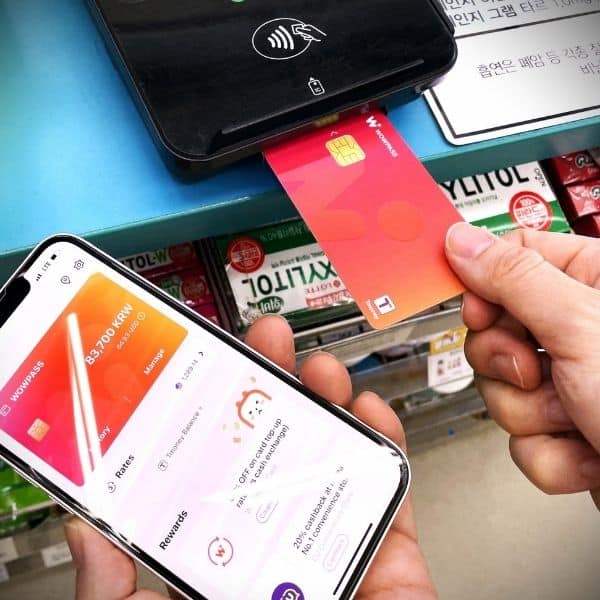
Thanks to the user-friendly WOWPASS app, users can freeze or replace their card, check their spending, add funds, and check exchange rates. Because the WOWPASS isn’t tied to your home bank account, it also reduces the damage by card fraud, in case the worst was to happen.
As well as a regular WOWPASS, you can also reserve the All-In-One Airport Package , which includes the WOWPASS, 10,000 KRW T-Money balance, and a discounted Korean sim card. This is really useful for those who want to get connected and travelling as soon as they arrive in Korea. Get the WOWPASS app for Android or Apple .
Tip : Use the invitation code INMYKOR1 to get cashback on WOWPASS top-ups in foreign currency.
Overseas Travel Cards You Can Use In Korea
Overseas travel cards are another option for spending in Korea and I use them myself to spend money from my UK bank account in Korea, as well as when travelling in other countries. They’re really simple to use and are much cheaper than paying with my foreign card or exchanging money.
Two of the leading travel card companies are Wise and Revolut . I use both of these to pay for things in Korea and have written an article about how to use the Wise card in Korea . You can use them to pay for hotels, food, drinks, transportation, taxis, attractions, and lots more. They’re really useful.
Here’s a summary of the main features of these travel cards:

The Wise travel card allows you to easily transfer and convert money from your home bank account into dozens of other currencies and use this money to pay when you’re travelling. You only need to transfer as much as you plan to spend and can easily transfer back anything you haven’t. The exchange rate will be better than your bank or a money exchange offers, too.
A versatile, easy to use app breaks down what you’ve spent by category so you can track your travel spending. You can withdraw cash from ATMs, pay by QR code, use it for Google Pay, and pay by contactless. Even if you lose your card, you can still spend money. It’s also really safe as you can freeze your card, set spending limits, and limit how much money you transfer.
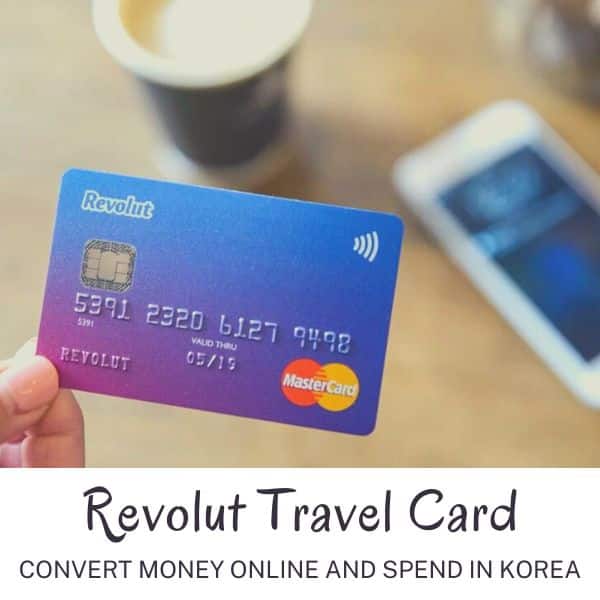
The Revolut travel card can be used in Korea to pay for a wide range of goods and services without expensive fees for spending your home currency overseas. Unlike the Wise travel card, which lets you transfer money into different currencies and then spend in a local currency, such as Korean won, the Revolut travel card lets you pay fee-free with your home currency.
The Revolut travel card comes with an easy to use app that can be used to manage your money both at home and when travelling in Korea. You can check your spending with categories and reports and set budgets for your spending. The Revolut travel card also offers cashback in the US, stock and crypto investments, and the same security features as the Wise travel card.
Can You Use Apple Pay In Korea?
Apple Pay wasn’t previously available in Korea due to a lack of approval by Korea’s financial regulator. However, in February 2023, Apple Pay received approval to begin operating in Korea through the Hyundai Card Co., allowing payments with Apple devices from March 2023 onwards.
The Apple Pay payment system has been available in Korea since March 21st , 2023 and allows Apple Pay members to pay for goods and services at NFC-enabled payment terminals. However, on the launch date of Apple Pay, there were only 70,000 NFC-enabled payment terminals in Korea.
The lack of NFC-enabled payment terminals will be a big issue for Apple Pay users in Korea as there are around 2,900,000 shops in Korea and most won’t accept Apple Pay. Franchises like Starbucks can’t accept Apple Pay and it can’t be used to pay for public transport. You’ll need a T-Money card.
Samsung Pay, which uses MST technology, not NFC, currently dominates the Korean market. NFC-enabled terminals should grow, especially in tourist areas and city-centres from 2023 onwards. This will be good news for Google Pay, which also uses NFC technology and also isn’t in use in Korea yet.
Should You Exchange Money Before Travelling To Korea?
It is not necessary to exchange money into Korean won before travelling to Korea, but it can certainly be useful to have a small amount of money. Exchange rates for Korean won outside Korea may not be as good as within Korea and changing large amounts of cash before you travel isn’t essential.
It might be hard to get Korean won from your local bank or money exchange as it’s not one of the most commonly exchanged currencies. Therefore, you might find exchange rates less favourable and extra fees applied to exchange money. Using travel cards like Wise or Revolut is a better option.
Should You Change Money At Incheon Airport?
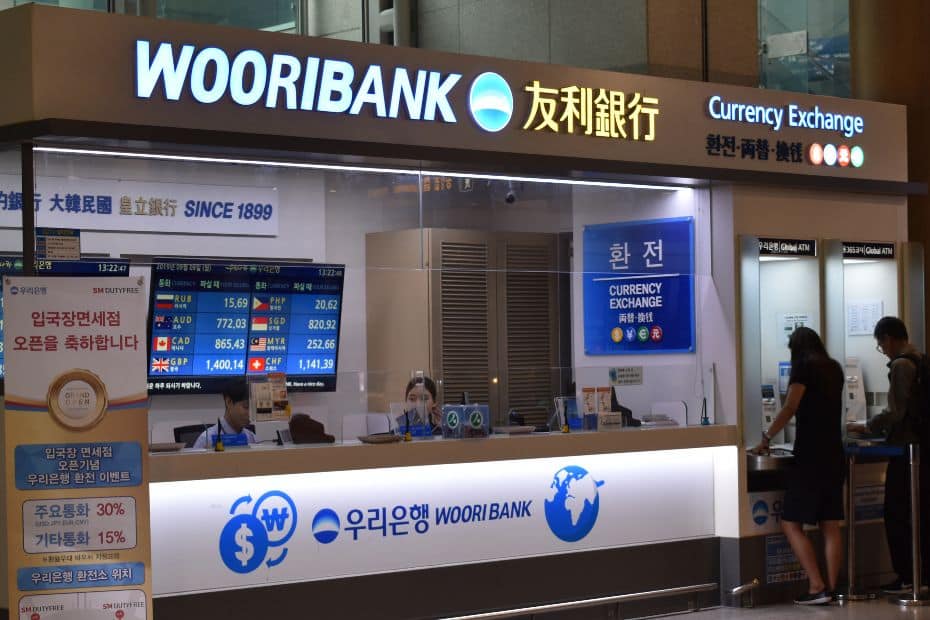
I’ve travelled around the world and always avoid exchanging money at the airport if I can help it. Airports often have the worst rates for money exchange as they know people need to get local cash, there aren’t many other options, and you need at least a bit of money to travel to your hotel.
Incheon Airport is an exception to this rule and I’ve compared travel exchange rates at several times when flying into and out of the airport. The foreign currency exchange rates at Incheon Airport aren’t that bad and are just slightly higher than what you’d find in Seoul. Not the best, but not bad.
There are also Global ATMs at Incheon Airport, so you can withdraw cash here. If you have a Wise or Revolut travel card, you can withdraw up to $200 fee-free from an ATM in Korea. However, Korean banks will charge a withdrawal fee (about 3,000 KRW), which applies to any foreign card used.
Where Can You Exchange Money In Seoul?
Seoul is the first destination for most travellers to Korea and if you want to save money on exchange rate fees, I recommend exchanging money in the capital. There are two main options for exchanging money easily and quickly in Seoul – WOW money exchange machines and money exchanges.
Here’s a summary about the two main ways to exchange money in Seoul:

The cheapest and most convenient option for exchanging money in Seoul is through a WOW money exchange machine. This automated machine gives the best exchange rates and can quickly and easily exchange foreign cash for Korean won. It doesn’t accept card payments, only cash. All you need to do is scan your passport and deposit your cash and it will convert it into Korean won immediately. There are dozens of these machines in Seoul, as well as in other cities like Busan and Daejeon.
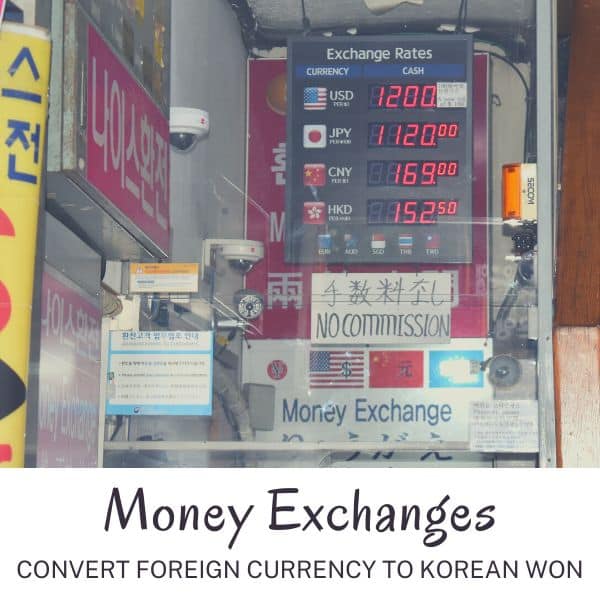
The traditional way to exchange foreign currency in Seoul was through a money exchange. You can find these in Myeongdong, where many tourists stay and visit in Seoul. There are also money exchanges inside banks and in other tourist hotspots. These used to be the best place to exchange money, until the WOW money exchanges were introduced and travel cards like Wise and Revolut made it easier to use a card. If you want to use a money exchange in Seoul, Myeongdong is the best place to do it.
Can You Get Tax Back When Shopping In Korea?
Travellers to Korea can claim tax back on eligible purchases during their trip. This can be done immediately after you purchase an item (if the shop offers the service) or at Incheon Airport or other airports in Korea before you depart.
Instant tax refunds are available at certain locations in Seoul and other big cities. These are usually department stores and large chain stores. You are able to claim tax refunds for goods up to a total value of 2,500,000 KRW (incl. tax). There is a tax refund limit of 500,000 KRW per transaction.
2024 Tax Refund Changes : From 2024, the tax refund limits will be doubled, so you will be able to claim up to 5,000,000 KRW of tax back and claim up to 1,000,000 KRW back per transaction. Source: Korea Herald .
To claim a tax refund you need:
- To show your passport
- To be a tourist in Korea
- To spend between 30,000 to 300,000 KRW in one place
- To be leaving Korea within 3 months
Tax isn’t refundable on all purchases, so be sure to check when shopping. Tax refunds can also be claimed at the airport as long as you have the receipt and the goods you’ve purchased.
Mobile Phones And Internet In Korea
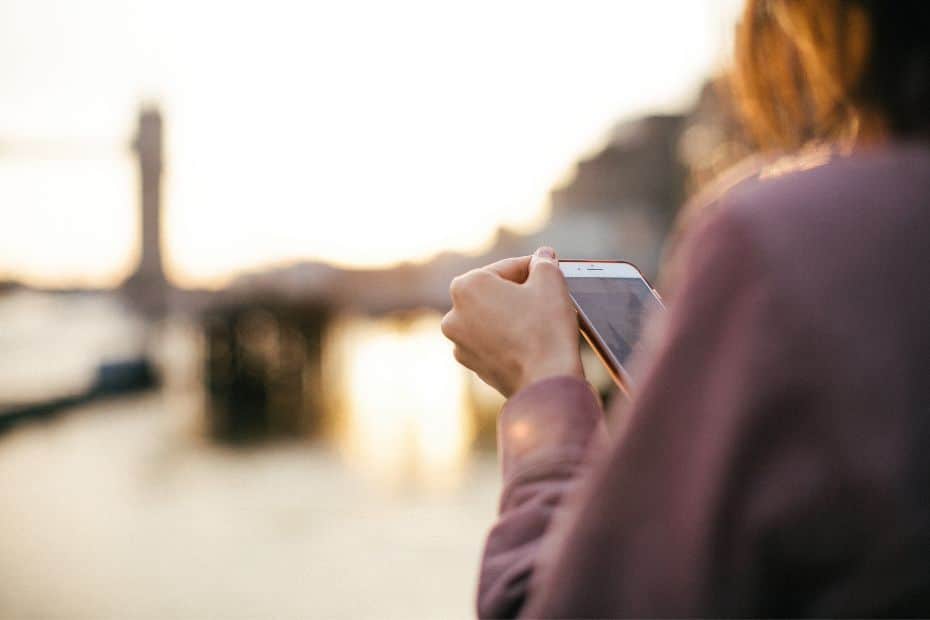
Staying connected to the Internet when visiting Korea is becoming more and more essential these days. Keeping your mobile phone, tablet, or computer connected to the web is useful not only to stay in touch with people back home, but also to help you save money and travel Korea more easily.
There are several options to stay connected in Korea when you travel. The main options for travellers are tourist SIM cards, either physical or eSIMs, portable WiFi routers, and relying on free WiFi provided in public places and hotels. All of these are good options, but there are other considerations, too.
This South Korea travel guide will cover the main differences between Korean SIM cards and portable WiFi routers and which will be most suitable for you. There are also details about why you might want a Korean phone number and which apps to use to help you travel in Korea.
Don’t forget, if you bring your phone or other mobile devices to Korea, you’ll need a travel adapter .
Should You Get A Korean SIM Card Or WiFi Router?
Both a Korean SIM card or portable WiFi router will provide access to Korea’s high-speed mobile networks and keep you connected to the Internet. They provide a secure internet connection, but do so in a different way and with different available features. Find out about the best Korean SIM card for tourists in this SK SIM card review .
Here are the main features of Korean SIM cards and WiFi routers:
Costs : SIM cards and WiFi routers are similarly priced when using them for a two week period, but they are charged in different ways. SIM cards are fixed-price and can be bought for set time periods, whereas WiFi routers are charged daily. WiFi routers are cheaper in the short-term.
Ease of use : If you purchase or pre-order a SIM card or portable WiFi router at Incheon Airport, which I highly recommend, the staff will install or setup everything for you. Once they’re activated, it’s very simple to use either one. Cancelling and returning them at the airport is also easy for both.
Here are the reasons you should get a Korean SIM card or portable WiFi router in Korea:
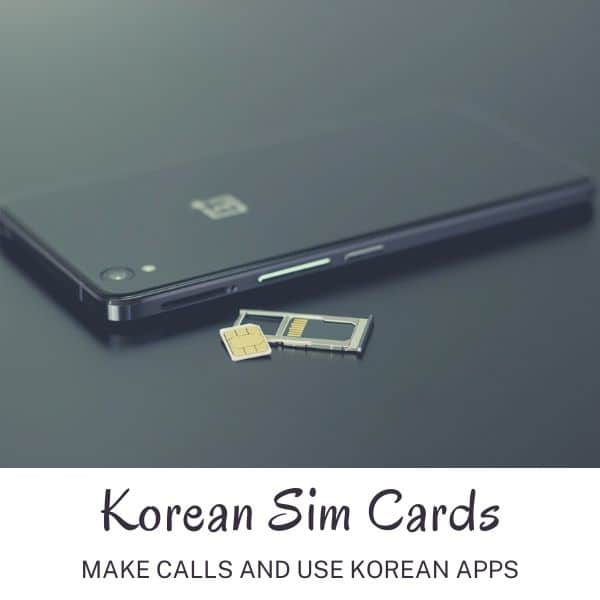
You should get a Korean SIM card when visiting Korea to get a Korean phone number. The benefits of having a Korean phone number are mainly to make calls and use Korean apps. SIM cards are also useful if you want a secure connection everywhere you go and plan to make calls or send texts. When you have a SIM card, you can tether your network connection to connect other devices you own. Korean phone coverage is amazing and you’ll get service everywhere. SIM cards don’t require you to carry any extra devices and are cheaper over the long-run than WiFi routers.

You should get a portable WiFi router if you’re travelling in a group or as a family as you can connect multiple devices to one router. This is much cheaper than getting separate SIM cards for all travellers, but also requires people stay close together. WiFi routers are charged per day and if you need additional days, they’ll be automatically added and charged when you return the router. This means you’ll never have to worry about your service suddenly ending. The main downside to using a WiFi router is the lack of Korean phone number, but that might not be an issue if you don’t need one.
Where Can You Get Korean SIM Cards Or WiFi Routers?

You can get a Korean SIM card or portable WiFi router in several ways. The easiest way, and one that I definitely recommend, is to purchase online through a tour company such as Klook , Viator , or Get Your Guide , and get a SIM card at Incheon Airport or other entry point into Korea when you arrive..
The main reason I recommend this method is that you can guarantee you will get a SIM card or router and it will be waiting for you when you arrive. The collection desks at Incheon Airport are open 24-hours a day and they will help you install everything you need to get started immediately.
You can also get SIM cards and WiFi routers when you arrive at the airport and you should find similar rates. However, you won’t be guaranteed a device and you will need to pay in person. When you book online, you can pay in your home currency and avoid those issues.
I don’t recommend getting a SIM card or WiFi router in Seoul or other cities. It is possible, but you may run into language issues and find less tourist-friendly options. Phone shops outside the airport usually cater to Koreans, not tourists. Airport rentals are the easiest options for visitors to Korea.
What’s The Benefit Of A Korean Phone Number For Tourists?
There are two main benefits of having a Korean phone number for tourists. The first benefit is the ability to call people when you’re in Korea. This can be useful for making reservations, keeping in touch with people, and in case of emergencies.
The second benefit of having a Korean phone number is the ability to use Korean apps . It isn’t mandatory to have a Korean phone number to use Korean apps, but most won’t let you use their services unless you sign up with a phone number. Using Korean apps makes travelling easier.
A phone number is like a form of identity in Korea, which is why you need your passport to register a SIM card. Once you have a phone number, many more services are available, including food delivery, ordering taxis, making reservations (such as for the Busan Sky Capsule ), and online messaging.
What Apps Do I Need For Travelling In Korea?
If you have a Korean phone number, you can use Korean apps. Even without a Korean number, you can still download these apps and use some of their services. Full features typically require a phone number though. There are other, non-Korean apps that will help you when travelling, too.
Here are the most useful apps to use when travelling in Korea:
Papago : This is the essential translation tool for visiting Korea. Papago’s translation services are the best and you can use the app to take pictures and translate Korean signs, menus, and other pictures.
Naver Maps : To find your way around Korea, use Naver Maps or Kakao Maps. Their systems are much more accurate in Korea than Google Maps. Use them to plan travel routes and transport times.
Kakao Taxi : Uber and Grab don’t really exist in Korea, so if you plan to take a taxi, you’ll need to use Kakao Taxi. Simple to use and takes the hassle out of trying to use Korean to give directions.
Kakao Talk : This is Korea’s most popular messaging app and is useful for keeping in touch with Korean friends, contacting businesses in Korea, and even calling abroad.
Seoul Subway : Use this app to travel around Seoul’s underground more easily. Plan your route, see when the next train is due to arrive, check connections, and see how late the trains run.
Korail Talk : This app allows you to book trains on Korea’s high-speed train network and regular train routes. This app has an English setting, so you can check train times and prices easily.
Coupang Eats : This is a food-delivery app that allows you to order almost anything edible and get it sent directly to you. You can even order convenience store goods. Useful for rainy days.
Mango Plate : Find restaurants in Korea with this app and discover the best places to go out and eat. You can also see restaurant details and get directions in Naver Maps and Kakao Maps.
WOWPASS : To use the WOWPASS to pay like a local in Korea and for T-Money functions, you’ll need the WOWPASS app. This will let you check your balances and spending and control your card.
Wise & Revolut : As mentioned in this South Korea travel guide, using a travel card to pay for items in Korea will save you money when you travel. If you use Wise or Revolut, make sure you have the app.
Klook : This company provides some of the best tours in Korea and if you make bookings through their website, you can easily manage them with the Klook app.
Intercity Bus by T-Money : This app is great for booking buses between cities in Korea. There is an English version that allows you to book tickets, check times, and see available seats.
These apps should be available on both Android and Apple. Some of these apps might default to Korean, but you should be able to change them to English in the side menu.
Is There Free WiFi In Korea?
Travellers in Korea have the option to not get a sim card or portable WiFi but still stay connected. This is thanks to the excellent Free Wifi in Korea that is provided in public transport, government buildings, restaurants, cafes, and many other places. This is mostly in the cities, however.
Hotels also provide free WiFi in most cities in Korea. If you plan to rely on free WiFi, I recommend using the hotel’s WiFi to plan routes, check opening times, and research places you want to visit. Take screenshots of these details so you can see them later, even if you don’t have Internet access.
The only warning I would give about relying on free WiFi when travelling in Korea is the increased use of mobile-dependent apps and passes in Korea. Physical tickets and passes are being phased out in favour of digital versions, which often need an active Internet connection to use.
I’ve noticed in recent years that services that impact travellers have moved to digital versions. This includes the T-Money card, Discover Seoul Pass, train and coach tickets, attraction tickets and event tickets. I believe that having a reliable net connection will be a must for most travellers soon.
Using Public Transport In Korea In 2024
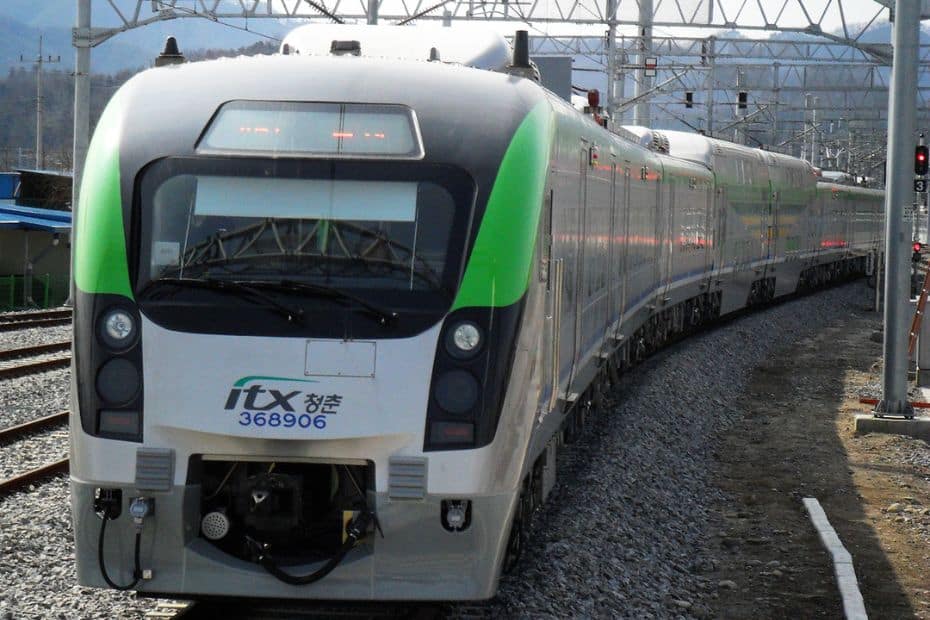
This section of the South Korea travel guide looks at Korea’s public transport system and how to navigate it as a traveller. Korea has arguably one of the best public transport systems in the world. It’s cheap, well-connected, frequent, and runs on time. Other countries could learn a lot from Korea.
The great news for tourists is that Korea’s public transport is very foreigner friendly and information is provided in English in almost all places, as well as Chinese and Japanese in popular areas such as Seoul and Busan. Travelling by public transport in Korea is cheap, easy, and convenient.
How Much Does Public Transport Cost In Korea?
The cost of public transportation in Korea is fixed, no matter what day you purchase tickets on. If you buy one month in advance, or last minute, you will pay the same price for the journey. Journeys within a city are a single price and not dependent on how far you travel, unless you leave the city limits.
All journeys are single fares and you can’t buy return tickets. You will need to buy two singles when you want to travel somewhere and back again. The cost of a single fare depends on how you pay for the ticket – by cash or with a transportation card.
Here are the costs for public transport in Korea by payment method, type and user:
Please note : The cost of subway rides is set to rise to 1,400 / 1,500 KRW in October 2023. These prices will be adjusted when this occurs.
How Do You Pay For Public Transport In Korea?
The cost of public transport in Korea depends on whether you pay with a transportation card, such as T-Money, a Korea Tour Card , or Cashbee, or in cash. This applies to both subways and buses. If you use a transportation card, you should add credit to it, then touch it to the card reader at the subway or bus to pay.
To use cash to buy a subway ticket, you will need to buy a ticket at the station. For buses, you should pay the correct fare to the driver when boarding the bus. However, since 2022, buses across Korea have started to end the use of cash and some will insist on payment by transportation card only.
In the future, bus payments are expected to become simpler with fares deducted via bluetooth-enabled phones that have the relevant app downloaded. This system has already been in place in Gyeonggi Province since March 2022 and is likely to spread to more bus routes in the future.
I highly recommend getting a T-Money card when you travel to Korea. You can use it to pay for public transportation (at a discounted rate), and it will work almost everywhere in Korea. It can also be used to buy goods from shops, cafes, and restaurants. It’s really convenient and a must-have for Korea.
Using T-Money To Pay For Public Transport In Korea
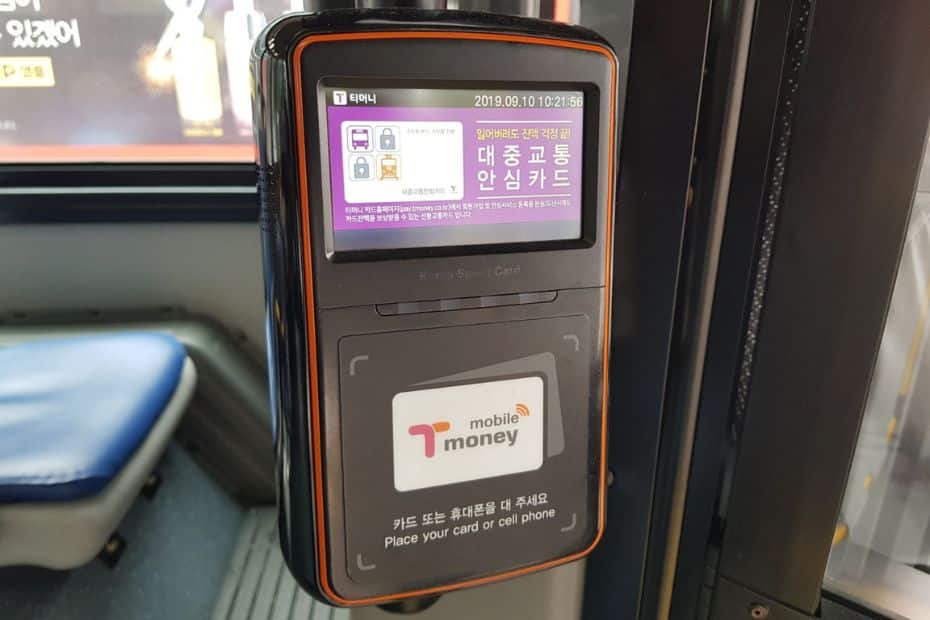
A T-Money card is the essential transportation card for using public transport in Korea. You can purchase one at Incheon Airport, subway and train stations, and convenience stores across Korea. The card can be used in many places. It never expires, so you can use it on different trips, too.
Here is how to use a T-Money card in Korea:
- Purchase a T-Money card (2,500 KRW)
- Add money to the card (cash top-up only)
- Enter the bus or subway station
- Tap the T-Money card against the card reader (see pic above)
- Tap the T-Money card again when you get off (for transfer discount)
- Recharge when necessary
I recommend adding about 10,000 KRW for each day you plan to travel in Korea. That means about 70,000 KRW for a week. You can add more money later if necessary. You can top up at convenience stores and transport stations. There is also an app version of T-Money, but the card version is better.
How Do You Use Trains In Korea?

The train network in Korea is divided into high-speed trains (KTX) and regular trains (ITX and Mugunghwa). The KTX network connects major cities in Korea and is convenient for travelling around Korea quickly and cheaply. The carriages are comfortable and come with modern facilities.
Unlike other forms of public transport in Korea, transportation cards like T-Money aren’t accepted for trains. You will need to buy a train ticket to travel and all tickets are single tickets. The price to buy a ticket doesn’t change and you can refund a ticket up to the last minute for only a small fee.
You can book tickets within 30 days of travel through the official Korail website or app, or at a train station in Korea. Unfortunately, buying a train ticket online in Korea can be difficult as Korean payment systems often reject cards issued outside of Korea. Buying in person is recommended.
How To Book Korean Rail Tickets Outside Of Korea
If you want to book Korean train tickets outside of Korea, you can do it online with Trip.com , which is Korail’s exclusive overseas distributor. The price is slightly higher (about 5%) than the price you’ll pay in Korea, but it will allow you to book tickets online and secure your seat in advance.
If you plan to travel on the main KTX route between Seoul and Busan, I highly recommend booking tickets in advance. There are three types of tickets available – first class, regular, and standing. The journey takes 2:34 and you don’t want to be standing for all that time. Book ahead for comfort.
Is The Korea Rail Pass Worth The Price?
The Korea Rail Pass is a good option for tourists who plan to travel long distances by train in Korea, such as between Seoul and Busan or Seoul and Jeonju. The pass has two main options – flexible and consecutive. These mean you can use it any time (flexible) or within consecutive days.
The flexible pass is more expensive, but offers more freedom to travel around Korea over a longer period. You can use the pass to only cover big journeys and won’t feel pressured to use it again until you’re ready. The extra cost is more than worth the inconvenience of having to rush travel plans.
Will you save money with the Korea Rail Pass? That depends on your travel plans, how often you’ll be travelling by train, and how many people are travelling. If there are 2 people or more, purchase the group saver pass and save 10,000 KRW each on the pass. Group tours make it better value.
The Korea Rail Pass does not allow you to ride on the subway for free, which would make it better value. It can also be complicated to reserve tickets online using the pass and buying tickets in the regular way is more convenient. Overall, the pass isn’t essential, but might save you money.
How Do You Use Taxis In Korea?
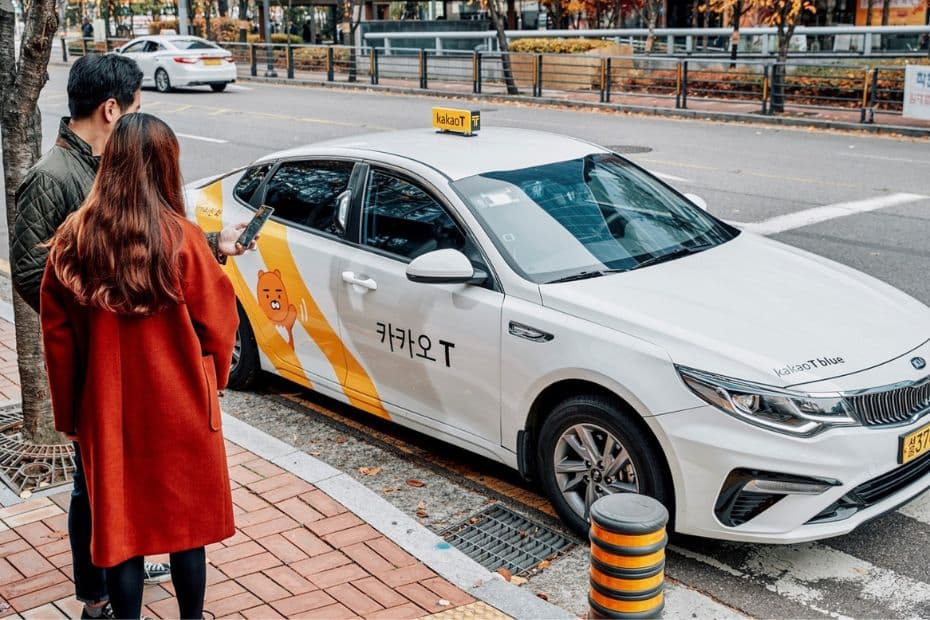
Taxis in Korea can be hailed from the street or called directly to you using apps such as Kakao Taxi . Companies like Uber and Grab don’t have a large presence in Korea and operate the same way as Kakao Taxi, by helping you find an official taxi driver. Private taxi services aren’t common.
The big issue facing the Korean taxi industry in 2024 is the lack of taxi drivers. This can make it hard to get a taxi, even when using an app like Kakao Taxi. Late night taxis are particularly difficult to find. Read this guide about how to use Kakao Taxi to help you learn how to call a taxi in Korea.
Taxi prices in Korea are reasonable, especially compared to countries like Japan and the UK. Although base taxi fares rose in 2023 to 4,800 KRW, the price is still low and relatively affordable to travel by taxi if you need to. It’s a good option if there are no direct public transport routes.
Taking a taxi to and from Incheon Airport is a convenient option if you have a lot of bags or you are travelling in a group. For solo travellers or couples, I would recommend using public transport or a limo bus, as it’s significantly cheaper and won’t take much longer than a taxi.
How Do You Use Intercity Buses In Korea?
Intercity buses in Korea operate in a similar way to trains. You can only book tickets within 30 days of travel and can only buy single tickets. Book tickets online through websites such as T-Money Bus or Bustago , through app versions of these sites, or at the bus terminal you will depart from.
You can’t walk onto intercity buses without a ticket, nor can you use transportation cards like T-Money to pay on entry. You will need to pay for and receive your ticket (physical or digital) before you can enter the bus. Ticket machines usually (but not always) have English options for buying tickets.
There are no return bus tickets in Korea and you can only buy tickets from your point of departure, unless you book online or via an app. If you’re travelling from Seoul to Gangneung, for example, you will need to buy a ticket in Seoul and then a ticket in Gangneung. You can’t buy both in Seoul.
How Can You Hire A Car In Korea?
Renting a car is a great way to see parts of Korea that aren’t covered by the train network and gives you the freedom to explore at your leisure. If you plan to travel to Jeju Island, which doesn’t have any trains, hiring a car will be a lot more convenient and is almost a must if you plan to travel inland.
Car rental in Korea isn’t that expensive and you can rent a modern car for as little as 75,000 KRW per day. I recommend booking car rentals through Klook , they will deal with the Korean car rental companies and reserve a car for you. This is easier than trying to do it in Korean.
To hire a car in Korea, you will need:
- Driver’s license (must have had it for at least 1 or 2 years)
- International Driving Permit (in some cases)
- Credit card (in the name of the main driver)
- Valid photo ID (passport)
- Printed voucher for rental (if booked online)
Here’s some more information about the International Driving Permit and rules you should follow when driving in Korea, such as the legal requirement to wear seatbelts, booster seats for under 6s, and not using your phone while driving. Be sure to read up on local rules before driving in Korea.
Best Places To Visit In Korea In 2024
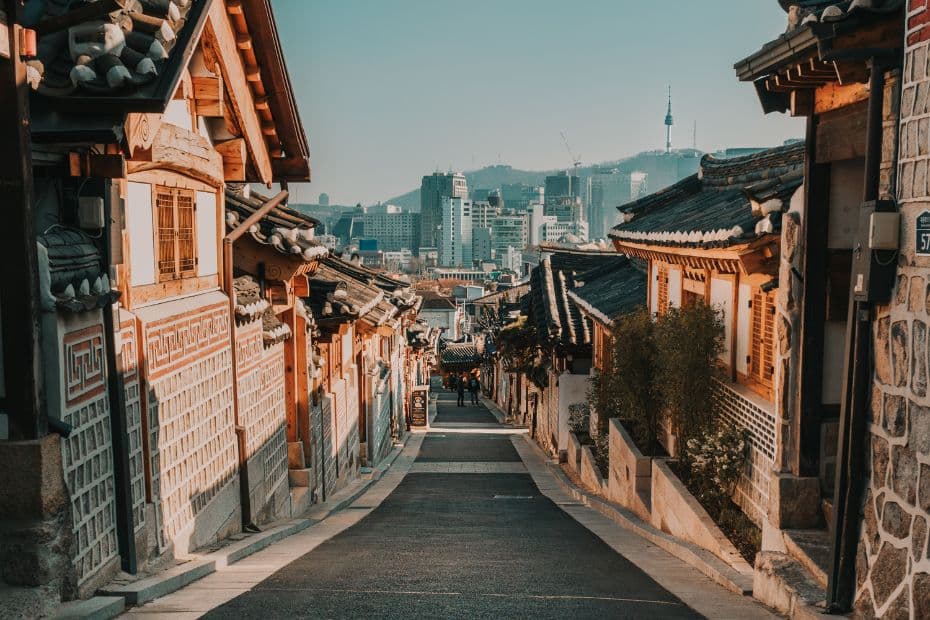
The next few sections of this South Korea travel guide will help you figure out what you want to do and see on your travels. This first section will give you a brief introduction to the best places to visit in Korea, including the major cities, tourist hotspots, and unique areas that you’re sure to love.
Here are the best places to visit in Korea:

Seoul: Korea’s Capital
Seoul is Korea’s vibrant, bustling capital and truly a must-see for any first-time visitor to Korea. There is so much to see and do in Seoul that you could easily spend a week or more exploring the city and not get bored. You will find yourself falling in love with the city for different reasons. Maybe it’s the friendly people, the deliciously cheap street eats, the way things just work, the hidden murals on old buildings down side streets, the feeling of safety even in a big city, or the historic sights creeping out from modern buildings. Seoul includes everything Korea has to offer, plus a lot more you won’t find elsewhere.
What To See In Seoul
Here are 10 great places to visit in Seoul:
- Gyeongbokgung Palace
- Bukchon Hanok Village
- Myeongdong Street Markets
- Lotte World Tower & Seokchon Lake
- Dongdaemun Design Plaza & Markets
- Yeouido Han River Park & Cruise
- Secret Garden (Changdeokgung Palace)
- N Seoul Tower & Namsan Mountain
- COEX Mall & Bongeunsa Temple
- Bukhansan National Park

Busan: Big Coastal City
While Seoul is a showcase of all things Korean, Busan is unashamedly its own city and a celebration of coastal life and local culture. Busan is famous for fresh seafood, traditional markets, great beaches, big festivals, movies, temples, and places to explore the coast. Beaches are popular places to visit in Busan, along with cliff-side walkways with views over the ocean. Central Busan is a lively spot with lots of entertainment and markets to enjoy, including a famous fish market where you can choose your own lunch and then eat it. Busan is spread out and deserves several days to explore it properly.
What To See In Busan
Here are 10 great places to visit in Busan:
- Haeundae Beach & Beach Train
- Jagalchi Fish Market
- Gamcheon Culture Village
- Haedong Yonggungsa Temple
- Songdo Beach & Cable Car
- Huinnyeoul Culture Village
- BIFF Square & Centum City Mall
- Oryukdo Skywalk & Coastal Paths
- Lotte World Busan
- Busan X The Sky Observatory

Jeju Island: Natural Wonder
Jeju Island is a gorgeous island created from a volcano rising out of the ocean 2 million years ago. Today it’s one of the New 7 Natural Wonders of Nature and deservedly so. The lush island is packed with pine trees, tangerines, rolling hills and fields, cacti, and jet black volcanic rock tumbled all around. You can relax on a beach, go horse riding, explore ancient lava tubes, scuba dive, climb to the volcano’s peak, chill in a beach-side cafe, explore traditional markets, learn about local culture, and lots more. The island has two main cities, but the attractions are spread out along the coast.
What to See On Jeju Island
Here are 10 great places to visit on Jeju Island:
- Hallasan Mountain (Volcano)
- Seongsan Ilchulbong Sunrise Peak
- Hyeopjae & Hamdeok Beaches
- Seogwipo Maeil Olle Market
- Jeju Folk Village
- Yakcheonsa Coastal Buddhist Temple
- Jungmun Beach & Jusangjeolli Cliff
- O’Sulloc Green Tea Museum
- Cheonjiyeon & Jeongbang Waterfalls
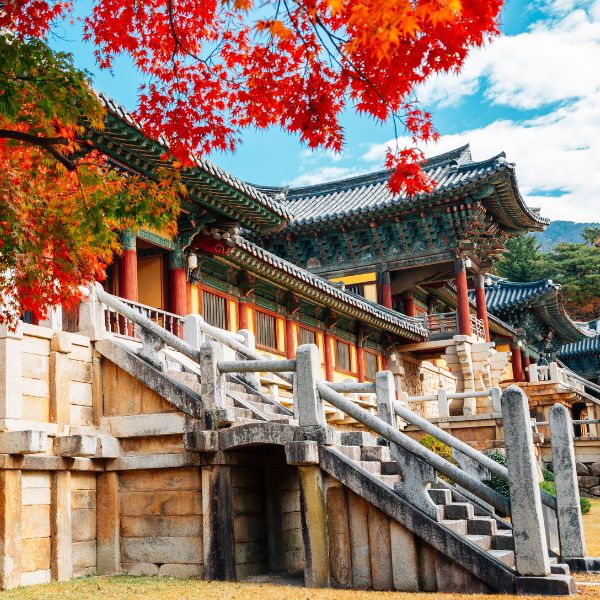
Gyeongju: Historic Capital
Gyeongju , the former capital of the Shilla Kingdom in ancient Korea, is a true treasure trove of UNESCO World Heritage sites, as well as local culture, history, and natural beauty. Described as an outdoor museum, you can see many of the big attractions in the Gyeongju Historic Area, including the 1,400 year Cheomseongdae Observatory . There’s so much to see in Gyeongju outside this area though, including the impressive Bulguksa Temple, one of the best Buddhist temples in Korea. There’s also the Bomun Lake Tourist District, a dreamy sight during cherry blossom season.
What To See In Gyeongju
Here are 10 great places to visit in Gyeongju:
- Bulguksa Temple & Seokguram Shrine
- Cheomseongdae Observatory
- Donggung Palace & Wolji Pond
- Yangdong Folk Village
- Hwangnidangil Hanok Street
- Daereungwon Tomb Complex
- Bomun Lake Tourist Complex
- Woljeonggyo Bridge
- Gyeongju National Museum
- Gyochon Traditional Hanok Village
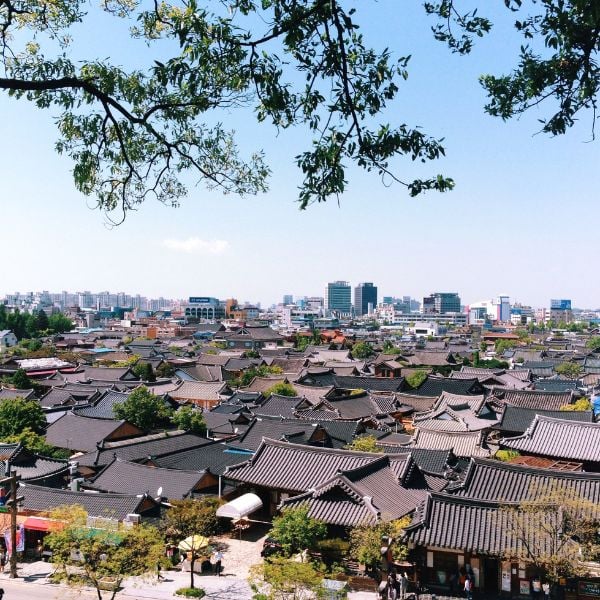
Jeonju: Traditional Views & Food
Jeonju is the perfect destination for a day trip from Seoul and has most of its main attractions in one area of the city. What can you see in Jeonju? The main attraction is the gigantic Jeonju Hanok Village , featuring more than 700 traditional hanok houses. You can dress up in Korean hanbok, dine on Jeonju’s famous bibimbap in an old restaurant, and see how life in Korea used to be. There are plenty of other sights nearby, including a traditional market, pretty river, and the rather unusual Jaman Mural Village.
What To See In Jeonju
Here are 5 great places to visit in Jeonju:
- Jeonju Hanok Village
- Jeongdong Catholic Church
- Gyeonggijeon Shrine
- Nambu Traditional Market
- Jaman Mural Village
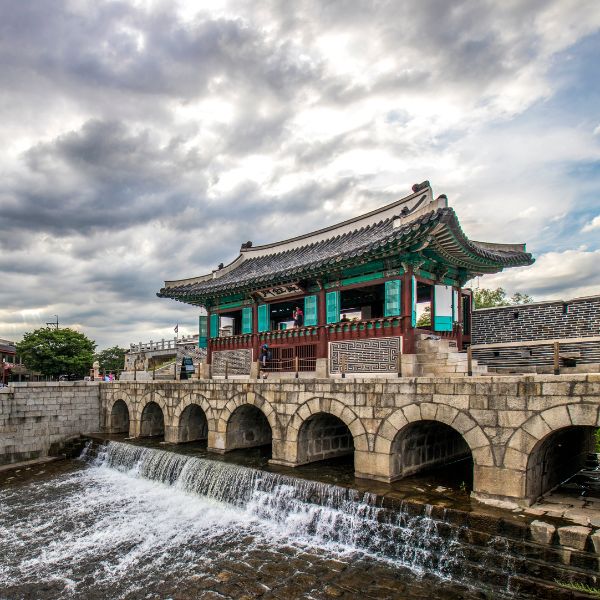
Suwon: Fortress City
Suwon is another city close to Seoul that you can visit in a day and see many interesting and unique sights. The main draw of Suwon is the Hwaseong Fortress and the fortress walls, which are still intact and run for 6km around the city. Inside this fortress you’ll find lots of museums, historic buildings, parks, and activities, such as archery. There are often cultural festivals in this area, too. Surprisingly, Suwon is the best place to get KFC (Korean Fried Chicken). There’s a whole street dedicated to making it.
What to See In Suwon
Here are 5 great places to visit in Suwon:
- Hwaseong Fortress & Fortress Walls
- Hwaseong Haenggung & Haengridan Gil
- Fried Chicken Street
- Korean Folk Village
- Gwanggyo Lake Park
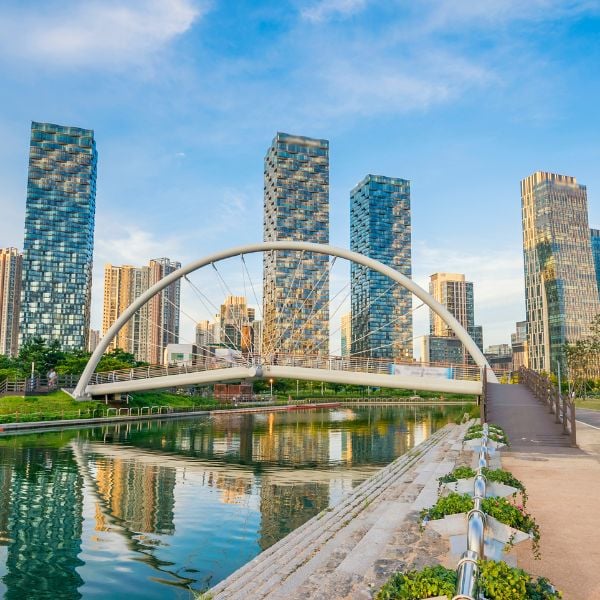
Incheon: Modern City With Islands
Incheon is one of Korea’s largest cities, but is sadly ignored as it’s right next to Seoul and most people think it’s just there for the airport. That’s not true at all and there’s plenty to see and do in Incheon. Described as a futuristic city, Incheon is at the front of Korea’s push to become an ultra-modern country and nowhere shows that more than Songdo Central Park . The traditional side of Incheon is also worth exploring, including the Chinatown, which is home to Korea’s most popular student food – jajangmyeon . If you want to explore a lesser-seen side of Korea, check out the islands near Incheon to see ancient fortresses, temples, and charming sights.
What to See In Incheon
Here are 5 great places to visit in Incheon:
- Songdo Central Park
- Incheon Chinatown
- Wolmido Island
- Incheon Grand Park
- Ganghwa Jeondeungsa Temple
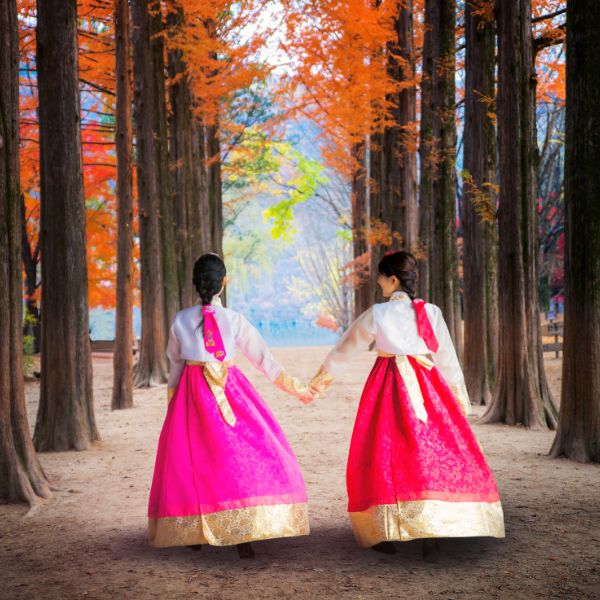
Gapyeong County: Tourists Treats
Gapyeong County is a rural part of Korea just outside Seoul that is one of the most popular day trip destinations for visitors and locals alike. Inside Gapyeong County is the lovely Garden of Morning Calm , a beautiful sculpted garden that showcases traditional Korean buildings set amongst thousands of different plants and trees. There’s also Nami Island , an ever-popular attraction that has long tree-lined streets to explore, woodland animals, bike paths, and even a zip line to the island. You can also visit Petite France, a recreation of a French village, Gapyeong Rail Bike Park, and Cheongpyeong Lake, and many other attractions in Gapyeong.
What To See In Gapyeong
Here are 5 great places to visit in Gapyeong:
- Nami Island
- Garden of Morning Calm
- Petite France
- Gapyeong Rail Bike Park
- Cheongpyeong Lake
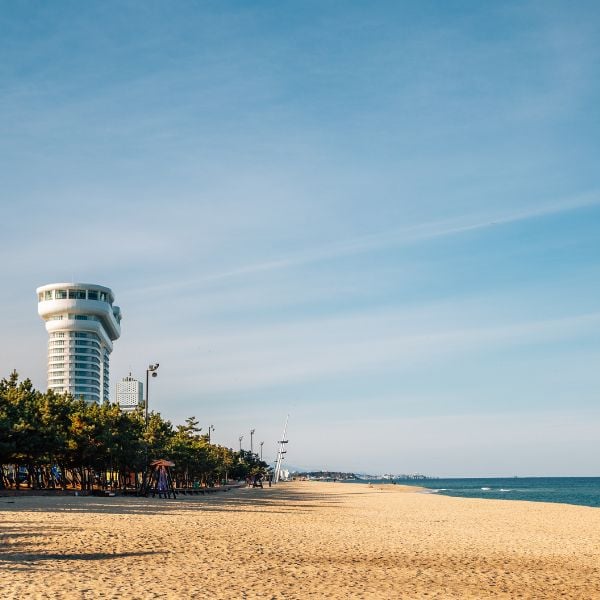
North-East Coast: Amazing Beaches
The north-east coastal region of Korea, spreading between Sokcho and Gangneung , features some of Korea’s most popular summer seaside resorts and beaches. The wide, sandy beaches are perfect for water sports, working on your tan, and sitting at night listening to local musicians perform BTS covers and their own tunes. Sokcho deserves at least two days to explore, more if you plan to visit nearby Seoraksan National Park , one of Korea’s best places to see autumn foliage. Gangneung is where to see cherry blossoms in spring, sit and relax at a seaside cafe at Gangneung Coffee Street , and enjoy beach life.
What To See On The North-East
Here are 5 great places in north-east Korea:
- Sokcho Beach
- Gangneung Beach
- Seoraksan National Park
- Yangyang Surfyy Beach
- Gangneung Coffee Street
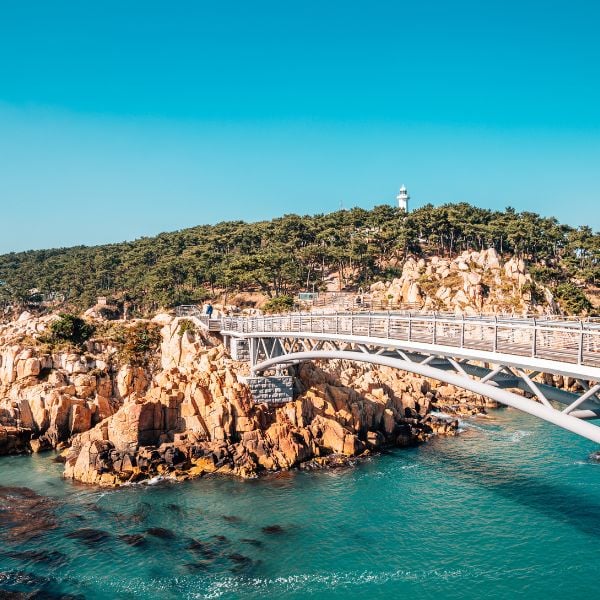
East Coast: Harbour Cities
Ulsan and Pohang are two industrial cities that don’t get enough attention, but are ideal for a weekend visit once you’ve explored other top sights. These coastal cities both have good beaches, coastal walks, and green spots, including a pretty bamboo forest in Ulsan. In Pohang, you can see the dizzying Space Walk , which looks out over the city and ocean. There’s also a former Japanese district with old buildings, and the famous Homigot Sunrise Square where you can watch the first sunrise of the year. Ulsan is famous for whaling and visitors should check out the charming Jangsaengpo Whale Museum and Daewangam Park.
What To See On The East Coast
Here are 5 great places on Korea’s East Coast:
- Yeongildae Beach & Space Walk
- Ilsan Beach & Daewangam Park
- Jangsaengpo Whale Museum
- Homigot Sunrise Square
- Taehwagang National Garden
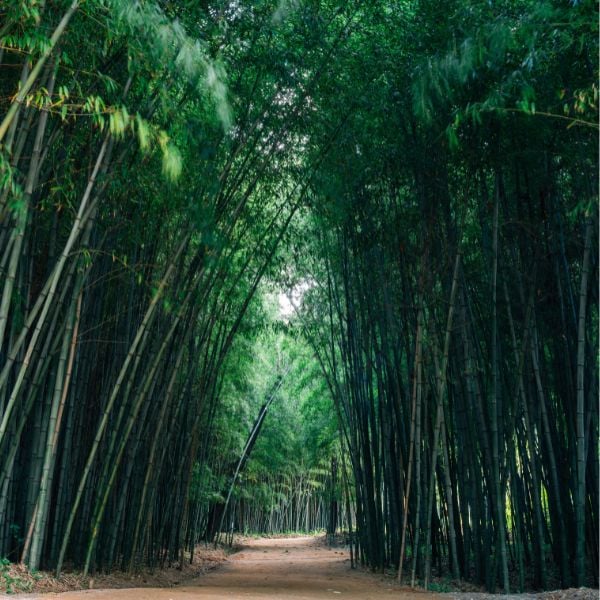
South-West: Iconic Rural Destinations
South-west Korea is a long way from most travellers’ typical route, but this area is worth visiting if you have time. Gwangju , one of Korea’s largest cities, is hidden away down here and surrounded by natural beauty, including the Juknokwon Bamboo Forest , Boseong Green Tea Fields, and Suncheon Bay Nature Reserve. If you plan to hire a car , these spots will show you a completely different side to Korea. Gwangju, too, which is a fun city and the birthplace of Korean democracy. Hidden in the far corner of Korea is Mokpo, a lovely coastal city that has a new cable car carrying you over the ocean.
What to See In The South-West
Here are 5 great places in south-west Korea:
- Damyang Juknokwon Bamboo Forest
- Boseong Green Tea Fields
- Gwangju Culture Park & Penguin Village
- Suncheon Bay Nature Reserve
- Mokpo Marine Cable Car
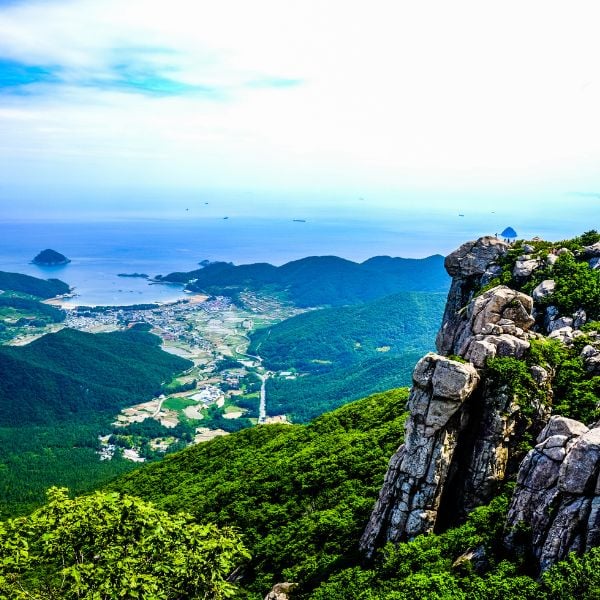
South Coast Islands: Summer Getaways
Best explored during the hot summer months and early autumn, the south coast islands in Korea, which span from Busan to Mokpo, are where Koreans spend their summer holidays. The most popular destinations here are Geoje, Tongyeong, Yeosu, Namhae, and Goheung and each offers winding coastal paths, beaches, natural beauty, and fun summer activities. The best way to see these islands is with a rented car or by bike, riding around the coast visiting a few different beaches and attractions. Don’t expect too many cultural sights, instead you’ll find luges, gardens, water sports, and lots of fun.
What to See On The South Coast
Here are 5 great places on Korea’s South Coast:
- Dolsan Park & Cable Car
- Namhae Geumsan Boriam Hermitage
- Hallyeohaesang National Park
- Oedo-Botania Botanical Garden
- Skyline Luge Tongyeong
As you can see, there are many great places to visit in Korea. Korea is truly a country of undiscovered wonders that people aren’t aware of. Seoul is an incredible place to visit, but there’s so much more to see. That’s why I try to include lesser-known places in this South Korea travel guide.
The list above covers a lot of the most popular or tour-worthy destinations in Korea, but there are still more places I could recommend, such as Andong (home to the mask dance festival), Gunsan (port town with a retro vibe), Daegu (big city with historic sights), Daejeon , and many more.
Besides cities and towns in Korea, there are also 18 national parks to explore, thousands of mountains, Buddhist temples, beaches, bike routes, campsites, and so much more. I’ll include a few of each of these in the next few sections of this South Korea travel guide.
Best Day Tours From Seoul In 2024

Taking a day tour while you’re staying in Seoul is a great way to see more of Korea’s top attractions without the hassle of moving hotels to somewhere new. The 10 day tours from Seoul below can all be done in a day or less and can even be combined with other activities in the same day.
I don’t want to include every day tour available in this South Korea travel guide as there isn’t enough room to talk about them all. If you want to find more day tours, I recommend looking at the options available through tour providers such as Klook , Viator , and Get Your Guide .
Please note : There are many day tours from Seoul and they come with various prices. I recommend avoiding the very cheapest as these will often waste your time by taking you to some overpriced gift shop area and pressuring you to buy souvenirs or rushing you through too many attractions.
Here are 10 great day tours from Seoul:
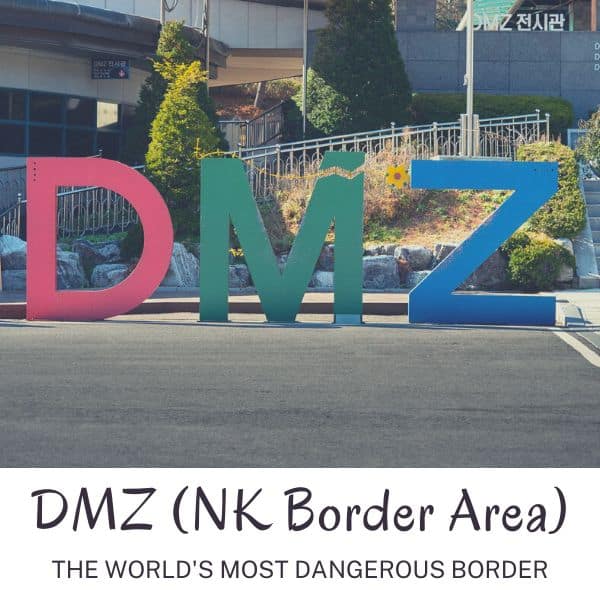
Why Visit The DMZ
The DMZ, the demilitarised zone between North & South Korea is a truly unique place to visit when you’re in Korea. There are several different locations to see in this area, each reflecting the bitter struggle between the two Korea’s in the ongoing Korean War. Some of the highlights are the 3rd Tunnel, Dora Observatory, Dorasan Station, Gamaksan Suspension Bridge, and the Imjingak Park. There’s also the Panmunjom Truce Village where you can walk into North Korea, but this is currently closed. Tours are required to travel to certain parts of the DMZ.
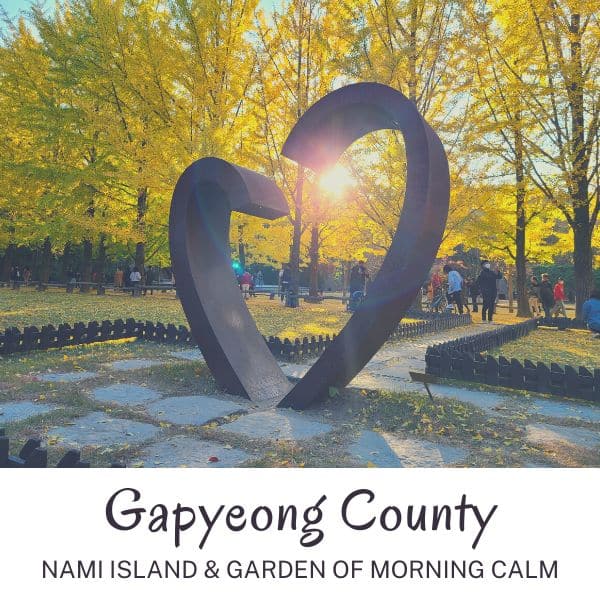
Why Visit Gapyeong County
Gapyeong County is home to Nami Island, the Garden of Morning Calm, Petite France, Gapyeong Rail Bike Park, and several other fun attractions. Nami Island and the Garden of Morning Calm are the most popular and can both be visited in a day. You can witness beautiful scenes at these destinations, especially during cherry blossom season (April) and autumn foliage season (October). Tours from Seoul to Gapyeong County are convenient and can take you to multiple places in one day without the hassle of buses and finding your own way.
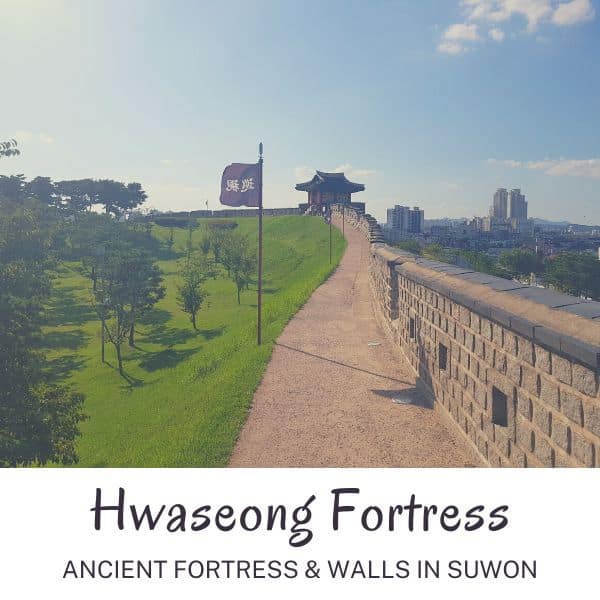
Why Visit Hwaseong Fortress
Hwaseong Fortress and its fortress walls offer a unique chance to see what life was like in Korea 200 years ago. Not only can you walk the full length of the walls around the city, you can also try archery and other traditional activities in the fortress grounds. There are many museums, fortress buildings, and exhibitions showing how people lived in this period. You can also enjoy the beautiful ponds and streams that run through the palace with traditional Korean restaurants and cafes looking out over these areas.
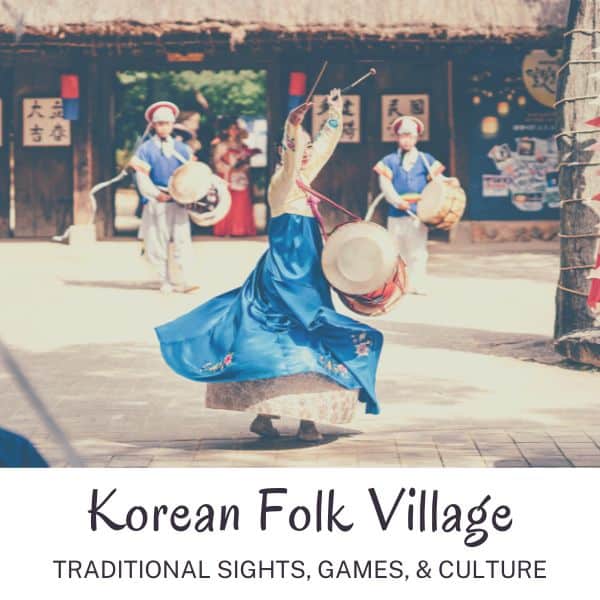
Why Visit Korean Folk Village
Discover traditional Korean life at the Korean Folk Village in Yongin during a day trip from Seoul. Walk through dozens of recreated farm buildings, government offices, academies, shops, smiths, schools, and other traditional buildings from Korea’s past to get a feel for how people lived at this time. Actors dressed in traditional Joseon-era costumes bring the scenes to life. You can try fun activities, such as mask carving, horse riding, and archery. Witness exciting festivals and cultural performances, too.

Why Visit Jeonju Hanok Village
A day trip to the Jeonju Hanok Village in Jeonju is a great way to experience various traditional Korean cultural activities in a beautiful setting. This sprawling hanok village has over 700 traditional buildings for you to explore, dine in, or even stay in. Make sure you rent hanbok in Jeonju so you look like Korean royalty and make memorable photos during your trip. Whilst you’re in Jeonju Hanok Village, you can try local delights such as Jeonju bibimbap and PNB chocopies. Also check out the traditional Nambu Market and Jeongdong Catholic Church.

Why Visit Alpaca World
When you travel to Korea, you may not think about seeing alpacas, which are from an entirely different continent. But Korea’s love of all things cute means that these furry friends have become very popular in Korea and have their own theme park a few hours from Seoul. There are dozens of cuddly alpacas to see, feed, and play with at Alpaca World , as well as hundreds of other cute critters such as ponies, rabbits, deer, goats, fennec foxes, and more. There are 17 separate areas to explore in Alpaca World and it’ll provide hours of fun for the whole family.
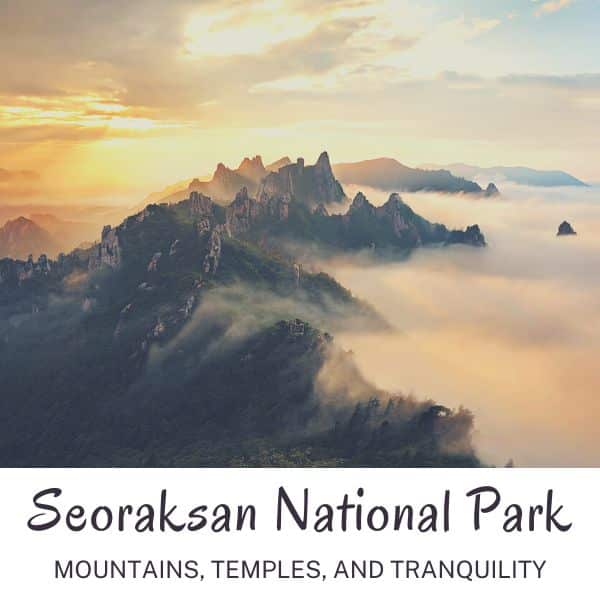
Why Visit Seoraksan
Seoraksan National Park on Korea’s east coast is a great day trip from Seoul for those who want to see mountain peaks, leafy valleys, stony rivers, and a gigantic Buddha. Even if you’re not a keen hiker, you can explore lots of the park’s valley pathways easily, or reach the top thanks to the convenient cable car. See the sights from the observatory and check out the small temple in the clouds. Make sure you try haemul pajeon (seafood pancake) and makgeolli (rice wine). It’s the traditional meal Koreans enjoy after hiking.
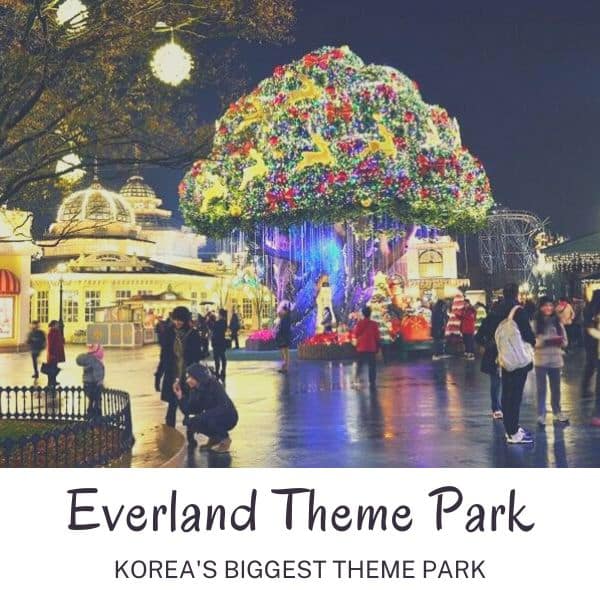
Why Visit Everland
Everland is Korea’s biggest theme park and is packed with attractions for everyone to enjoy. Thrill seekers will love the rollercoasters, such as T Express (the world’s 4th steepest rollercoaster) and many more exciting rides. Check out the Zootopia section to see wild animals and wild rides, or the Plantopia section for floral beauty, romantic walkways, and seasonal delights. There are plenty of attractions, cultural performances, entertainments, and seasonal events to keep you amused all day long.
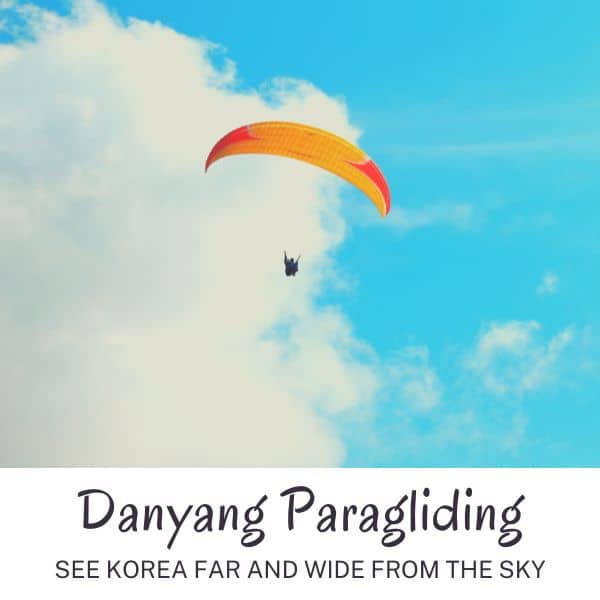
Why Visit Danyang
A great way to see Korea’s countryside is with a day trip to Danyang to enjoy the rush of sailing over valleys and beside mountains while tandem paragliding. Feel the wind in your face and the sensation of riding the air currents as you pass over the many delightful views of Danyang. You can enjoy other activities in this area, such as the Mancheonha Skywalk , a clifftop lookout with incredible views, riding an alpine coaster, and zooming along a zip line. The perfect day tour from Seoul for thrill seekers.
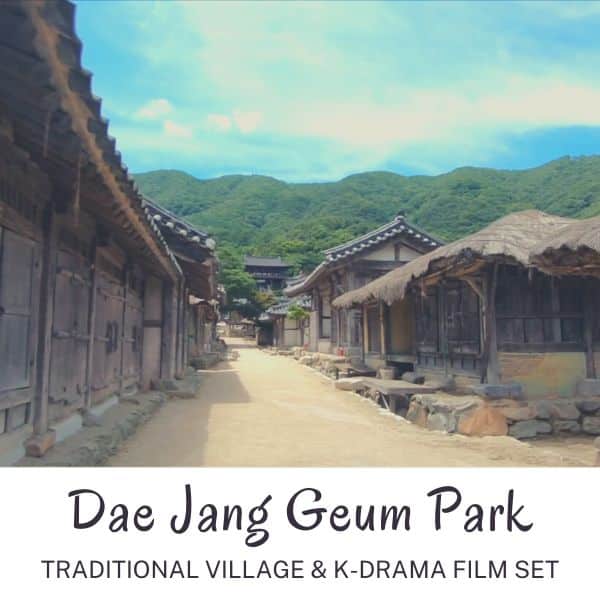
Why Visit Dae Jang Geum Park
Fans of Korean period dramas and movies will love a day trip to Dae Jang Geum Park in Yongin. This is the largest historical drama filming set in Korea and was used to film MBC productions such as ‘Wind in the Palace’ and ‘The Great Queen Seondeok’, as well as K-Pop videos including Daechwita by Suga from BTS. If you’re lucky, you may see filming going on here. But even if you don’t, it’s a fun place for those who want to learn more about Korea’s history and take some cool pictures in a real movie set.
I’ve linked to tours provided by reliable tour companies in Korea. If you would rather book a tour through a local guide, contact Jerry Heng or Andrew Chung Hanbyul . They’re freelance guides with years of experience offering tours in Korea and both offer amazing service.
These places are accessible by public transport, but may take much longer than a tour would do, wasting your precious time. Check out my guide for getting to Nami Island to help you navigate Gapyeong County. For other destinations, I would recommend a tour – it’s more practical.
Best Sights To See In Korea In 2024
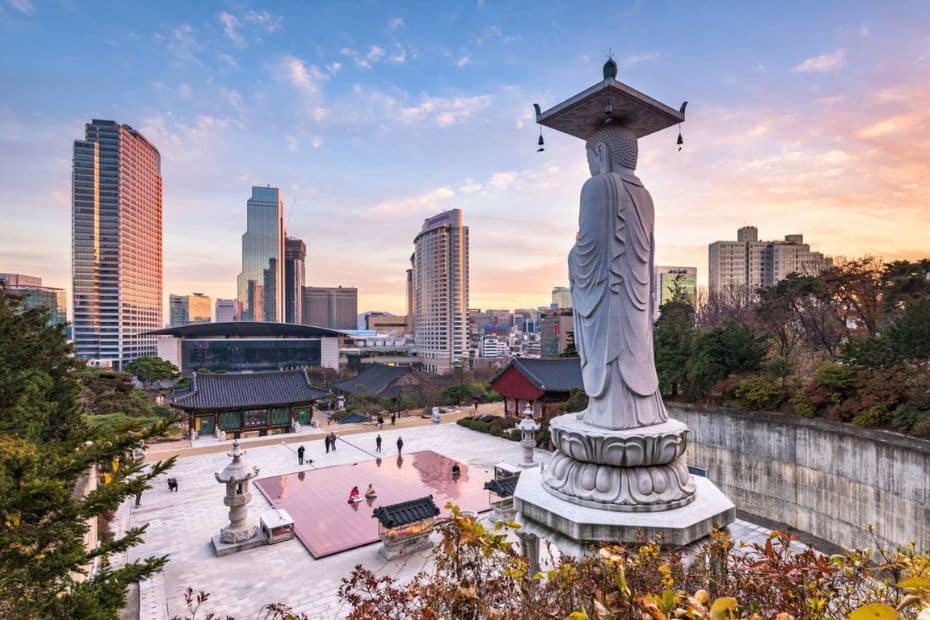
South Korea truly has something for everyone. There’s so much I want to include in this South Korea travel guide, which is why this section is full of different sights to see and explore. However, to keep things short and simple, I’ll just list them, not give full details about each one.
Whether you’re travelling to Korea to learn about Korean culture or history, to see Korea’s impressive landmarks, to enjoy family fun attractions, to hop from cafe to cafe, to immerse yourself in nature, or simply to eat and shop, then you’ll definitely find something for you in this section.
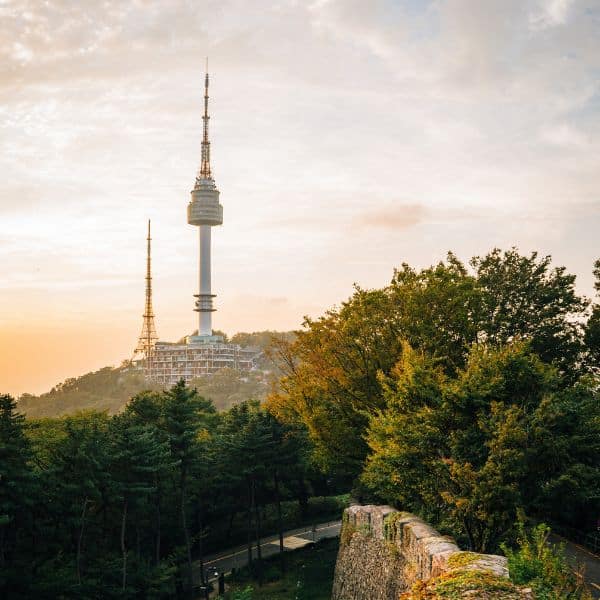
Famous Landmarks In Korea
Landmarks and iconic buildings are often top of a traveller’s bucket list for Korea as they provide great photo opportunities, showcase the best of the country, and offer fantastic views. Seoul has many top landmarks, but you can see plenty of other sights outside of the capital, too.
Here are 10 famous landmarks in Korea:
- Lotte World Tower (Seoul)
- N Seoul Tower (Seoul)
- Dongdaemun Design Plaza (Seoul)
- Cheonggyecheon Stream (Seoul)
- DMZ Area (near Seoul)
- Nami Island (Gapyeong County)
- Gamcheon Culture Village (Busan)
- Seongsan Ilchulbong (Jeju)
- Homigot Sunrise Square (Pohang)
- Banwol Purple Island (West Coast)
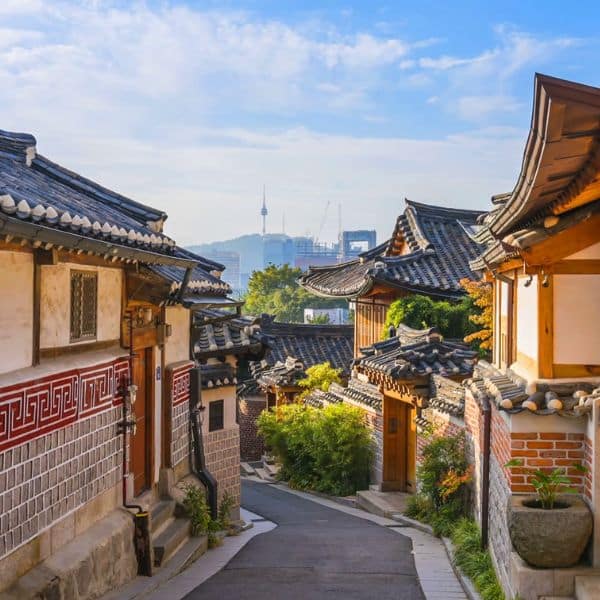
Historic Sights In Korea
Discover life in the Joseon period and before in Korea’s many captivating historic sights, including royal palaces, Buddhist temples, fortresses, and hanok villages. There are so many amazing historic sights to see in Korea, with each city having something to see.
Here are 10 historic sights in Korea:
- Bukchon Hanok Village (Seoul)
- Gyeongbokgung Palace (Seoul)
- The Secret Garden (Seoul)
- Seoul Fortress Walls (Seoul)
- Hwaseong Fortress (Suwon)
- Bulguksa Temple (Gyeongju)
- Gyeongju Historic Area (Gyeongju)
- Jeonju Hanok Village (Jeonju)
- Haedong Yonggungsa Temple (Busan)
- Andong Hahoe Village (Andong)
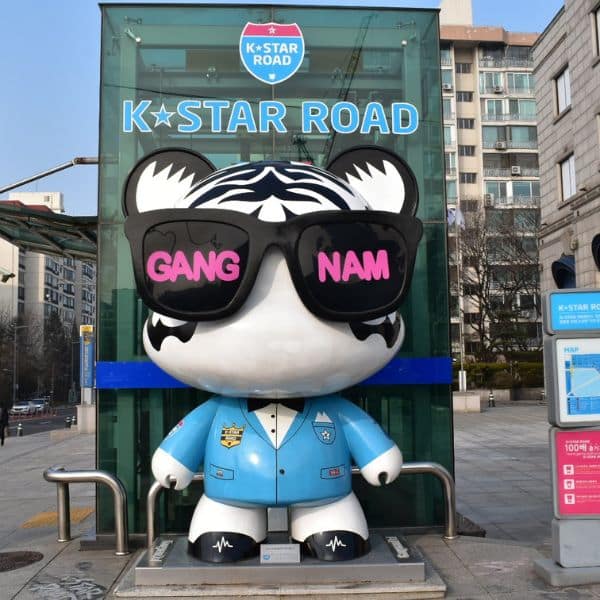
Korean Modern Cultural Sights
Fans of BTS, K-Dramas, Korean movies, and modern Korean culture in general have a lot to see and do in Korea. As well as famous filming locations across the country, these modern cultural sights will entertain, inform, and provide great destinations to visit.
Here are 10 modern cultural sights in Korea:
- Hallyu K Star Road (Seoul)
- K-Style Hub (Seoul)
- Hongik Uni. Station Area (Seoul)
- COEX Artium (Seoul)
- Asia Culture Centre (Gwangju)
- BIFF Square (Busan)
- Dae Jang Geum Park (Yongin)
- Sunshine Studio (Nonsan)
- Kim Gwang-Seok Street (Daegu)
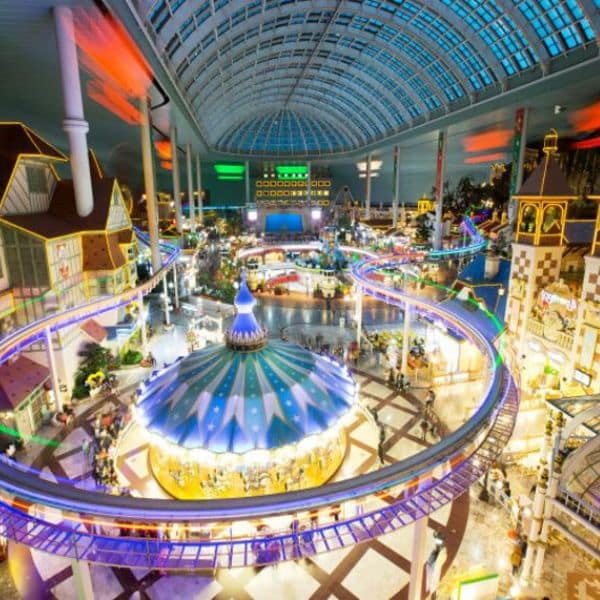
Family Fun Attractions In Korea
Families travelling to Korea have plenty of things to see and do and ways to enjoy spending time together. There’s no Disneyworld or Universal Studios in Korea, but there are plenty of great alternatives, as well as places for children to explore, learn, and discover.
Here are 10 family fun attractions in Korea:
- Lotte World Adventure (Seoul)
- Everland Theme Park (Yongin)
- Seoul Grand Park & Zoo (Seoul)
- Alive Museum & Dynamic Maze (Seoul)
- Seoul Children’s Museum (Seoul)
- Zoolung Zoolung (Seoul)
- Sea Life Busan Aquarium (Busan)
- Jeju Dinosaur Island (Jeju Island)
- Alpaca World (Gangwon Province)
- Skyline Luge & Lotte World (Busan)

Korean Museums & Galleries
Travellers to Korea who want to learn about Korea’s history, culture, and art will love Korea’s impressive museums and galleries. These are great places to visit when the weather is bad and you might be surprised at how much there is to learn about Korea’s past.
Here are 10 museums & galleries in Korea:
- National Museum of Korea (Seoul)
- War Memorial of Korea (Seoul)
- Seoul Museum of Art (Seoul)
- Seoul Museum of History (Seoul)
- Seodaemun Prison Museum (Seoul)
- Museum Kimchikan (Seoul)
- National Folk Museum of Korea (Seoul)
- Gyeongju National Museum (Gyeongju)
- National Maritime Museum (Busan)
- Daegu Art Museum (Daegu)
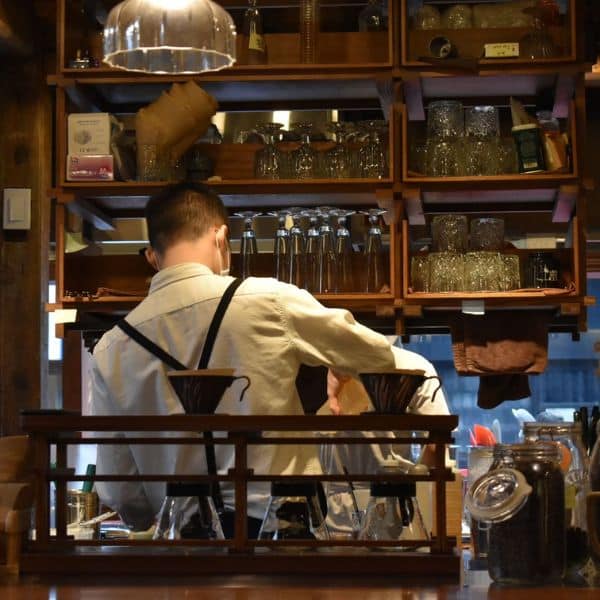
Cafe Areas In Korea
When you need a break from travelling in Korea, visit one of these cosy cafe areas and take time to relax and recharge. Although Korea was traditionally a tea drinking country, cafes are now everywhere and you’ll find photogenic cafes everywhere these days.
Here are 10 cafe areas to visit in Korea:
- Ikseondong Hanok Village (Seoul)
- Gyeongui Line Parks (Seoul)
- Samcheondong Cafe Street (Seoul)
- Sinsa-dong / Garosugil Road (Seoul)
- Jukjeon Cafe Street (Seoul)
- Jeonpo Cafe Street (Busan)
- Haeridangil (Busan)
- Hwangnidangil (Gyeongju)
- Hwaseong Haenggung Area (Suwon)
- Gangneung Coffee Street (Gangneung)
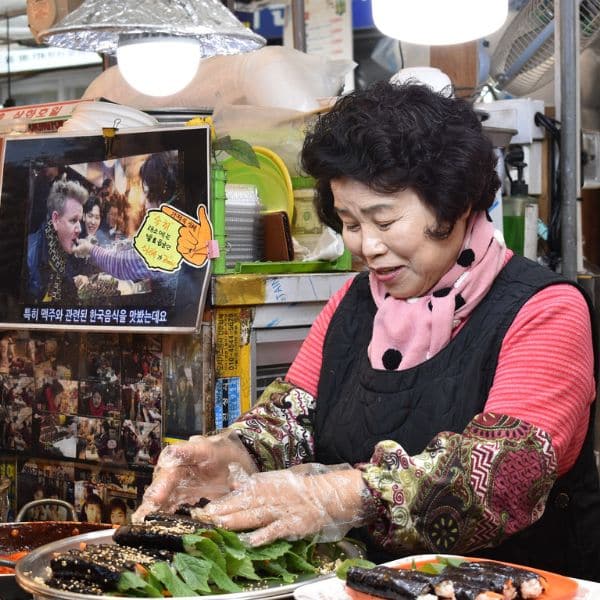
Korean Markets & Malls
If you want the best selection of street food, souvenirs, and bargain shopping options, be sure to visit Korea’s many traditional markets. It’s a cultural experience itself. Korea also has some of the world’s largest malls with a wide variety of Korean and international goods.
Here are 10 markets & malls in Korea:
- Gwangjang Market (Seoul)
- Dongaemun Market (Seoul)
- Hongdae Shopping Street (Seoul)
- Starfield COEX Mall (Seoul)
- Jagalchi Fish Market (Busan)
- Seomyeon Underground Mall (Busan)
- Centum City Mall (Busan)
- Seogwipo Maeil Olle Market (Jeju)
- Nambu Market (Jeonju)
- Paju Premium Outlets (Paju)

Korean Natural Wonders
Korea is a country covered in mountains, waterfalls, valleys, rice terraces, and beautiful natural sights. Make time to visit some of these natural wonders when you visit Korea and you’ll be amazed at the incredible views you can find. The national parks are truly breathtaking.
Here are 10 natural wonders to see in Korea:
- Hallasan Mountain (Jeju)
- Jirisan National Park (Southern Korea)
- Seoraksan National Park (Gyeonggi)
- Garden of Morning Calm (Gapyeong)
- Juknokwon Bamboo Forest (Damyang)
- Boseong Green Tea Fields (Boseong)
- Udo Island (Jeju Island)
- Seongsan Ilchulbong Sunrise Peak (Jeju)
- Hyeopjae Beach (Jeju)
- Suncheon Bay National Park (Suncheon)
These 100 ideas are just the tip of the iceberg for what you can enjoy when travelling to Korea. There’s so much more to discover and I recommend you add some time to your travel plans to explore without a plan. Sometimes the best travel memories come from unexpected discoveries.
Best Activities To Try In Korea In 2024
Often the most memorable moments when travelling come from the experiences we have, not just the places we visit. Visiting a palace is interesting, but visiting a palace while dressed in traditional Korean hanbok , pretending you’re Joseon-era royalty with your friends or family is much more fun.
This section of the South Korea travel guide offers 10 fun activities you can try when you visit Korea. These will give you a good introduction to Korean culture, food, history, and nature. If you want more ideas, check out my list of 50 unique Korean experiences you can only do in Korea.
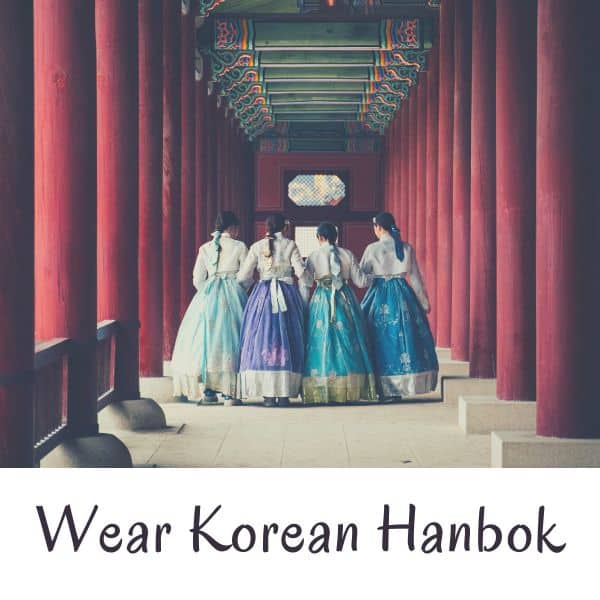
One of the top experiences to try in Korea has to be wearing Korean hanbok. It is available for all members of the family (even pets) and you can rent hanbok near most palaces or hanok villages. The hanbok easily fit over your regular clothes and come in a variety of colourful or traditional designs. You can get hair styling, accessories, and even have a hanbok photoshoot . Rentals can be as short as one hour or up to a full day.
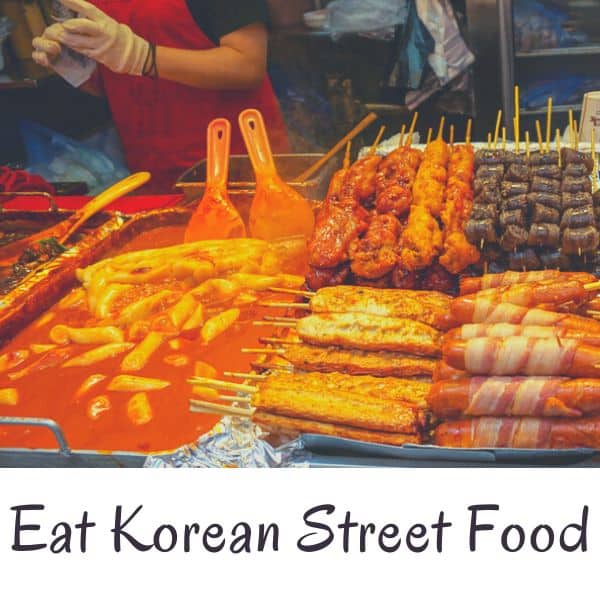
Travellers to Korea can’t say they’ve truly tried Korean cuisine until they’ve eaten Korean street food from a market stall or street vendor. There are many types of Korean street food to sample in Korea, such as savoury snacks like tteokbokki and eomuk , to sweet treats like hotteok and bungeo-ppang . Korean street food is cheap and delicious. It’s usually not that healthy, but always leaves you feeling great. Give it a try.
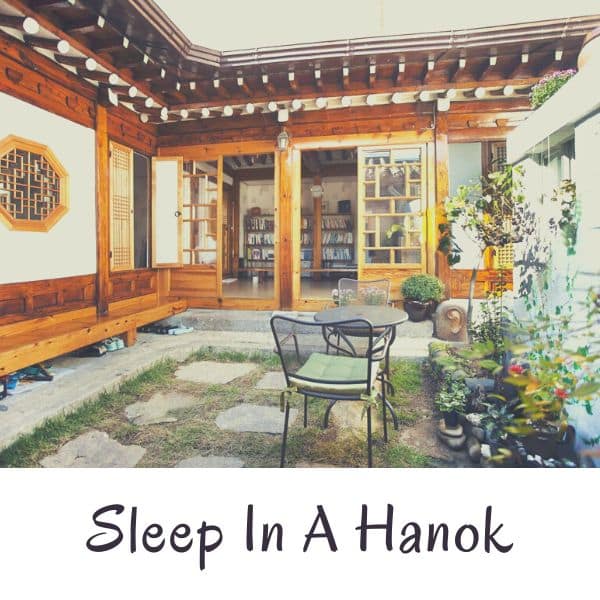
Experience life as a Korean would have in the Joseon-era with a night in a traditional hanok house. A hanok stay is very different from sleeping in a hotel and allows you to try a night on a futon (with underground heating keeping you warm in winter). Slide the doors aside in the morning and walk out onto the wooden decking to enjoy traditional Korean tea at a low table and the sight of the ornately decorated garden. Don’t forget to take your shoes off before you enter.
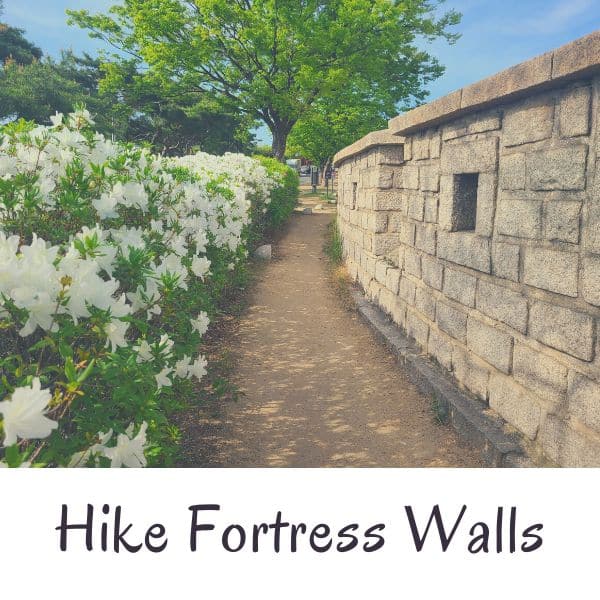
Seoul and other cities in Korea still have fortress walls you can walk or hike along that will offer incredible views of cities and mountains. As you walk along the fortress walls, you begin to imagine what life would have been like as a soldier keeping the city safe from invaders. Nowadays, you can enjoy exercise and sightseeing at the same time. Seoul’s fortress walls are a good place to start, but you can find fortress walls in many other places.
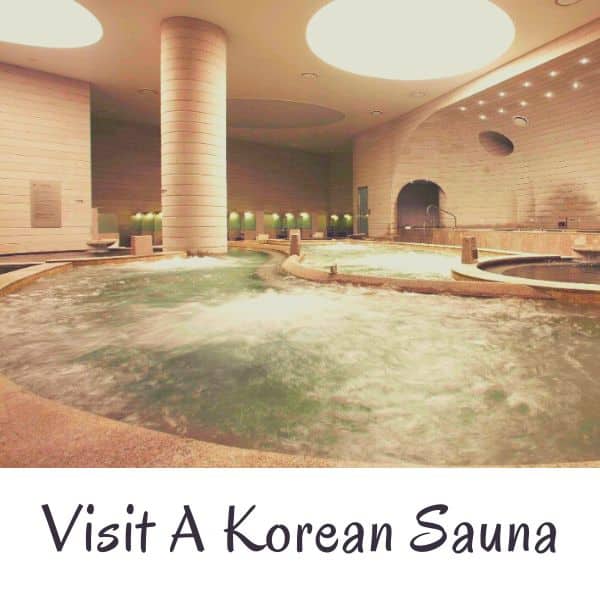
Visiting a Korean sauna might be a bit shocking for first-time travellers to Korea, but it’s a great way to relax and is especially good in winter. When you enter a Korean sauna, you should take off all your clothes, have a shower, and then enter one of the hot baths. Being naked in front of others can be scary for some, but you soon overcome that fear. Korean saunas sometimes have a communal resting area called a jjimjjilbang . These areas require pyjamas and offer snacks, drinks, and places to rest.
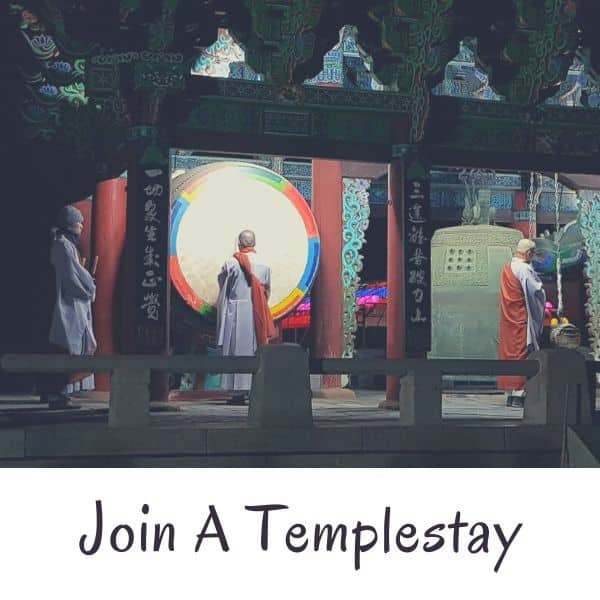
The Cultural Corps of Korean Buddhism have set up a templestay program at dozens of temples across Korea where you spend a day or two at the temple and join in various activities. This is truly a unique experience that you should try in Korea as you get to see customs performed by the monks that aren’t normally shown to the public. You also get to stay overnight at the temple and experience a hanok stay at the same time. Guests can also eat healthy vegan temple food, learn a lot, and chat with the monks.
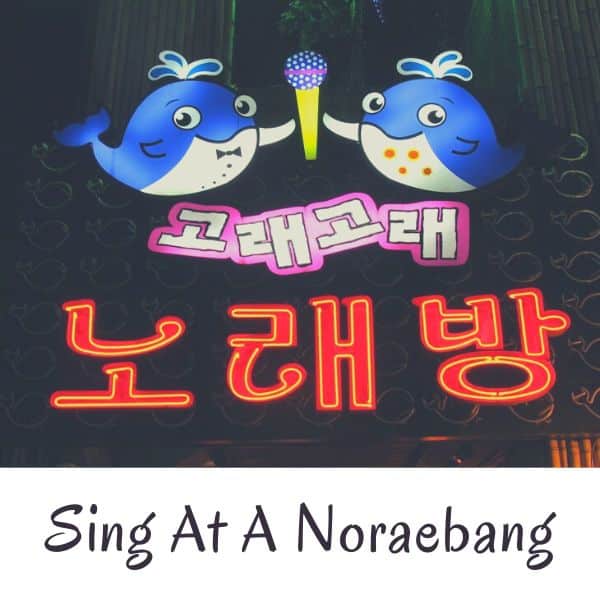
A noraebang is the Korean version of a karaoke room, but is more popular in Korea and is commonly visited by locals and tourists alike. This is a great place to visit in the evening after a big Korean bbq meal and a few drinks. Everyone can relax and belt out their favourite Korean or international tunes together (or alone), shake some tambourines in support, or just watch and enjoy the atmosphere with some drinks. You can find these in every town and city in Korea and they provide a cheap night of fun and drinks.
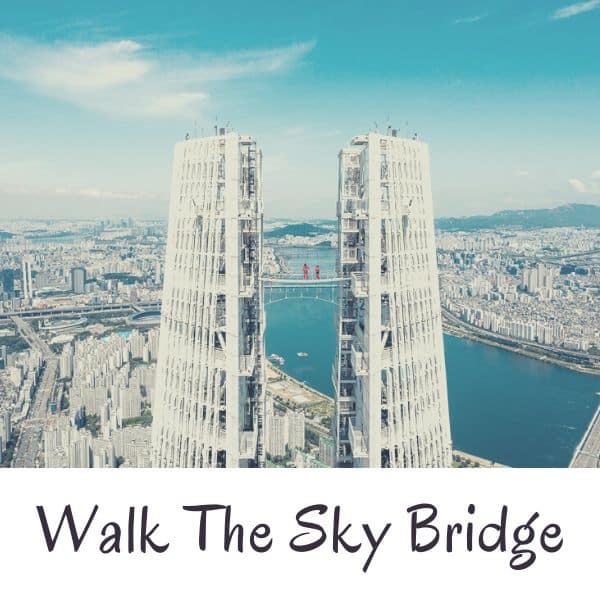
Open since 2020, the Sky Bridge at Lotte World Tower offers unbeatable views of Seoul and a nerve-racking trip above the city. Walk between the two towers at the top of the Lotte World Tower and peer down the 541 metre drop to the city streets below. It’s actually very safe and you’re strapped into a harness as you walk from one side to the other, but this definitely isn’t for the faint-hearted. If you’re not sure you can handle the height, check out the Seoul Sky Observatory on the 117th floor instead.

Koreans love to drink coffee and also love cute, unusual things, which is probably why theme cafes have become so popular in Korea. Besides the many cat cafes, there are theme cafes where you can stroke sheep, pet dogs, and see other animals. There’s more to Korea’s theme cafes than just drinking coffee with animals, you can also try drinking from a toilet at the Poop Cafe , paint pictures, build lego, go camping, practice being a wizard, and more. Hongdae in Seoul is the best place to find theme cafes.

Although cafes are replacing Korean tea houses, Korea still grows and drinks lots of tea, especially green tea. You can visit these tea fields in areas such as Boseong and on Jeju Island, both of which have visitor centres and attractions to teach you about the wonderful world of Korean tea. The Daehan Dawon Tea Plantation in Boseong has lush green fields all year round and has been used as a filming location for several Korean shows. The O’sulloc Tea Museum on Jeju Island also has lovely views.
I recommend trying at least a few of these unique activities, they’ll really make your trip to Korea more memorable and offer insights into Korean culture and life. My advice is to be brave when visiting Korea and try new things, even if they seem a bit unusual at first. The same applies to Korean foods.
Best Korean Festivals To Join In 2024
There are dozens of festivals held in Korea each year celebrating the seasons, local products, traditions, culture, and often just for the sake of having fun. Visiting a festival in Korea will offer you a glimpse of how locals celebrate life, culture, and nature and let you join in the fun.
Whenever you visit Korea, there’ll be festivals going on. However, the biggest festivals occur in spring or autumn. As mentioned previously in this South Korea travel guide, these are the best seasons to visit Korea as the weather is pleasant and people are celebrating the end of summer or winter.
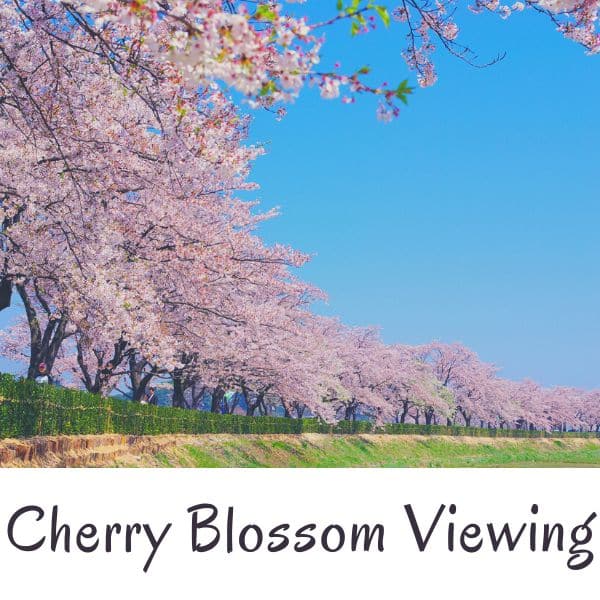
Cherry Blossom Festivals
The cherry blossom festivals in Korea occur in late March and early April and are some of the biggest festivals in Korea. People flock to forests, lakes, and rivers to see the pretty blossoms. The Jinhae Cherry Blossom Festival has over 2 million visitors each year, and even more people visit Seokchon Lake and Yeouido Hangang Park in Seoul. There are many festivals and tours to see cherry blossoms in Korea so you should be able to find a quiet place to enjoy the view.
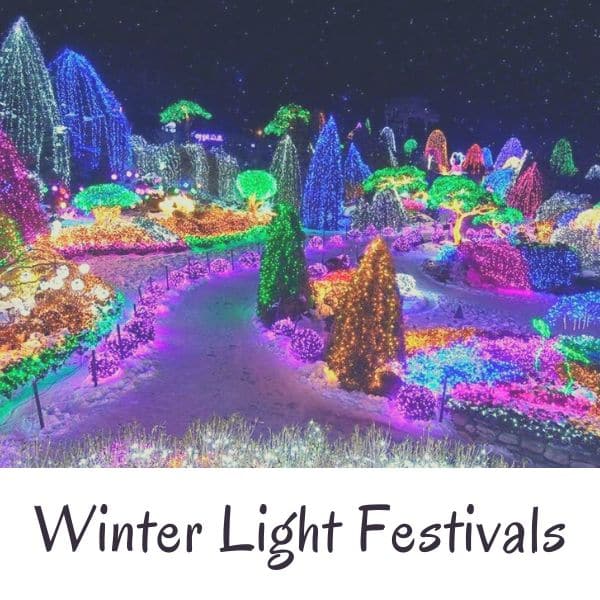
Winter Light Festivals
During the cold, dark days of winter, attractions such as Nami Island, the Garden of Morning Calm, and Herb Island transform into sparkling winter wonderlands with millions of bright lights illuminating them. There are also winter illumination festivals in Korean cities, such as the Haeundae Lighting Festival in Busan, Cheonggyecheon Stream Winter Lights in Seoul, and the Busan Christmas Tree Cultural Festival. When it snows in Korea, these festivals look even more magical.
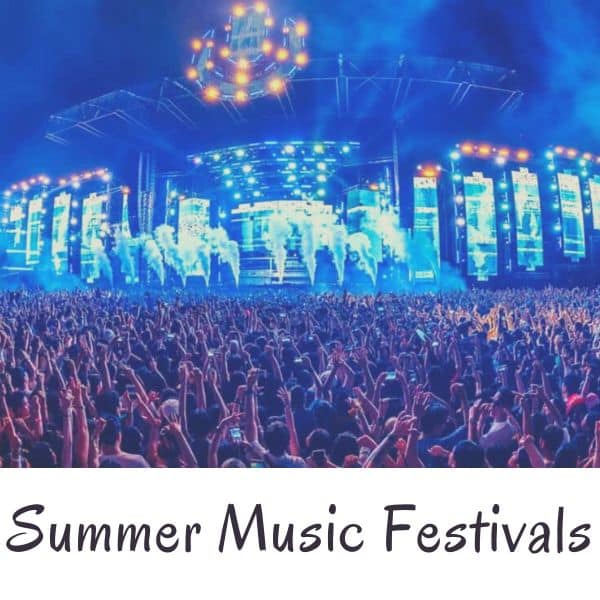
Summer Music Festivals
Summer in Korea is hot, but that doesn’t stop people enjoying day-long music festivals across the country. From chilled jazz festivals like the Seoul Jazz Festival , to action-packed concerts like Psy’s Summer Swag , there are music festivals to suit everyone. This is a popular summer activity in Korea , so be sure to book in advance for ticketed events. If you can’t get tickets, just go to a popular beach in the evening and you’ll usually find musicians performing.
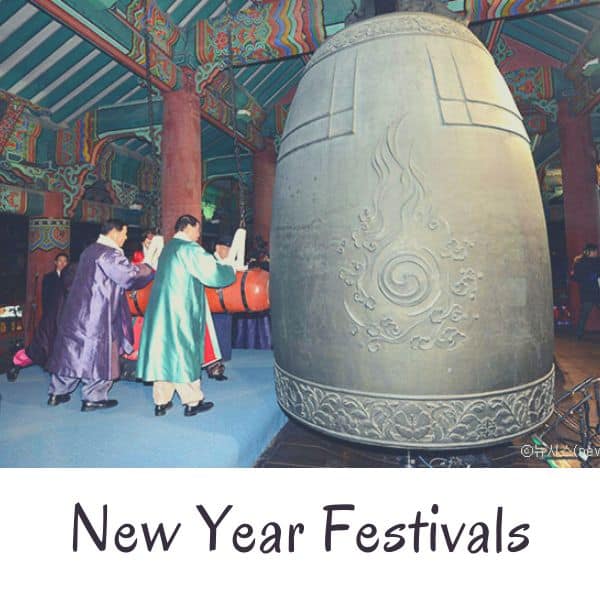
New Year Festivals
There are various festivals in Korea to celebrate the solar new year. New Year’s Eve festivals involve a bell-ringing ceremony where a giant bell is rung at midnight to welcome in the new year. Fireworks festivals are common events in cities across Korea, starting at midnight, too. Koreans celebrate the start of the new year by visiting the East Coast to see the first sunrise of the year at places like Homigot Sunrise Square or Seongsan Ilchulbong on Jeju Island.
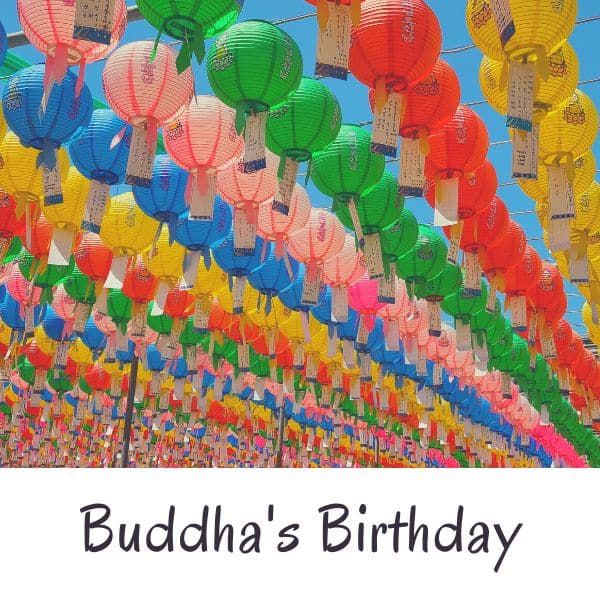
Buddha’s Birthday Festivals
Buddha’s Birthday is like Christmas for the Buddhist world, but celebrated very differently. It also falls on changing dates each year as it follows the lunar calendar, just like Korean New Year. Korean Buddhist temples across Korea will celebrate by putting up colourful lanterns and decorations for at least a month before the actual date. The biggest festival celebrating Buddha’s Birthday is the Yeon Deung Hoe Lantern Festival , which features thousands of lanterns and a lantern parade through central Seoul.
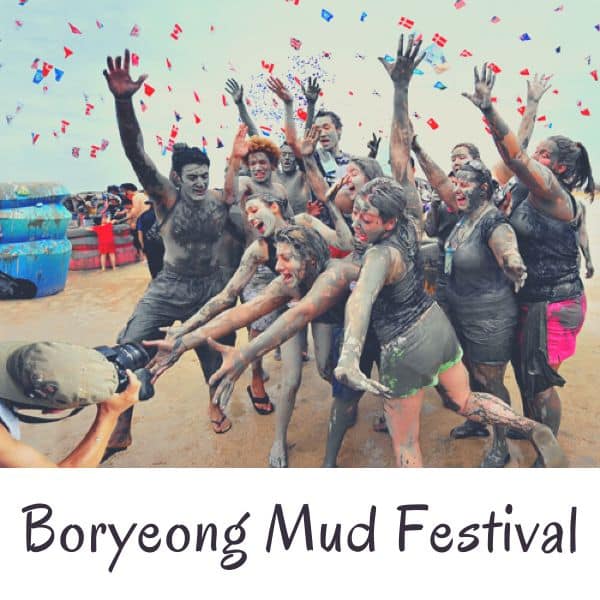
Boryeong Mud Festival
The Boryeong Mud Festival is one of Korea’s largest festivals and attracts visitors from around the world. Running for 2 weeks during rainy season, this is the best way to see a Korean festival even when the weather is bad. There’s a lot to see and do at this festival, including getting dirty in the mud with mud sports, mud wrestling, mud tug-of-war, and other mud-filled events. Boryeong is famous for the high-quality mud found in nearby waters and, by joining this festival, you’re getting a free mud facial.
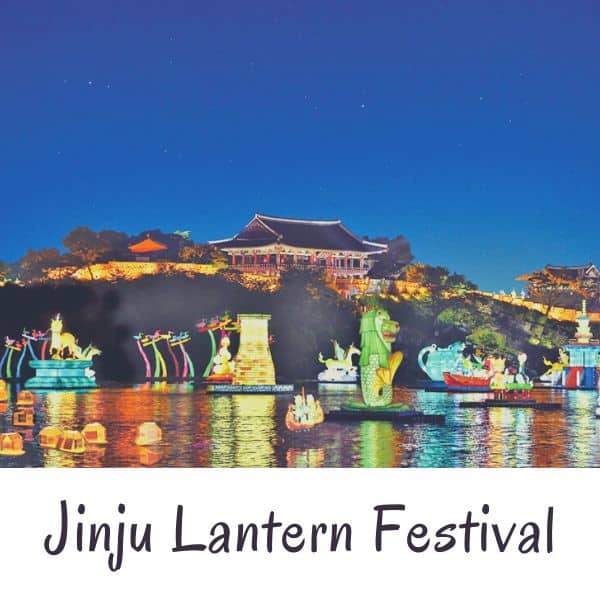
Jinju Lantern Festival
The visually stunning Jinju Lantern Festival is held in October each year in Jinju City and runs for several weeks. During the day, watch cultural performances and enjoy exploring the central fortress grounds of Jinju. Once it gets dark, see the city transform as thousands of lanterns, some as big as trees, come to life. There are so many weird and wonderful lanterns to discover at this festival. You can also set your own lanterns to float down the river with your wish inside.

Andong Mask Dance Festival
The Andong Mask Dance Festival in Andong, home of the Andong Hahoe Village, is a great opportunity to witness traditional Korean dance and music performances. Not only can you see traditional Korean performances during this 4 day festival, there are also international performers displaying their own culture’s dancing. Get hands-on with traditional Korean culture at this festival. Explore Andong and learn about its contributions to Korea’s cultural development.
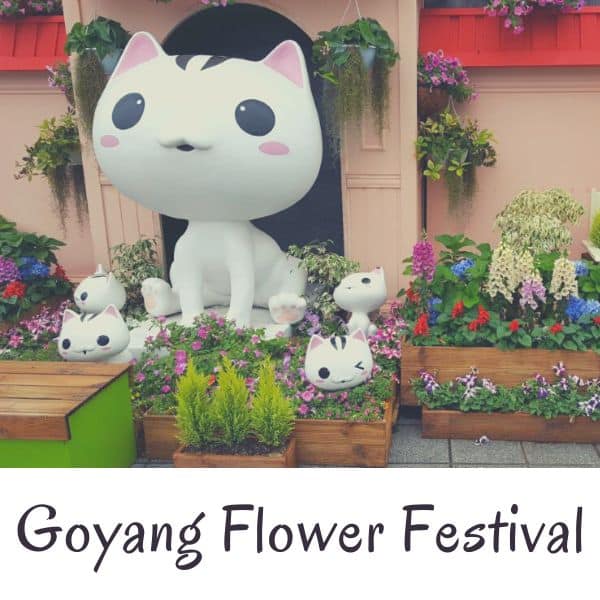
Goyang Flower Festival
The Goyang International Flower Festival runs twice per year, once in spring and once in autumn. It’s a beautiful celebration of floral beauty mixed with Korean cuteness and creativity. At this flower festival you can stroll through a maze of different displays, with each section focusing on certain flowers and plants. There are indoor displays with vividly coloured roses, nature-based outdoor photo zones, and the lovely Ilsan Lake Park in the background.
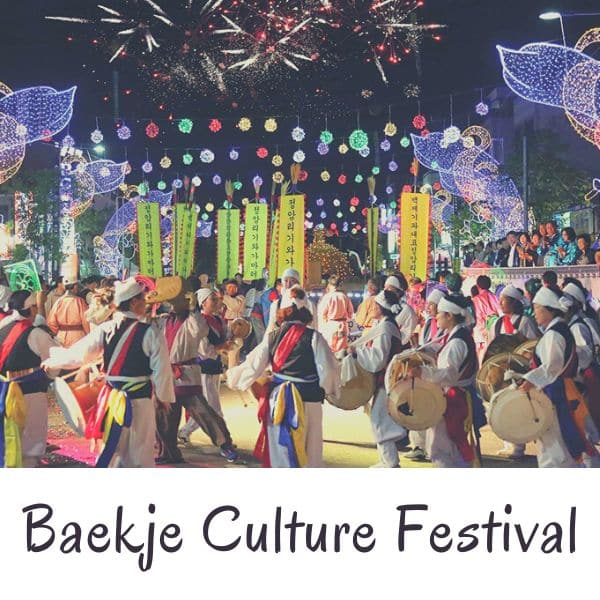
Baekje Culture Festival
The Baekje Culture Festival probably isn’t one that first-time travellers to Korea would know about. Held in Gongju and Buyeo, the two former capitals of the ancient Baekje Kingdom, this 10-day long festival held around Chuseok (Korean mid-autumn harvest festival), is packed with unique events and sights and is set in historic locations in each city. There’s local food to try, musical & cultural performances, fun photo zones, lantern displays, and much more.
Knowing when you plan to visit Korea will help you research what festivals are on and what the weather will be like. There are certainly a lot more than just the ones mentioned above, including some others mentioned previously in the seasons part of this South Korea travel guide.
I recommend using a tour company to see out of the way festivals like the Jinju Lantern Festival and the Jinhae Cherry Blossom Festival. These are often far from typical tourist destinations and can take hours to get to by public transport. Tours are worth the cost to save you time and avoid hassle.
Recommended Itinerary For Korea In 2024
In this section of this South Korea travel guide is my recommended first-timer itinerary for South Korea. This introduces you to two of Korea’s biggest cities, as well as a couple of day trips to highly rated destinations in Korea. There’s a mix of history, culture, nature, sights, and experiences.
This itinerary starts in Seoul as that’s where most people arrive to Korea after flying into Incheon Airport. If you arrive in Busan, you can change the route to start and end there instead. For travellers to Korea with only 2 or 3 days, I recommend using the first few days of this itinerary instead.
The itinerary lasts for one week, which isn’t enough time to see all of Korea, but enough time to get a feel for the country. If you have more time, use this itinerary and add in or replace extra destinations as you like. Jeju Island is certainly worth visiting if you have an extra 2 or 3 days.
Classic Sights Of Korea Itinerary
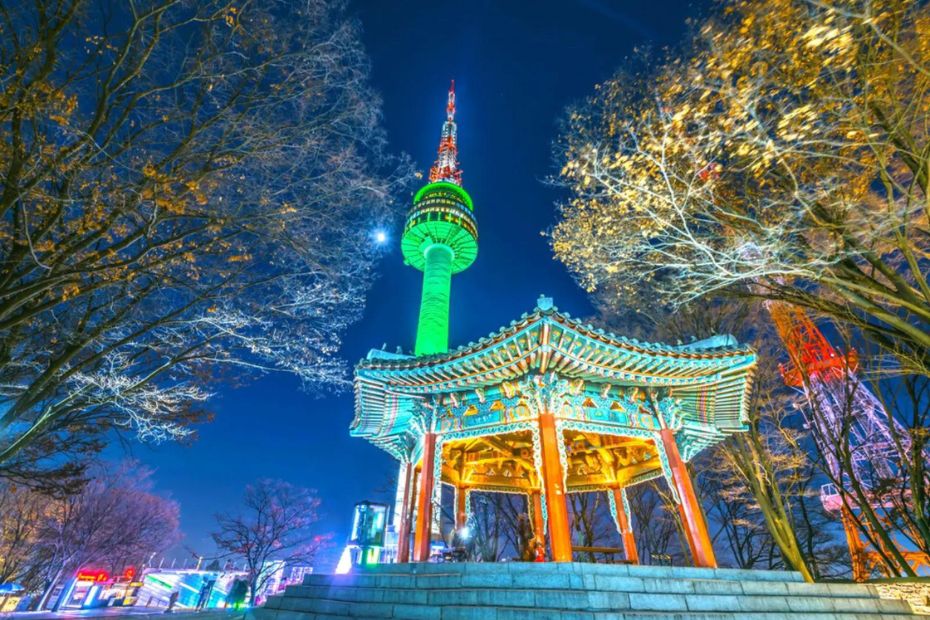
This itinerary covers a few must-see sights in Korea, including the two largest cities, the history city of Gyeongju, and some popular day trip destinations from Seoul.
Day 1 : Arrive in Seoul and explore Gyeongbokgung Palace, Bukchon Hanok Village, Insadong Art Street, Jogyesa Temple, and Cheonggyecheon Stream. Get dinner at the Jonggak Avenue of Youth for authentic Korean food that’s better than the touristy places in Myeongdong.
Day 2 : Learn about Korean history at the War Memorial of Korea or National Museum of Korea, explore Seoul’s traditional Gwangjang market in Dongdaemun, take the cable car to the N Seoul Tower for sunset & night views, then head down to Itaewon or Myeongdong for dinner & drinks.
Day 3 : Take a day trip to Gapyeong and visit Nami Island, the Garden of Morning Calm, and the Gapyeong Rail Bike Park. Return to Seoul for dinner and rooftop drinks in Myeongdong and then walk along the fortress walls from Dongdaemun Station if the weather is good.
Day 4 : Take the KTX to Busan, drop your bags, and take the subway to Nampo-dong for Jagalchi Fish Market, Bosu-dong Book Alley, and traditional sights. Take a taxi to Huinnyeoul Culture Village. End the day in Haeundae for evening dinner & drinks and a walk along the beach at night.
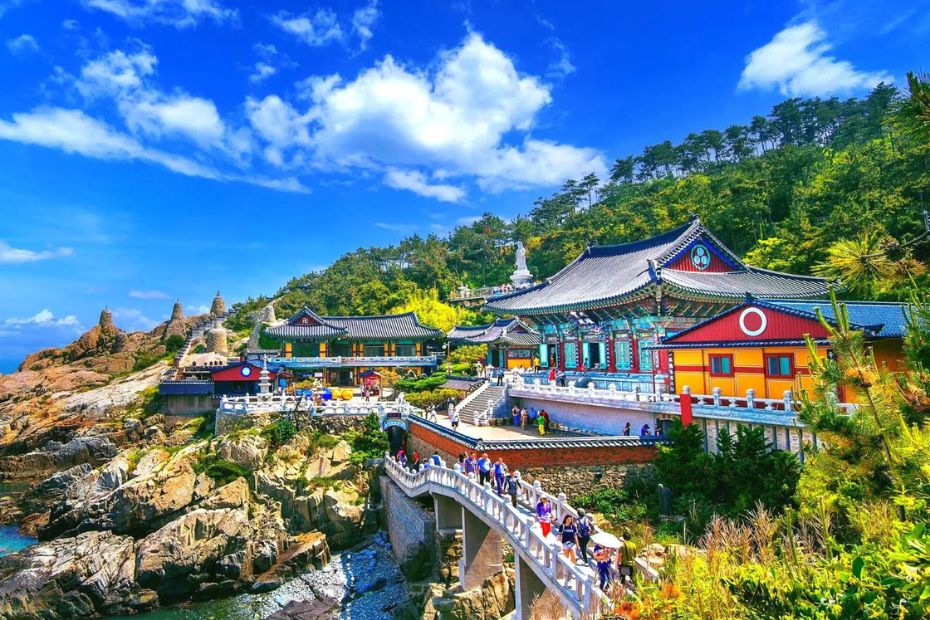
Day 5 : Take the bus to Haedong Yonggungsa Temple, then a taxi to Songjeong Beach. Relax in a beachside cafe, then take the Haeundae Beach Train to Cheongsapo, change to the Sky Capsule, and end up in Haeundae. Take a bus to Gamcheon Culture Village and get dinner at Songdo Beach.
Day 6 : Take a day trip from Busan to the UNESCO World Heritage City of Gyeongju. Visit the Gyeongju Historic Area, then Gyeongju Gyochon Traditional Village for traditional food and sights of Woljeonggyo Bridge. See tranquil night views of Wolji Pond before getting dinner at Hwangnidangil.
Day 7 : Head back to Seoul on the KTX for a final day of shopping and sightseeing in Hongdae. Walk along the Gyeongui Line Forest Park or Book Street or visit a theme cafe. Take the subway directly to Incheon Airport from Hongdae or spend a night here and check out the lively night scene.
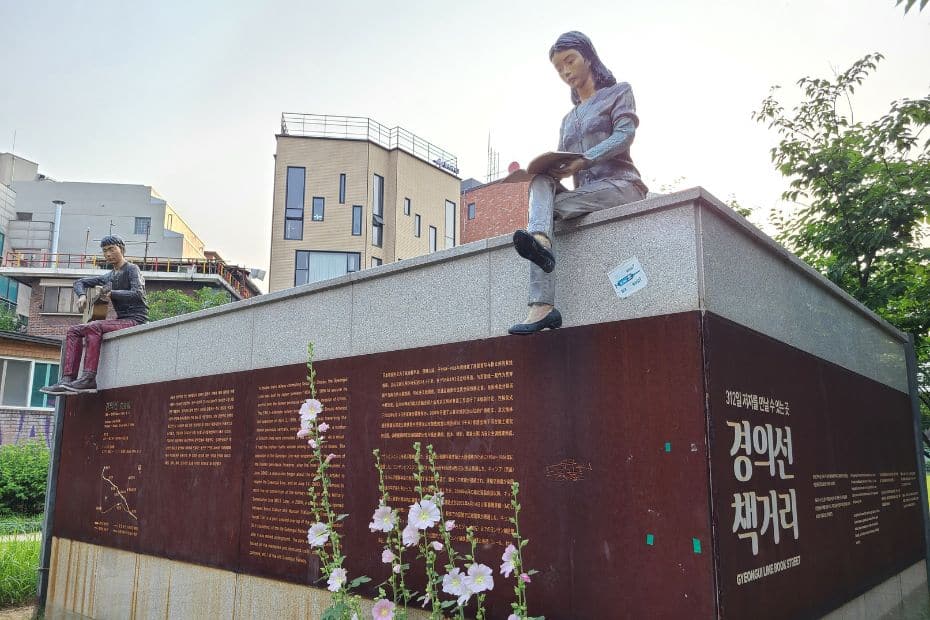
Please note : I recommend trying not to cram too much into your itinerary. You may want to see as much as possible, but people often end up rushing past sights and not appreciating them. Plan for less and see more if you have time. It gives you a chance to be spontaneous.
To plan a realistic itinerary for South Korea, it is important to factor in transportation, meal breaks, and rest times. Use Naver Maps to plan your route and work out travel times. A short journey on the map might take much longer if there’s no direct route. Also consider breaks if you plan to walk a lot.
Cultural Issues When Visiting Korea
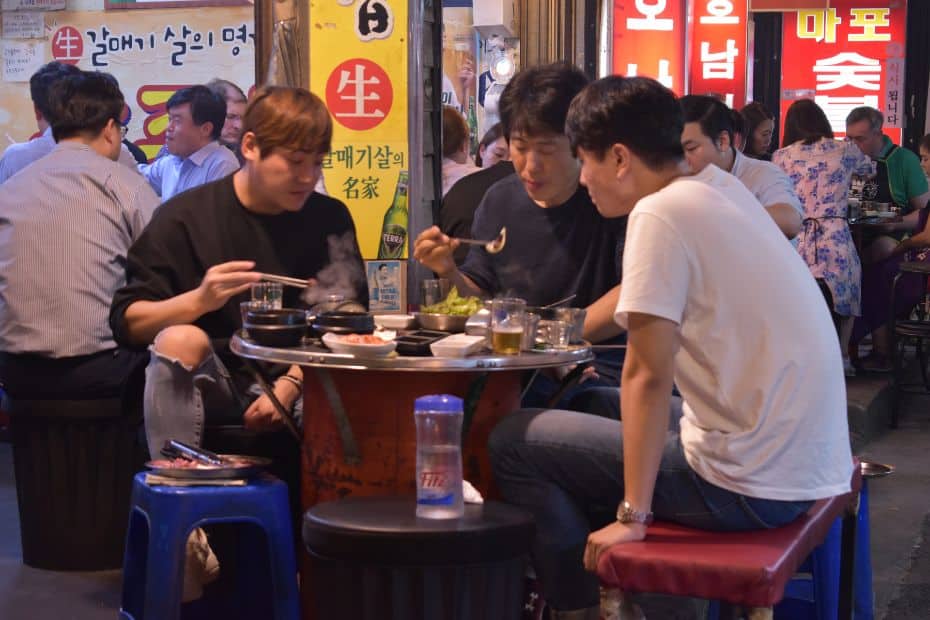
The next few sections of this South Korea travel guide will provide answers to some of the most common questions first-time travellers to Korea have in regards to cultural, language, and safety issues. Korea is a culturally unique country with customs and traditions you might not be aware of.
Korea is a society that places a strong emphasis on social image, respect for others, and social harmony. This means Koreans will often try to avoid conflict, especially in public. To show respect for Korean culture and to avoid being rude, try to respect social harmony and always avoid conflict.
If you follow these tips, you’ll find it easier to avoid accidentally upsetting someone in Korea. There’s far too much to cover in this South Korea travel guide, so if you’d like to know more, check out my detailed guide to Korean etiquette and culture , it’s packed with tips and insights to understand Korea.
What is considered rude in Korea? It is considered rude to point with one finger or with chopsticks, give and receive with one hand, cross your legs when sitting, and to walk inside with your shoes on. Things considered rude in other countries such as swearing and spitting are also rude in Korea.
What is considered unlucky in Korea? It is considered unlucky to write someone’s name in red ink and to stand chopsticks upright in rice. Both are used in rituals for deceased people. The number 4 is also unlucky as the word is the same as the word for ‘death’.
Do you need to tip in Korea? It’s not necessary to tip in Korea and most restaurants and cafes won’t expect or allow you to tip. There is no service charge added to bills in Korea, with the exception of some upmarket restaurants, bars, and hotels in touristy areas of Seoul. Tipping guides is okay.
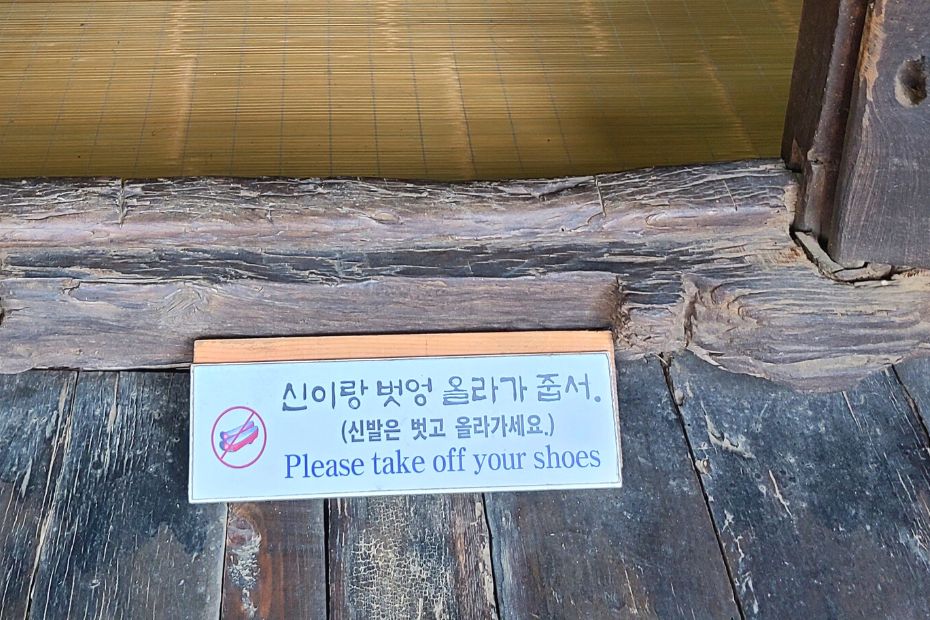
Do you need to take off shoes when going inside? If you enter someone’s house in Korea, you should take off your shoes. This rule also applies to temples, traditional restaurants, and other places in traditional buildings. Most cafes, shops, and restaurants won’t ask you to take off your shoes.
When should you use two hands in Korea? You should use two hands when giving and receiving things in Korea, such as money, a gift, a business card, or food. When you shake hands, use both hands, not just one. The same applies to pouring drinks, both pouring and holding a glass.
Do I have to act like a Korean in Korea? You don’t have to follow Korean customs and traditions when you visit Korea. You are a guest in the country and Koreans won’t expect you to know every rule. However, showing cultural awareness in Korea will help you make friends and impress locals.
The best tip for being culturally sensitive in Korea is to first consider all the things that you’d consider rude in your own country – spitting, swearing, shouting, physical violence, etc. Show the same acts of kindness you’d show at home – help others, give up your seat for those in need, be polite, etc.
Furthermore, remember that social harmony is really important in Korea and try not to cause a scene. Keep your voice down in public, don’t talk or act aggressively, be polite, and don’t force things when people are reluctant. Koreans may feel obliged to do things, even when they don’t want to.
Language Issues When Travelling Korea
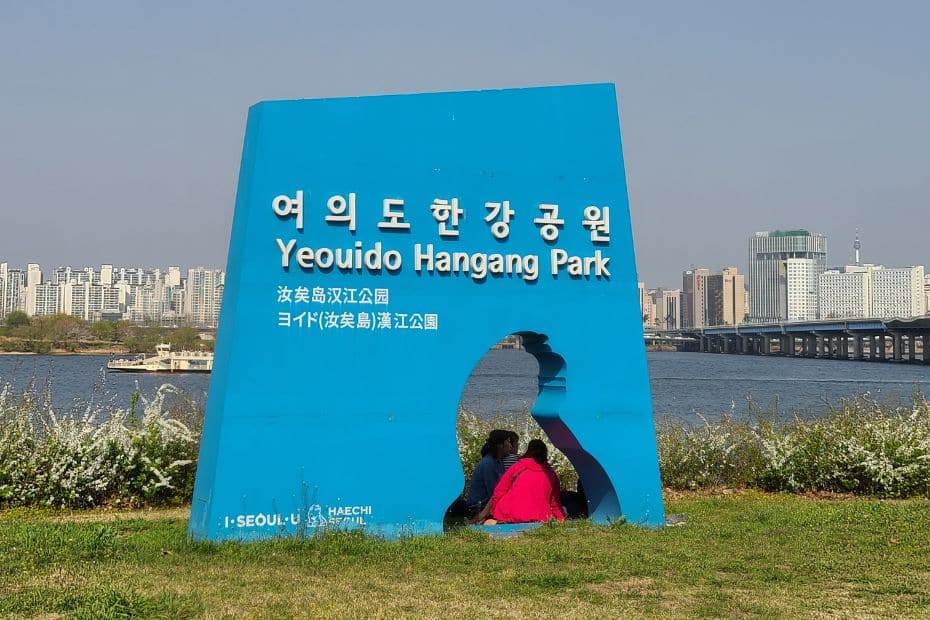
Language issues can be a big concern for first-time travellers to Korea as Korean is a very different language from English and has a unique alphabet. Korean is also one of the most difficult languages to learn for English speakers, ranked alongside Japanese, Chinese, and Arabic.
However, as a tourist to Korea, you don’t need to worry about mastering the language. English is used for signs and announcements in most places that you’ll need it, such as on public transport, at the airport, at attractions & tourist sites, on menus, and most other places. It’s common across Korea.
If there is a sign or notice that isn’t in Korean, I recommend using the Papago app to take translate it. Use the image translation function in the app to scan the sign and Papago will translate it into English for you. It’s really convenient and the way I translate things I can’t read in Korean.
Do Korean People Speak English?
Speaking in English to Korean people is different from being able to read and translate signs. English is taught from elementary school until the end of high school. That doesn’t mean everyone will remember it, but there’s a good chance some people will know English, especially younger Koreans.
It is best to ask if someone speaks English before trying to have a conversation. You can do this in Korean by asking “영어 할 수 있어요?” (Yong-oh hal su iss-o-yo?) or just ask it in English. Tour guides and people in the tourism industry will probably be able to speak English, but it’s not guaranteed.
Shyness is an issue in Korea and locals may be reluctant to speak English at first for fear of making a mistake. As an English teacher in Korea, I know that Korean students are usually quite competent in English, but lack confidence to use it. Be patient and encouraging when talking in English.
Although some Koreans may be too shy to use English, other people may be enthusiastic about speaking English to you and want to practice it. I’ve been asked random questions in English by strangers in the street in Korea who want to practice English and find out about my life.
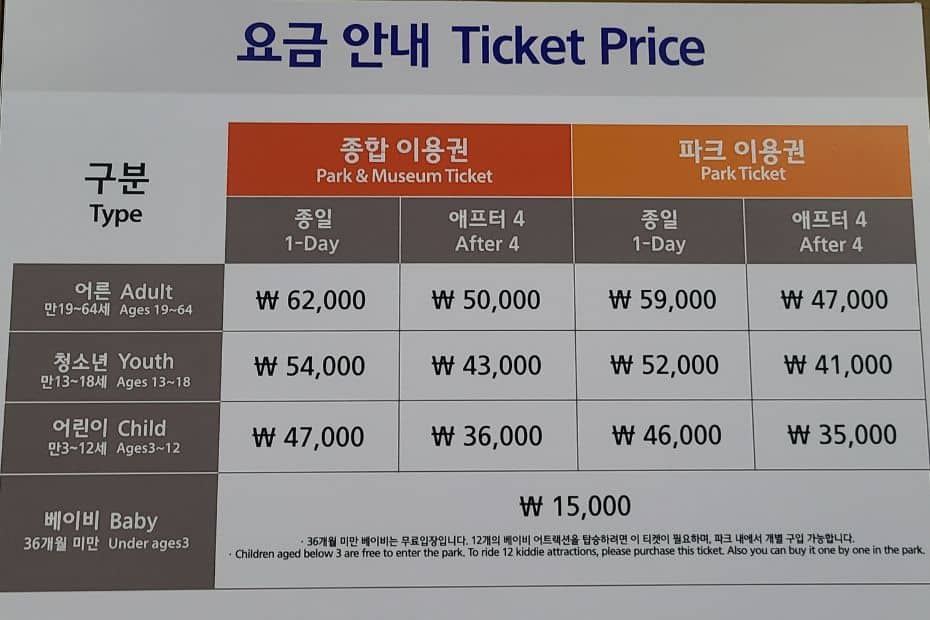
Should You Learn Korean Before Visiting Korea?
If you do want to learn some Korean before you travel, I recommend you start by learning the Korean alphabet , or at least learning some basic Korean travel phrases . Knowing how to introduce yourself, discuss prices, ask for directions, and ask for help will make your trip to Korea a lot easier.
You can learn Korean online through courses such as 90 Day Korean and Korean Class 101 , or with self-study textbooks like the excellent Talk To Me In Korean series. There are lots of resources on YouTube, too. I particularly like Learn Korean with GO! Korean Billy as he explains things clearly.
Another way to prepare to move to Korea is to read some Korean novels in English . Although these books won’t teach you any Korean, they’ll offer up valuable insights into Korean culture, both traditional and hidden under the surface. Literature is a good way to gain an understanding of a culture.
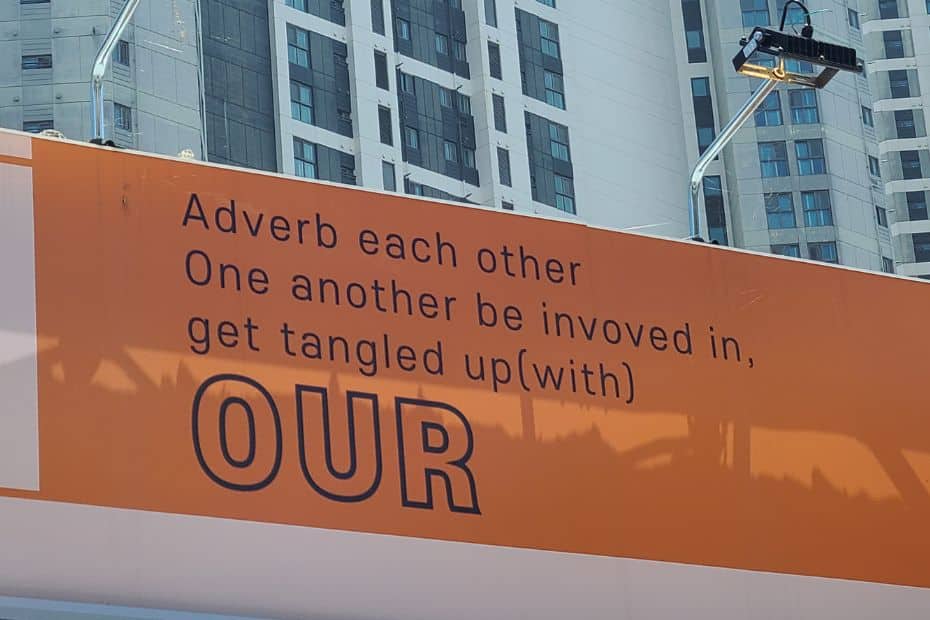
A warning about Konglish : Although Korea uses English in many useful ways, there’s also a lot of Konglish. The sign above is a good example of random English words being used to look cool, but ending up being confusing. There’s a lot of this in Korea and it’s mostly harmless, so don’t worry.
Health And Safety Issues In Korea

First-time travellers to Korea may be worried about health and hygiene issues, such as if certain foods are available and if they’re safe to eat. Other issues include vaccinations, personal safety, and how easy it is to contact emergency services. These issues are addressed below.
Is Korean Street Food Safe To Eat?
Korean street food is generally safe to eat and won’t give you any health issues unless you have an intolerance to the food. Korean street food can be spicy or contain a lot of salt, be aware of your own personal tolerances and dietary requirements before trying it.
Also be careful when ordering food with meat or seafood and check that it is cooked thoroughly. Korean street food that has been left out for a long time is more likely to cause food poisoning problems, so ask for freshly cooked food if you’re concerned.
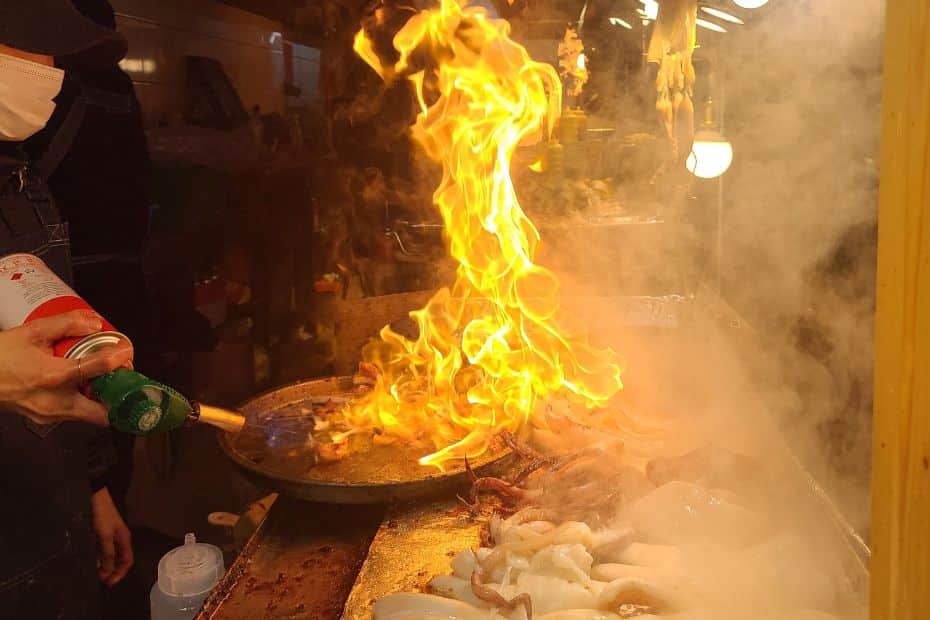
Is It Easy To Find Vegan-Friendly Food In Korea?
There are many vegan-friendly Korean dishes , such as gimbap , japchae , pajeon , bibimbap , ramyeon , and tteokbokki . However, some restaurants may use non vegan-friendly ingredients when preparing these foods, so be careful. Kimchi isn’t vegan-friendly due to its seafood ingredients & sauces.
Vegetarianism and veganism aren’t common in Korea with fewer people following these diets than in countries such as the USA or UK. Vegetarians in Korea account for 3% of the population, while vegans in Korea are only 0.2% of the population as of 2022. The UK is 10% and 2% respectively.
However, the number of vegan-friendly restaurants and bakeries is increasing each year in Korea, especially in areas such as Hongdae and Itaewon. Korean Buddhist temple food is vegan-friendly and a good option for vegans who want to enjoy vegan food while learning about local Korean culture.
If you’re concerned about accidentally ordering non vegan-friendly food, or want to know how to tell someone about food allergies or requirements, check out my guide to Korean phrases for ordering food . This has a whole section about special requests when ordering food in Korean.
Is It Safe To Drink Tap Water In Korea?
Korean tap water is potable and safe to drink. Korea ranks 23rd for water hygiene, which is above the USA, Canada, and Australia. However, many Koreans don’t drink tap water , preferring to use water purifiers and bottled water instead, claiming that tap water smells strange or water pipes are bad.
Personally, I don’t like drinking tap water in Korea as it tastes a bit stale, but it’s perfectly fine to drink and doesn’t cause any problems. Bottled water is very cheap in Korea and costs 600 KRW for a 500ml bottle from a convenience store. Buying water from a supermarket is a cheaper option though.
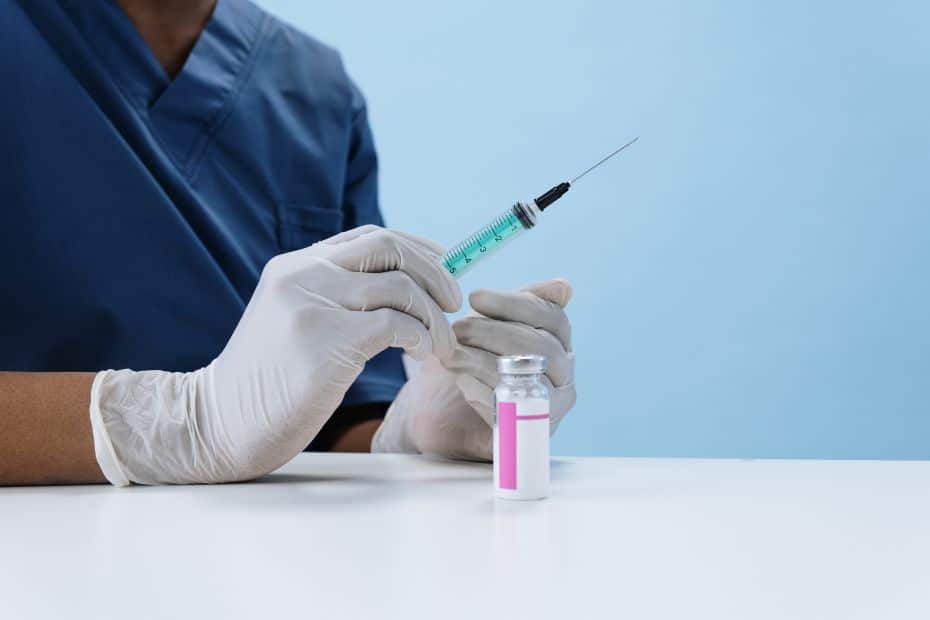
Do You Need Any Vaccinations To Travel To South Korea?
There are no mandatory vaccinations required to travel to Korea , but it is suggested you should have at least routine vaccinations such as tetanus, MMR, and polio. Hepatitis A & B, typhoid, and Japanese encephalitis vaccinations are also recommended.
Is Korea Friendly To Tourists?
Korea is generally friendly and welcoming to tourists. The Korean government spends a lot of money and effort to promote Korean tourism to the world and there are many incentives to bring people to the country. Korean people are also mostly polite and welcoming, especially in the tourism sector.
Is Korea A Dangerous Country To Travel In?
South Korea is a safe country to travel in and the crime rate in Korea is low, comparable to Norway or the Netherlands. Public crimes, such as theft and assault, are rare. Pickpocketing and purse snatching aren’t common and unattended goods are generally left alone or reported to the police.
How safe is Korea? I regularly see people leave their phone or handbag on a cafe table to reserve it before going up to order a drink. People even leave their laptops open while they pop out for lunch or go to the toilet. Stealing disturbs social harmony and is one of the reasons it’s rare in Korea.
Physical violence is also rare, but still occurs in Korea, as it does in all countries. This is most often found in areas with lots of bars and when people are drunk. However, visiting bars in Korea is a lot safer than I’ve experienced in other countries and trouble is not common, even in busy places.
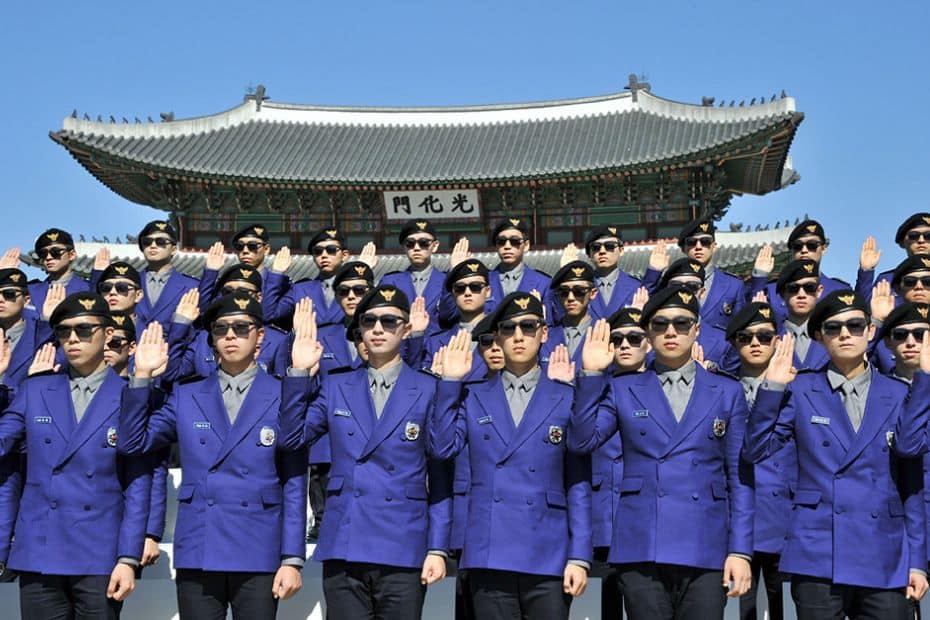
How Do You Contact Tourist Information Services In Korea?
Call 1330 in Korea to contact the Travel Helpline . The Korean Travel Helpline provides the following services free of charge to tourists in Korea.
- Tourist Information : Find out about attractions, opening hours, prices, and other information.
- Tourist Interpretation : Access travel information in several languages.
- Tourist Complaints : Report rip-offs and problems you encounter when travelling in Korea.
- Tourist Police : Report minor crimes in English and other languanges.
There are tourist police patrolling the streets of Seoul, dressed in purple uniforms as shown in the picture above. In popular tourist locations like Myeongdong and Bukchon Hanok Village, you’ll also find friendly tourist information staff dressed in red shirts with matching red cowboy hats.
What Should You Do If You Have An Emergency In Korea?
If you need to report a fire or medical emergency in Korea, you should call 119 from any phone. To contact the police in Korea, call 112. You will need to select an option to report an emergency in English or another language. It may take some time to be redirected to an English speaker.
- 119 – Medical Emergency & Fire Rescue
- 112 – Police
When you use medical services in Korea, you have to pay the cost of treatment, but there is no fee for the ambulance ride as this is covered by the Korean government. Travel insurance should cover the cost of medical bills, so if you’re worried about a large medical bill, insurance is recommended.
Fortunately, the cost of treatment in Korea is quite reasonable and Korea has advanced medical facilities, which is why it’s a popular medical tourism destination . Many people travel to Korea for minor and major surgery, including laser eye surgery, cosmetic surgery, and internal medicine.
Is Air Pollution A Problem In Korea?
Air pollution is an issue in Korea, especially in spring & summer. Winds blow yellow dust from Central Asia, field burning spreads fumes across Asia, and fossil-fuel burning contributes to higher levels of air pollution. Some days there’ll be very low visibility and health risks for people with lung problems.
My Personal Travel Tips For Korea
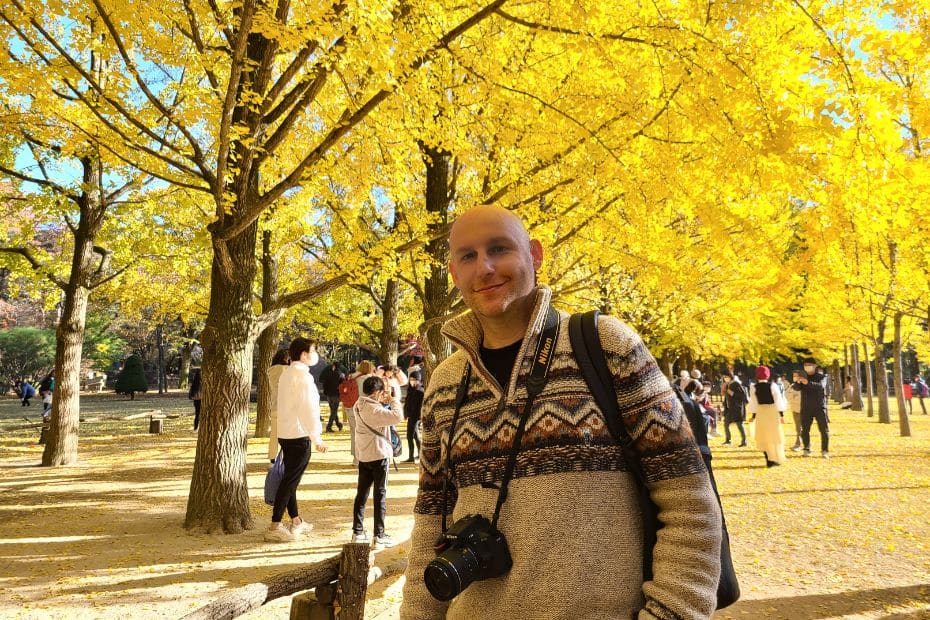
This South Korea travel guide is a collection of information I’ve researched and learned since moving to Korea in 2015 and blogging about Korean travel since 2019. I hope the provided information and insights are useful and assist you plan your dream first-time, or even tenth-time, trip to Korea.
This section includes my personal tips that didn’t really fit anywhere else and reflections built from travelling all over Korea in all seasons. These are tips I would offer to first-time travellers to Korea and people who might have some worries about visiting the Land of Morning Calm. I hope they help.
The Real Korea Isn’t What You See On TV
Korea is a developed country that went from being a 3rd world country in the mid 20th Century to a high-tech country in a short time. Despite the many high-rises and modern K-Pop stars, there are still shadows of the former Korea seen in both run-down slums and people with ‘traditional’ values.
The image created by selective K-Culture can distort people’s reality when dreaming of a trip to Korea in the same way Korean people can suffer from Paris Syndrome when visiting France. There are many wonderful things about Korea, but don’t travel thinking that everything is as shown on TV.
Be Prepared For Culture Shock
One of the best things about travelling is seeing a country and people that act and behave differently to how you do in your own country. This is known as culture shock and can be both a blessing and a challenge for first-time travellers to Korea. Things you might be used to can be different in Korea.
Some examples of culture shock in Korea include the way age determines hierarchy in Korea and how older people can be rather pushy, especially on the subway. Younger people also typically don’t question the decisions of older people in Korea as it is considered rude and disrespectful.
Less extreme cultural differences that might confuse some first-time visitors to Korea include having to shout to call someone to take your order in a Korean restaurant or not giving a tip. Koreans might similarly look at you strangely if you do something culturally different, such as walking while drinking.
Don’t Overpack When You Travel To Korea
First-time travellers to Korea may be worried about visiting a country like Korea without taking everything they need from home, even the kitchen sink. My advice is to pack as light as possible and leave yourself some space in your suitcase. There are two reasons for this.
- You can buy most things you need in Korea . This includes sun cream, heat packs, clothes, shoes, cosmetics, travel accessories, etc. They’re also probably cheaper in Korea, too.
- You will want to take home lots of things . From weird Korean snacks to beautiful hand-crafted pottery and woodwork, there are so many things to buy in Korea.
(1) The only exception is if you might have a problem finding correct-fitting items. Korean shoes and clothes are slightly smaller than what you’d find in Western countries and the sizes are also differently labelled. I’m a medium in the UK but a large (sometimes XL!) in Korea. Be careful when shopping.
(2) It’s hard to fit everything you buy in Korea into an already full suitcase. Fortunately, you can buy extra suitcases at low prices. Check out Namdaemun Market for cheap luggage options, as well as shops like the one pictured below (this is in Busan) in places like Hongdae and Dongdaemun.
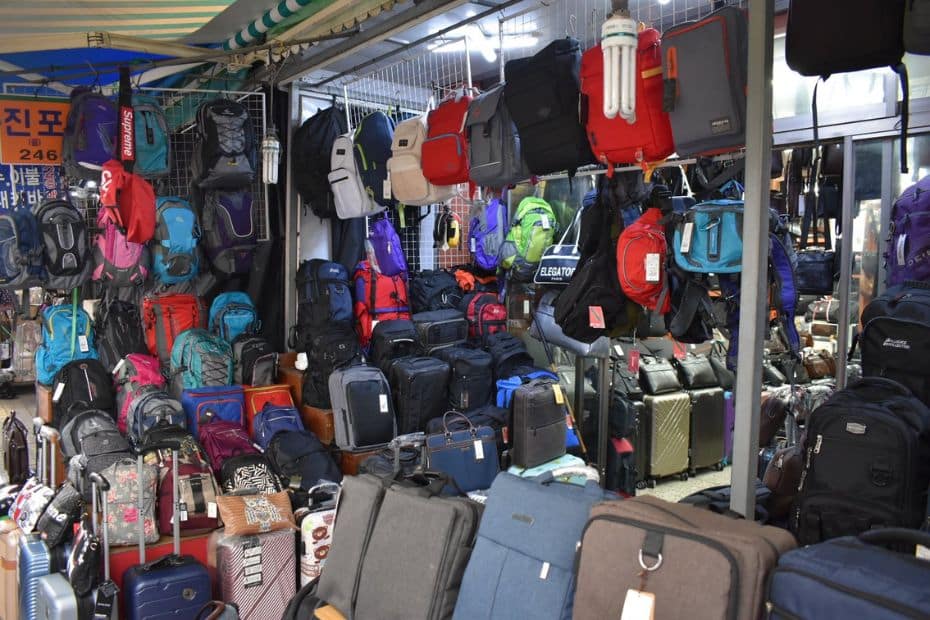
Electricity In South Korea
Be careful with electric items when travelling to Korea. Korea uses type C and F plugs , which are used in Europe, Russia, and other parts of Asia. The standard voltage is 220V with 60Hz frequency. Anything designed for a standard voltage between 220V and 240V should be fine in Korea.
Laptops, mobile phones, and other portable devices will be fine when you travel in Korea as long as you use a travel adapter with a USB or socket connection. Hairdryers, shavers, curlers, and similar devices might have problems charging in Korea and run out of power very soon. My shaver did.
Go With The Flow And Go Quickly
Korea is a very busy country and you might hear people mutter ‘빨리빨리’ ( ppalli ppalli ) if you walk slowly, especially in the subway. Koreans work long hours and are eager to get home or go out for dinner. Don’t take it personally if people push past you and don’t feel like you have to rush.
Know Where To Throw Away Rubbish
It can be difficult to find a bin to throw away rubbish in Korea, even in urban areas. The best place to dispose of rubbish in Korea is at a convenience store. You can find recycling and trash bins in these shops. If you go hiking or explore the countryside, expect to carry your rubbish home with you.
South Korea Travel Guide FAQs
Finally, here’s a few FAQs about this South Korea travel guide, in case the above information didn’t cover enough for you.
What is the best month to visit South Korea?
The best months to visit South Korea are April and October. April is warm and you can see cherry blossoms in Seoul at the start of the month. October is warm with clear skies. During October you can see autumn foliage across Korea.
How much money is enough for South Korea?
The amount of money you need to travel in South Korea depends on your travel style and desired level of comfort. A rough budget for South Korea is 50-100,000 KRW per day for budget travellers, 100-200,000 KRW per day for mid-range travellers, and 200,000+ KRW per day for luxury travellers.
Is South Korea friendly to tourists?
South Korea is a welcoming country and friendly to tourists. There are many services to welcome tourists to South Korea, including free transit tours from Incheon Airport, cultural performances in tourist destinations, low entry fees to traditional attractions like Gyeongbokgung Palace, and tourist information and signs in multiple languages.
What do I need to know before travelling to South Korea?
It’s important to know about the weather before travelling to South Korea as this can impact your day to day travel and affect what clothes you’ll need. You should also research what festivals are on before you travel, what seasonal events are happening, such as cherry blossom viewing, and also how to use public transport and get connected to the net.
What is the cheapest month to visit South Korea?
January and February are two of the cheapest months to visit South Korea and are considered low season as the weather is cold. Hotel prices and flights to Korea will be lower in these months. Winter is a good time to travel to Korea to see snow and enjoy winter sports and festivals, however, some attractions will be closed during this time of year.
Do I need a South Korea travel guide?
It is good to check a South Korea travel guide to research your trip, especially for first-time travellers to Korea. Korea has a unique culture, language, and customs that might be confusing for new travellers. A South Korea travel guide will help you prepare for these factors and give you ideas to create your perfect trip to Korea.
Can you drink tap water in Korea?
Korean tap water is potable and safe to drink. You can drink water from hotels and apartments in Korea. Restaurants and cafes will provide you with free drinking water, which usually comes from a water cooler. Bottled water is available from convenience stores and is reasonably priced.
Is South Korea safe for first-time travellers?
South Korea is a safe country for first-time travellers to visit. Personal crimes, such as theft, mugging, and physical violence are rare in Korea and it is safe to walk the streets of Seoul, even at night. First-time travellers can prepare for a trip to South Korea by being aware of potential scams, such as taxi drivers over charging them or being ripped off in the traditional markets.
What are the best apps for travelling in South Korea?
The best apps for travelling to South Korea are Papago, Kakao Taxi, Naver Maps, and Seoul Subway. These apps will allow you to translate between Korean and English, hail taxis, and navigate as you travel. All of these apps have English language options and are free to use.
Support In My Korea Thanks for reading. If you want to help me to create more great content in the future, why not buy me a coffee? A strong coffee helps me write more and is a simple way to show gratitude for this free content.

Liked This? Pin It For Others
If you enjoyed reading this article, then please share this with your friends on Pinterest.
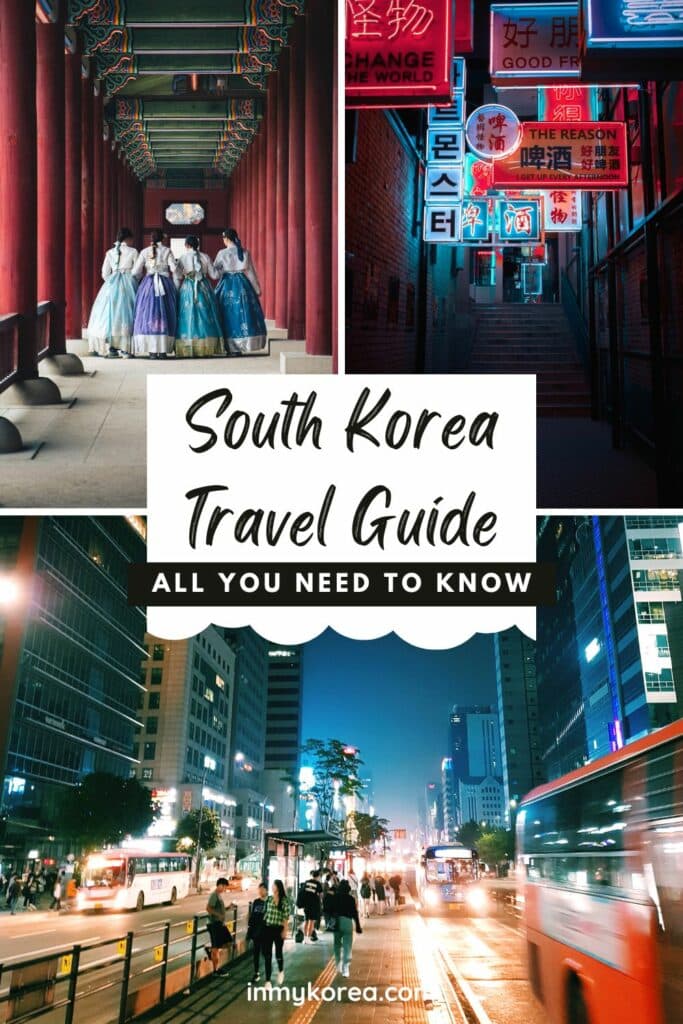
Related Articles
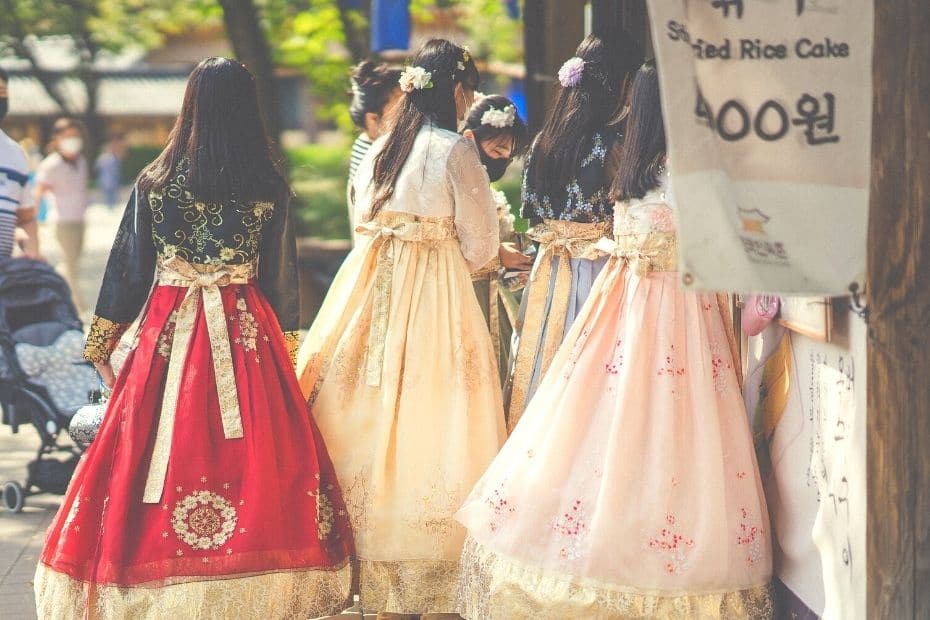
How Many Foreigners In Korea Are There? 2024 Updated Stats

My EPIK Life: 5 Fun Years Teaching English In Korea
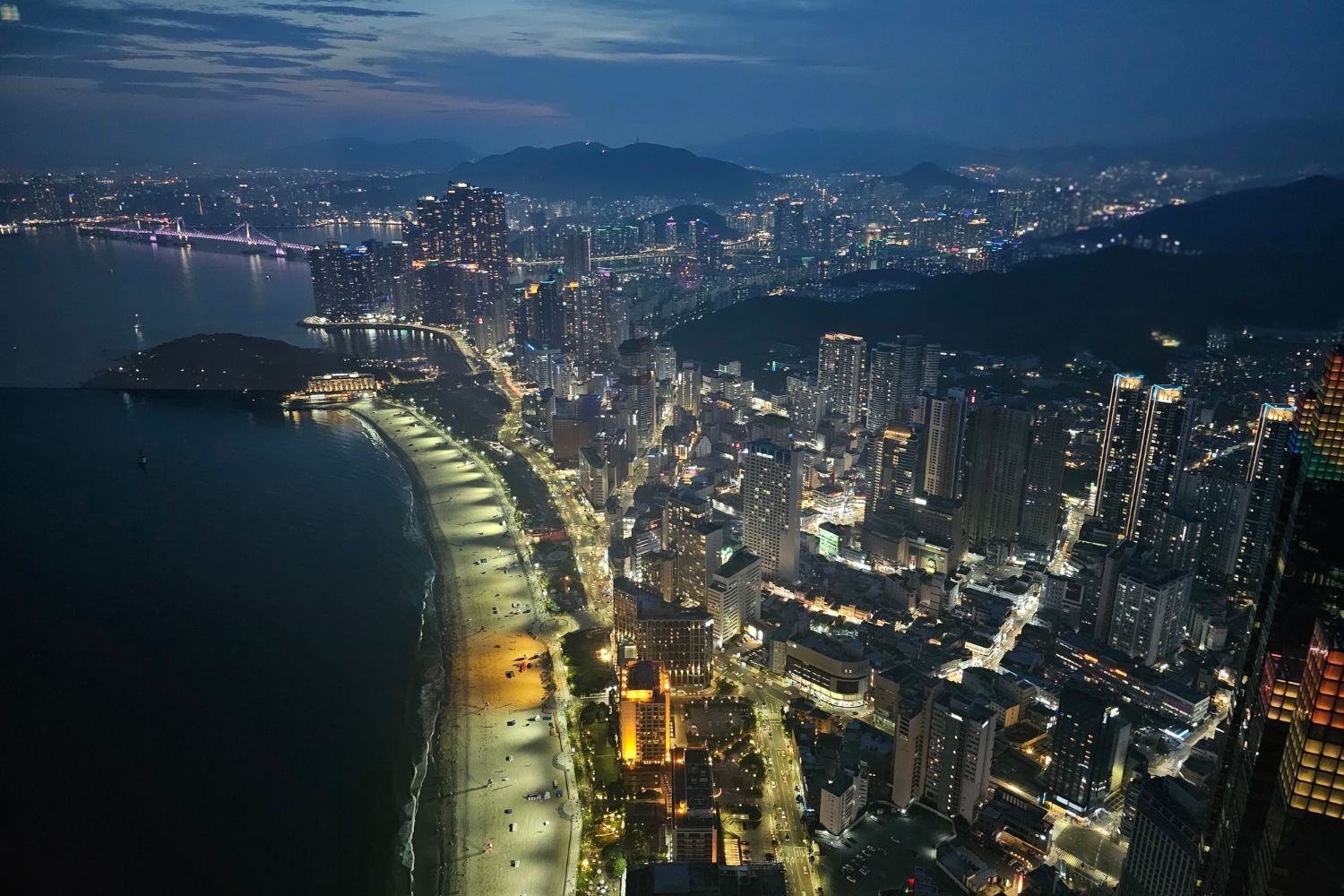
How To Visit Busan X The Sky And Sky 99 In Haeundae 2024
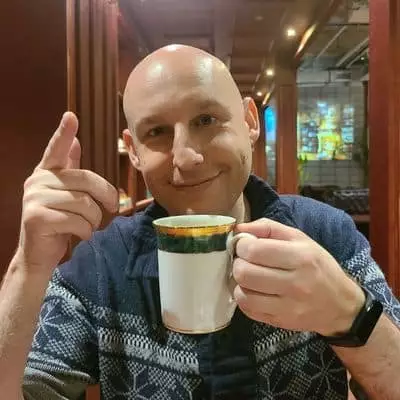
Hi! My name is Joel, I'm the author of In My Korea and writer of this article. I've lived, worked and travelled in Korea since 2015 and want to share my insights, stories and tips to help you have the best experience during your trip to Korea.
I love learning more about Korean culture, hiking the many mountains, and visiting all the coolest places in Korea, both modern and traditional. If you want to know more about my story, check out the ' about me ' section to learn why I love living in Korea.
4 thoughts on “Complete South Korea Travel Guide 2024: Korean Travel Tips”
This South Korea travel guide is a comprehensive resource for anyone planning a trip to Korea. It covers everything from entry requirements and travel tips to accommodation options and places to visit. Whether you’re a first-time traveler or have been to Korea before, this guide has something for everyone. The inclusion of the latest travel news and COVID-related updates adds to its relevance and usefulness. I appreciate the detailed breakdown of sections and the inclusion of quick links for easy navigation. Overall, this guide is a valuable tool for anyone looking to explore the wonders of South Korea.
Moderator – Nice Article! In My Korea
Thank for the great info! Could you please recommend any tours agency for a few day trips around Korea? I found a few , but they are pretty pricey!
Hi, thanks for reading. Klook and Viator have a good selection of tours in Korea with some of the best prices on the market. I’m not sure which tours you’re looking for, but they usually do day trips for less than $100 per day that cover popular tourist sights.
Leave a comment Cancel reply
Save my name, email, and website in this browser for the next time I comment.
16 things to know before heading to South Korea

Feb 18, 2024 • 10 min read
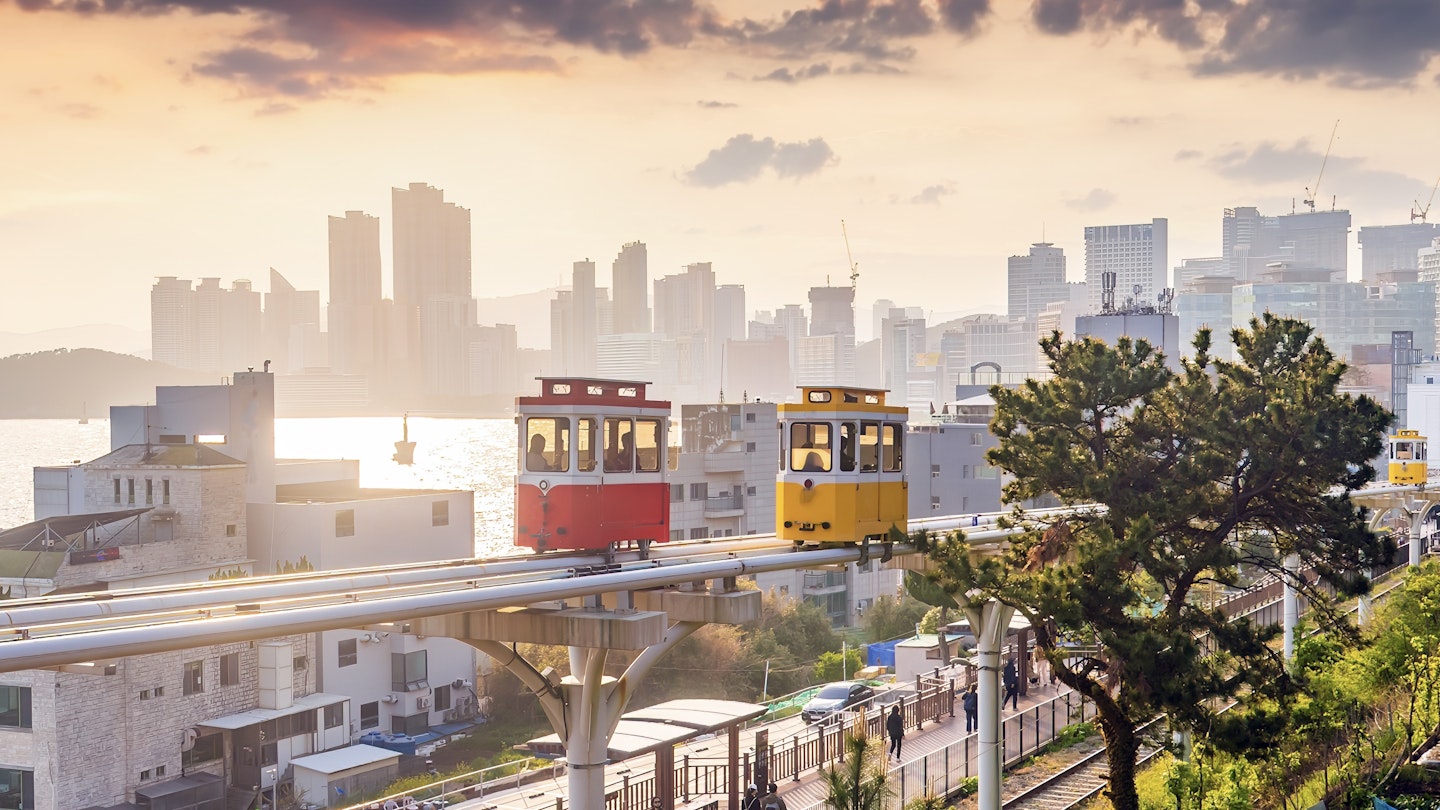
South Korea’s public-transport choices – including Busan’s Sky Capsule – are the envy of the world. As you plan your trip, count on using the nationwide network © By f11photo / Shutterstock
Has any place been on a run of late like South Korea ?
The country is on the lips of travelers around the world, thanks to its cutting-edge technology, world-class cuisine, chart-topping pop bands and some of the most exciting movies and TV series being made anywhere.
Add to all this centuries of tradition and copious natural blessings, all in a country scarcely larger than Ireland, and you’ve got one of the planet’s great travel destinations.
Safe, friendly and possessing superb infrastructure, South Korea is a truly easy – not to mention rewarding – place to explore. Read on for tips to make your visit even easier.
1. Complete your pre-trip registration three days before your flight
Most travelers – including citizens of the US, Australia and the UK – can visit South Korea visa-free for up to 90 days (up to six months for Canadians). You’ll still need to apply for a Korea Electronic Travel Authorization on the K-ETA website , however, at least 72 hours before departure. It’s a simple process, and your K-ETA is valid for two years from the date of approval.
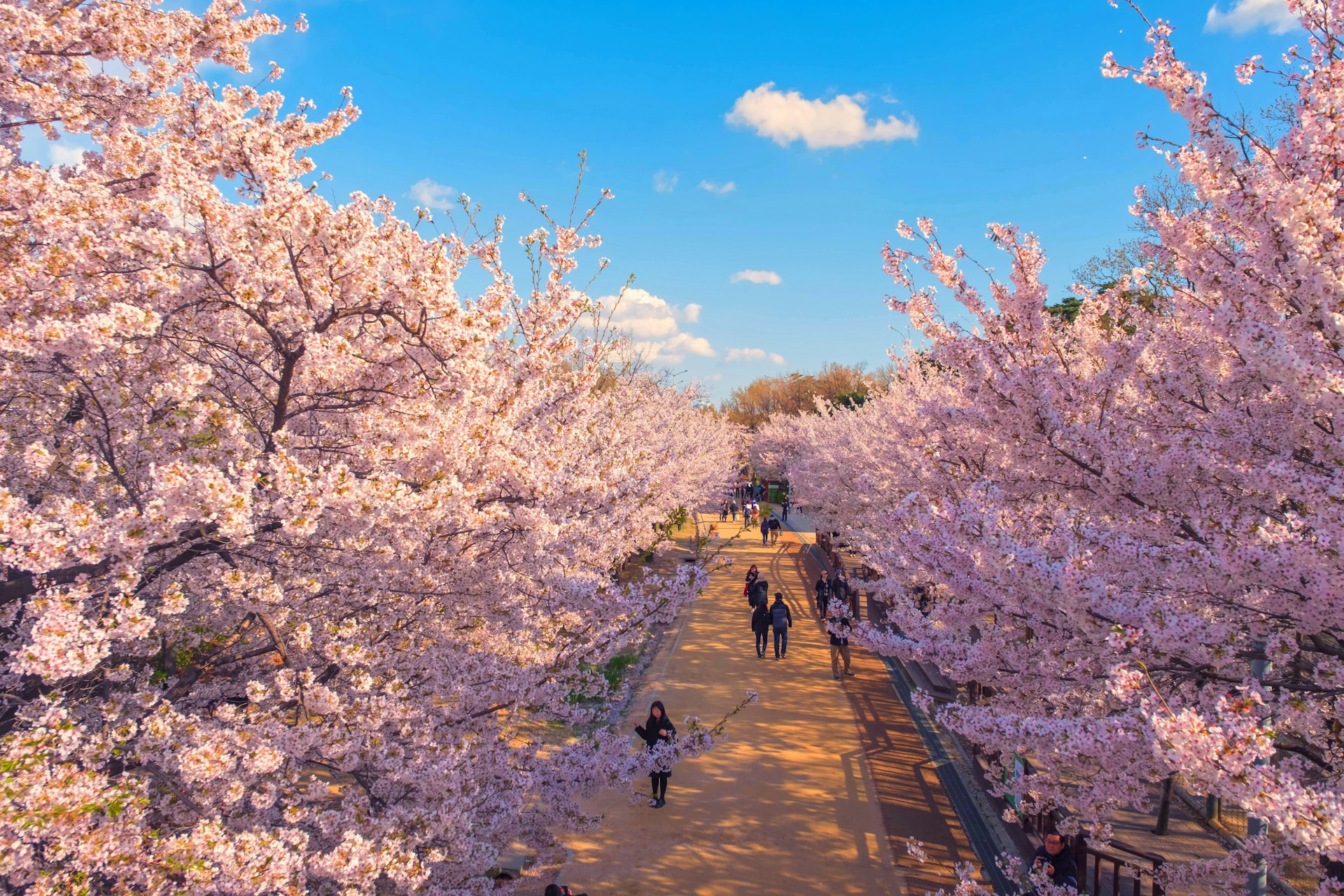
2. Time your visit with the trees
We recommend planning your visit to South Korea for spring or fall , when the peninsula gets its most temperate weather. Bonus points if you can time it to coincide with one of the country’s two periods of arboreal magic. Korea’s cherry blossoms start blooming in mid-March on Jeju-do Island , off the south coast, and typically appear in Seoul in early April. In late October and early November, the leaves of Korea’s many ancient ginkgo trees turn into brilliant golden torches, giving Seoul and other cities a particularly regal look for several weeks.
3. Mind these two major holidays
The two periods that can cause travelers real problems are the multi-day Lunar New Year and Chuseok (fall harvest) holidays. On these two occasions every year, Koreans hit the road en masse, making booking a bus or train ticket nearly impossible. The dates change each year, so be sure to check when these are before making travel plans.
If you can’t avoid a holiday, base yourself in Seoul or Busan for its duration. Plenty of businesses stay open, and the cities can be surprisingly peaceful with everyone out of town.

4. Take advantage of Korea’s world-class public transportation
Korea’s subways, trains and buses are clean, convenient and efficient . It can sometimes seem like a new station is added to the Seoul metro every month, and the rail and intercity bus networks will take you to every corner of the country. Public transportation is cheap: bus and subway fares in Seoul start at just ₩1250. In all of South Korea, Jeju-do is the only place where renting a car might make sense, and even there it’s probably not necessary.
With plentiful English information and sensible design, public transportation in Korea makes getting from here to there a breeze. To get moving, start by picking up a T-money transit card at a convenience store or from a vending machine in any subway station. Separate kiosks can be used to load money onto your card. Tap your card both when you board and get off the subway or bus. Fares are calculated by distance, so if you forget to tap when disembarking, you’ll be charged more and won’t be able to transfer for free. You can also use T-money cards in most taxis.
When traveling longer distances, it’s simple enough to just buy intercity bus or train tickets at stations. For the high-speed KTX train and some of the more popular routes and times – departing Seoul on Saturday morning, for example – it’s a good idea to purchase in advance. Bus tickets are typically readily available for purchase from machines and counters in bus stations. Buy train tickets on the website of KORAIL , the national operator.
5. Stay connected with these essential apps
Wi-fi is so prevalent in Korean cities that you can do without a local SIM card, but if you decide that you want one just in case, or if you plan to head to rural areas, the easiest place to pick one up is at one of the many telecom roaming centers at Incheon Airport upon arrival. You can also rent a phone if you didn’t bring your own.
Helpful apps to download include Naver Map ( iOS and Android ), which works better than Google Maps in South Korea; MangoPlate ( iOS and Android ) for finding restaurants and cafes; Subway Korea for navigating cities’ metro systems; and Kakao T ( iOS and Android ), which is like Uber but for taxis.
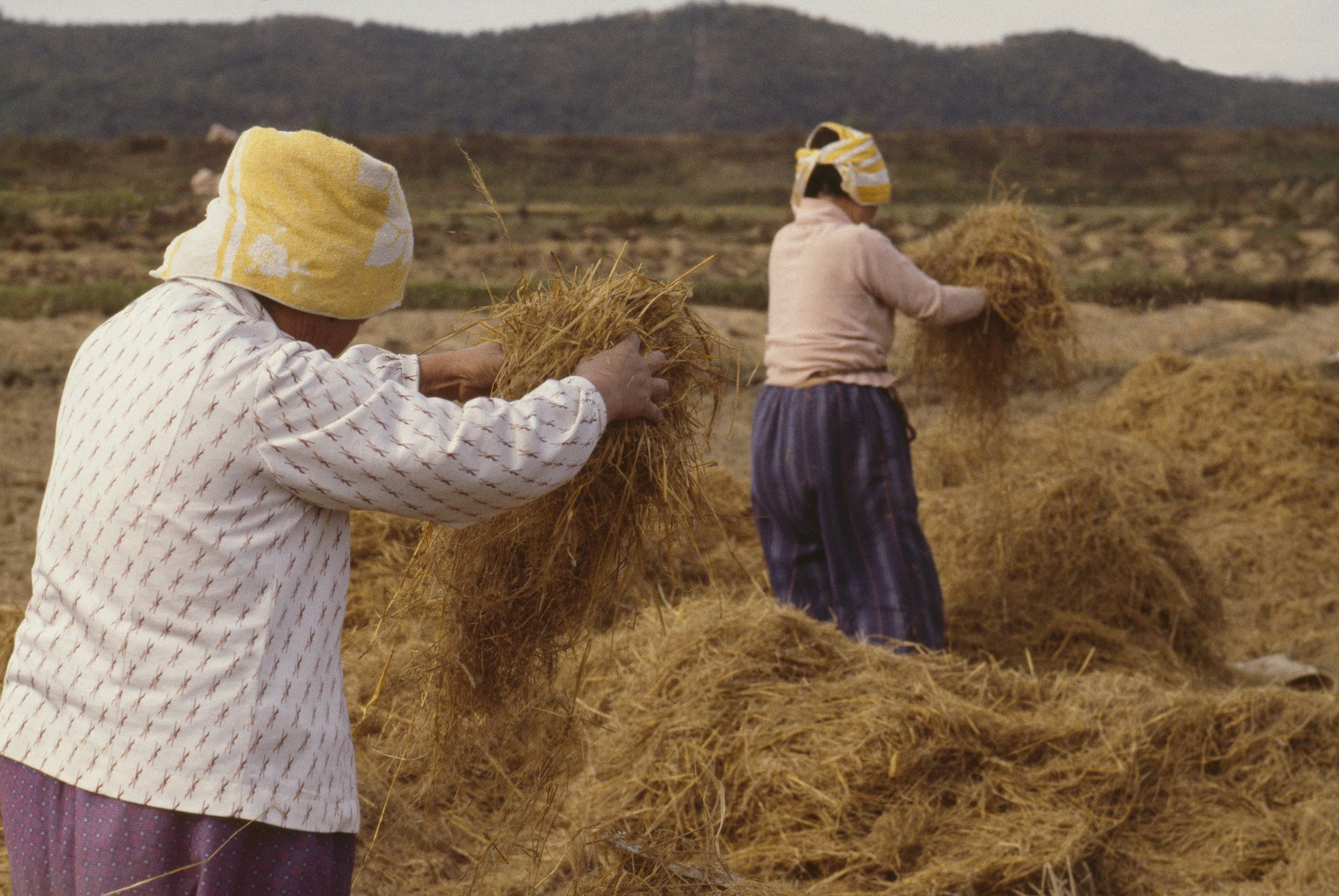
6. Get out of town
There are two Koreas. We don’t mean North and South, but rather Seoul and everything else – or, a bit more broadly, urban Korea and rural Korea. The country has a reputation for being a hyper-paced, highly wired pop-culture dynamo, but its hinterlands present a much different picture, and you’d be missing out big time if you skip them.
The Korean countryside is beautiful, mountains and rivers make for beautiful vistas, and life is lived differently here than in the cities. The population is older – most people under 40 have decamped to the cities – and the pace is slower. At least once on your trip, get out of the cities and immerse yourself in this more traditional side of Korea.
7. Learn your ga , na , da , ra , ma , bas
Basic English is widely understood in Korea by folks under 50, and signage is almost always in both Korean and English. Yet it’s still a good (and respectful) idea to learn a bit of the language.
Beyond memorizing a few essential Korean words and phrases, learning hangul, the Korean alphabet, is like gaining access to a secret bonus level of Korean travel. If you can sound out the letters, you’ll find that you already know what things like 카페 모카 ( ka-pe mo-ka ), 비빔밥 (bibimbap) and 사우나 ( sa-oo-na ) are.
Hangul is easy to learn. King Sejong the Great, who oversaw its creation in the 15th century, declared that a wise man could pick it up before noon and even an idiot could learn it in 10 days. Let’s Learn Hangul teaches the Korean alphabet in an interactive, easy-to-follow way.
8. Roll with the nudges
Koreans live life in a hurry, and they do so in a densely populated country, so you shouldn’t expect the same sense of personal space or public courtesies you find in your home country. Koreans won’t hold doors open for you or apologize if they bump into you when walking. When getting on or off the subway, they likely won’t say, “Excuse me” – they’ll just nudge you aside. They’re not being rude, though.
When you live in a city as crowded as Seoul, it’s just not practical to say sorry every time you knock shoulders with someone – you’d be apologizing constantly. This can be maddening to outsiders, but just accept it and roll with the nudges.

9. Be ready to get personal
The typical greeting here is a quick bow – nothing dramatic, just a head nod deep enough for your gaze to meet the floor – but you’ll sometimes be offered a handshake instead. If you are, expect more of a gentle clasp than the old squeeze-and-pump.
You’ll likely be asked questions more personal than you’re accustomed to by someone you just met. At the top of this list is your age. This data point is essential to Koreans, as it informs how they talk to one another: how formal their verb endings should be and whether to use honorifics. Inquiries about marital status, occupation and your opinion of Korea are also common. Answer politely, and feel free to return the question.
10. Wear what you like, but don’t pack anything too risqué
As a traveler, you can feel free to dress for the weather and comfort. Koreans are pretty relaxed about attire, even if they’re more modest than you might expect. If visiting a temple , while shorts are fine, tank tops and miniskirts are not. Both men and women frequently wear t-shirts at the beach (though it’s best to leave the Speedo or thong at home). Korean women almost never wear low-cut tops, and female travelers could find that doing so brings unwelcome looks. Tattoos are now common among young people, yet even still some bathhouses will deny entry if you show any ink.

11. Eat with others and don’t be afraid to shout for service
Eating is a communal activity in Korea, and many restaurants, especially barbecue joints, don’t offer single servings. So if you’re traveling solo, you might either have to drag someone from your hostel along with you (not a tough sell) or loosen your belt and order pork belly for two (poor thing).
At restaurants, servers won’t come check up on you, and most places have call buttons on each table. Give it a push, and someone will be right over. Otherwise, to grab the waitstaff’s attention, raise your hand and shout, “ Yogiyo !” (“Over here!”) Water is usually self-service, and occasionally side dishes are, too. If your server doesn’t set a bottle of water on your table, look around for a water dispenser and stacks of metal cups. At the end of your meal, take the check to the front counter to pay. There’s no tipping.
12. Is North Korea a concern?
Despite international headlines, South Koreans don’t worry about an attack from North Korea – and neither should you. Military clashes are very rare, and danger to civilians is rarer still. A guided tour to the DMZ can be a fascinating and truly find-it-nowhere-else experience. From afar, North Korea can seem almost comical in its eccentricities, but when you’re looking at South Korean soldiers looking at North Korean soldiers looking at you, the geopolitical stakes hit different. Plus, many tours offer what may be your only chance to actually step foot in the world’s most secretive country.
13. Monitor the air quality
Even in post-pandemic times, it’s a good idea to always carry a mask, as air quality can occasionally drop to pretty nasty levels. This is especially true in spring, when dust blown off the deserts of Mongolia and northern China combines with local pollution to create unhealthy air. Download an app like IQAir Air Visual (for iOS or Android ) to keep track of current conditions and the upcoming forecast across the country.
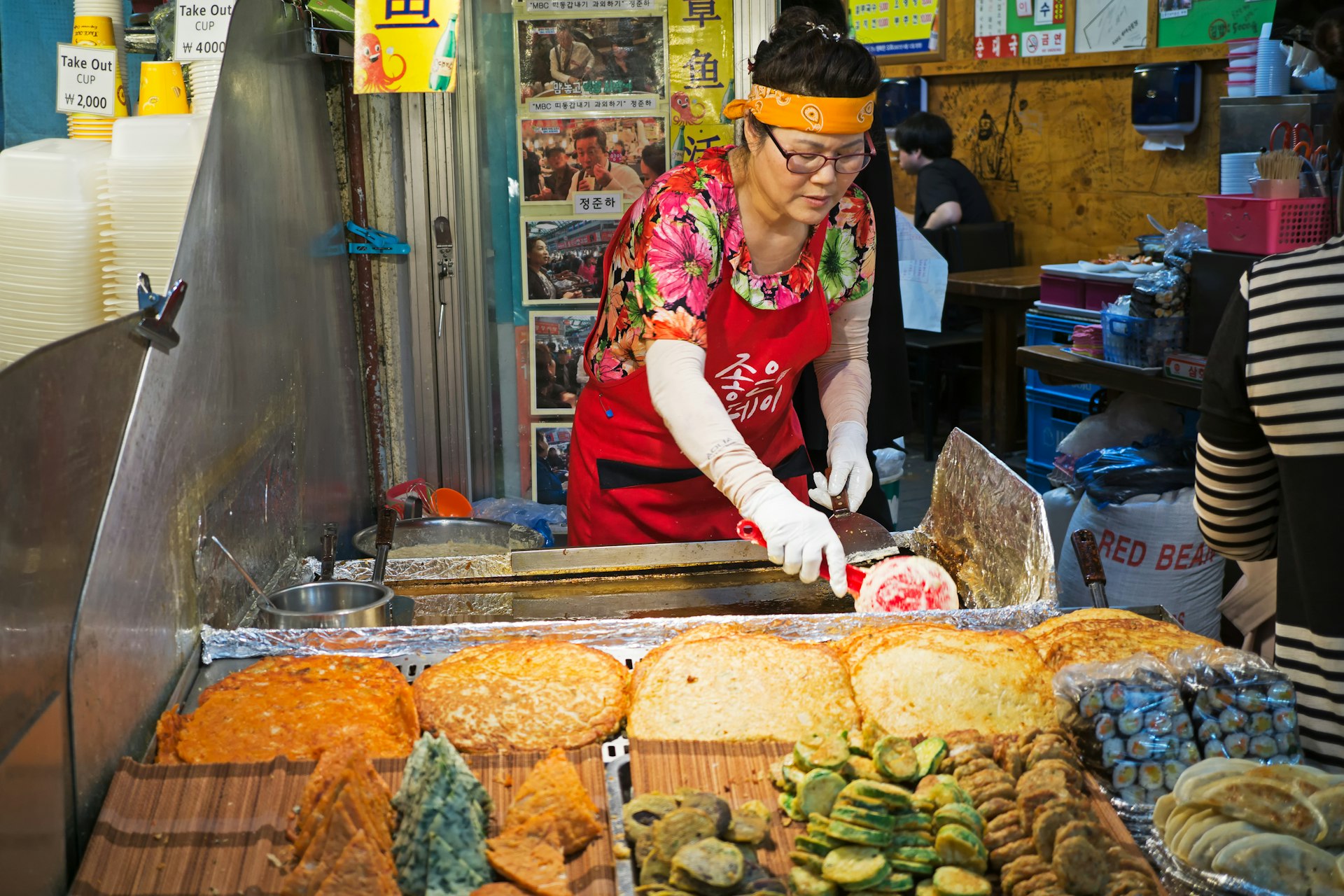
14. You might have to be flexible about your diet
If you have food allergies or a specific diet, you may have a hard time finding places to eat or getting clear information about ingredients. Vegetarianism and veganism are slowly gaining popularity in Korea, but not many restaurants cater to these diets. Even dishes that you might think are vegetarian are often made with anchovy broth or fermented shrimp.
15. Recognize that LGBTQI+ acceptance still has a long way to go
While attitudes are slowly changing, Korea remains a conservative society in many respects, and anti-LGBTQI+ prejudice is common. Even so, LGBTQI+ travelers are more likely to be on the receiving end of curious – if misinformed – questions than any sort of open hostility. Public displays of affection are generally frowned upon (though this goes for straight couples, too).
Seoul has small gay districts in Itaweon and Jongno-3-ga, while the Hongdae-Sinchon-Ewha university corridor is another place where LGBTQI+ Koreans feel comfortable being themselves.
16. Use common sense and keep these numbers handy, just in case
Theft and violent crime are rare in South Korea. Scams and pickpockets targeting travelers are virtually nonexistent, and Koreans typically go out of their way to be hospitable to visitors. Nonetheless – as anyone should anywhere – do exercise basic caution and common sense. South Korea has strict drug laws, and don’t even think about trying to sneak past them. Nightlife often revolves around heavy drinking, so know your limit to avoid putting yourself in a sketchy situation.
If you do have an emergency, call 112 to reach the police, 119 for emergency services or 1330 to reach the Korea Travel Hotline, where an operator will connect you to the appropriate service and serve as an interpreter. That number can also be used to reach the Korea Tourist Police .
This article was first published Jul 16, 2022 and updated Feb 18, 2024.
Explore related stories
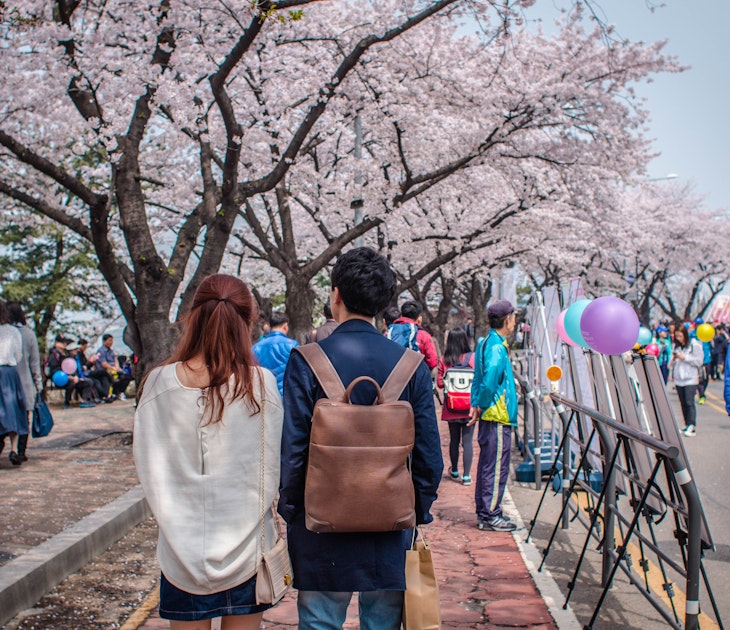
Public Transport
Feb 10, 2024 • 8 min read
Make the most of Seoul's incredible public transport but don't miss out exploring on foot.

Mar 28, 2024 • 7 min read

Feb 27, 2024 • 6 min read
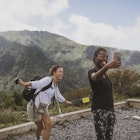
Feb 20, 2024 • 6 min read
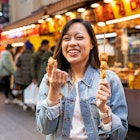
Feb 19, 2024 • 8 min read
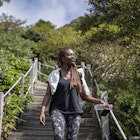
Feb 18, 2024 • 4 min read
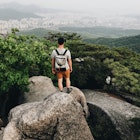
Feb 18, 2024 • 7 min read

Feb 17, 2024 • 10 min read
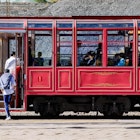
Feb 17, 2024 • 8 min read
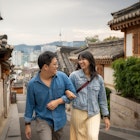
Feb 17, 2024 • 6 min read

- 2 Weeks for Couple
- 2 Weeks for Family
- Thailand Lantern Festival
- Indonesia(Bali)
- South Korea
- China (HK, Taiwan)
- Itinerary Ideas
- Asia Highlights Travel Reviews
- Thailand Travel Reviews
- Vietnam Travel Reviews
- Cambodia Travel Reviews
- Japan Travel Reviews
- Myanmar Travel Reviews
- China Travel Reviews

- 10 Days in South Korea: Best 4 Itineraries for a First Visit 2024/2025
When visiting South Korea, 10 days is the most popular length of time for both families and couples. You could explore major highlights of Seoul and Busan without feeling rushed. You would also have the flexibility to visit Jeju Island, traditional Gyeongju and Andong, or other places that interest you.
In this article, we've handpicked four 10-day South Korea itineraries to help you plan a once-in-a-lifetime vacation and stress-free journey. We would customize any itinerary based on your preferences.
Itinerary 1: Classic South Korea
- Itinerary 2: For Family with Teenagers
Itinerary 3: Modern and Historical South Korea
Itinerary 4: south korea off-the-beaten-path.
- How Much Does a 10-Day Trip in South Korea Cost
This 10-day itinerary is excellent for a first visit to South Korea. It covers the must-see attractions in Seoul, Busan, Gyeongju, and Jeju Island, as well as a variety of authentic activities to enrich your trip.
- 3 nights in Seoul
- 1 night in Gyeongju
- 2 nights in Busan
- 2 nights on Jeju Island
- 1 night in Seoul
Begin your adventure in Seoul. Explore iconic landmarks, such as Gyeongbokgung Palace, Bukchon Hanok Village, Myeongdong, and N Seoul Tower with your private guide. Your guide would help you to understand the culture and history of Seoul in a more interesting way.
To fully immerse yourself in Korean cuisine, taste authentic Korean food at Gwangjang Market. You would also have the chance to try your hands at a cooking class in a local home.
Next, head to Gyeongju, the ancient capital with many historic sites. Don't miss experiencing a night's stay at a traditional Hanok hotel. A Hanok hotel usually has 5–15 rooms and they're easily booked up, so you're advised to make a reservation at least 3 months in advance.
Continue your adventure to the seaside city of Busan. You could quickly get a feel for the city's cultural-rich atmosphere at Haedong Yonggung Temple and Gamcheon Culture Village.
Take a short flight to end your journey on Jeju Island. Be amazed by the natural wonders of Manjanggul lava tube, Hallasan Mountain, and Seongsan Ilchulbong ('Sunrise Peak'). Watch Haenyeo divers catch seafood in a traditional way and enjoy some free time on the beaches. After that, back to Seoul to depart from the country.
Our South Korea travel expert would tailor-made a private tour for you based on your preferences and requirements.
Itinerary 2: for Families with Teenagers
This 10-day South Korea itinerary is suitable for families with teenagers and allows for a relaxing travel pace. It would satisfy your kids' love for K-pop and provides abundant family-friendly experiences. What's more, you don't need to change hotels a lot.
- 4 nights in Seoul
- 3 nights on Jeju Island
Start your trip in Seoul. For a special family experience, we could arrange many authentic activities to help you delve into Korean history, culture, and food. For example, experience a private K-pop dancing class and shoot a video, explore the DMZ tunnels with a guided tour, indulge in a cooking class, and spend a night at a traditional Hanok hotel.
Then, take a comfortable KTX (Korea Train Express) to Busan. Enjoy the natural beauty of Taejongdae by traveling effortlessly on the Danubi Train and then sample various street food at BIFF Square.
If you want to see the full view of Busan's coastal line, Songdo Skywalk is a must-visit. We suggest picking the high-end crystal cable car with a glass bottom instead of the regular one. That way, you could enjoy the beautiful sea view of Busan from every angle, feeling like you're walking on air.
Finally, you would fly to Jeju Island and be immersed in its attractive highlights: Seongeup Folk Village, the performance of Haenyeo divers catching seafood, and a sightseeing cruise to watch whales.
Our travel expert would carefully design each private tour to cater to your unique interests and requirements .
With this 10-day South Korea itinerary, you would explore the top two modern cities of Seoul and Busan, and also delve into the profound history of the ancient cities of Andong and Gyeongju.
- 1 night in Andong
- 2 nights in Seoul
Your journey through South Korea would begin in Seoul, a capital with a vibrant culture. You would take a leisurely walk in Insadong and Myeongdong, cruise on the Han River, and sample local Korean food at Gwangjang Market.
During your stay in Seoul, you could also consider taking 1–2 days for a day trip to explore nearby cities like Suwon, known for its rich traditions, and Chuncheon, a paradise for outdoor sports.
On day 4, you would head to the birthplace of Korean philosophical culture, Andong. Highlights include seeing a unique mask dance performance at the famous Hahoe Folk Village and creating your mask at Hahoe Mask Museum. With the company and guidance of a local guide, you would gain a deeper understanding of historical stories.
On day 5, travel to Gyeongju to visit the "museum without walls". There are many historical sites with thousands of years of history waiting for you to explore: Bulguksa Temple, Seokguram Grotto, and Donggung Palace and Wolji Pond. Don't forget to spend a night at a Korean-style Hanok hotel.
Then, spend 3 days in Busan, where you could wander around Haedong Yonggungsa Temple, experience the fun Songdo Skywalk, and sample the freshest seafood. After that, head back to Seoul to depart from South Korea.
You can just tell us your preferences and requirements, and we will customize a tour for you.
With this 10-day itinerary, you would visit the bustling city of Seoul and explore three off-the-beaten-path cities: Sokcho, Andong, and Suncheon. Immerse yourself in traditional villages and enjoy serene natural views.
To make the most of your time while visiting the attractions, you're recommended to travel in a private car when visiting the three hidden gems of Sokcho, Andong, and Suncheon.
- 1 night in Sokcho
- 2 nights in Suncheon
You would start in Seoul. Explore the highlights with a guided tour of Changdeok Palace, Bukchon Hanok Village, Jogyesa Temple, the DMZ, and any other attractions that you're interested in.
One of the highlights of this itinerary is the Seoraksan National Park in Sokcho. This is the highest peak near Seoul, featuring strange rocks and rare wildlife. It's a great place for travelers who love adventure and outdoor sports.
The traditional city of Andong is your next stop. Enjoy a unique mask dance performance at Hahoe Folk Village and visit the local Confucius temple and school to gain insights into the culture that has deeply affected Korean history.
Another highlight of this itinerary is Suncheon Bay Wetland Reserve in Suncheon. It's one of the world's top five coastal wetlands. You could take a sightseeing cruise to visit the rare birds with a guide and wander across the wide reeds. Finally, take a private car and return to Seoul to depart South Korea.
If you have other requirements, contact us and we can make it happen.
How Much Does 10 Days in South Korea Cost?
US$400–500 per person per day is the typical cost for a private tour with 4-star hotels, based on a family of 3–5 people. This includes a private guide, private car, full-day itinerary, tickets for attractions, all intercity transport within South Korea, and handpicked 4-star hotels.
Therefore, the total cost for 10 days in South Korea would be about US$4,000–5,000 per person (international flights not included).
Why Asia Highlights (10,000+ reviews & 98.8% 5-star rating)
- Save Your Time:
- Less research, more enjoyment!
- Real-time 1V1 expert planning
- Maximize Your Flexibility:
- Personal local guide and ride
- Explore at your own pace
- Celebrate Your Journeys:
- Specially-crafted family adventures
- Celebrate milestones with style!
- 16-Day South Korea and Japan Cultural Adventure Tour
- 8-Day South Korea Tour to Visit Highlights of Seoul, Busan and Jeju
- 10-Day South Korea Tour to Visit Seoul, Sokcho, Andong and Suncheon
- 17-Day Classic South Korea and Taiwan Tour
- How to Plan Your Trip to South Korea 2024/2025 (6 Easy Steps)
- How to Plan a 12-Day Trip in Japan and South Korea
- How to Plan a 2-Week Itinerary in Japan and South Korea
- Japan Weather in January: Travel Tips for First-Timers
- Japan Weather in February 2024: Travel Tips for First-Timers
- Japan Weather in March 2024: Travel Tips for First-Timers
- Japan Weather in April 2024, Travel Tips (for First-Timers)
- Japan Weather in May 2024: Travel Tips for a First Visit
- Japan Weather in June 2024: Coolest Summer Month, Travel Tips for First Visit
- Japan Weather in July 2024: Full of Festivals, Travel Tips for First Visit
- Japan Weather in August 2024: Travel Tips for First Visit
- Japan Weather in September, Travel Tips (for First-Timers)
- Japan Weather in October 2024: Travel Tips for First-Timers
- Japan Weather in November 2024: Best Autumn Month, Travel Tips
- Japan Weather in December 2024: Travel Tips for First-Timers
Get Inspired with Some Popular Itineraries
At Asia Highlights, we create your kind of journey — your dates, your destinations, at your pace. You can have any trip tailor made for your travel.
More Travel Ideas and Inspiration
Sign up to our newsletter.
Be the first to receive exciting updates, exclusive promotions, and valuable travel tips from our team of experts.
Why Asia Highlights
Where can we take you today.
- Middle East
- African Safari
- Travel Agents
- Loyalty Program
- Our Differences
- Privacy Policy
Address: Building 6, Chuangyi Business Park, 70 Qilidian Road, Guilin, Guangxi, 541004, China
Update April 12, 2024
Information for u.s. citizens in the middle east.
- Travel Advisories |
- Contact Us |
- MyTravelGov |
Find U.S. Embassies & Consulates
Travel.state.gov, congressional liaison, special issuance agency, u.s. passports, international travel, intercountry adoption, international parental child abduction, records and authentications, popular links, travel advisories, mytravelgov, stay connected, legal resources, legal information, info for u.s. law enforcement, replace or certify documents.
Before You Go
Learn About Your Destination
While Abroad
Emergencies
Share this page:
South Korea
Travel Advisory July 24, 2023
South korea - level 1: exercise normal precautions.
Reissued with obsolete COVID-19 page links removed.
Exercise normal precautions in South Korea.
Read the country information page for additional information on travel to South Korea.
If you decide to travel to South Korea:
- Enroll in the Smart Traveler Enrollment Program (STEP) to receive Alerts and make it easier to locate you in an emergency.
- Follow the Department of State on Facebook and Twitter .
- Review the Country Security Report for South Korea.
- Visit the CDC page for the latest Travel Health Information related to your travel.
- Prepare a contingency plan for emergency situations. Review the Traveler’s Checklist .
Embassy Messages
View Alerts and Messages Archive
Quick Facts
Must be valid at time of entry
One page per stamp
No – From April 1, 2023, to December 31, 2024, the Korean Electronic Travel Authorization (K-ETA) is not required for US citizens traveling for short-term business or tourism purposes.
Embassies and Consulates
U.s. embassy seoul.
188 Sejong-daero, Jongno-gu, Seoul 03141, Korea Telephone: +(82) (2) 397-4114 (from within Korea, dial 02-397-4114) DSN:721-4114 Fax: +(82) (2) 397-4101 Email: [email protected]
U.S. Consulate in Busan
Lotte Gold Rose Building #612, Jungang-daero 993, Jin-gu Busan 47209, Korea Telephone: (+82) 51-863-0731 Email: [email protected]
The Embassy and Consulate are closed on weekends and on American and Korean holidays . Emergency After-Hours Telephone: +82 (2) 397-4114.
Destination Description
Learn about the U.S. relationship to countries around the world.
Entry, Exit and Visa Requirements
- You must have a valid U.S. passport to enter Korea. From April 1, 2023, to December 31, 2024, the Korean Electronic Travel Authorization (K-ETA) is not required for US citizens for stays of 90 days or less that are for tourism or business purposes.
- Visa required for all other purposes, including employment, teaching English, and for stays longer than 90 days.
Exceeding your authorized stay or not possessing a valid visa may result in detention and fines.
- In the event of an overstay, apply for a visa extension from the Korea Immigration Service (KIS) before attempting to leave the country. Also consult with KIS regarding changes in visa category.
Military Personnel/DOD and their families on orders:
- Consult DOD Foreign Clearance Guide , and follow all instructions.
- Enter Korea with DOD identification and travel orders.
- Do not transit other countries such as China without a passport and appropriate visas.
- Family Members/Dependents of Military Personnel/DOD on orders must present upon arrival passports valid for at least six months .
U.S. Government Executive Branch personnel on official business and DOD personnel assigned to the U.S. Embassy (Including family members/dependents):
- Employes assigned to Mission Korea should enter Korea with a diplomatic or official passport and a diplomatic or official Korean visa obtained through their sponsoring agency. Check with your sponsoring agency about other requirements.
- TDY visitors traveling to Korea for up to 90 days on diplomatic or official passports do not require Korean visas and do not require a K-ETA. TDY visitors must obtain country clearance using Department of State's eCC system or DOD APACS system .
HIV/AIDS Restriction: The Department of State is unaware of any such entry restrictions for visitors or foreign residents in Korea.
- Visit the Embassy of Korea website for current visa information. Please read our Customs Information page .
COVID-19 Requirements :
- There are no COVID-related entry requirements for U.S. citizens.
- Travel regulations and restrictions are subject to change, sometimes with little notice. You should review the information available on your nearest Korean Embassy or Consulate’s webpage before traveling.
Safety and Security
Public Demonstrations: Demonstrations and rallies are common in South Korea, particularly near the U.S. Embassy, Seoul City Hall, and areas surrounding military installations. You should avoid areas where demonstrations are taking place and exercise caution in the vicinity of any large gatherings, protests, or rallies. Even demonstrations intended to be peaceful can turn confrontational and escalate into violence.
North Korea (The Democratic People’s Republic of Korea, DPRK): An armistice agreement, monitored by the United Nations, has maintained general peace on the Korean peninsula since 1953. Tensions occasionally flare up because of provocative acts by North Korea, including ballistic missile and nuclear tests and limited armed incursions into ROK-held territory. Some provocations have escalated into geographically limited skirmishes. South Korea routinely conducts military training exercises and civil defense drills. North Korea often issues strongly-worded and threatening messages, frequently in connection with these exercises. Please see our Fact Sheet on North Korea .
Weather-related Events: Heavy rains and flooding may occur during the June - August monsoon season or the May - November typhoon season. See general information about natural disaster preparedness at the U.S. Federal Emergency Management Agency (FEMA) website.
Enroll in the Smart Traveler Enrollment Program ( STEP ): To receive security messages by email and make it easier to locate you in an emergency, register in STEP.
If the Embassy becomes aware of any specific and credible threat to the safety and security of U.S. citizens, we will inform you through our website, social media, and email.
Crime: For most visitors, South Korea remains a very safe country. Common crimes occur more frequently in major metropolitan areas, tourist sites, and crowded markets.
- Take routine safety precautions.
- Pay attention to your surroundings.
- Report any concerns to local police.
Violent crime is not common; however, remain vigilant:
- Exercise caution in crowded entertainment, nightlife, and shopping districts.
- If traveling at night, consider traveling in groups.
- Use legitimate taxis or public transportation only.
Victims of Crime: Call 112 for emergency assistance or to report a crime to local authorities. Call 02-397-4114 to contact the U.S. Embassy. We can:
- Help you find appropriate medical care;
- Assist you in reporting a crime to police;
- Contact relatives or friends on your behalf;
- Explain Korean judicial procedures in general terms;
- Provide an emergency loan for repatriation to the United States and/or limited medical support in cases of destitution;
- Help you find accommodations and flight arrangements to the United States;
- Replace a lost or stolen passport.
Sexual Assault: The Embassy regularly receives reports of sexual assault from U.S. citizens. Most cases involved young women assaulted by acquaintances they met on social media, dating, or messaging apps. Alcohol is often involved, and Korea’s low overall crime can create a false sense of security. Specialized hospital units and police are available in South Korea to assist victims, however services in English and responsiveness to the crime are not always consistent. In general, sex crimes are not punished as harshly in South Korea as in the United States and the road to prosecution is a challenging one for victims.
Domestic Violence: Victim’s assistance resources or battered women’s shelters exist in Seoul and other urban areas but may be limited in rural areas. Most are government administered and require a police referral. Call 112 for emergency assistance or 1366 to reach Korea’s 24-hour domestic violence hotline. Victims may also contact the Embassy, tel. (+82) 2-397-4114.
Lost or Stolen Passports: If your passport is stolen, file a report at the nearest police station.
Don't buy counterfeit and pirated goods, even if widely available. It is against South Korean law to purchase these goods and against U.S. law to bring them into the United States. The Computer Crime and Intellectual Property Division in the U.S. Department of Justice has more information.
Avoid fraud and scams: See Department of State and FBI websites for more information.
Tourism: The tourism industry is generally regulated and rules with regard to best practices and safety inspections are regularly enforced. Hazardous areas/activities are identified with appropriate signage and professional staff is typically on hand in support of organized activities. In the event of an injury, appropriate medical treatment is widely available throughout the country. Outside of a major metropolitan center, it may take more time for first responders and medical professionals to stabilize a patient and provide life-saving assistance. U.S. citizens are encouraged to purchase medical evacuation insurance. See our webpage for more information on insurance providers for overseas coverage .
Local Laws & Special Circumstances
Criminal Penalties: While in Korea, you are subject to local laws. If you violate Korean laws, you may be expelled, arrested, or imprisoned. Be aware that:
- Immigration violations can lead to arrest, fines, and deportation.
- There is little tolerance for illegal drugs.
- If you mail illegal drugs to/ from Korea, you will be prosecuted.
- Commercial disputes may lead to criminal charges being filed under local laws.
Be aware that some crimes are prosecutable in the United States, regardless of local law. For examples, see our website on crimes against minors abroad and the Department of Justice website.
Arrest Notification: If you are arrested or detained, ask officials to notify the Embassy. See our webpage for further information.
SPECIAL CIRCUMSTANCES
Dual Nationality and Military Conscription: Dual national males (including U.S. service members) may be subject to compulsory military service. If you have family ties to South Korea, consult the nearest Korean Embassy or Consulate or the Korean Military Manpower Administration regarding potential citizenship obligations before entering South Korea .
Passport Seizures and Exit Bans: If you are involved in a criminal investigation or commercial dispute, authorities may seize your passport and/or block your departure. While we may reissue a passport, we cannot lift an exit ban.
Exit Permits: Exit permits are not generally required. However, if a parent requests a travel restriction on his/her child, Korean authorities may prevent that child from departing even when traveling with the other parent. As of June 1, 2020, foreigners who are long-term residents of the ROK are required to obtain a re-entry permit four business days prior to departure from Korea. The permits are available online through an e-application at the www.hikorea.go.kr website.
International Child Abduction: See our website for information related to the prevention of international child abduction .
Working in South Korea: If working, including teaching or modeling, you must enter with the appropriate work visa. It is not possible to change your visa status without leaving the country. If you begin work without the appropriate visa, you may be arrested, fined, and/or deported. If you are working without a valid work permit and get into a contractual dispute with your employer, you have little legal recourse.
Students: See our Students Abroad page and FBI travel tips .
Women Travelers: See our travel tips for Women Travelers .
ROK National Security Law: Authorities may detain, arrest, and imprison persons believed to have committed acts intended to endanger the “security of the state,” including statements deemed to praise the political system and/or officials of the DPRK.
Customs Regulations: There is strict enforcement of regulations on importing and exporting items such as firearms, narcotics and prescription drugs, non-prescription health supplements, radio equipment, and gold. Importation of materials deemed to be obscene, subversive, or harmful to the public peace is also restricted.
- Amphetamines are illegal in Korea. Do not bring amphetamines or other prescription narcotics into the country without obtaining advance permission in writing from the Ministry of Food and Drug Safety. See the U.S. Embassy Seoul, Health Information page .
- Traveling with Pets: See Korea’s Animal and Plant Quarantine Agency website.
See the Korean Customs Regulations website for complete information.
LGBTI Travelers: Consensual same-sex sexual activity is not criminalized. Korea is a conservative country in regards to LGBTI issues. However, there are an increasing number of LGBTI-oriented clubs, festivals and NGOs advocating for LGBTI issues. The ROK National Human Rights Commission Act prohibits discrimination against individuals because of their sexual orientation, but there are no laws specifying punishment for persons found to have discriminated on this basis. Same-sex marriages are not recognized. Korean citizens can legally change their gender identity.
See our LGBTI Travel Information page and section 6 of the Department of State's Human Rights report for further details.
Mobility Issues: Korean law mandates access to transportation, communication, and public buildings. Cross walks typically have audio and visual signals. Older buildings and streets are generally less accessible than modern ones. Metro cars and buses in Seoul offer priority seating for the disabled and most metro stations have elevators. Metro platforms include Korean Braille information. Contact individual bus companies and subway associations for specific information. Foreign residents are eligible for disability assistance from local ward offices; assistance varies by ward.
Quality of Care : Western-style medical facilities are available in most large cities. However, not all doctors and staff, are proficient in English. A list of hospitals and medical specialists who speak English is available on our website. For emergency ambulance service dial 119. Ambulance services are widely available. For information on medical evacuation from South Korea, please see the State Department’s brochure on Air Ambulance/MedEvac/Medical Escort Providers .
We do not pay medical bills. Be aware that U.S. Medicare does not apply overseas. Verify your health insurance coverage before traveling overseas. See our webpage for information on insurance providers for overseas coverage . In most cases, health care providers will require payment in advance of treatment or will not release a patient until hospital bills are paid. We strongly recommend supplemental insurance to include coverage for medical evacuation.
Medication: Carry prescription medication in original packaging, along with your doctor’s prescription. Most prescription medications, except psychotropic types, can be obtained at Korean pharmacies (brand names often differ). Local pharmacies will require a prescription from a Korean doctor.
Update vaccinations recommended by the U.S. Centers for Disease Control and Prevention.
For further health information go to:
- World Health Organization
- U.S. Centers for Disease Control and Prevention (CDC)
Travel and Transportation
Road Conditions and Safety: Roads are well-paved, traffic signals functional, and most drivers comply with basic traffic laws. South Korea has a significantly higher traffic fatality rate than the United States. Causes of accidents include excessive speed, frequent lane changes without signaling, running red lights, aggressive bus drivers, and weaving motorcyclists. It is recommended that you photo document any traffic accidents.
Be aware that motorcyclists may drive on sidewalks, and drivers do not always yield to pedestrians in marked crosswalks.
Traffic Laws include:
- International driving permit (or ROK license) is required for all drivers.
- Left-hand turns prohibited except with green arrow.
- Seat belts and car seats are mandatory.
- Motorcycle passengers must wear helmets.
- Automobile drivers are presumed to have some fault in accidents involving pedestrians.
- Expect long waits at police stations while police investigate any incidents.
- Police may take your passport or detain you during an investigation.
- Even if negligence is not proven, criminal charges may be filed.
- Blood-alcohol content of 0.03% or higher is considered legally intoxicated.
- Police regularly set up DUI checkpoints. Drivers are required to submit to breathalyzer tests; refusal can result in cancellation of your license.
For information about driver's permits, vehicle inspection, road tax, and mandatory insurance, refer to our Road Safety page . You may also visit the Korea Tourism Organization (KTO) website.
AVIATION SAFETY OVERSIGHT: The U.S. Federal Aviation Administration (FAA) has assessed the Government of the Republic of Korea's Civil Aviation Authority as being in compliance with International Civil Aviation Organization (ICAO) aviation safety standards for oversight of the ROK's air carrier operations. Further information may be found on the FAA's Safety Assessment Page .
Maritime Travel: Mariners planning travel to South Korea should check for U.S. maritime advisories and alerts at the U.S. Department of Transportation’s Maritime Security Communications with Industry Web Portal . Information may also be posted to the U.S. Coast Guard homeport website and as a broadcast warning on the National Geospatial-Intelligence Agency’s website .
For additional travel information
- Enroll in the Smart Traveler Enrollment Program (STEP) to receive security messages and make it easier to locate you in an emergency.
- Call us in Washington, D.C. at 1-888-407-4747 (toll-free in the United States and Canada) or 1-202-501-4444 (from all other countries) from 8:00 a.m. to 8:00 p.m., Eastern Standard Time, Monday through Friday (except U.S. federal holidays).
- See the State Department’s travel website for the Worldwide Caution and Travel Advisories .
- Follow us on Twitter and Facebook .
- See traveling safely abroad for useful travel tips.
South Korea was cited in the State Department’s 2022 Annual Report to Congress on International Child Abduction for demonstrating a pattern of non-compliance with respect to international parental child abduction. Review information about International Parental Child Abduction in South Korea. For additional IPCA-related information, please see the International Child Abduction Prevention and Return Act ( ICAPRA ) report.
Travel Advisory Levels
Assistance for u.s. citizens, south korea map, learn about your destination, enroll in step.

Subscribe to get up-to-date safety and security information and help us reach you in an emergency abroad.
Recommended Web Browsers: Microsoft Edge or Google Chrome.
Check passport expiration dates carefully for all travelers! Children’s passports are issued for 5 years, adult passports for 10 years.
Afghanistan
Antigua and Barbuda
Bonaire, Sint Eustatius, and Saba
Bosnia and Herzegovina
British Virgin Islands
Burkina Faso
Burma (Myanmar)
Cayman Islands
Central African Republic
Cote d Ivoire
Curaçao
Czech Republic
Democratic Republic of the Congo
Dominican Republic
El Salvador
Equatorial Guinea
Eswatini (Swaziland)
Falkland Islands
France (includes Monaco)
French Guiana
French Polynesia
French West Indies
Guadeloupe, Martinique, Saint Martin, and Saint Barthélemy (French West Indies)
Guinea-Bissau
Isle of Man
Israel, The West Bank and Gaza
Liechtenstein
Marshall Islands
Netherlands
New Caledonia
New Zealand
North Korea (Democratic People's Republic of Korea)
Papua New Guinea
Philippines
Republic of North Macedonia
Republic of the Congo
Saint Kitts and Nevis
Saint Lucia
Saint Vincent and the Grenadines
Sao Tome and Principe
Saudi Arabia
Sierra Leone
Sint Maarten
Solomon Islands
South Africa
South Sudan
Switzerland
The Bahamas
Timor-Leste
Trinidad and Tobago
Turkmenistan
Turks and Caicos Islands
United Arab Emirates
United Kingdom
Vatican City (Holy See)
External Link
You are about to leave travel.state.gov for an external website that is not maintained by the U.S. Department of State.
Links to external websites are provided as a convenience and should not be construed as an endorsement by the U.S. Department of State of the views or products contained therein. If you wish to remain on travel.state.gov, click the "cancel" message.
You are about to visit:

42 Things to Know Before Traveling Korea
Last Updated on January 8, 2024 by Christine Kaaloa
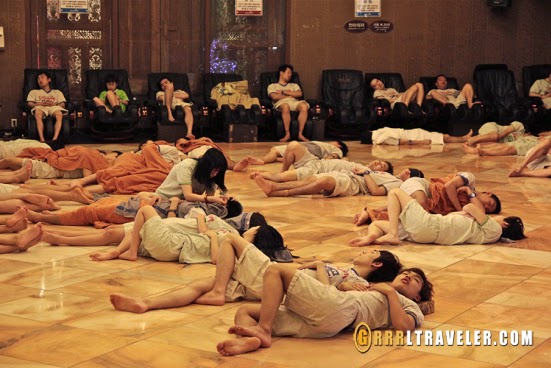
Table of Contents: 42 Things to Know Before Traveling Korea
- 0.1.1 1. Is Korea Safe?
- 0.1.2 2. Korea’s big brother is CCTV
- 0.2.1 3. Be prepared to walk …a lot.
- 0.2.2 4. Taxis are an inexpensive
- 0.2.3 5. Korean alphabet is easy to learn
- 0.2.4 6. Learn Korean travel survival phrases
- 0.2.5 7. Try a Korean accent.
- 0.2.6 8. Korea’s Top Airlines are Korean Airlines and Asiana Air
- 0.2.7 9. Food in Korea is spicy.
- 0.2.8 10. Korean food is inexpensive
- 0.2.9 11. Kimchi is served at every meal.
- 0.2.10 12. Breakfast is a must.
- 0.2.11 13. Unlimited Korean side dishes
- 0.2.12 14. Bibimbap is a foreigner’s best friend.
- 0.2.13 15. Drinking cup sizes
- 0.2.14 16. Soju
- 0.2.15 17. Live and Fresh Foods
- 0.2.16 18. Is there tipping in Korea?
- 0.3.1 19. Where are the toilets (and toilet paper) in Korea?
- 0.3.2 20. The public bathroom bar of soap
- 0.3.3 21. Toilets in Korea
- 0.3.4 22. Where are the trash bins in Korea
- 0.3.5 23. Public spaces are not heated during winter
- 1.0.1 24. Korean culture respects formality and tradition.
- 1.0.2 25. Plastic surgery is popular.
- 1.0.3 26. Pushing and shoving is not rude
- 1.0.4 27. Spitting happens
- 1.0.5 28. Koreans make offerings with both hands
- 1.0.6 29. Age matters in Korean culture.
- 1.0.7 30. No Nose Blowing
- 1.0.8 31. Be prepared to drink until the boss goes home.
- 1.0.9 32. Don’t want to drive drunk? Call a driver
- 1.0.10 33. Koreans love noraebang
- 1.0.11 34. Warm Water vs Iced water
- 1.0.12 Shopping & Activities
- 1.0.13 35. Korean is a gifting culture
- 1.0.14 36. Visit a Korean bathhouse
- 1.0.15 37. Cafe culture in Korean culture is crazy
- 1.0.16 38. Hiking is a favorite pastime and fashion sport in Korea.
- 1.0.17 39. Skincare stores are amazing
- 1.0.18 40. Getting a perm in Korea!!!
- 1.0.19 41. Experience living like a monk with temple stays
- 1.0.20 42. Shopping in Korea is fun.
- 1.1.1 Related Posts on Trip Planning for Korea
- 2 Watch Essential Travel Tips for Korea (video)
1. Is Korea Safe?
2. korea’s big brother is cctv.
When I thought I lost my passport and went to the front desk because I knew it was the last place I took it out, the manager went to the security room and then after 15 minutes, returned and told me that from the CCTV footage, he noticed I had taken my passport up to the room! When I scoured my room, I discovered my passport had somehow fallen behind a dresser bureau.

Getting Around Korea
3. be prepared to walk …a lot..
Korean seniors are fit and active people; they make westerners look slothful. If you’re taking the metro in Korea, prepare to climb stairs …sometimes, multiple levels. Korea has escalators, but usually it’s for intense climbs– hiking a floor or three with luggage does not get sympathy from Korea.
Tip: Wear very comfortable walking shoes. If you are traveling with elderly parents, take taxis instead.
4. Taxis are an inexpensive
Next to the metro, taxis are an inexpensive way to get around. When I lived in Korea, I used taxis a lot; often for grocery shopping. The cost is almost 1/3 the price of a New York City and you will get to your location quick and easy, especially if you are carrying shopping bags and luggage.
Read Essential Travel Tips for Seoul
5. korean alphabet is easy to learn.
Hangul is the Korean alphabet and it is easy to learn. It consists of 24 characters and if you’re ambitious you can learn it in a day! While it is not necessary to learn hangul for your vacation, it can facilitate easy when reading some signs, as the characters are efficient when you sound them out. In fact, it is easier to pronounce Korean when you read its alphabets versus write it in English. Read how to get Hangul on your Mac computer
6. Learn Korean travel survival phrases
Learn survival phrases below as a basic foundation for your trip as it may come in handy. If you’re in Seoul, English is a little more common, especially around the younger generation. Outside Seoul , like Daegu or smaller cities , spoken English language gets to be less. Not to worry, Koreans try their best to help and if you’re lost, they might even lead you by the hand to your location.
Read my post on unblocking language barriers in travel
7. try a korean accent..
Here’s a list here . Read how to deal with language barriers .
Here’s a quick primer in Korean pronunciation. The Korean language does not have hard sounding consonants. Instead, certain hard sounding consonants will be merged together to make the same alphabet. Thus, you’ll often see Koreans spell the same word differently. Let’s take cities Daegu /Taegu or Busan /Pusan:
8. Korea’s Top Airlines are Korean Airlines and Asiana Air
Korean Airlines and Asiana Airlines are Korea’s two premier airlines and are highly recommended. The hospitality, food and complementary in-flight services are top notch. Flight attendants are beautiful and immaculately dressed with a smile as Korea prides itself on beauty, hospitality and a peaceful experience.
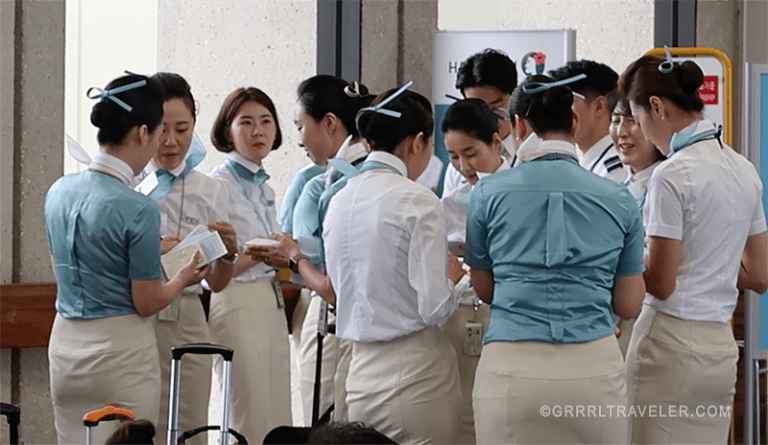
9. Food in Korea is spicy.
Korean food is super delicious, due to the fish and oyster sauces and garlic but just a warning~ it can be very spicy and by spicy , I mean hot. You might break a sweat, your nose will run and you’ll want to blow it…. but don’t!!!
Tip: If you can’t handle a lot of spice, consider sushi restaurants, western-style restaurants, kimbap restaurants (kimbap aka sushi rolls) or order dishes like chook (aka rice porridge), duenjanjigae (soybean soup).

10. Korean food is inexpensive
If you’re on a budget, you’ll find Korean food to be very easy on your wallet. From street food from under $1 to a small meal for under $5, you can get an insane amount of food. Some of my favorites are: soon dubu jigae (soft tofu stew), doenjang jigae (soy bean stew), bibimbap , bibimgooksu and a whole bunch of vegetable side dishes.
Tip: Take a Korean cooking class and market tour in Seoul
11. kimchi is served at every meal..
Kimchi is the national vegetable and a favorite panchan (aka side dish) you’ll see accompany every meal.. including breakfast . It is a tradition passed down through the women of the household and there are kimchi making seasons in the fall season, when you’ll see incredibly large cabbages being sold at supermarkets. Korean women still gather with their female family members to prepare kimchi for the season. However, modern Korean women who are too busy will simply buy it from the supermarket. There are many contradictions about its healthy properties which you’ll hear, from curing cancer to being too high in sodium. In either case, kimchi is spicy but super flavorful; it is a strong flavor you will not find anywhere outside of Korea.
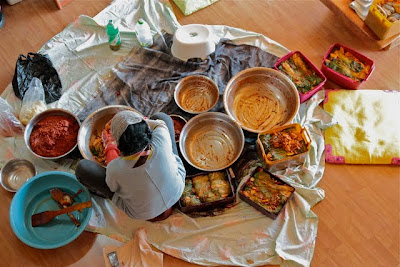
12. Breakfast is a must.
When I lived in Korea, every school morning, my Korean co-teachers would greet me with “Good morning, How was your breakfast?” as I held my banana smoothie shake breakfast in my thermos. I didn’t have the heart to tell them I didn’t eat it.
Koreans see breakfast as the most important meal.
13. Unlimited Korean side dishes
Korean foods come with a bunch of complementary side dishes (aka panchan or ban-chan ) to add flavor and variety to the meal. They are part of the free service and you can order as much of them as you want.
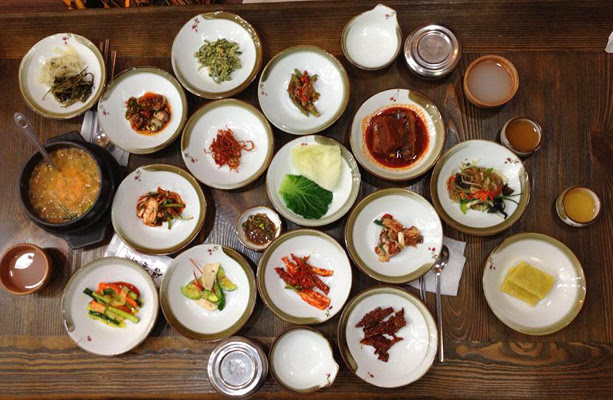
14. Bibimbap is a foreigner’s best friend.
You might be timid about trying Korean food, especially if there are no English menus or you have a special diet. Bibimbap is an easy dish to love. It’s a mixture of rice with soy beans, namul , kimchi , veggies, occasionally meat or an egg, sesame oil and spicy red gochujang sauce. You mix them together and you’ve got bibimbap which is an explosion of fresh, spicy, salty and juicy flavors in each spoonful!
15. Drinking cup sizes
One thing that was very difficult for me to get used to in Korea was the size of the drinking cups. Americans love big drinking cups, but in Korea, the average sized drinking cup fits in your palm. It’s like kiddie cup size.
Soju is the preferred alcoholic beverage in Korea. Served in a shot glass, soju is similar to sake in that it is made from rice and is quite strong. It is stronger than beer, another favorite alcohol in Korea. Soju bombs are a popular drink to get slaughtered. Soju shots are dropped into a glass of beer and the real party begins.
17. Live and Fresh Foods
Koreans like foods fresh . Sometimes, that translates as “alive and still squirming”, like live octopus. At Jalgachi fish market restaurants in Busan , when you order sashimi, they sometimes bring the plate with the fish tail still writhing. But on tamer notes, this can also mean that shopping for product in grocery marts, you might have some produce, like potatoes, will fresh dirt on it and meat sold at grocery stores, is not always pre-wrapped.
Tip: Take a Busan day trip with Jalgachi Market visit.
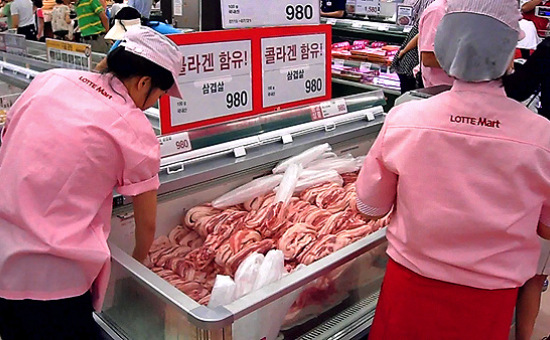
18. Is there tipping in Korea?
Similar to Japan , Korea is a no-tipping country. You are not expected to leave a tip and in some situations, it is considered rude. However in more western establishments, there is a growing awareness of western tipping culture and some Koreans will understand it is done out of appreciation.
Navigating Public Spaces
19. where are the toilets (and toilet paper) in korea.
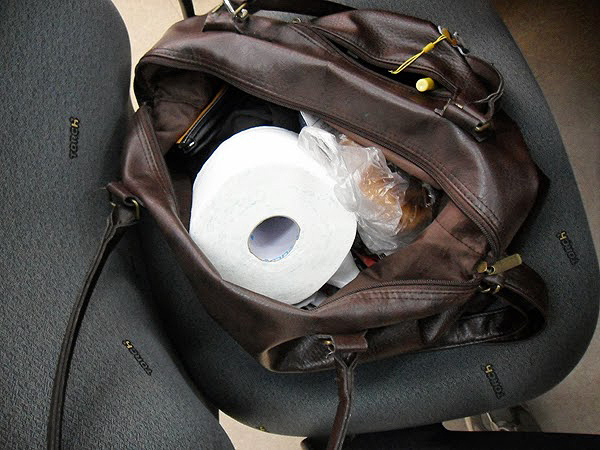
20. The public bathroom bar of soap
One thing you’ll find in Korean public bathrooms are a community hand soap. No, not the dispenser type (although in upscale Seoul bathrooms, you may find it). It’s a rounded bar of soap sticking out from the wash basin and you wet your hands and rub them over the soap to get it on you. It’s a slight turn off for Westerners who prefer their soap to not share the hands of others who have used the bathroom.

21. Toilets in Korea
In Korea you’ll find three types of toilets: a squat toilet, a standard western toilet, a Toto toilet .
The Toto Toilet is a favorite of many. It is a luxury version of the standard western toilet but with side controls which offer bidet and drying features. Some even come with seat warming which is ideal during winter.
Squat toilets are typically the old-style Korean toilet and you’ll find them in older establishments, such as older restaurants, schools, parks, etc.. Often you’ll find a few obligatory squat toilets but many are being replaced by western toilets in large cities. Seoul, Busan and nice shopping malls, you may find more Toto toilets.
Read How to use a Squat toilet
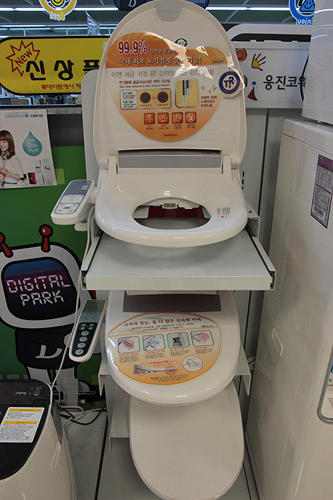
22. Where are the trash bins in Korea
Toilets are more ubiquitous than trash cans. You’ll find toilets in many places but where are the trash cans? You may find some in metro stations by the the drink vending machines or in fast food eating establishments and restaurants. But generally Koreans hold them in their bags until they find an actual trash can.
Read more Korean quirks which shock you.
23. public spaces are not heated during winter.
If you’re traveling Korea in the winter, pack a lot of warm clothes. Not only does Korea get brutally cold but there is not heating in public places such as bathrooms, school hallways/bathrooms, train or bus stations, metro stations, etc..
Koreans have a thing with using their heater. Houses are kept warm with ondol (floor heating), but that is the only place you will find consistent warmth and when I taught at a Korean public school, we could only run our classroom heater when the students had class in it.
Korean culture and etiquette
24. korean culture respects formality and tradition..
Greetings and formalities are always appreciated. You’ll be saying Hello and Thank you a lot. Anyeong-haseyo and Kam-sa-hamneda!

25. Plastic surgery is popular.
Koreans do not blink where plastic surgery is- it is popular with both young and mature. The outward appearance has its place in society and Koreans see good physical features as a stepping stone to success and societal placement. Double eyelid surgery, nose jobs, jaw shavings, botox injections are common. Youth are occasionally gifted plastic surgery for passing an exam and there are even mother-daughter discounts. Plastic surgeons in Korea are quite good and many travelers plan their vacations around plastic surgery procedures and medical tourism .
Living in Korea, I’ve had many Koreans ask if my eyelids were natural; some even poked their finger over my eyelids to touch it!
26. Pushing and shoving is not rude
In western society, pushing and shoving is considered rude, but in a crowded train, it is done a lot in Korea. People have places to be and can be urgent to get there; do not be offended if your pokiness is given a little shove.
27. Spitting happens
Older Korean men occasionally love to hock a loud one and spit on the ground. In Korea, this is acceptable and Koreans are unfazed by it.
Tip: I would not place my luggage or bags on the ground.
28. Koreans make offerings with both hands
29. age matters in korean culture..
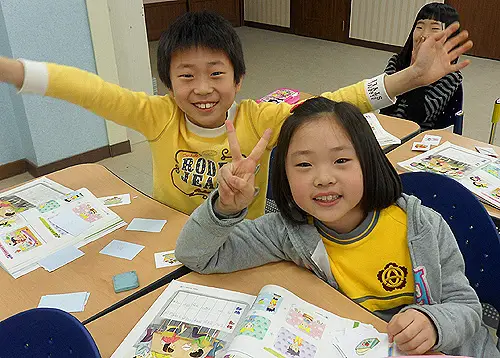
30. No Nose Blowing
31. be prepared to drink until the boss goes home..
Soju, makkeoli (rice wine) and maekju (beer) are the popular alcoholic beverages in Korea. I’m not sure why drinking is so big, but it’s all about bonding. And then hierarchy. If you’re going for business purposes, know it’s impolite to refuse a drink. If you’re working with a Korean company, then hope your drinking levels are up to standard, because you won’t be able to leave until your boss does.
How did I fare when I was there? Well, I’m absolutely not a drinker, but thankfully my Korean teacher was more western and did not drink herself. She explained it was a western misunderstanding and it is against my religion. But otherwise, Koreans will expect you to drink.
32. Don’t want to drive drunk? Call a driver
As Koreans are heavy drinkers and understand that it is dangerous to drive drunk, so they hire driver services. You call a driver service and the driver appears at the bar or restaurant and drives both you and your car home.
33. Koreans love noraebang
Noraebang (karaoke singing) is a popular form of relaxation and social entertainment in Korea. Koreans love to sing and are crazy about it. It is a part of their bonding culture. Karaoke rooms range with having disco lights, musical instruments like tambourines and a television monitor playing a video with words to the song.
The first week I started work at my Korean elementary school, we had a teacher’s welcome dinner and we were each handed the microphone and were required to sing a song. It is part of being a part of community.
34. Warm Water vs Iced water
Iced water and drinking water are not always common to restaurant experiences. In fast restaurants, you may have to go to the water cooler to pour your own cup. Iced water is not a popular way water is taken, quite possibly due to the fact that health-wise, it’s shocking to the system. Koreans are health-conscious people, so the water will usually be room temperature or hot.But water is generally taken after a meal and often, it’s hot to warm water, which helps aid digestion.

Shopping & Activities
35. korean is a gifting culture.
Korean culture can appear generous~ it seems they are always generously giving gifts. You’ll experience it and you it will feel too good to be true~ you’ll wonder what the catch is. From unlimited panchan (side dishes) at the restaurant to skin care shops which give you a handful of samples or face masks for stepping into their store to 1+1 sales where you get an extra product or sometimes, extra gift with your purchase, Koreans constantly seem to gift each other. Many of these gifts are a marketing incentive to keep customers coming back for more.
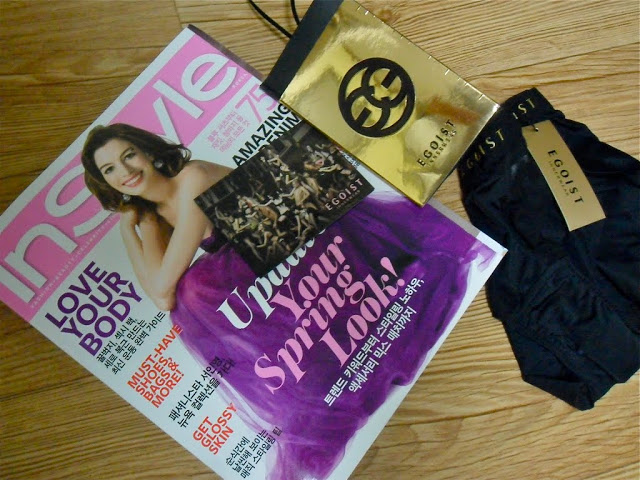
36. Visit a Korean bathhouse
Korea has public bathhouse spas (aka jjimjilbangs) that are inexpensive, fun, packed with entertaining rooms like sauna rooms with crystals, charcoal, salt, ice. They are popular hang out spots and a place where families and friends like to bond. It The best thing is that some are open for 24 hours. They give you a storage locker for your belongings and spa clothes to wear if you want to spend the night. Check out my Korean bathouse guide for more details.
Tip: Get a Discover Seoul pass head of time.
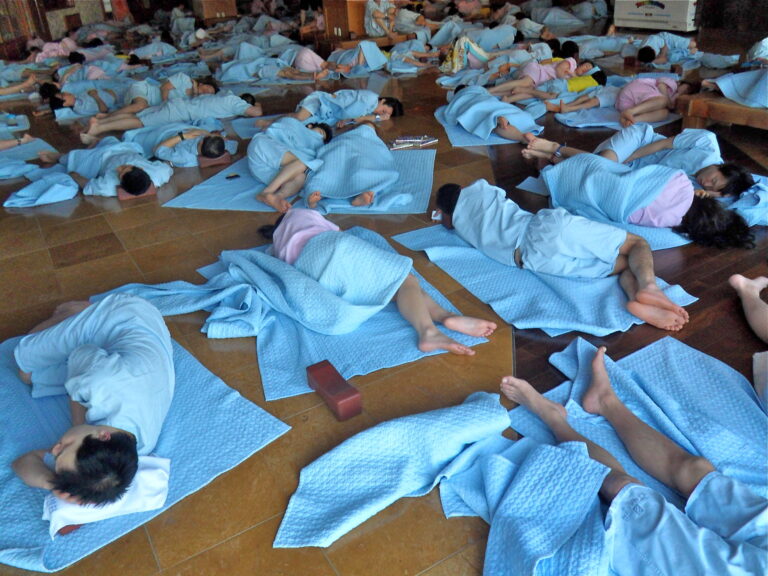
37. Cafe culture in Korean culture is crazy
Korea is crazy about coffee and cafe culture. They likely have the most cafes of any country and many are themed with a quirky, artistic and original flair. You’ll find stylish to thematic cafes from Snoopy, Hello Kitty to a cat and meerkat cafe!
Tip: If you think you’ll want to explore Korea’s thematic cafes, check out some of their crazy thematic museums! Jeju Island has some of the best and weirdest museums.
Read: Hongdae’s thematic cafes
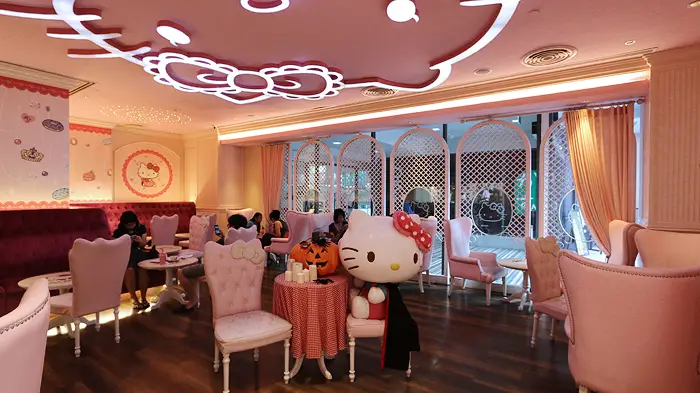
38. Hiking is a favorite pastime and fashion sport in Korea.
Hiking mountains in Korea are a favorite pastime with Koreans, such that you’ll often find hiking gear stores. It is common to see 60-year Korean men and women trotting up steep slopes that might have you wheezing. Often they will be dressed fashionably in neon pants and windbreaker jackets, hiking poles, backpacks, and sun hats. If you are an avid hiker you’ll love exploring all the hiking trails Korea has to offer! Walking trails are an element of Korea.

39. Skincare stores are amazing
Beauty is skin deep as the saying goes and in Koreans take this in stride. There are a plethora of skincare stores to aid your beauty and restore your skin’s moisture, collagen, youth, dewy appearance, etc… I fell in love with skincare stores and Korean BB cream . Many Korean skincare products use the finest ingredients, touting herbal ingredients, and lovely fragrances and they feel remarkable going on! Best of all, many are quite effective and inexpensive! Popular skincare stores in Korea: Tony Moly, Nature Republic, The Face Shop, Skin Food, Olive Young , etc..

40. Getting a perm in Korea!!!
Korea has two favorite salon treatments that you won’t find elsewhere~ the magic straight and magic volume . These perms are treatments which will seal in a curl or straighten your hair pin-straight so you won’t have to worry about blow-drying and styling for half a year! Treatments can take several hours and cost $150-200 USD, but it’s highly effective and worth every penny! Read about my experience with Korean perms
41. Experience living like a monk with temple stays
In Korea, some temples offer temple stay retreats, where you can learn meditation and live and dine like Buddhist monks. It is one of the coolest cultural experiences I’ve had in Korea, but know you must abide by the scheduled training and be okay with vegetarian food. Read more about my temple stay experience .

42. Shopping in Korea is fun.
I’ve never known myself to be much of a shopper, but Korea makes me love shopping! From K-drama paraphernalia to cool Korean fashion and cute chachkis, it’s easy to lose your won in Korea.
Travel Resources for your Korea trip
Booking.com – Hotel bookings. No cancellation fees Safety Wing – affordable travel insurance with COVID coverage NordVPN – Online security and the ability to watch Netflix. Use “grrrltraveler” for 70% off 3-year plan + 1 month free Klook – Book tours in Korea and Asia Get your Guide – book tours in Korea Korea SIMs – for prepaid travel SIM Cards Korea Rail Pass – for getting around Korea
Related Posts on Trip Planning for Korea
Cool souvenirs to buy in Korea ( Part1 & Part 2 ) Best things to Do and See on Jeju Island 9 Popular Neighborhoods of Seoul
5 Secret Places in Korea How to rent mobile phones in Korea Best Mobile Apps for traveling Korea
What are your top travel essentials for Korea? What are essential things to know before traveling Korea?
Watch Essential Travel Tips for Korea (video)
Pin to pinterest.
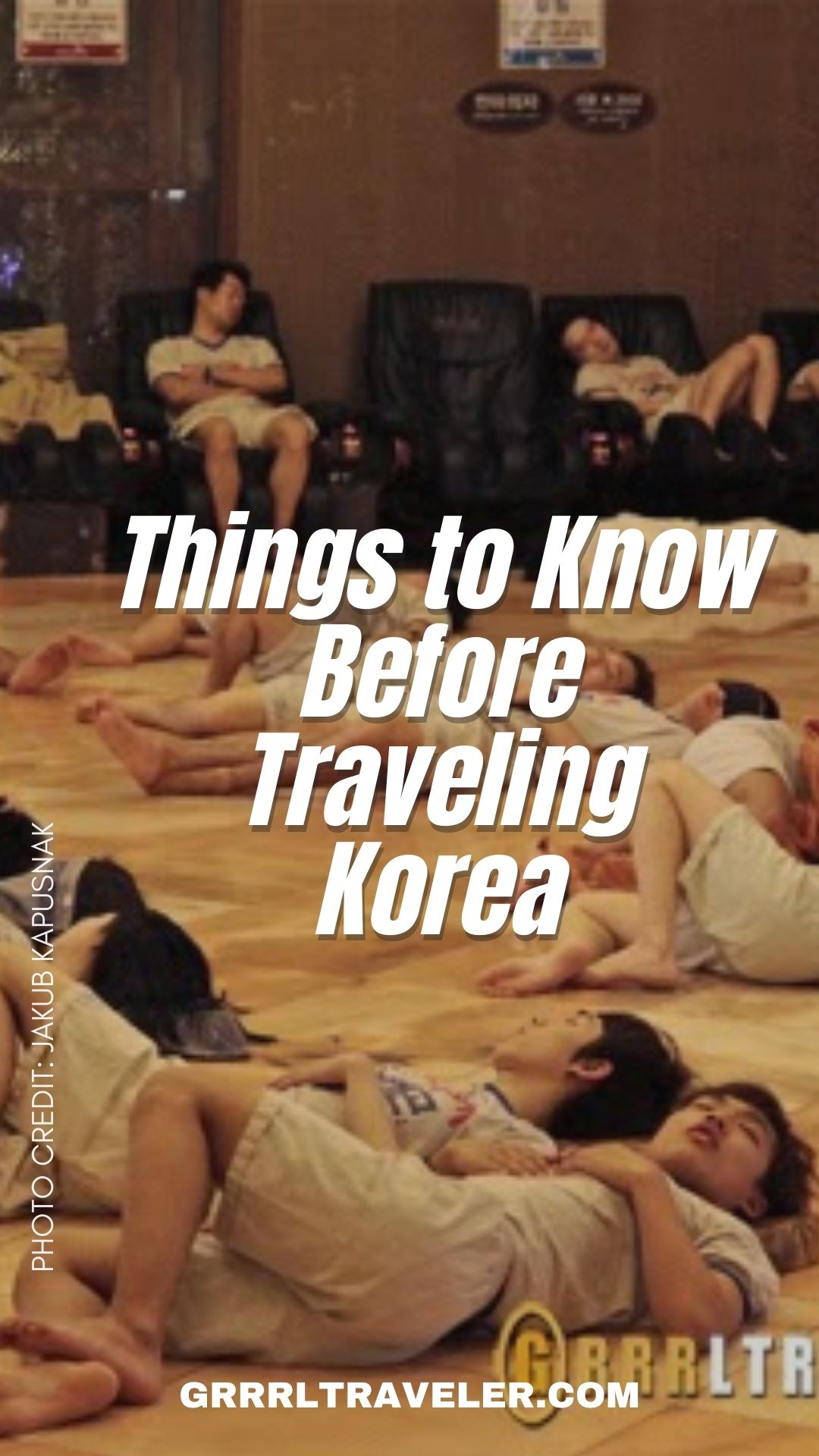
My Travel Survival Cheat Sheet
- eSim I’m using to stay connected abroad. Activate it before or on your trip!
- Skyroam – Global wifi (take 10% off with referral code GRRRLTRAVELER )
- Trip Insurance Finder Tool for budget travelers looking for trip insurance to fit specific needs.
- I get my adventure trip insurance from World Nomads trip insurance (they cover travel theft)
- Expedia for great weekend trip package deals
- Take your yoga traveling and book a yoga retreat/ training .
- Book hotels without a cancellation fee. Use this Hotel Comparison Tool to find the lowest prices!
- Book chic hostels with Hostelworld
- Ditch and store your luggage at local businesses for under $10/day
- 12goAsia Book trains and buses.
- Discover Cars finds the best car rental price quote.
- GRRRLTRAVELER Group Adventure trip : Travel with me beyond YouTube.
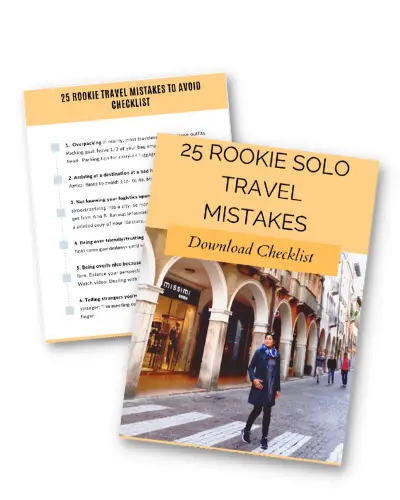
Download my 25 Solo Travel Mistakes to AVOID Checklist
And Get my Travel Survival Blog Updates
Related Posts
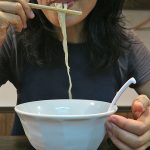
8 Things you NEVER Knew about Eating in Japanese Ramen Shops
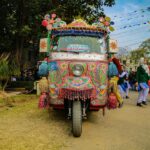
33 Things to Know before traveling Pakistan | Pakistan Travel tips
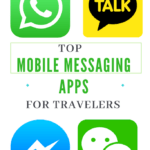
Top Mobile Messaging Apps for Travel
Group adventure trips 2024.
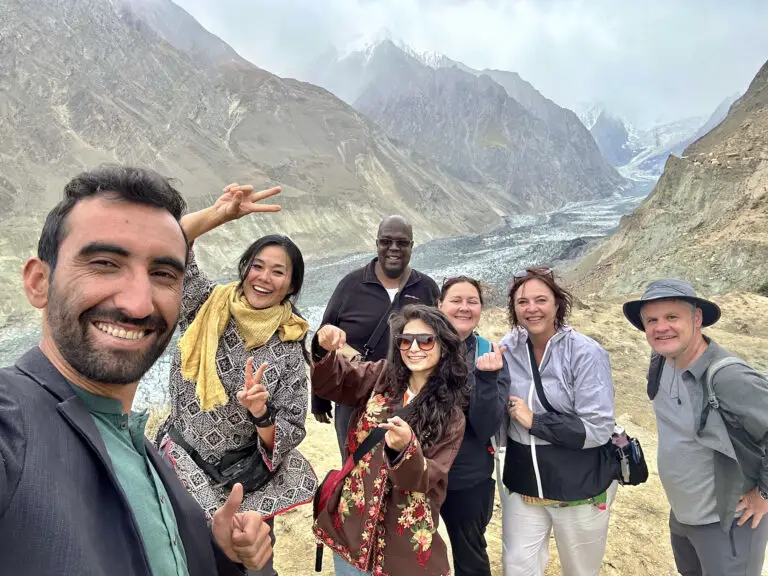
KEEP ME ON THE ROAD
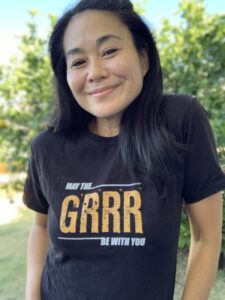
Solo Travel Survival Tools
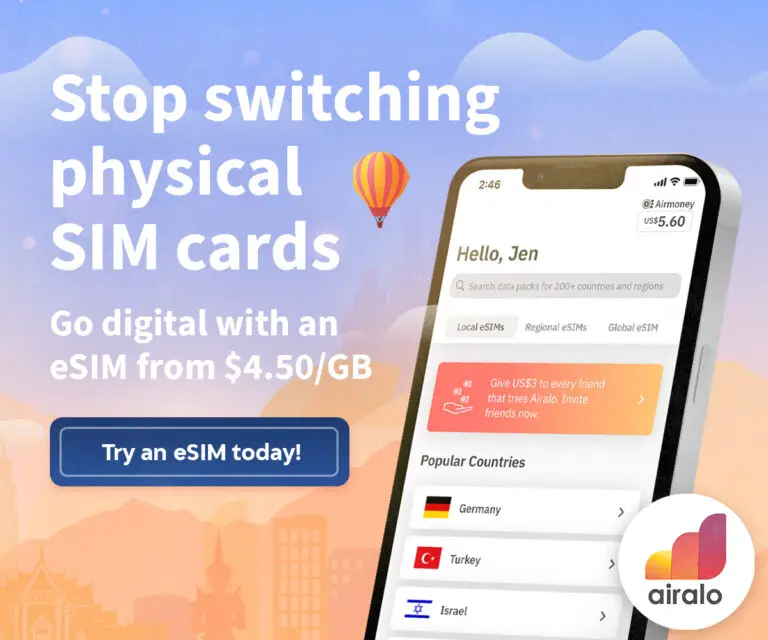
YouTube Mentoring & Services

My Latest Gear Review
I'm Christine! I film my travels 100% alone, so get confident traveling alone too!
GRRRL Discounts We Love

70% OFF 3-year plan + 1 month FREE: Use code: GRRRLTRAVELER

Copyright & Affiliate Link Disclosure
All content on is this site ©GRRRLTRAVELER. Artwork on this site from contributors have special permissions for our use.

- Meet the Team
- Work with Us
- Czech Republic
- Netherlands
- Switzerland
- Scandinavia
- Philippines
- South Korea
- New Zealand
- South Africa
- Budget Travel
- Work & Travel
- The Broke Backpacker Manifesto
- Travel Resources
- How to Travel on $10/day
Home » Asia » South Korea » 26 South Korea Travel Tips You Need to Know! • 2024
26 South Korea Travel Tips You Need to Know! • 2024
South Korea is a tiny country that punches way above its weight in a number of arenas, and that extends to being one of Asia’s greatest travel spots!
The land of KBBQ, the world’s fastest internet speeds, futuristic cities, and a breathtaking mix of ancient and modern, this is one of the best countries in Asia to travel in, and yet it’s criminally underrated.
I spent a few years calling this country home, and I’ve created the ultimate Korea travel guide to help you navigate your way through this gem of northeast Asia.
Whether you’re a first-time traveler or a return visitor, here’s a list of 26 South Korea travel tips you need to know before stepping off the plane!
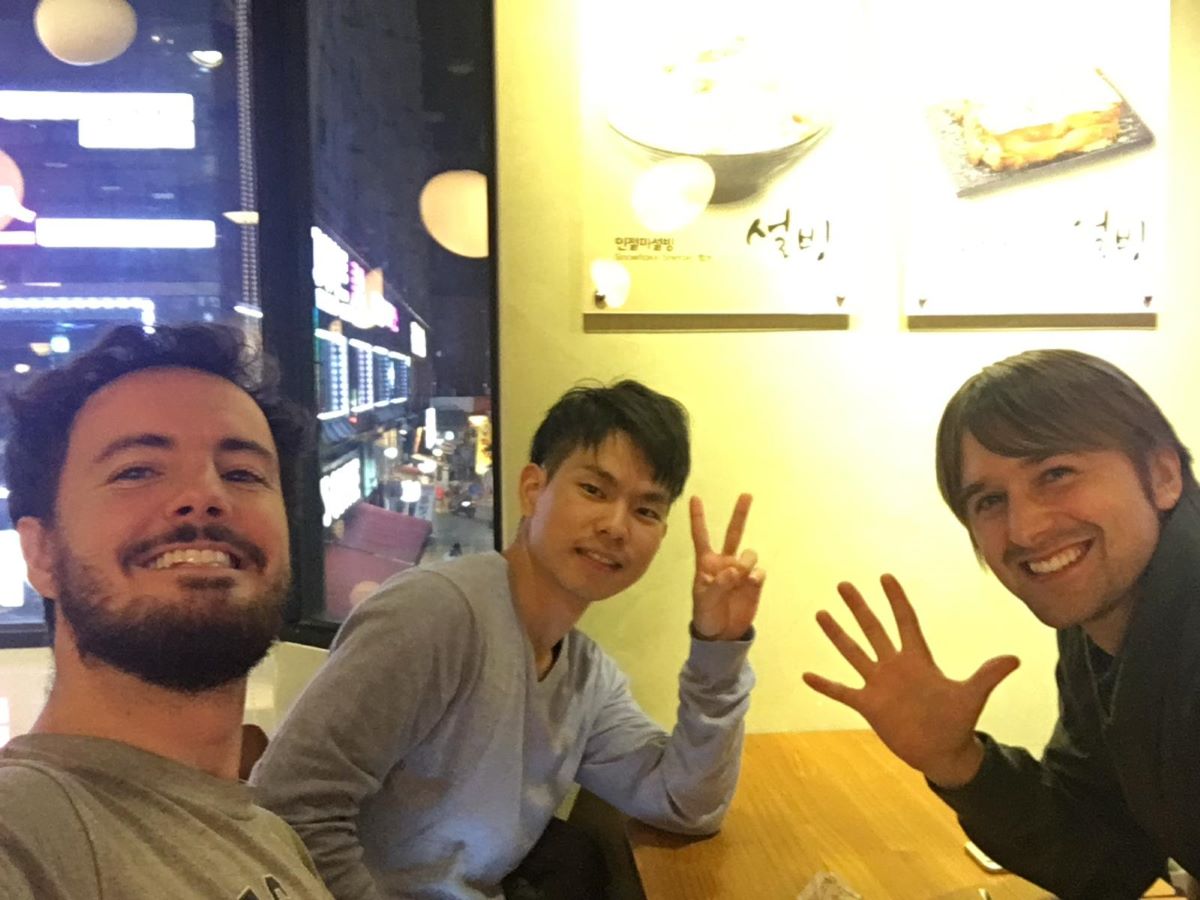
The Broke Backpacker is supported by you . Clicking through our links may earn us a small affiliate commission, and that's what allows us to keep producing free content 🙂 Learn more .
26 EPIC South Korea Travel Tips
After years of living and traveling in South Korea , here are some of the most important tips I’ve learned along the way!
1. Download These Apps!
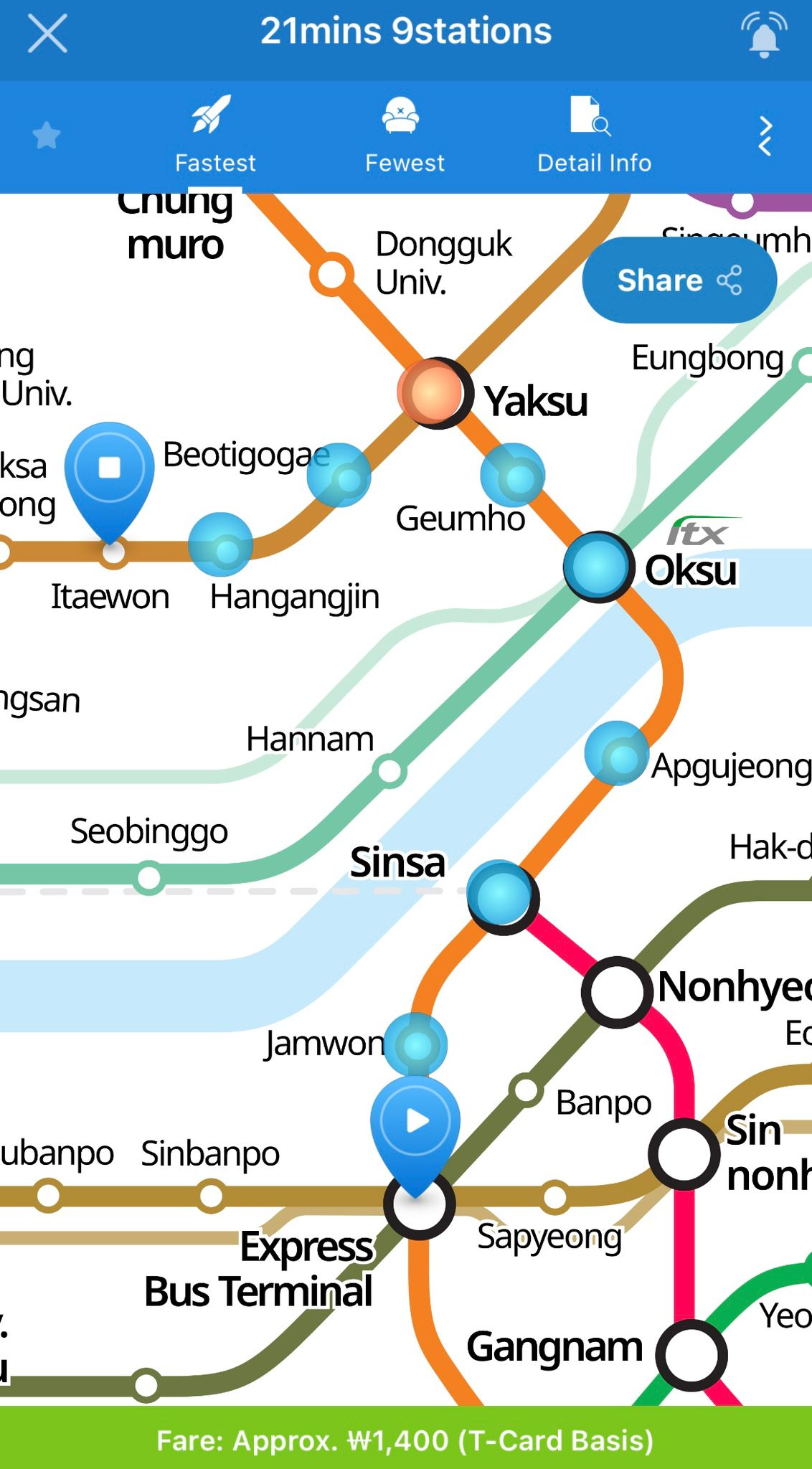
South Korea is one of the most tech-savvy societies on the planet, and you’re going to need to keep up. These apps are just a few of the essentials you want to have to make your trip to South Korea the unforgettable experience it should be.
Subway Korea
Not the most exciting app to download but crucial all the same, this is going to make your time in Seoul so much easier.
With a full, interactive map of Seoul’s ( Korea’s capital city ) absolutely sprawling subway system, Subway Korea tells you exactly which station you need to begin and end at, which stations to transfer at, and how long it’s going to take you from start to finish.
You can find this on the App Store for both Android and iPhone, and a companion app exists for Busan’s smaller (but still pretty big!) subway system.
When it comes to Korean, Google Translate can give you some hilariously bad translations and while that’s always entertaining, you’re going to need to be able to communicate with more than just hand gestures!
That’s why you need to download Papago . It serves many languages and its Korean translations are far better than Google’s, so this is going to make traveling to South Korea for the first time go much smoother.
You can get around places in Seoul with only English, but beyond that you’re going to need some help which makes Papago a must-download.
In my experience, Google Maps isn’t too helpful in Korea, and that’s why you’ve got to download Kakao Maps!
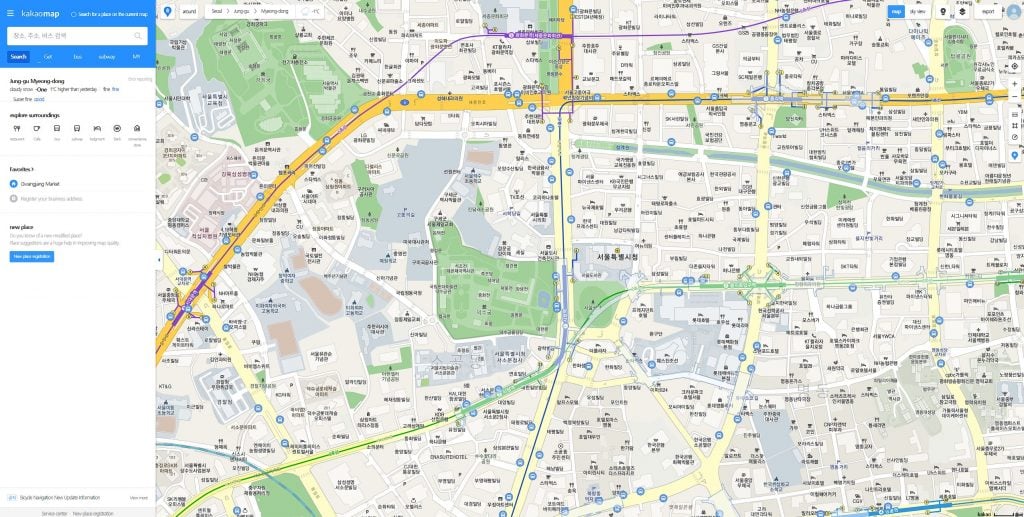
An app made by a Korean company, Kakao Maps is going to provide you with a level of detail, precision, and helpfulness that Google Maps simply can’t deliver.
Whether you’re exploring the city or out in Korea’s gorgeous countryside, this app is the best option for navigating the country.
2. Learn Some Basic Korean Phrases
Having a solid translation app is all well and good, but it’s also important to memorize a few basic phrases in Korean just in case your phone doesn’t come through for you.
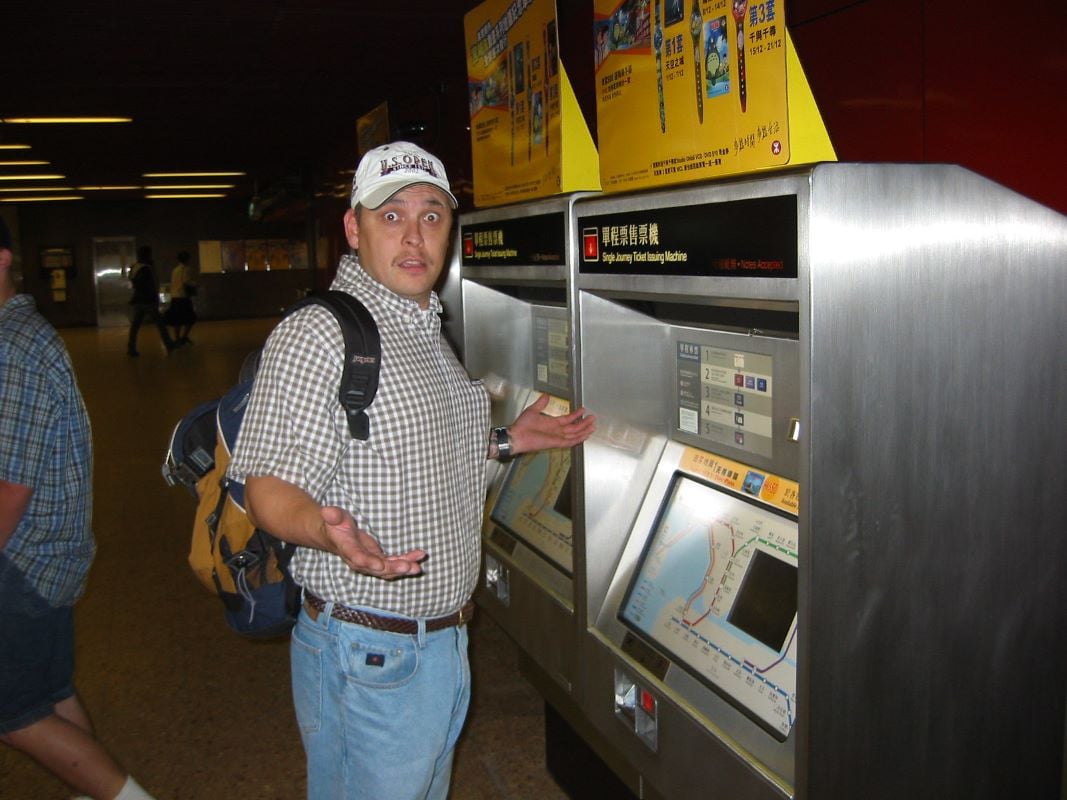
Anyeong Hasaeyeo – Hello
(You might have heard anyeong as meaning “hello” in Korean before and while that’s true, it’s important to say the full phrase because shortening it to anyeong can be seen as disrespectful.)
Kamsamnida – Thank you
Kohn Bae! – Cheers!
Odi / Odi…? – where / where is…?
Hwajangshil – Bathroom
3. Explore the Dramatic East Coast
Staying in Seoul is great, but the country has SO much more to offer.
Korea’s east coast in particular flies far under the radar for most foreigners and isn’t visited nearly enough. But I can attest that it’s easily one of the most epic regions in Korea!
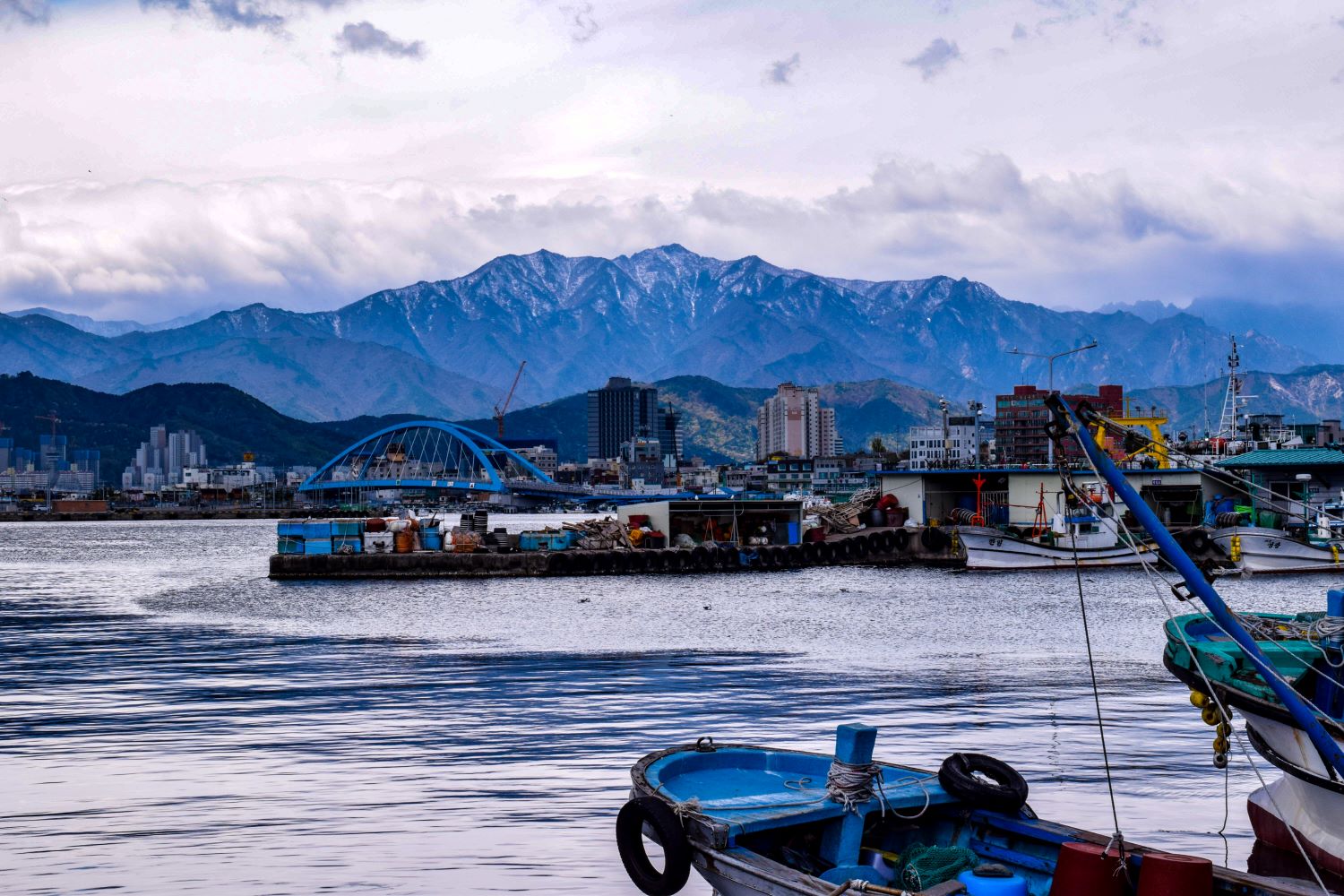
With tall, jagged peaks rising straight out of the sea, the east coast is the perfect place for travelers looking to escape Korea’s ultramodern cities and get out to explore the country’s natural wonders.
The east coast holds some of Korea’s best hiking spots, and Seoraksan National Park in particular is a favorite of mine, especially during winter and spring.
4. Korea is a Shopper’s Mecca
If you’re keen on shopping for the latest fashion or newest tech, South Korea is pretty much unbeatable.
Between Shinsegae, Lotte World, and a TON more, Korea has limitless options for shoppers of all stripes.
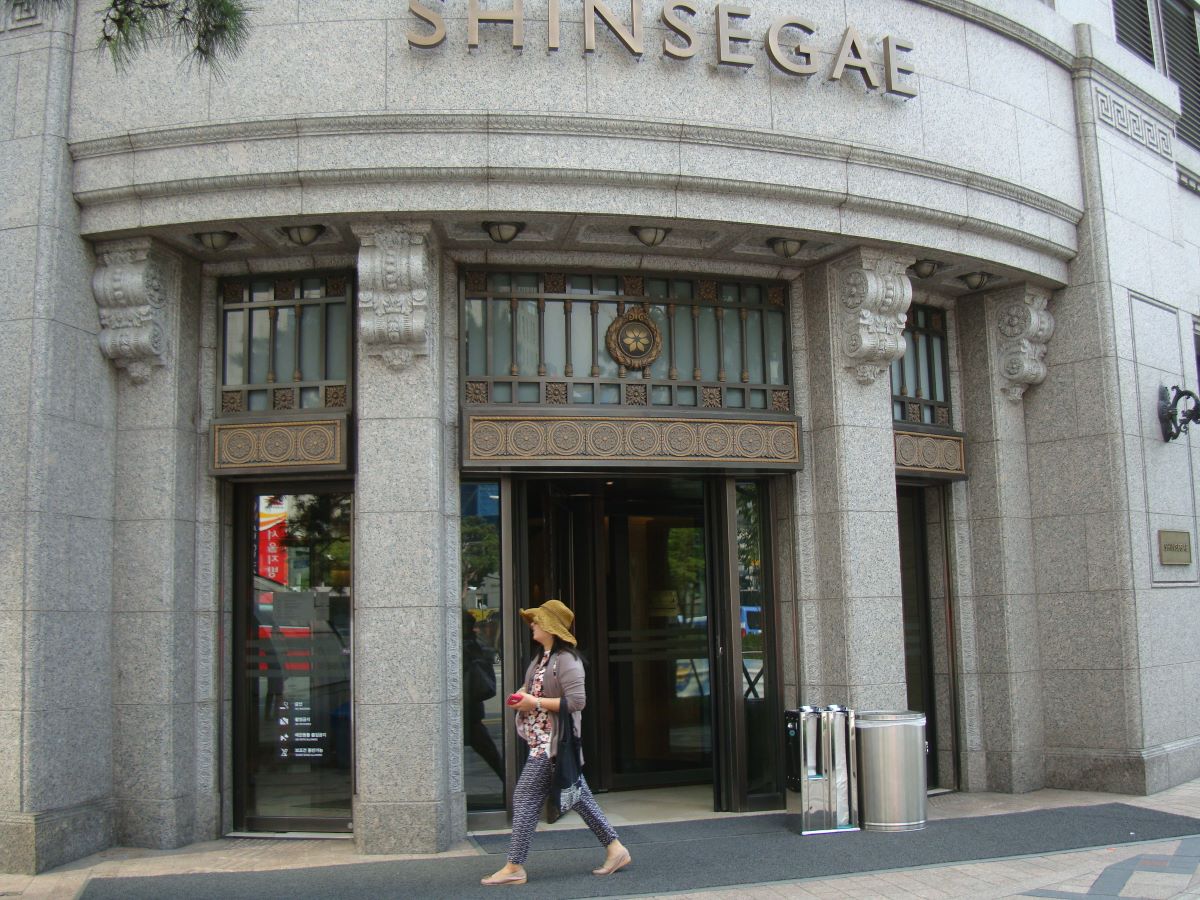
Shinsegae and Lotte are two absolutely massive department store chains in Korea that house countless stores within their walls, and there are so many more on top of those two to choose from and explore.
Your choices really are infinite.
The one thing you need to keep in mind though is that you should be prepared to spend.
Korea is not a cheap country in general, and that extends to its shopping scene. If you’re going to buy a higher-end item here, be ready to shell out a lot of cash.
5. Avoid Drinking Tap Water
Sadly, Korea isn’t a place where you can drink the tap water worry-free. While many places in the countryside have springs with fresh water straight from the mountains, you will need to have a filtered water bottle for your trip!
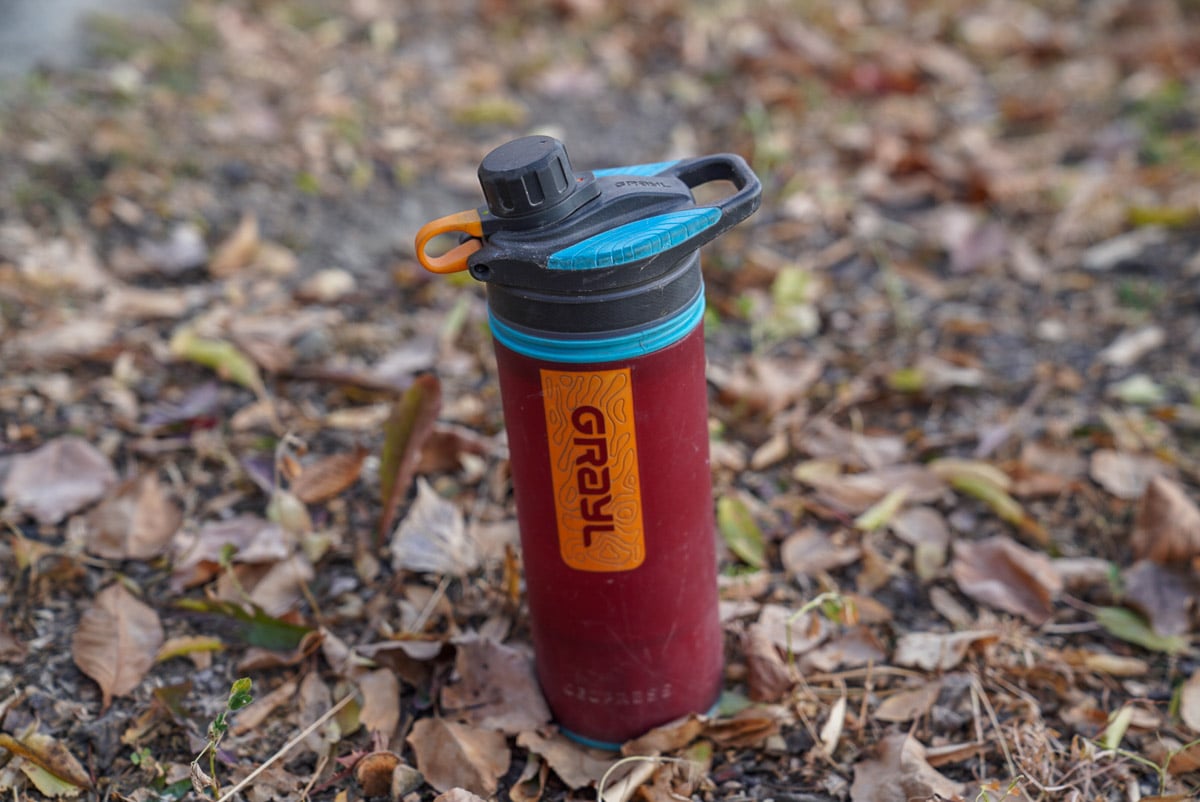
That’s why we strongly recommend you invest your hard-earned cash in getting a Grayl Filtration Bottle to accompany you on your travels!
It’s a reusable, zero-waste system that allows you to drink water from pretty much anywhere and in the long run, will save you countless dollars that you would have otherwise spent on water bottles, filters, and purification tablets.

Drink water from ANYWHERE. The Grayl Geopress is the worlds leading filtered water bottle protecting you from all manner of waterborne nasties.
Single-use plastic bottles are a MASSIVE threat to marine life. Be a part of the solution and travel with a filter water bottle. Save money and the environment!
We’ve tested the Geopress rigorously from the icy heights of Pakistan to the tropical jungles of Bali, and can confirm: it’s the best water bottle you’ll ever buy!
6. Learn How to Get Around in South Korea
Nearly every corner of South Korea is connected by an intricate web of trains and buses that link large cities like Seoul and Busan in the south with the tiny villages and hamlets in the countryside.
Public transportation in Korea is fantastic: it’s reliable, clean, convenient, and always on time!
Even if you’re waiting at a bus stop in the middle of nowhere, if the schedule says a bus arrives at 8:30, it will be there at 8:30, give or take a few minutes.
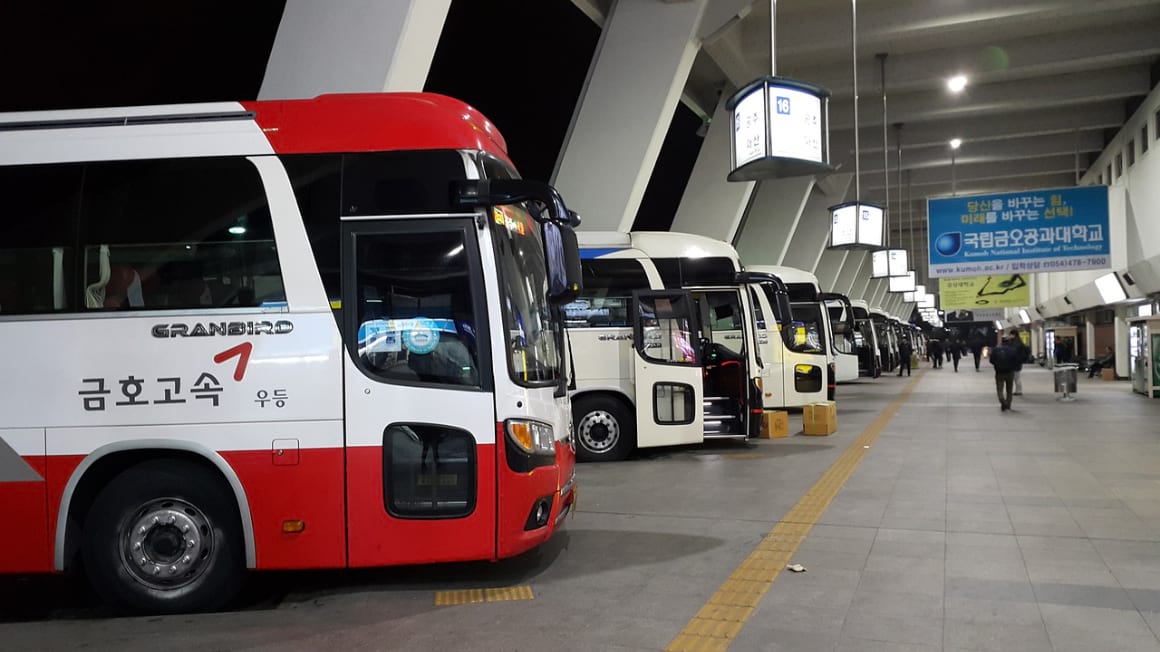
On that note, if you’ve got a bus or train ticket departing at a certain time, make sure you’re there early because you will get left behind if you’re not there on time!
That brings me to one of the most important points of this piece: I highly recommend that you do NOT rent a car or motorbike in Korea if you’re considering it.
While the roads are modern, impressive feats of engineering, drivers here can often be very unpredictable and that can lead to some dangerous situations on the road if you’re not used to it.
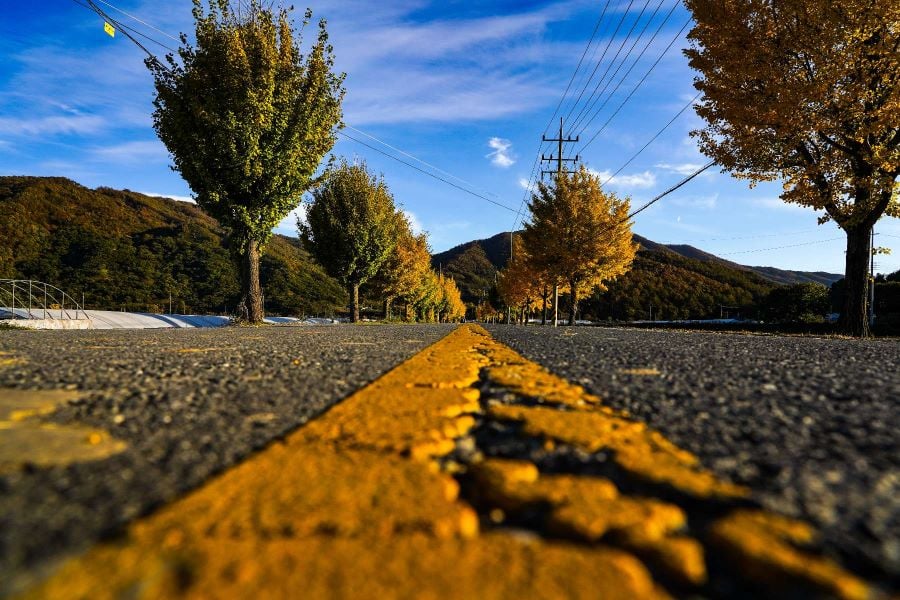
A one-hour motorbike ride between two cities in Korea felt longer and scarier to me than a nine-hour ride on Pakistan’s Karakoram Highway, and anyone who’s made that trip can tell you how much that statement means!
It’s for that reason that I think you should avoid getting your own wheels in Korea, and that risk combined with the excellent public transportation system makes any rentals a needless expense.
When going between different cities, you can use Trip.com to book your train or bus tickets.
Remember to book in advance because if you show up and try to buy the ticket the day of your intended departure, there’s a good chance you’ll be out of luck.
Simple Seoul Travel Tips You Need to Know
Whether you’re traveling to South Korea for the first time or coming back for more, you’ll be spending a ton of time in Seoul so it’s good to know how to stay on top of things when exploring this behemoth of a city!
7. Invest in a Month-Long Tmoney Card
You’ll probably be using public transportation a lot, so it’s best to invest your money where it counts to get the most bang for your buck.
Bus and train fares in Korea are cheap anyway (about one dollar or less per ride), but the government just launched a new transit card option which allows passengers to spend $49 for a one-month pass and get unlimited access to Seoul’s huge network of trains and buses, as well as public bicycle rentals.
The card is rechargeable, so if you plan on staying in Korea for longer than a month, this is a great option to make your Seoul itinerary easier to execute.
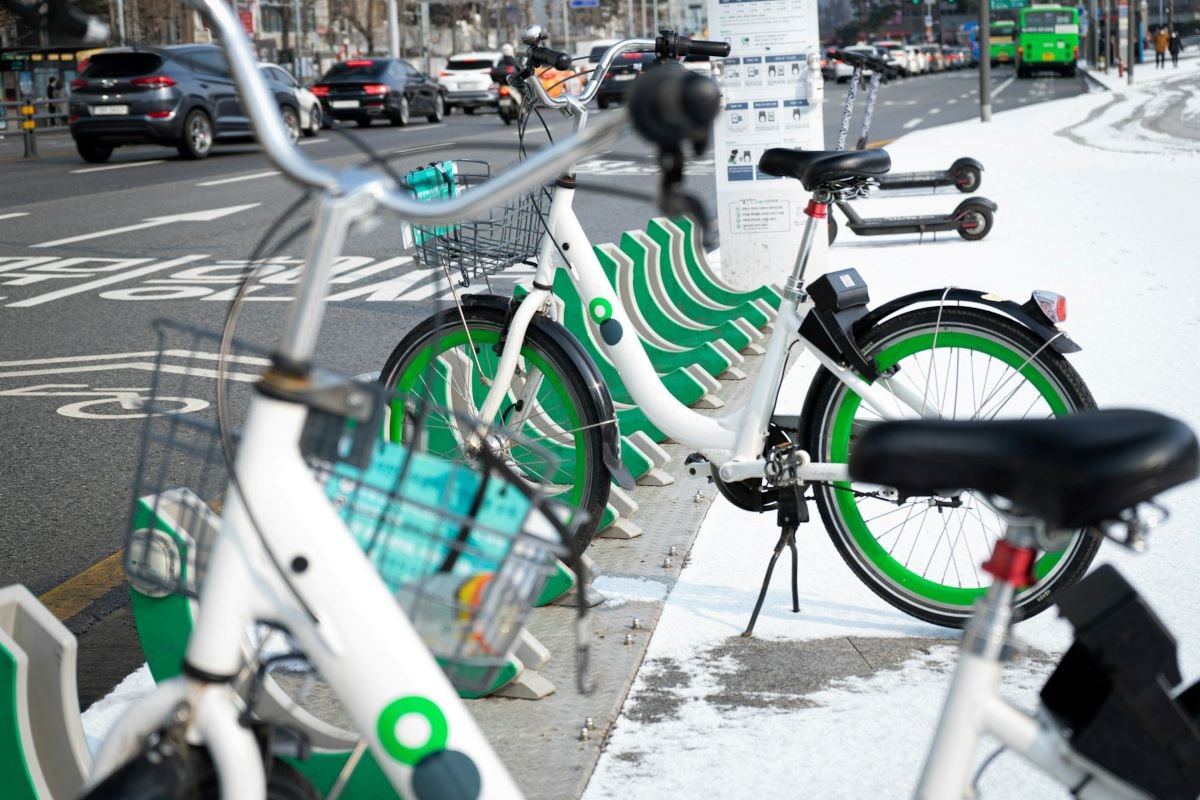
You can get one at any major subway station, but sadly this card only covers public transportation in Seoul for now, so keep that in mind before buying.
If you’re just looking for a good old-fashioned Tmoney card without the month-long plan, you can get one at any convenience store or subway station and charge it with cash.
8. Make Reservations in Advance if Possible
When it comes to accommodations or more popular restaurants/cafés, it can be difficult in Seoul to simply show up to a place and expect to find an open spot, especially in high season.
This is a country where it’s best to make your reservations beforehand. If you don’t, there’s a very good chance that you’re going to miss out and get turned away.
9. Try Seoul’s amazing street food
Korean cuisine has plenty of tasty street snacks that are quick and cheap, making this one way to cut costs in Seoul! There’s no shortage of markets and stalls offering a quick bite, so be sure to check them out.
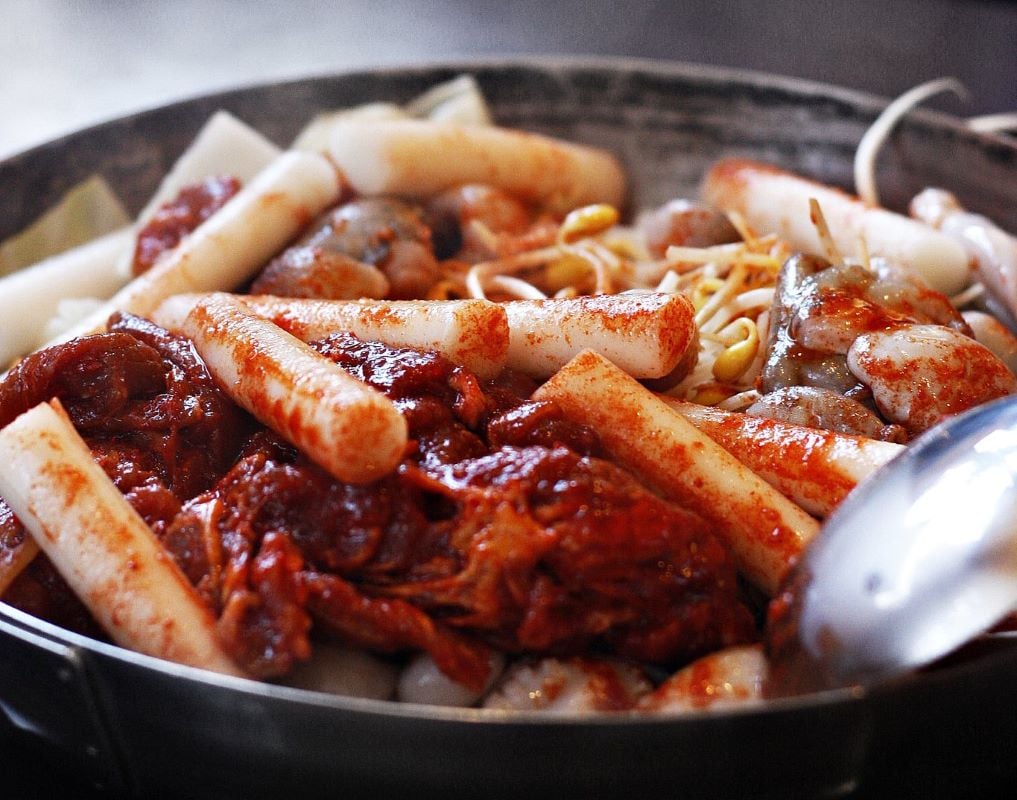
Kimbap and tteokbokki are two classic Korean eats that are cheap, delicious, and filling.
10. Understand Internet and Data in South Korea
Wifi is everywhere and internet speeds are lightning fast, but you’ll still want to stay connected when you’re on the move!
SIM cards and data plans tend to be pricy by Asian standards, and while you can get Korean e-SIMs at the airports, there’s a better option: a WiFi Egg rental.
You can check out a list of rental options here , and any of them will keep you connected to Korea’s ridiculously fast internet while you’re on the go without breaking the bank.
11. Korea Isn’t Cheap
Expenses in Korea aren’t quite as scary as Western Europe in summer but this isn’t Thailand either, so you need to be prepared to spend a little more.
Hostels will cost at least $15 USD/night but usually a bit more, and proper meals will start at around $8.
Public transportation is cheap, but going to a different city is going to cost a bit more: between $10-$50 depending on how far you’re going.

We’ve tested countless backpacks over the years, but there’s one that has always been the best and remains the best buy for adventurers: the broke backpacker-approved Osprey Aether and Ariel series.
Want more deetz on why these packs are so damn perfect? Then read our comprehensive review for the inside scoop!
12. Bring Masks to Protect Yourself from Pollution
Korea and neighboring China are heavily dependent on coal for their energy needs, and as a result, the skies can occasionally have dangerous levels of smog, especially in big cities.
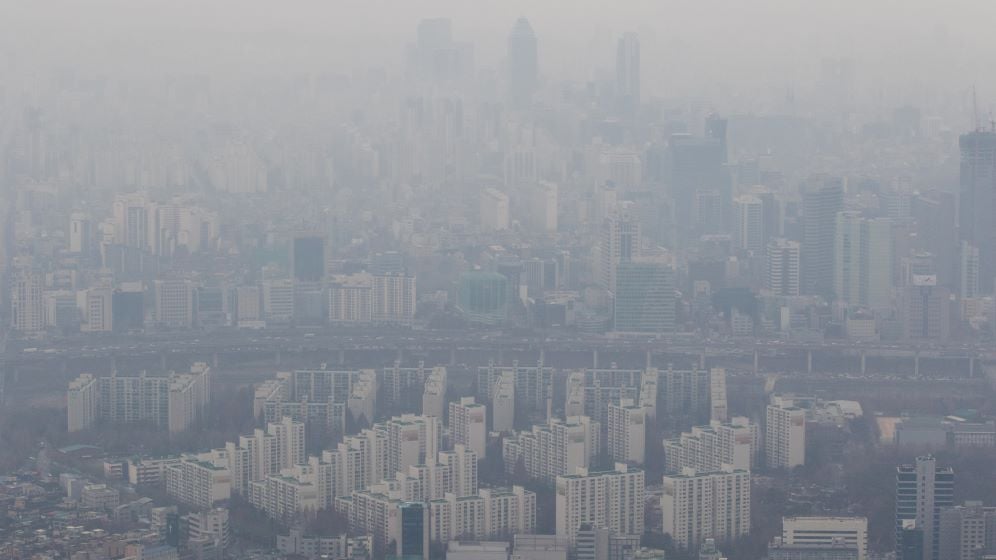
Masks are technically not an essential, but you’re going to want to have a few masks on hand to help you deal with this problem.
Just to give you an idea of how bad this can be sometimes: I’ve had an easier time breathing whilst hiking in difficult conditions at 5000m+ altitudes than I’ve had while just sitting outdoors at a café in Seoul trying to enjoy my coffee on a day when the pollution is at its worst.
13. Pay Attention to the Rules
Koreans are meticulous rule-followers, and it’s very important to keep this in mind when planning a trip to South Korea.
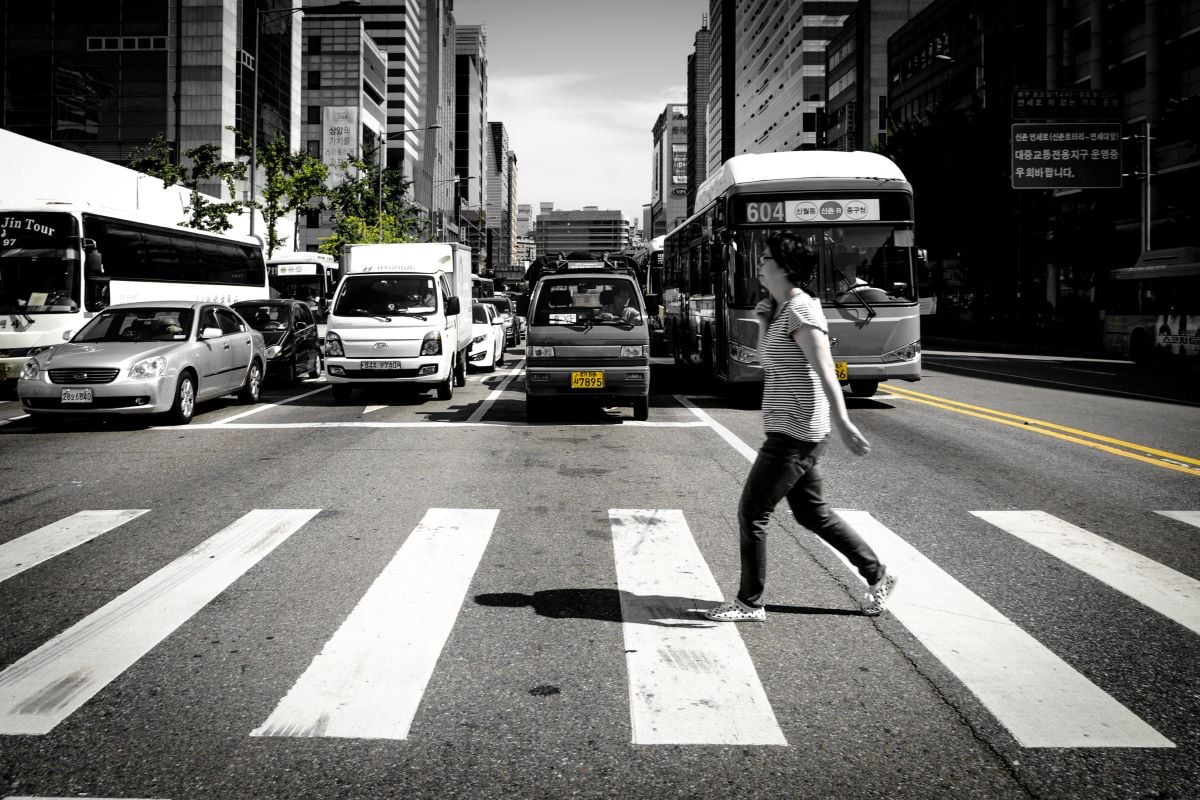
No matter how ridiculous a rule might seem to you, Koreans will obey it almost without exception. Even if it’s 3am and the roads are completely empty, a pedestrian is going to wait until the crosswalk turns green before they think about venturing out onto the empty road while the sign is red.
Many countries are really loose with the law but this is not one of them, so make sure that you’re completely respectful of the rules when you’re visiting South Korea.
A Few South Korea Cultural Travel Tips
Respecting Korean societal norms are SUPER important. Let’s get into a few of them…
14. Don’t tip
This might come as a huge relief to visitors, especially for Americans, but it’s important to know that tipping isn’t really a thing in Korea. Very rarely a place will ask for tips for its workers, but otherwise you should avoid tipping in all situations.
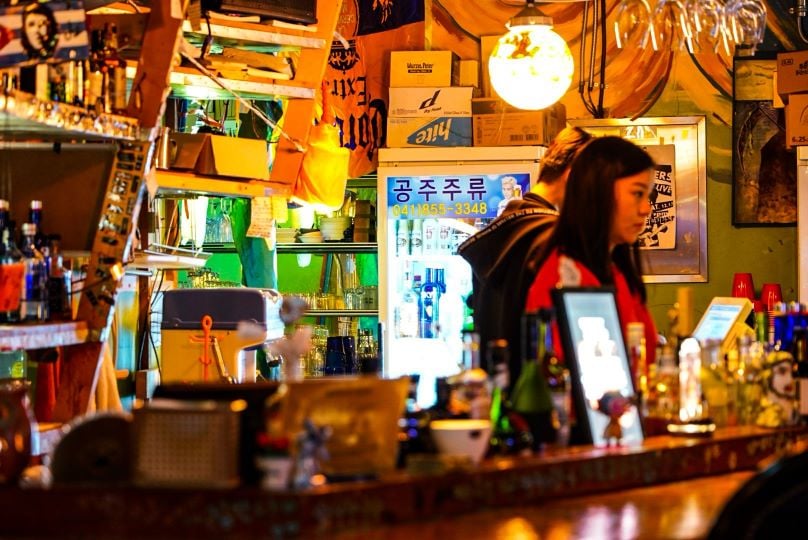
15. Politeness and respect are non-negotiable
Korean culture is deeply rooted in visibly showing respect for others, and it’s important to adopt that attitude while you’re visiting South Korea. Sass and sarcasm are looked down upon in nearly all situations so it’s best to avoid using those entirely.
16. Koreans tend to be reserved
While Koreans are very polite and hospitable, they are usually pretty reserved and it takes awhile for them to open up, so don’t worry if it seems like they’re not too friendly at first!
17. Learn to Read Korean
Okay, I realize this might sound insane, but hear me out!
Hangul – the name for the Korean alphabet – is incredibly easy to learn how to read and will take you an hour or two max to get the basics down.

Just a bit of study goes a long way in helping you read signs and menus, making this a great return on investment for your time.
Even if learning languages isn’t your thing, I promise you that this is way easier than it sounds and strongly recommend giving it a try!
18. Understand When to Visit South Korea
Autumn and Spring are majestic.
Japan gets a lot of recognition for its stunning seasonal colors (and rightly so!) but these seasons in Korea are just as magical and can’t be missed.
It’s also way less crowded than Japan, and the colors you’ll see here are simply unreal.
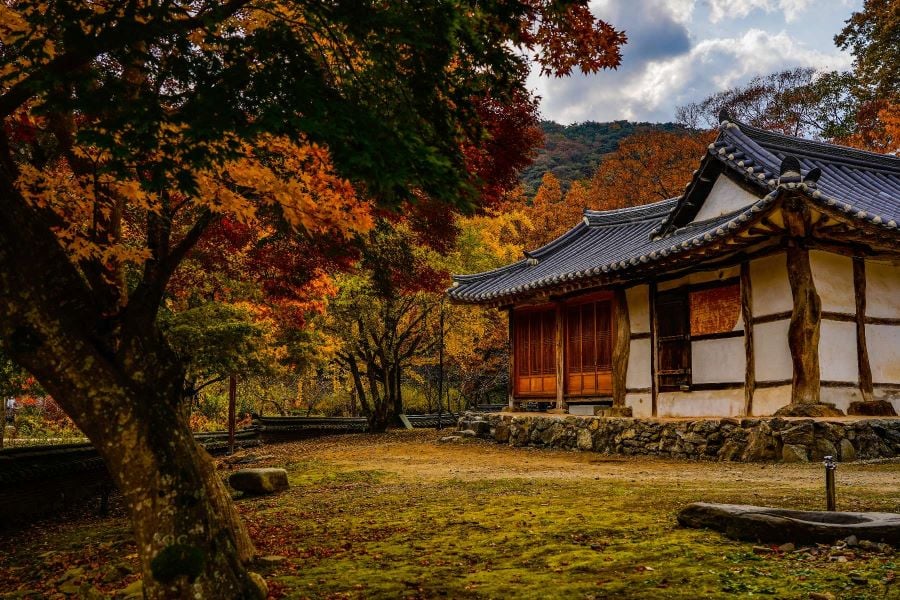
These are not busy seasons in Korea as far as foreign tourism is concerned, so you’ll have a lot more space than you would in summer.
You’ll have to get out of the city to see these colors at their best, and Magoksa Temple is one of the most stunning locations in Korea during peak foliage!
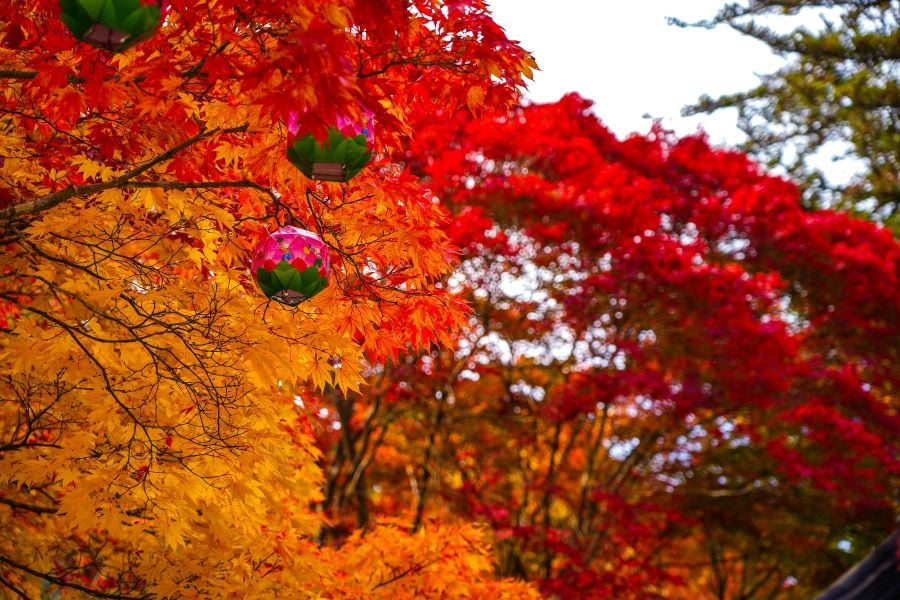
Magoksa Temple is not too far from Seoul so it’s very accessible. If you’re in Korea during Autumn, this spot is a can’t-miss.
If you’re keen on visiting South Korea during Spring, you will see spellbinding cherry blossoms pretty much everywhere you go, but Seoraksan National Park on the east coast is one of the best spots in the country this time of year.
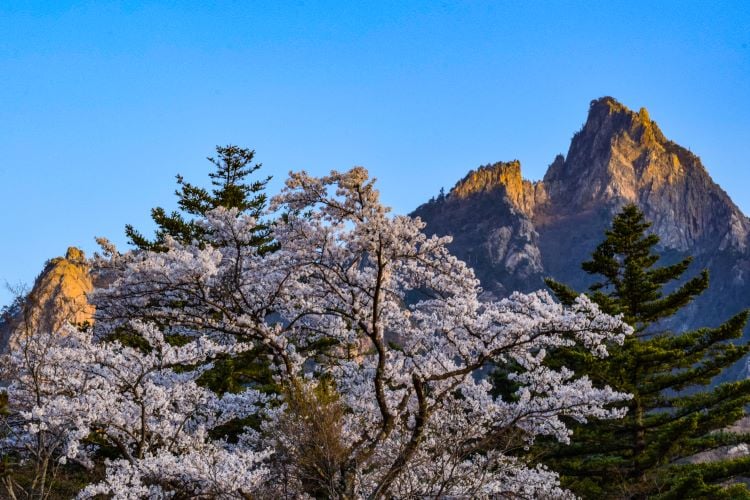
This one’s a bit further out of the way as it’s a 3-hour bus ride from Seoul, but it’s more than worth it! I’ve made the trip out to Seoraksan multiple times and it still isn’t enough.
Going to South Korea in summer is going to be a non-stop sweatfest and while winter can be utterly breathtaking, it’s freezing cold, so Autumn and Spring are the ideal seasons to visit Korea.

Stash your cash safely with this money belt. It will keep your valuables safely concealed, no matter where you go.
It looks exactly like a normal belt except for a SECRET interior pocket perfectly designed to hide a wad of cash, a passport photocopy or anything else you may wish to hide. Never get caught with your pants down again! (Unless you want to…)
19. Seoul is a Foodie’s Paradise
Not only does Seoul have tons of excellent spots for trying Korean food, but the capital is also home to cuisines from all over the world! Italian, Japanese, Mexican, barbecue of all kinds, and so much more: you name it, Seoul has it.
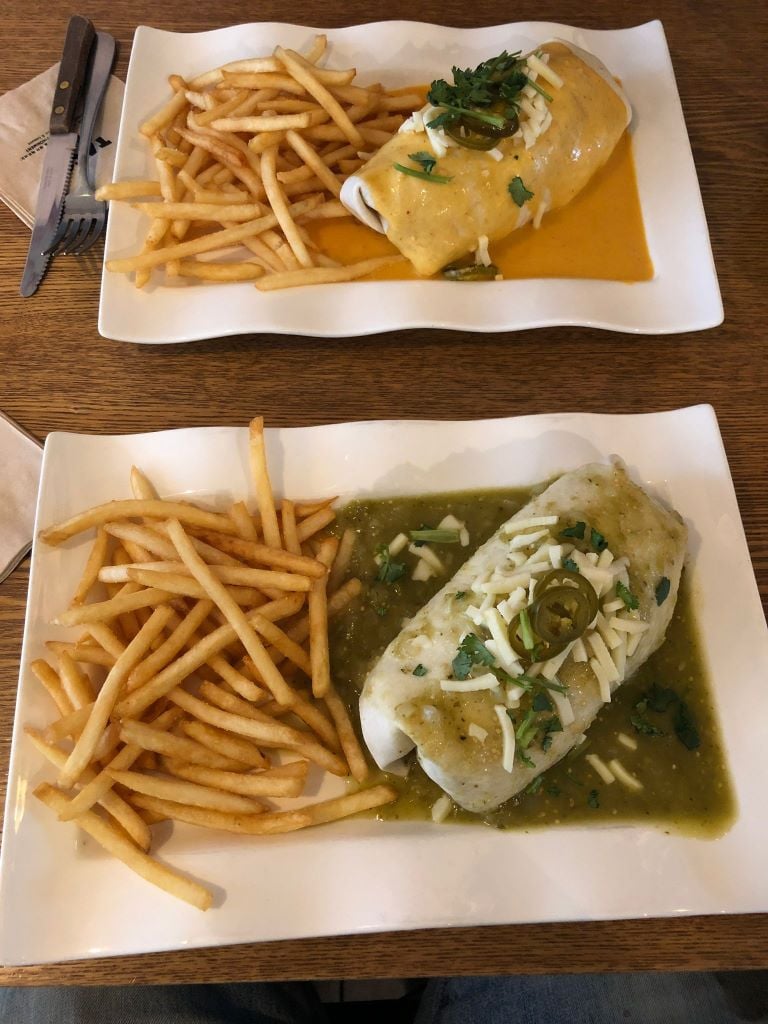
While you could easily dedicate an entire book to Seoul’s many restaurants, here are a few highlights!
One of the best Mexican restaurants I’ve found anywhere in East Asia is Taco Amigo , located right in the heart of Itaewon.
Just up the road and right on Itaewon’s main street is Vatos , a Mexican fusion restaurant that has a seemingly infinite number of delicious meals to try out.
If you’re craving some classic Texas BBQ, Low and Slow Itaewon has got you covered.
The Royal Food and Drink is a cliffside restaurant with a stunning view of Seoul and serves a majestic brunch that will send you into a food coma.
Not only one of the best brunch places in Seoul but one of the best I’ve been to anywhere, meals here are unforgettable.
Whether you’re looking for izakayas, Levantine restaurants, kebabs, Mexican, or pretty much anything else: this city is a paradise of cosmopolitan cuisine, and taking advantage of that is a must.
Seoul does have unforgettable KBBQ restaurants and countless more excellent Korean restaurants, but the best (and cheapest) Korean food will be found beyond Seoul’s expansive boundaries!
20. Being Vegetarian or Vegan in Korea Isn’t Easy
As with a lot of Asian countries, it can be a challenge to navigate the food scene if you’re vegetarian or vegan. When visiting Busan , Seoul, Daegu, and other larger cities, many restaurants can cater to your diet but in the countryside, you’ll find that your options are much more limited.
Thankfully, Korean food does have some options for those of you who don’t eat meat!
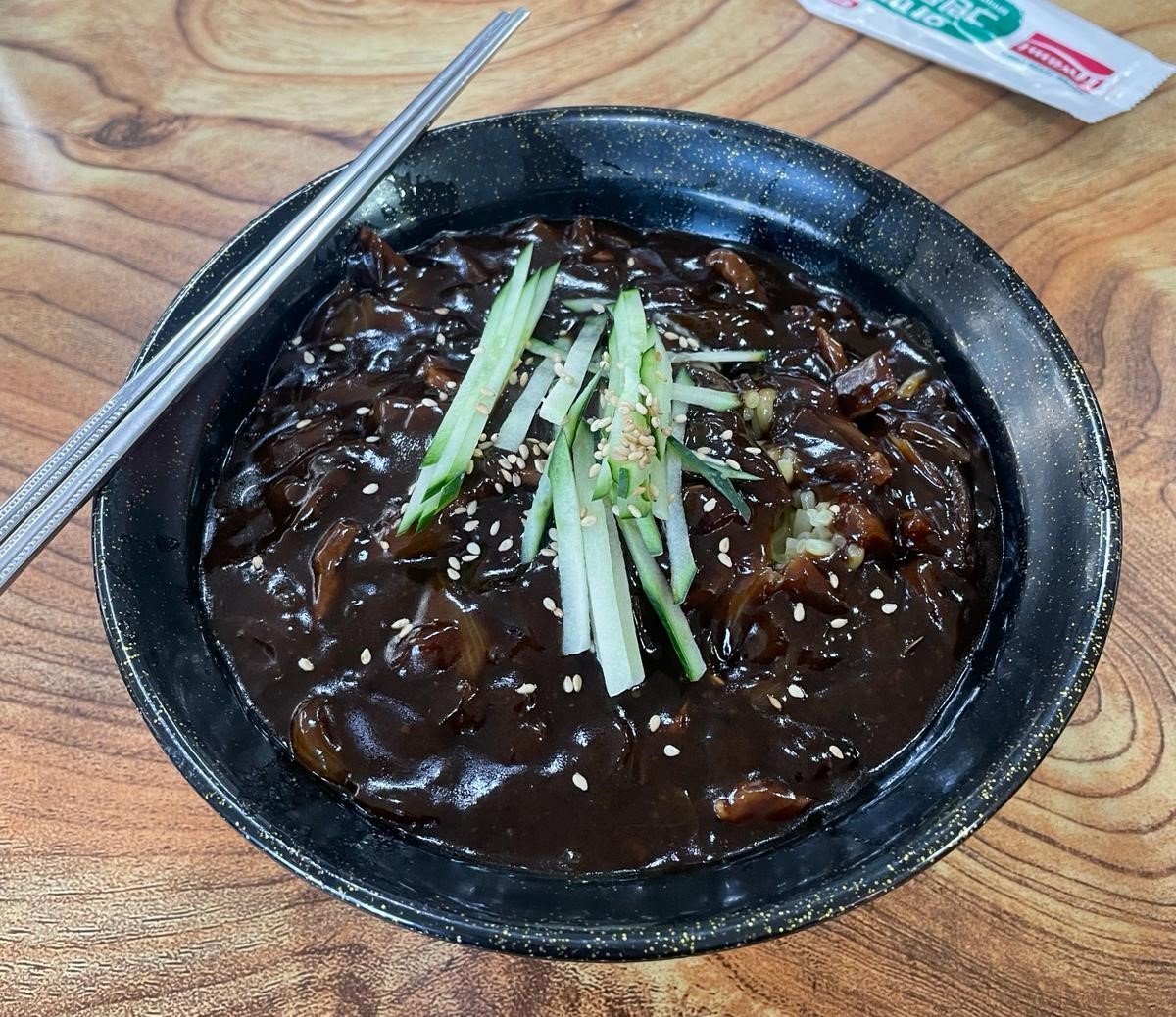
Vegetarian mandu (dumplings), kimbap, and bibimbap are all tasty vegetarian dishes that you can’t miss out on, and jjajangmyeon is one of my personal favorites.
If you’re at a restaurant and ordering food that may or may not come with meat, like dumplings, just ask the waiter for “gogi opsoyo” (“no meat”) and you’ll be all set.
21. Explore Korea’s Amazing Café Scene
Going to South Korea means you get to explore a café scene which is second to none. A massively diverse range of cafés awaits travelers from the traditional to ultra-modern and quirky.
Seoul itself is home to countless unique, very photogenic cafés that you could probably spend a lifetime venturing through.
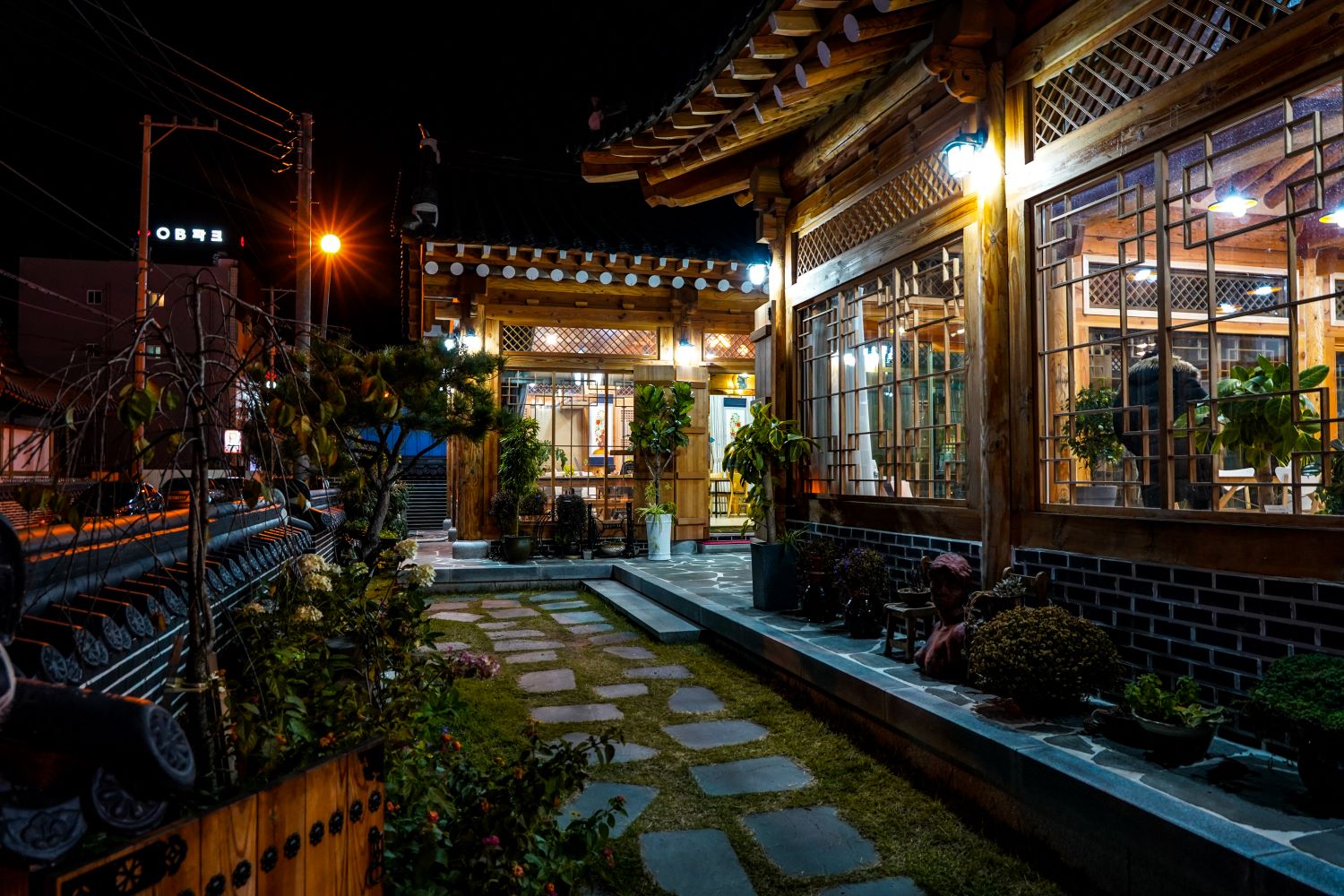
One of the capital’s most iconic spots is C.Through Café, which you’ll find here . Not only are the drinks delicious, but they also look so good that you almost feel bad for drinking them.
The coffee itself may or may not be what you’re looking for depending on your own personal tastes, but Korea’s cafés and teahouses are so diverse and incredible that I highly recommend you spend some time exploring what they have to offer!
22. Discover Korean Meals You Might Not Know Of!
Korean BBQ, samgyupsal, and kimchi are famous Korean culinary exports for good reason, but there are so many more Korean dishes that any backpacker worth their salt has got to try at least once.
Dakkalbi is a truly epic dish served in a massive pan that contains meat, rice cakes (called dak), vegetables, spices, and more depending on what you request.
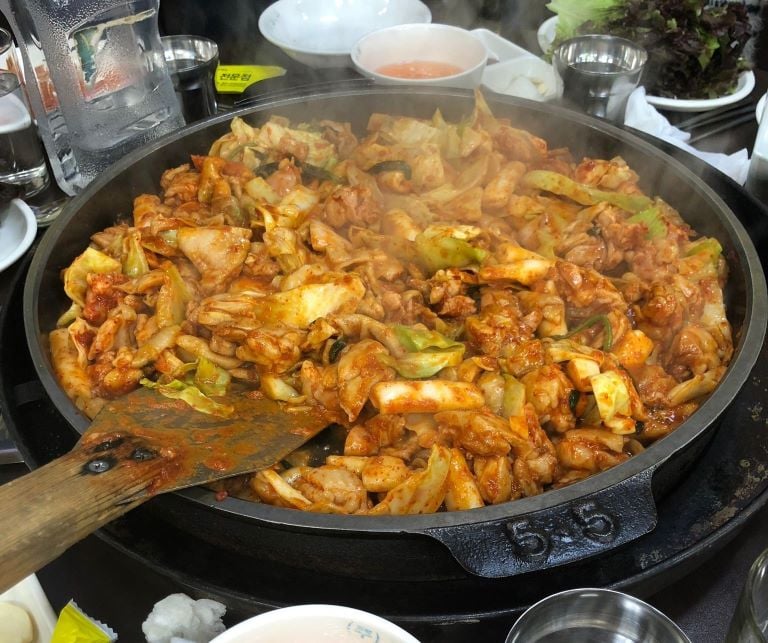
This is the perfect meal to have after you’ve worked up a huge appetite from exploring all day, and best to share with friends.
Quite possibly my favorite Korean meal is jjimdak. Often served in an enormous pan, this dish consisting at its core of chicken, glass noodles, rice, spices, and onions is a gluttonous, decadent meal that everyone should reward themselves with, and you can add more to the pan to mix things up a little.
Hint : add cheese.
23. Get Lost in Seoul’s Insane Nightlife
Seoul’s nightlife is famous and for very good reason: it’s amazing .
Coming out of a difficult few years due to the COVID pandemic, the capital’s bars and clubs are slowly returning to their former glory.
Gangnam, Itaewon, and Hongdae each have an endless supply of bars, restaurants, and clubs to explore that are wild fun, and a visit to Seoul is incomplete without at least a few sleepless nights spent in these districts.
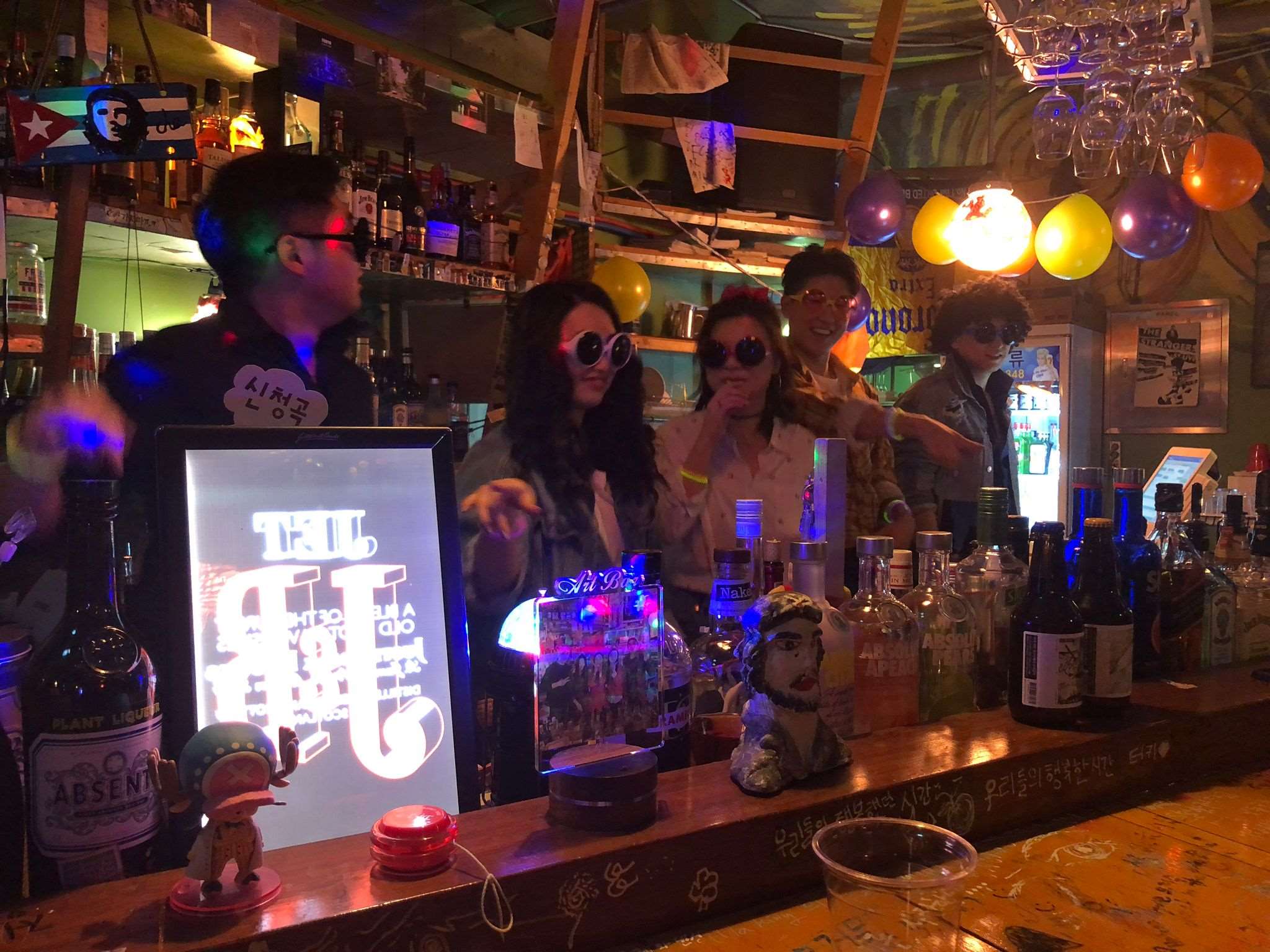
You’ll also find unique escape rooms, board game cafés, and more.
It’s simply not possible to list all the things you can do in Seoul, which is exactly why you should get hopelessly lost in wandering through this amazing city’s nightlife.
24. Get Off the Beaten Path
South Korea is rightly well-known for being a haven of futuristic cities, shopping, and lightning-fast internet, but it’s so much more than that!
This is a country where ancient wonders mix with natural beauty in a way that doesn’t happen anywhere else, and one of the best tips for traveling to South Korea I can give you is to journey away from the typical tourist loop of Seoul, Busan, and Jeju.
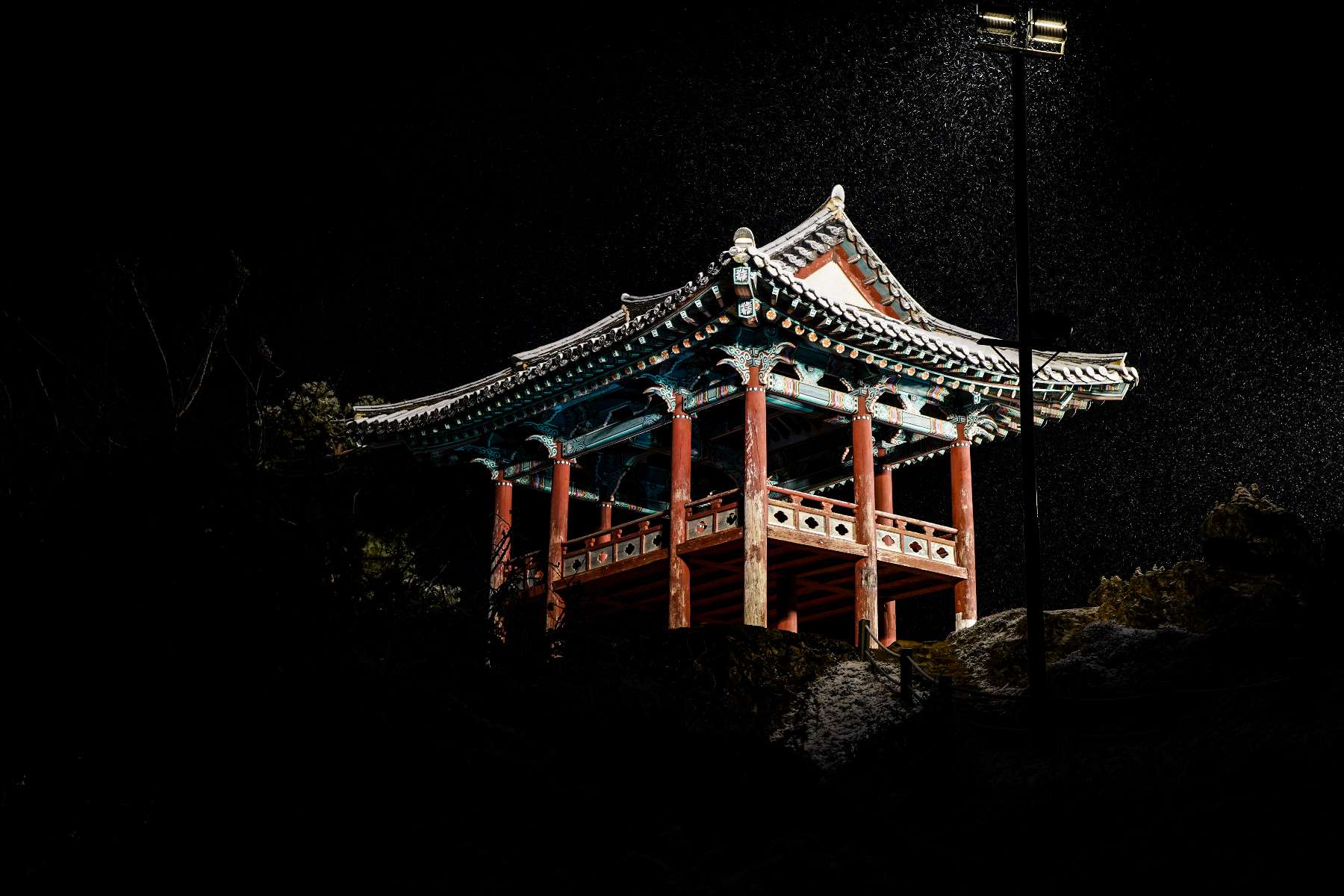
That might seem like hard advice to follow in a tiny country that’s so modernized, but venture beyond the confines of the cities and you’ll find a side of Korea that most people don’t see.
Experiencing Korea’s ancient, rich culture and all the gems hiding in its many hills simply can’t be missed out on, and this is what makes going to South Korea an unforgettable experience, far more so than a night out in Seoul or Busan.
25. Know Which Places to Stay/Avoid
Korea has no shortage of great hostels to stay at that range from cozy and classy to social and wild, but here are just a few to keep in mind:
If you’re looking for a good time in Seoul that doesn’t involve much sleeping, The Time Traveler’s Party Hostel in Hongdae is hard to beat. Fun and social with a downstairs bar and a crew that goes out into Hongdae’s vibrant nightlife every night, this is the place to be for all kinds of partiers.
Its sister hostel, Time Travelers’ Relax Guesthouse , is for backpackers looking for something more low-key and restful. Also in Hongdae, this hostel is in a quiet neighborhood that’s just a short distance from the district’s unbelievable nightlife scene, so it gives you the best of both worlds.
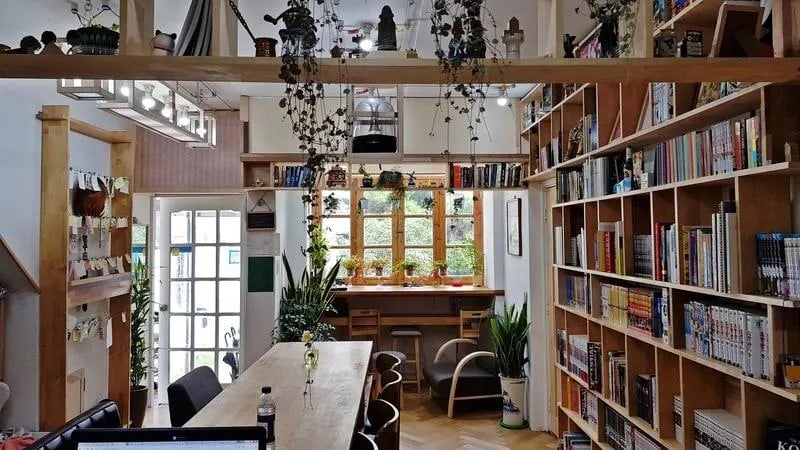
Seoul Cube Itaewon is also an incredible hostel with a great reputation, and its location right in the center of Itaewon is basically unbeatable!
When it comes to Seoul – and Korea in general – pretty much any hostel or guesthouse you choose is going to be solid with one exception: the Hongdae Bird’s Nest Hostel. This is the one place I recommend you absolutely avoid at all costs unless you have no other choice.
You might be tempted by its low prices and convenient location (I was!), but the facilities are less than ideal and the management is strange, unhelpful, and at times very unfriendly to guests. Avoid, avoid, avoid.
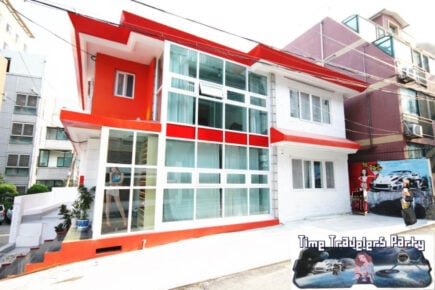
Time Traveler's Party Hostel
With a basement bar and a perfect location just 7 minutes from Seoul's Hongdae neighborhood, this is the best hostel for those looking to get the most out of the city's epic nightlife. It's super social, and you can even get a taste of authentic Korean BBQ every Friday night at their weekly group dinners.
26. Travel With Good Insurance!
Travel insurance is one of the most essential items all travelers simply should not go without, and you need to make sure you’re covered in the event a disaster happens!
Korean healthcare is some of the best – and most affordable – in the world, but you still don’t want to be stuck paying for 100% of a hospital bill.
That’s where SafetyWings comes in: at $40 per month and contract-free, this is an excellent choice for travelers and digital nomads.
Having that peace of mind that you’re covered in case of emergencies is priceless, so don’t forget to sign up before you set out on your travels: it could make all the difference.
ALWAYS sort out your backpacker insurance before your trip. There’s plenty to choose from in that department, but a good place to start is Safety Wing .
They offer month-to-month payments, no lock-in contracts, and require absolutely no itineraries: that’s the exact kind of insurance long-term travellers and digital nomads need.

SafetyWing is cheap, easy, and admin-free: just sign up lickety-split so you can get back to it!
Click the button below to learn more about SafetyWing’s setup or read our insider review for the full tasty scoop.
So is South Korea Worth Visiting?
100%, absolutely, undeniably yes. Not only is it more than worth the effort, I stand by the fact that Korea is one of Asia’s greatest countries to travel in.
Temples, towers, unforgettable nights, delicious food and more await travelers who make the trip to this unique land caught at a crossroads.
Going to South Korea is the experience of a lifetime and when your trip is at an end, no matter how long it is, you’ll find yourself wanting more.
I hope you’ve learned something from these South Korea travel tips. Now all that’s left is to book that ticket.
A wild ride awaits!
- Become a MASTER traveler with our epic travel tips.
- Embrace your backpacker spirit and travel off the beaten path , because… why not?
- Our killer guide to living in hostels will transform your stay. Check it out!
- Get off the couch and into the great outdoors with our hiking guide .
- Or… explore more of the region and go backpack Japan .
- See what most backpackers do not with an epic trip to China .
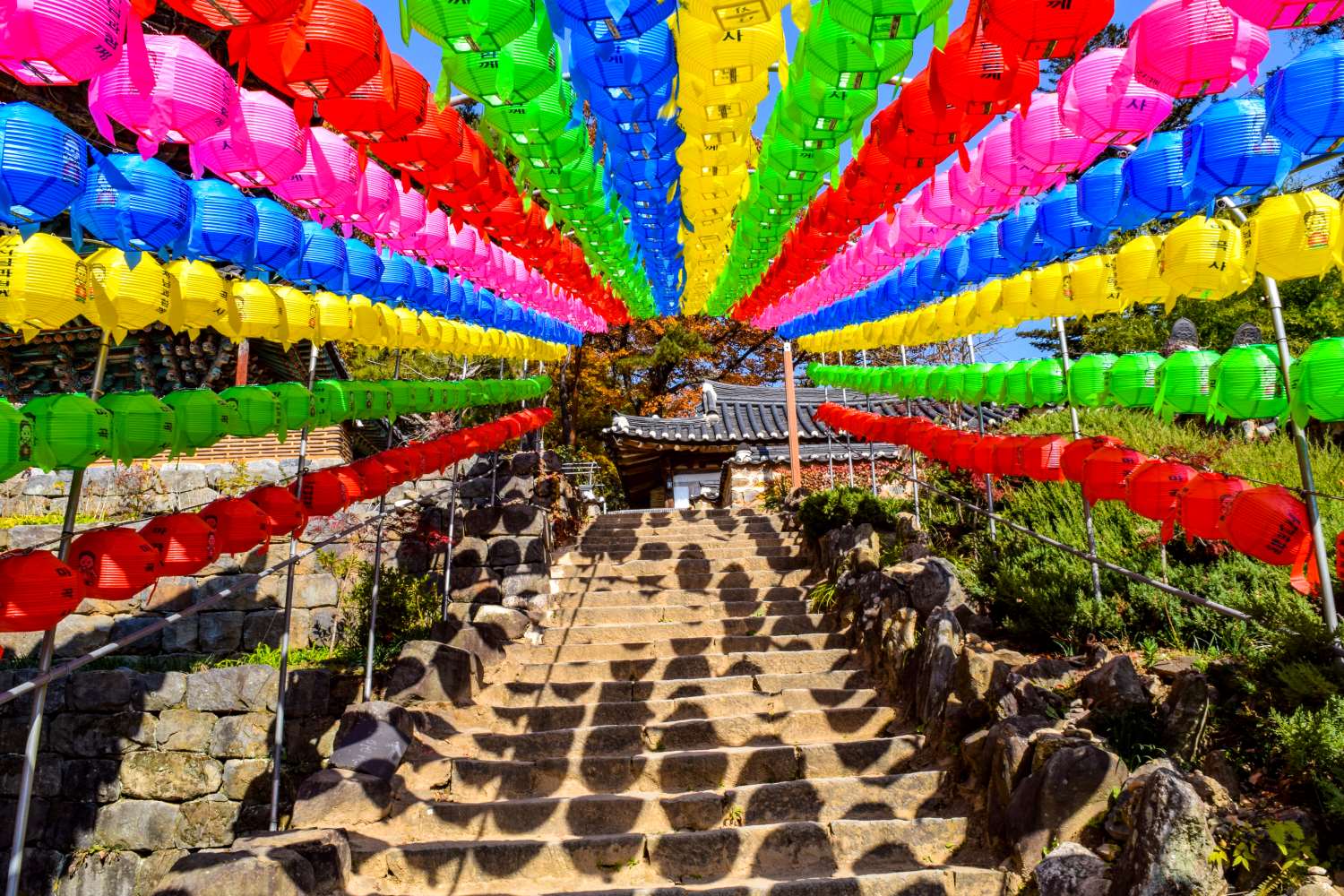
Nathan Jordan
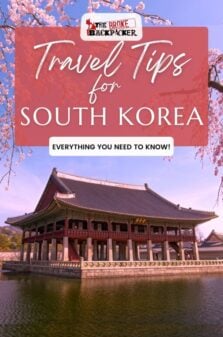
Share or save this post

Leave a Reply Cancel reply
Your email address will not be published. Required fields are marked *
Save my name, email, and website in this browser for the next time I comment.
Notify me of followup comments via e-mail.
May 10, 2024
Coqodaq is the Fancy Fried Chicken You Never…
Celebrating buddha’s birthday in korea, the top k-news from around the world, 31 best korean dramas on netflix, q&a with salle yoo, the first chief legal….
Join Our Newsletter

- Korean Childbirth Traditions
- HWANGAP 60TH BIRTHDAY
- LEARN THE KOREAN LANGUAGE
- KOREAN ZODIAC
- Korean Weddings
- TRAVEL GUIDE
- RESTAURANTS
- FOOD STORIES
- K-DRAMA & MOVIE
- South Korea Travel Guide
Where to Go, What to See & How to Stay on Budget
By Patricia Liu and Joel Marinan
There has never been a better time to visit South Korea. Clean, modern, sophisticated, and ultra safe, Korea is a destination that you will want to come back to again and again. With the rise of Korean culture and entertainment throughout the world, the country is experiencing a renaissance of sorts, especially for foreigners who wish to experience all that Korea has to offer.
Korea has always been a fascinating country to visit and deserves a place on everyone’s travel bucket list. Known for its stunning blend of tradition and modernity, Korea features futuristic technology, bustling markets, and a thriving pop culture scene. There are no guns or drugs allowed in Korea, and visitors can expect a high level of safety and cleanliness while exploring the country. Also of note is that Korea is a no tipping culture, so savoring the delicious cuisine is extra affordable, as are the cab rides to restaurants and other destinations.
Speaking of affordability, the exchange rate between the Korean won and the US Dollar has been very favorable for Westerners, which is another perk of traveling to Korea right now.
Our South Korea Travel Guide shows you where to go, what to see, and when to travel. Start your journey with itinerary ideas and pre-travel tips, the best day trips, and lots more essential Korean travel advice. Let’s go!
Here are some of our most popular articles that will help you make the most of your trip to South Korea.

A Local’s Guide to Gyeongju
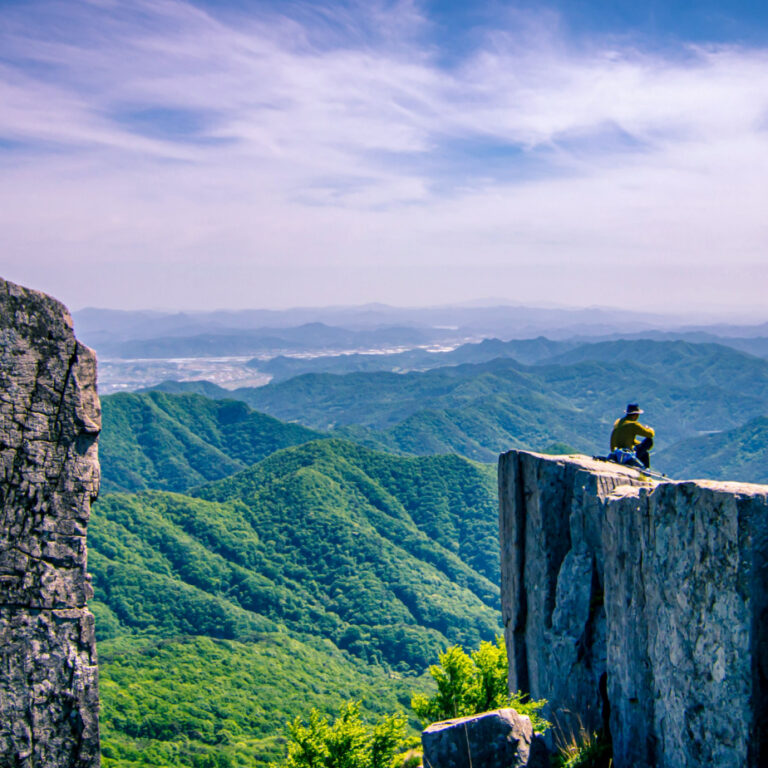

What To Do in Korea in May: The Family Month
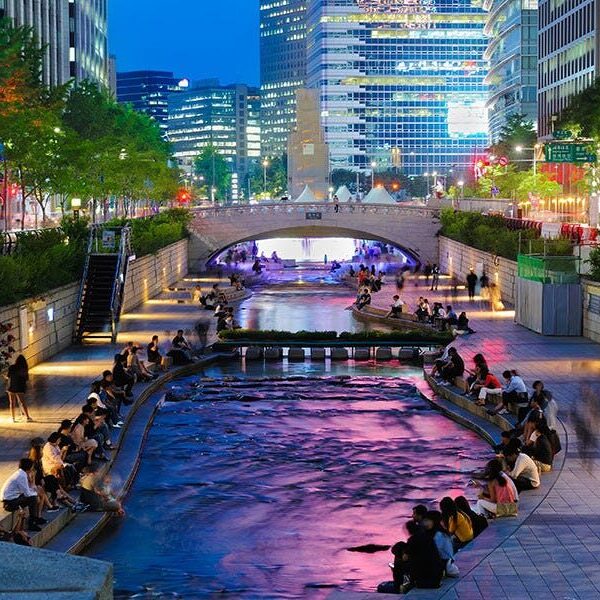
19 Did-You-Knows About Korea
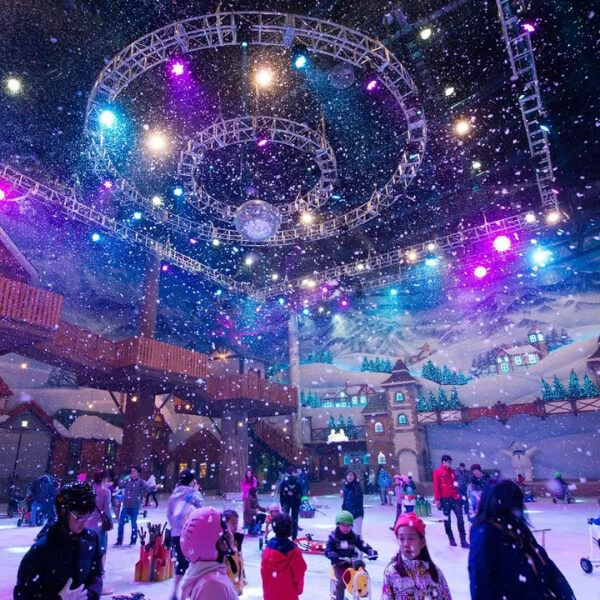
10 Ways to Spend a Magical Christmas in Korea

Hiking in Seoul, the Top 5 Mountains You Must Try

Jeju Island: Top 10 Places You Must See
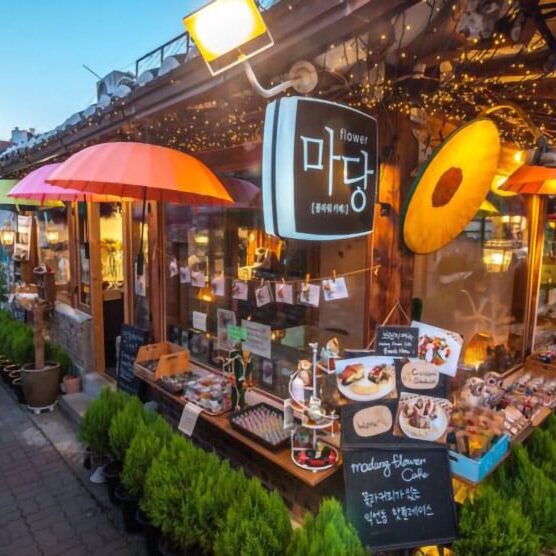
19 Best Things to Do in Seoul Right Now- An Insider’s Guide
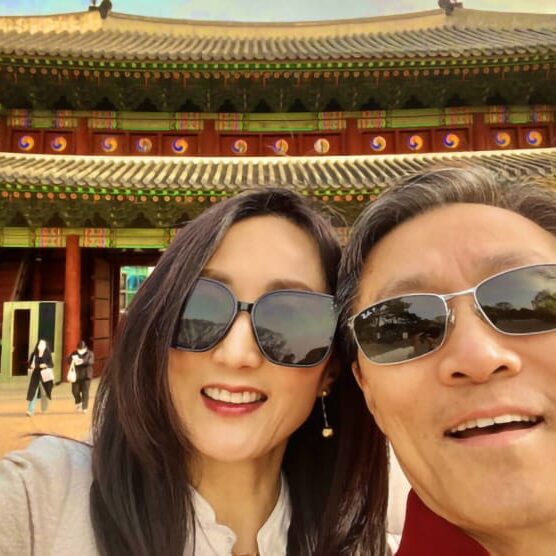
23 Reasons Seoul Will Be Your New Favorite City
Latest travel updates.
- Vaccination is NOT a requirement for entry into Korea.
- There is no requirement on the passport’s remainder validity for entry. You may travel to Korea as long as your passport remains valid throughout your stay in Korea.
- From April 1st, 2023, travelers from the USA, Canada, and 21 other countries no longer need to apply for the K-ETA to travel to Korea. This will run at least until 31st December, 2024 and is designed to make it easier to travel to Korea.

Planning Your Trip To Korea
Check the Korean Embassy for any possible travel restrictions.
- If you’re not sure where to stay, check out our guide to the best hotels in Seoul . You can find our recommendations for the best luxury, mid-range, and budget hotels in Seoul, as well as long-term apartments that you’ll love.
- For the best flight deals to South Korea, Best of Korea recommends Skyscanner and Expedia . You can find the cheapest prices and most convenient flights and buy the one that suits you best.
- For the best hotel prices in Seoul, Best of Korea recommends Klook 0r Agoda – they cover most hotels in Seoul and the rest of Korea and offer great prices without hidden fees.
- Before you travel to Korea, it’s a good idea to order an eSim card, regular sim card or portable WiFi router to collect at the airport so you’re connected as soon as you arrive. You can change a small bit of money before you travel, but you can also use the airport ATM to get some Korean won.
- There are large differences in exchange rates so you will need to do some comparing before you exchange a large sum of money. You can exchange USD to KRW easily at banks or money exchange shops in all major tourist areas like central Seoul (Myeongdong and Namdaemun are good places but the Coex Center also offers money exchange. You can also negotiate the exchange rate with the vendor if you think it is too high.
- You can withdraw cash from bank ATMs. Alternatively, use a pre-paid travel card like the one offered by Wise , which allows ATM withdrawals and payments and works perfectly in Korea.
- Don’t forget to bring a travel adapter for your electronics and leave plenty of extra space in your suitcase for the many Korean souvenirs and goodies you’ll buy on your tri
Do US Citizens Need A Tourist Visa?
No, travelers from the USA don’t need a tourist visa to enter South Korea. You can visit for up to 90 days visa-free.
Current COVID-19 Rules In Korea
Most COVID-19 rules in Korea have been dropped and now there are only 2 main rules to be aware of. First, face masks are mandatory when visiting medical facilities (hospitals). There is no longer a 7-day mandatory quarantine for people in South Korea. If you’re infected with COVID, the Korean government recommends a 5 day self-quarantine, but it’s not enforced. Travelers to Korea should follow the current restrictions or may be liable for fines or deportation.
Korean Tourism Support Hotline
If you have any concerns or problems when traveling in Korea, you can call 1330 . This is a dedicated tourism support hotline where trained specialists provide tourist assistance and is available in Korean, English, Japanese, Chinese, Russian, Vietnamese, Thai, and Malay.
US Government Travel Advisory For Korea
The U.S. Department of State currently has a level 1 travel advisory (Exercise Normal Precautions) for the Republic of Korea (ROK). Find out more about current travel advisories for South Korea on the Department of State website.

6 Best Destinations In Korea
South Korea is truly a country of contrasts. From the bustling, modern city of Seoul , with cutting-edge designer buildings, VR labs, and AI robots, to peaceful UNESCO World Heritage cities like Jeonju and Gyeongju , there are many unique places to explore.
There’s nothing worse than coming back from vacation and hearing about incredible places you missed that you wished you’d seen, such as a beautiful Buddhist temple by the beach (Haedong Yonggungsa Temple) or a leafy island getaway where deer and rabbits roam freely (Nami Island).
Here are 6 of the best destinations in Korea that you absolutely must visit, as well as some of the sights you’ll want to check out while you’re there. We’ll be bringing you lots more detailed destination guides in the future, so be sure to visit again soon.
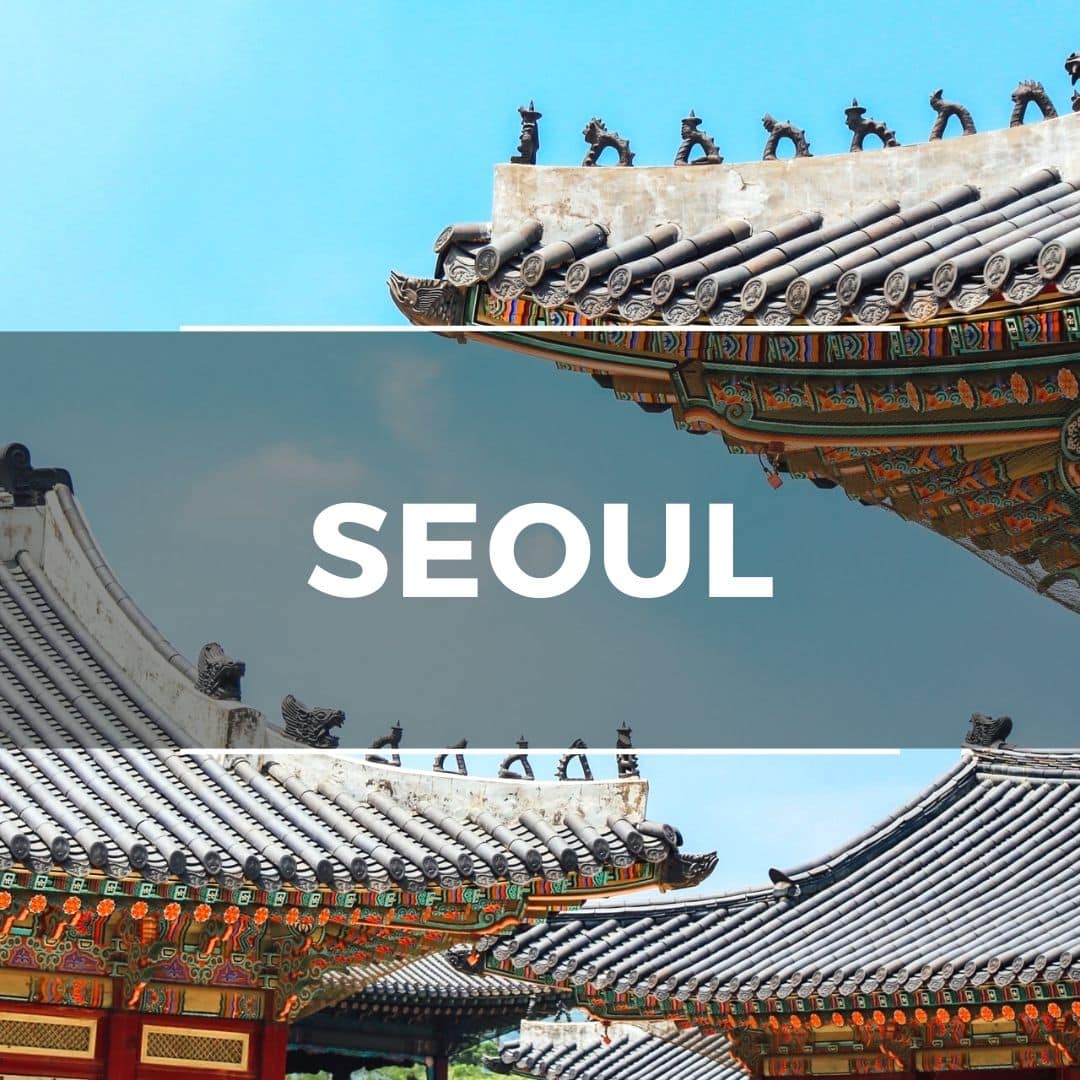
Korea’s Busy Capital
Seoul is Korea’s largest city, capital, and first, stop for most travelers to Korea. There are many beautiful places in Seoul , including landmarks, relics from ancient kingdoms, towering skyscrapers, Buddhist temples, Michelin-starred restaurants, and some of the best street food you’ll find in the world. If you see only one city in Korea, you should definitely visit Seoul.
You’ll never be bored in Seoul. Whether you’re traveling as a family, as a couple, or by yourself, there’s so much to do. Be sure to plan lots of time to check out Korea’s capital.
This Full Day Tour of Seoul will show you some of the hottest spots in the city, while this Customized Private Tour of Seoul will allow you to choose where to go.
Here are 10 of the best Seoul attractions:
- Gyeongbokgung Palace
- Bukchon Hanok Village
- Starfield COEX Mall
- Bukhansan National Park
- Myeongdong Street Markets
- Lotte World Tower
- Secret Garden (Changdeokgung Palace)
- Dongdaemun Design Plaza
- N Seoul Tower
- Yeouido Hangang Park

Korea’s Second City
Busan, Korea’s second city, is a thriving port city far away from Seoul both physically and culturally. This popular summer destination features some of Korea’s most popular beaches and bars. Explore Busan and you’ll find sprawling markets, fresh seafood, film festivals, the world’s largest shopping mall, coastal temples, and lots more.
Busan is a city with some very photogenic sights. See the sunrise on the beach, hike around leafy coastal streets on the side of cliffs, and marvel at the wide range of (living!) seafood in the markets.
This Full Day Tour of Busan will show you the best beaches, markets, and local sights, while this Customized Private Tour of Busan will allow you to choose where to go.
Here are 10 of the best Busan attractions:
- Haeundae Beach
- Gwangbokdong Food Street
- Haedong Yonggungsa Temple
- Huinnyeoul Culture Village
- Gamcheon Culture Village
- Oryukdo Sky Walk
- Lotte World Busan
- Jagalchi Fish Market
- BIFF Square & Centum City Mall
- Taejongdae Resort Park
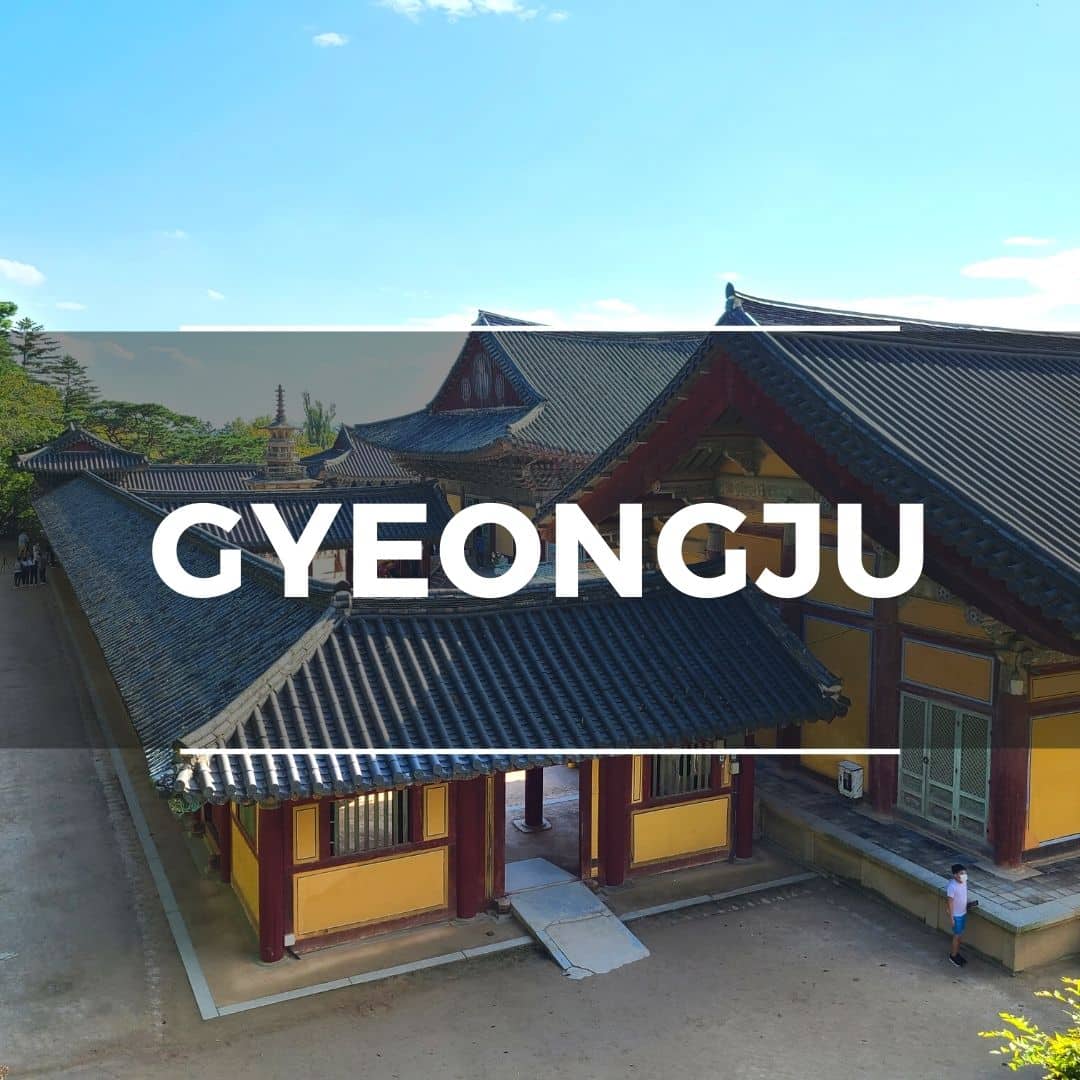
UNESCO City
Gyeongju is the former capital of the Silla Kingdom, part of the Three Kingdoms part of Korean history. These days, Gyeongju is an open air museum housing Korea’s finest history and monument. This UNESCO World Heritage City is a must-see for those who want to learn more about Korea’s deep cultural past.
Gyeongju is packed with temples, palaces, historical sights, and monuments. But it’s not just the history that draws the crowds, the city is an area of natural beauty, lined with cherry blossoms and shadowed by misty mountains.
This Full Day Tour of Gyeongju from Busan will take you around Korea’s open-air museum city, showing the top UNESCO sites along the way, while this Customized Private Tour of Gyeongju will allow you to choose where to go.
Here are 10 of the best Gyeongju attractions:
- Gyeongju Historic Area
- Bomun Lake Tourist Complex
- Bulguksa Temple & Seokguram Shrine
- Donggung Palace & Wolji Pond
- Yangdong Folk Village
- Cheomseongdae Astronomical Observatory
- Gyeongju National Museum
- Gyochon Traditional Hanok Village
- Woljeonggyo Bridge
- Gyeongju National Park
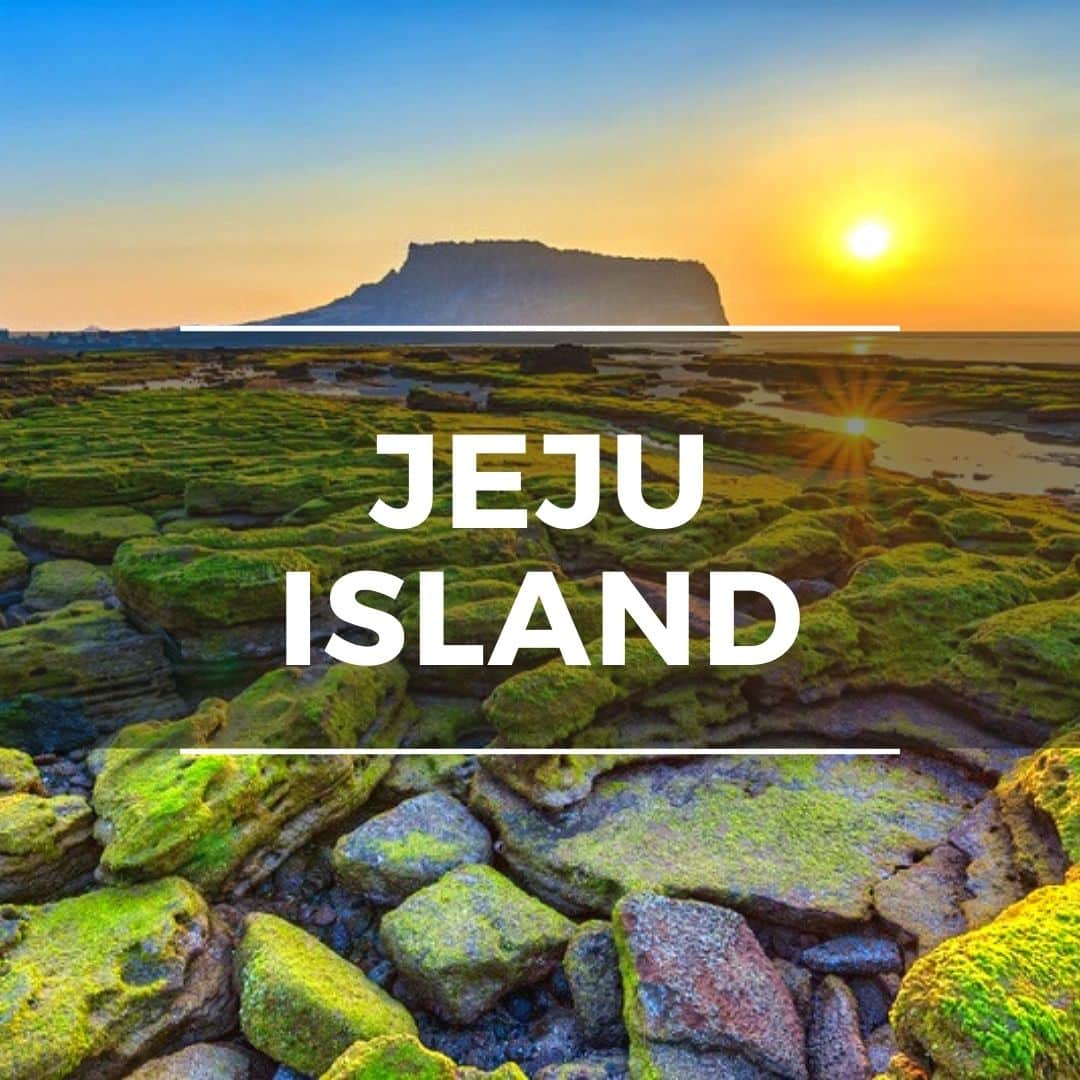
Natural Wonder
Jeju Island is Korea’s semi-tropical island that’s a popular vacation destination for locals and tourists alike. This area of outstanding natural beauty offers up rugged coastal walks, sandy beaches, green hills, and a volcano to hike up for those who enjoy a challenge. Culture and cafe lovers will also find Jeju Island a charm.
From snorkelling under the sea, to hiking above the clouds, sampling Jeju’s black pork BBQ, and drinking local green tea, there’s so many exciting activities, sights, tastes, and experiences waiting for you on Jeju Island.
This Full Day Tour of Jeju Island will show you some of the most incredible UNESCO World Heritage sites on Jeju’s East Coast, while this Customized Private Tour of Jeju Island will allow you to choose where to go.
Here are 10 of the best Jeju Island attractions:
- Seongsan Ilchulbong Sunrise Peak
- Jusangjeolli Hexagonal Lava Cliff
- Hallasan Mountain (Volcano)
- Hamdeok Beach
- Jeju Folk Village
- Hyeopjae & Geumneung Beach Areas
- Cheonjeyeon & Jeongbang Waterfalls
- Udo Traditional Island
- Yakcheonnsa Coastal Buddhist Temple
- O’Sulloc Green Tea Fields
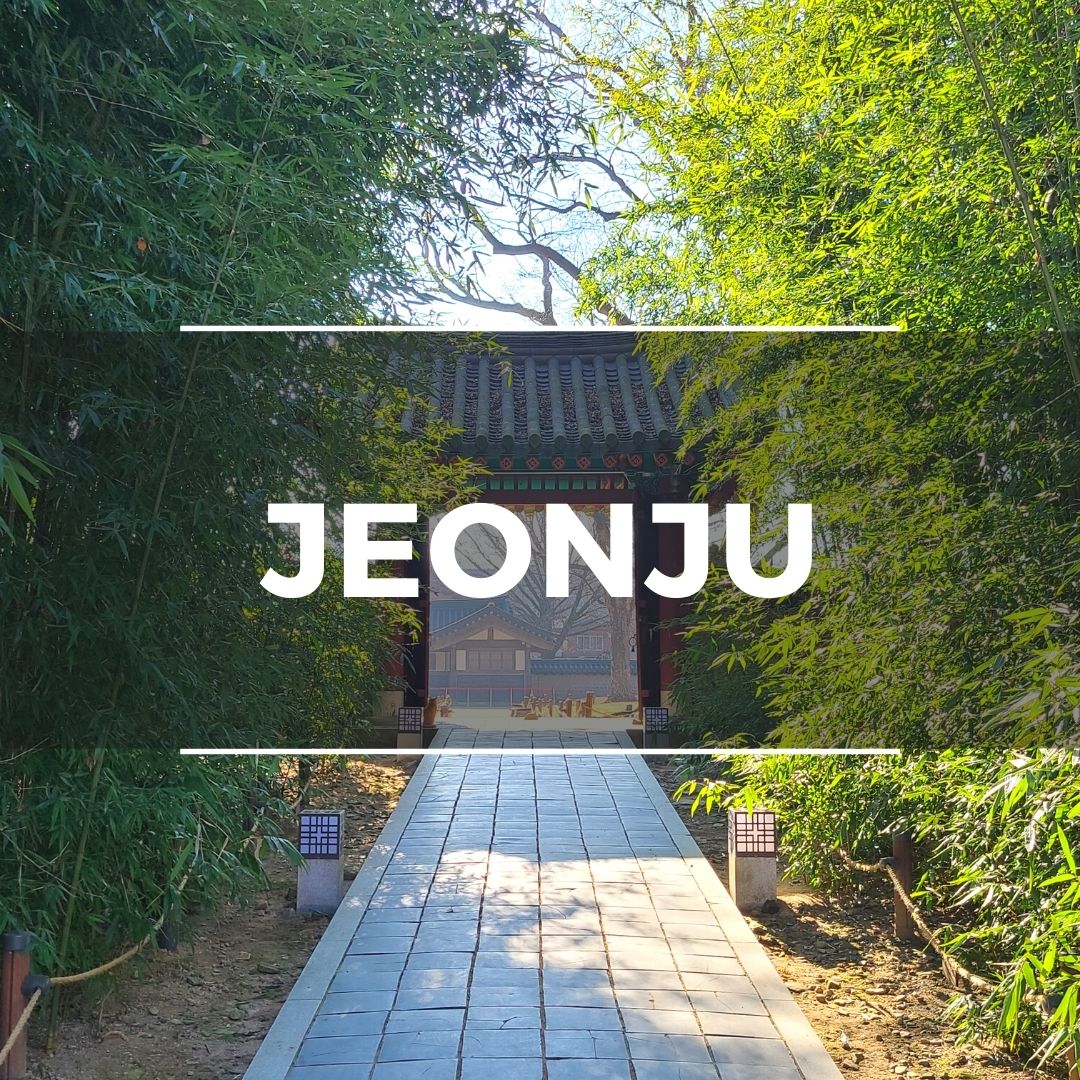
Traditional Korea
Jeonju is famous for its historical and cultural sights, including the sprawling Jeonju Hanok Village, packed with more than 700 traditional hanok houses. Jeonju’s many impressive sights are close to each other and perfect for a day trip from Seoul or Busan. You can even stay overnight in one of the traditional houses.
Jeonju is a tourist hotspot so there are plenty of things to keep travelers entertained and places to experience traditional Korean food and drinks. Be sure to check out the Jeonju bibimbap, one of Korea’s national dishes. Rent hanbok (traditional clothes), take lots of pictures, and see the sights.
This Full Day Tour of Jeonju will show you around the beautiful hanok houses and traditional Korean restaurants, while this 2-Day Tour of Jeonju includes an overnight stay in a hanok and lots of delicious Korean meals.
Here are 10 of the best Jeonju attractions:
- Jeonju Hanok Village
- Gyeonggijeon Shrine & Portrait Museum
- Jeongdon Catholic Church
- Jeonju Hyanggyo Confucian School
- Nambu Traditional Market
- Jaman Mural Village
- Omokdae Viewpoint
- Deokjin Park
- Hanbyeokdang Pavilion
- Taiji-ro & Hyangoyo-gil Shopping Streets
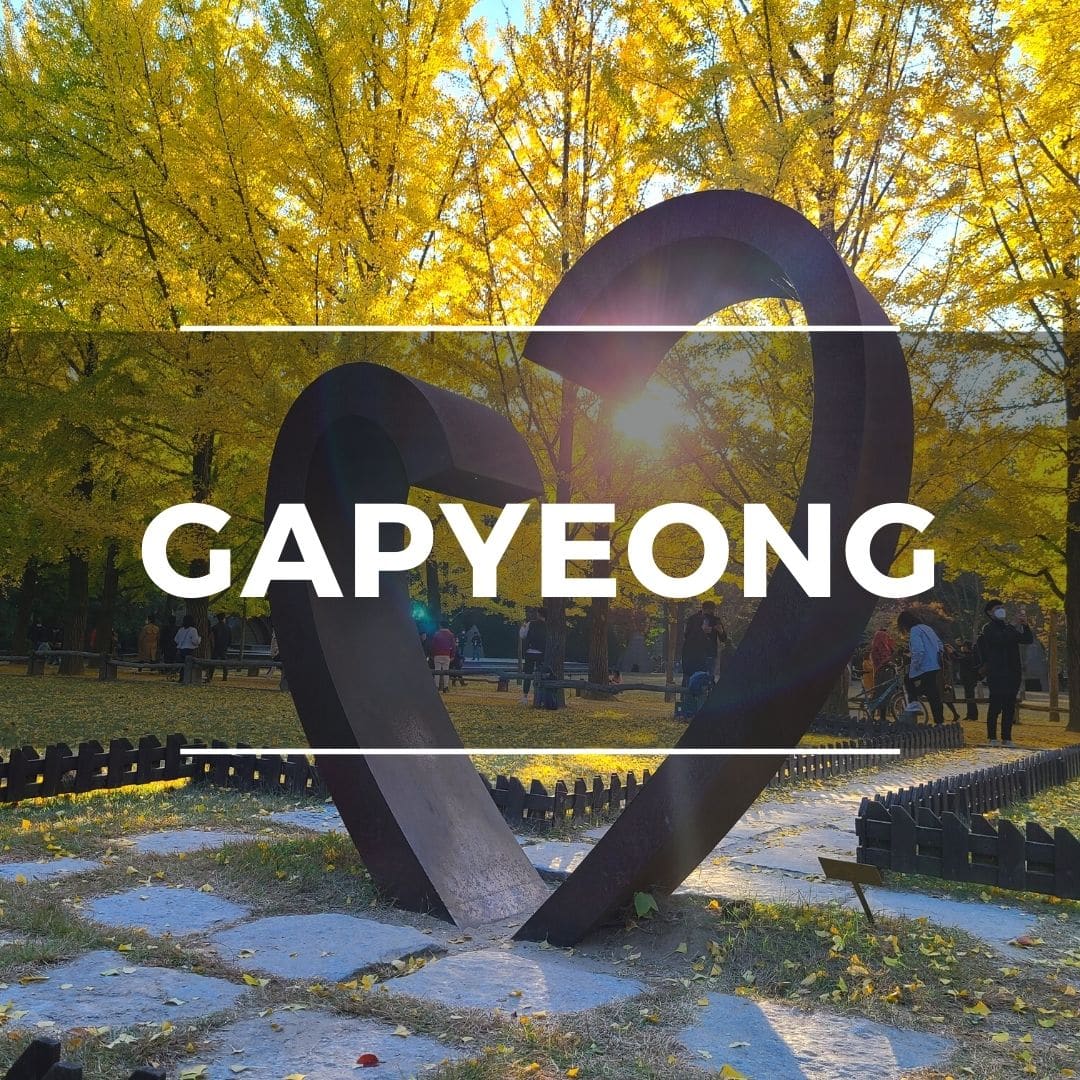
Rural Attractions
Gapyeong County is an area just outside of Seoul that’s home to several interesting attractions celebrating Korean and foreign culture. The lush green hills and blue rivers of Gapyeong make it a great place to immerse in Korean nature.
You’ll find some of the hottest day trip locations here. Explore Gapyeong County on a day trip from Seoul. You can see romantic tree-lined streets and cafes on Nami Island, explore one of Korea’s most beautiful gardens, take a trip to Petite France, and enjoy cycling through the hills on an abandoned railway track.
This Full Day Tour of Gapyeong will show you around Nami Island, Garden of Morning Calm, and the Rail Bike Park.
Here are 10 of the best Gapyeong attractions:
- Nami Island
- Garden of Morning Calm
- Petite France
- Ganchon Rail Bike Park
- Edelweiss Swiss Village
- Cheongpyeong Lake
- Jarasum Island
- Kalbongsan Recreational Forest
- Gapyeong Sledding Hills
- Nami Island Zip Line

There are loads of locations to visit in Korea that make for a perfect day trip from Seoul. Hop on a coach, train, or tour bus in the morning and explore one or more of these unique destinations.
Here are 10 of the best day trips from Seoul to discover on your next journey to Korea:
- DMZ (North Korean Border)
- Suwon Hwaseong Fortress
- Everland Theme Park
- Jeonju Historic City
- Seoraksan National Park
- Korean Folk Village
- Alpaca World
- Gwangmyeong Cave
Most travelers to Korea arrive at Incheon Airport and then travel into Seoul (it’s only 40 minutes away) to begin their journey. Seoul is certainly an incredible place to start traveling, but it definitely shouldn’t be your only destination. Korea has a lot to offer, including a lot of seasonal activities and events that you should take into consideration.
Spring and fall are the best seasons to visit Korea and during these times the traditional cities like Gyeongju and Jeonju look amazing. They’re covered with cherry blossoms or fall foliage and this creates some postcard-like scenes. Gapyeong area is packed full of natural sights to enjoy, so definitely check out these areas.
If you’re visiting during summer, head towards the coastal areas, including the north-east coastal towns of Gangneung & Sokcho, or the south-east coastal areas of Busan and the nearby islands, such as Geoje, Tongyeong, and Yeosu. You’ll find lots of winter activities to enjoy in these areas.
Winter is cold and dry and, ironically, a great time to visit Jeju Island. This semi-tropical island is warmer than the mainland, but still gets snow on the mighty Hallasan Mountain. You can sit on a sunny beach one day and then hike knee-deep in snow the next. Jeju is also famous for its citrus, with thousands of tangerine trees dropping their juicy fruits in early winter.

Where To Stay In Seoul
South Korea is truly a country of contrasts. From the bustling, modern city of Seoul , with cutting-edge designer buildings, VR labs, and AI robots, to peaceful UNESCO World Heritage cities like Jeonju and Gyeongju , there are many unique places to explore. If you’ve decided on Seoul, here are some of the best hotels that are well located and highly reviewed.
Choosing the best destinations to visit in Korea can be a challenge, especially if you don’t know what there is to see. You might not have heard of some of these destinations, which is not surprising. Korea is a country of undiscovered wonders that are waiting to be found.
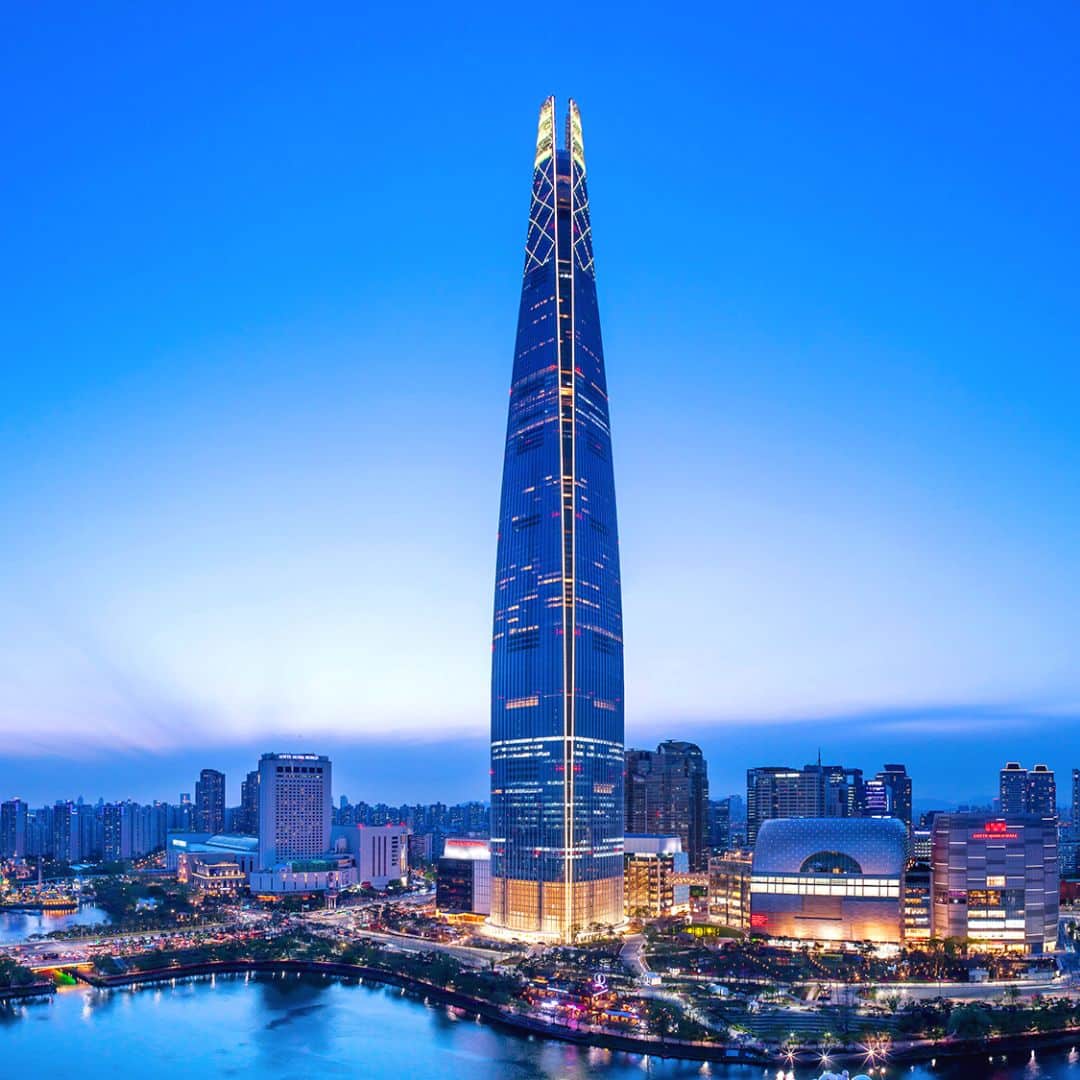
If you want the best Seoul has to offer, these luxury hotels are for you. Located in Seoul’s glitziest neighborhoods, these hotels are within walking distance of Michelin-starred restaurants, chic boutiques, galleries, museums, and the finest shopping experiences available.
Expect nothing but the best in terms of service and style at these luxury hotels. Silky soft sheets, immaculate rooms with the finest fixtures and fittings, and true 5-star service from the hotel staff. These hotels have sports, dining, and entertainment facilities to make you comfortable during your stay.
Airport transfers are available with these hotels, making your journey into and out of Seoul a breeze. Located in popular upmarket districts in Seoul, these neighborhoods have lots of local charm for you to discover, as well as allow easy access to other parts of the city with excellent transport options nearby.
Not only are these beautiful, comfortable hotels inside, but they are also located in some of the most iconic buildings or districts and provide amazing views over some of Seoul’s most interesting districts. The view from the first hotel is worth the cost alone.
Recommended Luxury Hotels In Seoul
Here are 3 of the best luxury hotels in Seoul that we recommend for an unforgettable stay in Korea’s capital:
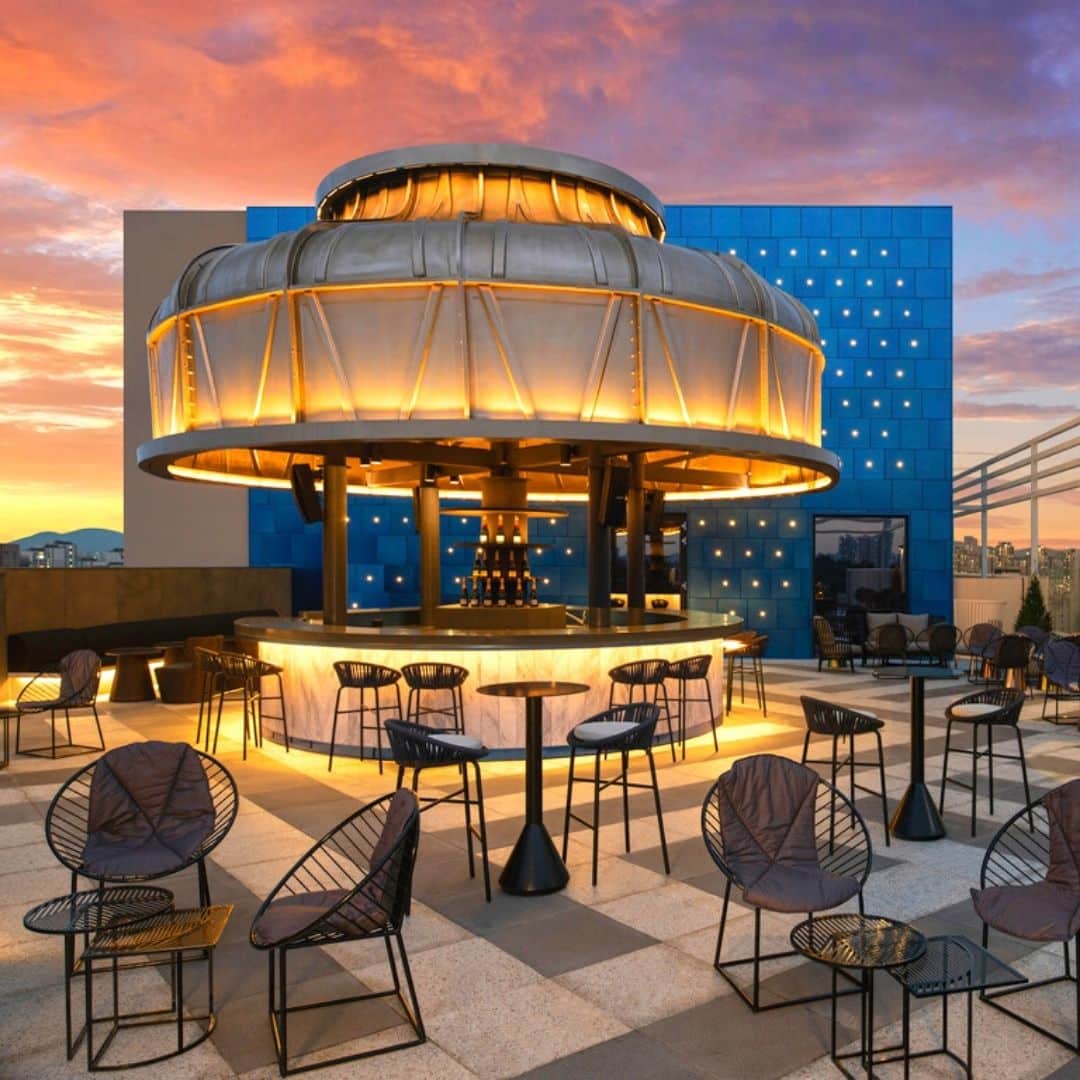
Families. couples and other travelers that want to experience the best of Seoul without breaking the bank can sleep easy with these mid-range hotel recommendations in some of Seoul’s trendy, vibrant districts, including Hongdae, Gangnam, and Myeongdong.
Encounter stylish accommodation in Seoul’s Hongdae districts, which is full of street culture and artistic scenes from the district’s eponymous Hongik University – one of Korea’s leading art centers.
Fashion lovers and shoppers will find lots to love in downtown Gangnam, with its wide streets and glassy storefronts bracketing narrow side streets and hidden delicacies.
Myeongdong is famous for its budget and mid-range accommodation options, including several hotels by the famous Lotte chain – one of Korea’s best mid-range brands.
Whichever mid-range hotel you choose in Seoul, you can be sure you’ll have fantastic city views, convenient subway access, and lots of unique cultural sights, sounds, and tastes to experience.
Recommended Mid-Range Hotels In Seoul
Here are 3 of the best mid-range hotels in Seoul that we recommend for an comfortable stay in Korea’s capital:
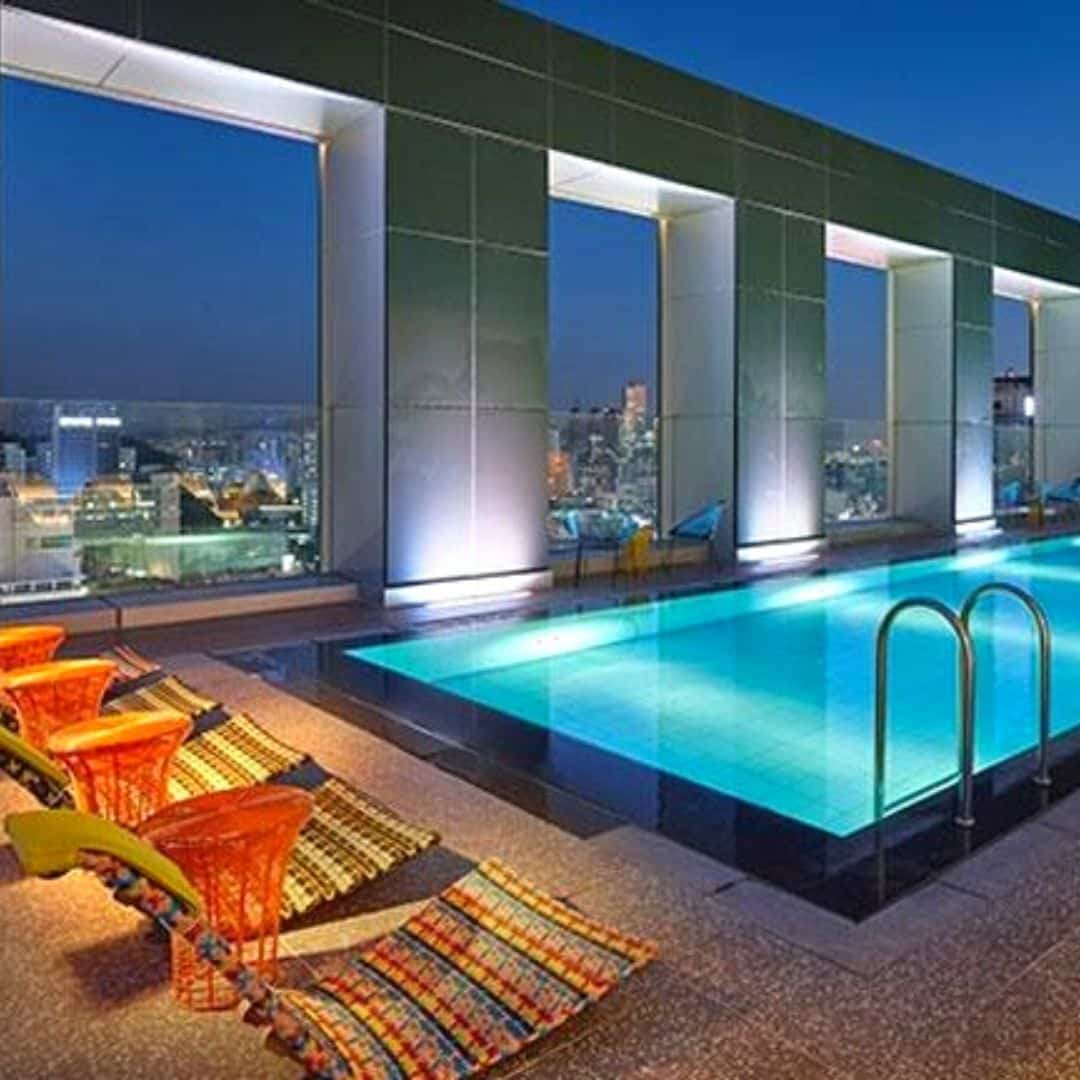
Seoul has a wealth of budget accommodation options that will help make your money go further. These hotels are all around $100 or less but offer the comfort and convenience that you’d expect to find in a mid-range hotel. One even has a beautiful rooftop pool.
Although these hotels are cheaper, don’t lower your expectations. You’ll always find great service in Korea. Save on sleeping to spend more on shopping, souvenirs, sights, and all the other fun things there are to do in Seoul.
These budget hotels in Seoul are also in great locations for shopping, enjoying local culture, and seeing the real side of Seoul and Korea. Hongdae offers bargain hunters the chance to get boutique fashion at market prices, Gangnam has plenty of cafes and cheap eats tucked away off the main avenues, and Myeongdong is a budget traveler’s paradise full of $1 street food and bargain souvenirs.
You won’t be disappointed with a night at any of these hotels. If you want to make your budget go further so you can spend more on some of the incredible day trips Seoul has to offer, definitely book a night at one of these hotels.
Recommended Budget Hotels In Seoul
Here are 3 of the best budget hotels in Seoul that we recommend for an affordable stay in Korea’s capital:

Korean Travel Tips
Korea is a unique country with a written language that looks nothing like English, fascinating etiquette rules , and an always busy lifestyle. Travelers may be lost trying to do even the simplest things.
These travel tips include the best options for staying connected, how to use public transportation easily and cheaply, great discount cards that will save you money as you travel, where to exchange money, and how to learn some basic Korean phrases for when you travel.
These essential Korean travel tips have been crafted by experienced travelers who love to save time and money. Only the best quality services and products are recommended here.
Here are our Korea travel essentials that’ll help you get around more easily, save you money, and let you get the most out of your trip.
Plan ahead now and you’ll have fewer troubles on your travels, giving you more time to enjoy your time in Korea.
If you’re traveling to Korea, you’re almost certainly going to want to get access to the internet to help you navigate, translate Korean, or even book tickets to attractions. Korea has one of the world’s best mobile internet and the prices are very reasonable. 5G mobile internet services are available across the country and Korea was one of the first to get the super-fast service. You won’t have problems connecting with a sim card or WiFi router when you travel.
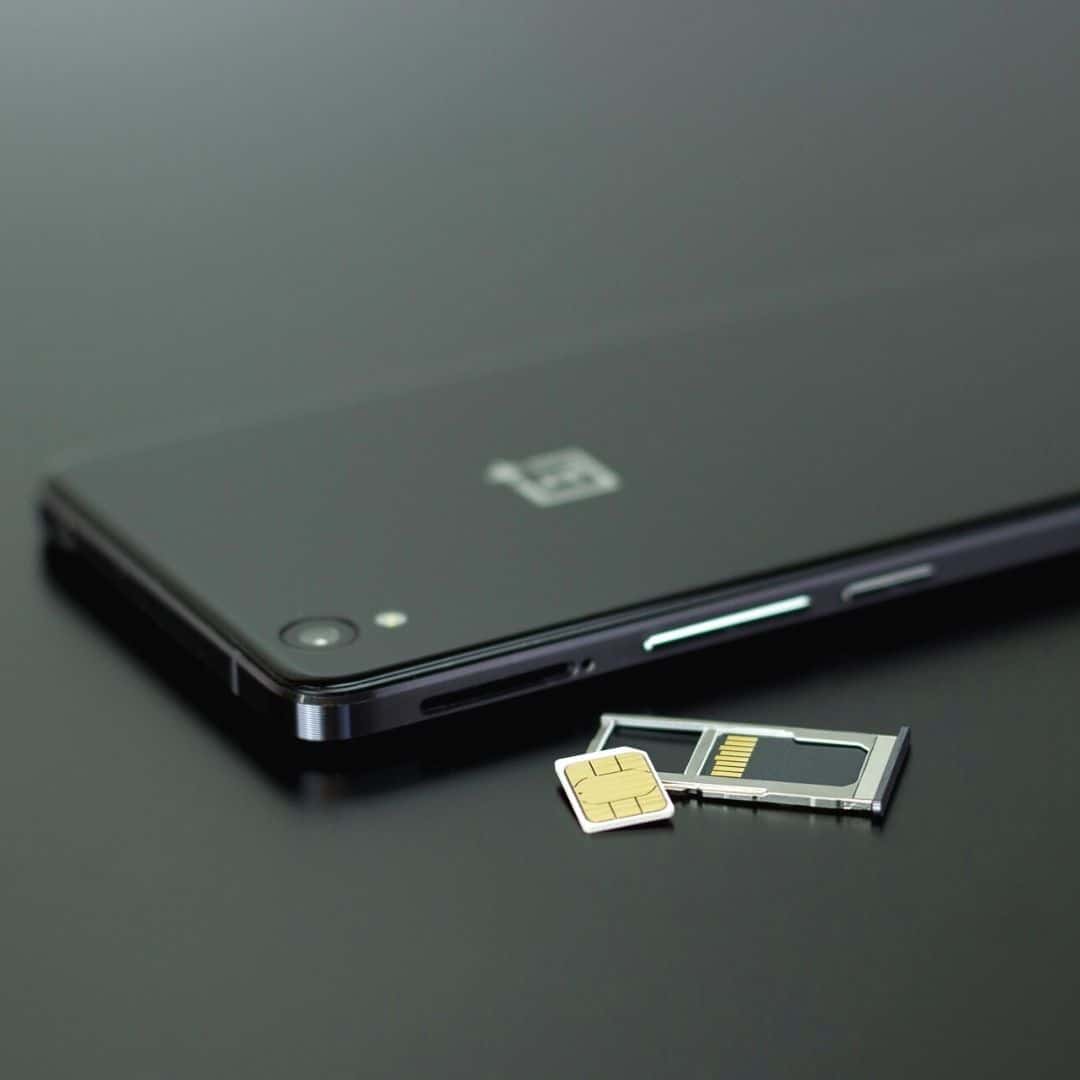
Sim Cards & Data Plans
A Korean sim card is a great way to get access to all your usual cellphone services when you travel to Korea. Sim cards come with data-only packages, or data and phone services combined.
Buying a Korean sim card will give you access to a Korean phone number, which is useful when using Korean apps. If you want to order food online in Korea, you need to have a Korean phone number to complete the order.
Korean Sim Card Costs
Prices start at W5,900 ($5) for a 1-day sim. You can also get 10-day sim cards (W34,700/$28) and 30-day sim cards (64,400/$52). These all come with unlimited data, domestic calls, and texts.
You can purchase a Korean Sim Card From Klook and collect it at the airport. This is a very convenient option as you can use it immediately to help navigate and check in back home.

Portable WiFi Routers
A Korean portable WiFi router will give you access to mobile internet throughout Korea by connecting to WiFi hotspots run by the major phone companies in Korea and comes with great coverage.
The major benefits of a portable WiFi router include a lower cost than a Korean sim card and also the ability to connect up to 3 devices to 1 router. That means that families and groups will be able to share the service.
Korean Portable WiFi Router Costs
The cost of a Korean portable pocket WiFi router is W3,200 ($2.60) per day. You can rent the WiFi router for as many days as you require and pay in advance and pay any excess days when you return it.
You can also purchase a Korean Portable WiFi Router From Klook and collect it at the airport. You can book online before you travel so that it’s guaranteed to be waiting for you.
Should I Get A Sim Card Or WiFi Router In Korea?
Both a sim card and WiFi router are great options for travelers to Korea and will almost guarantee a great reception for mobile internet. The choice between whether you should get a sim card or WiFi router in Korea really comes down to the costs involved and if you need a Korean phone number.
WiFi routers are cheaper and allow you to connect 3 devices, so they’re perfect for families. However, a sim card gives you a Korean phone number, which means you can call people and also register for Korean apps which require a phone number.
Check out our detailed article about the Best Sim Card & Portable WiFi options for traveling to Korea.
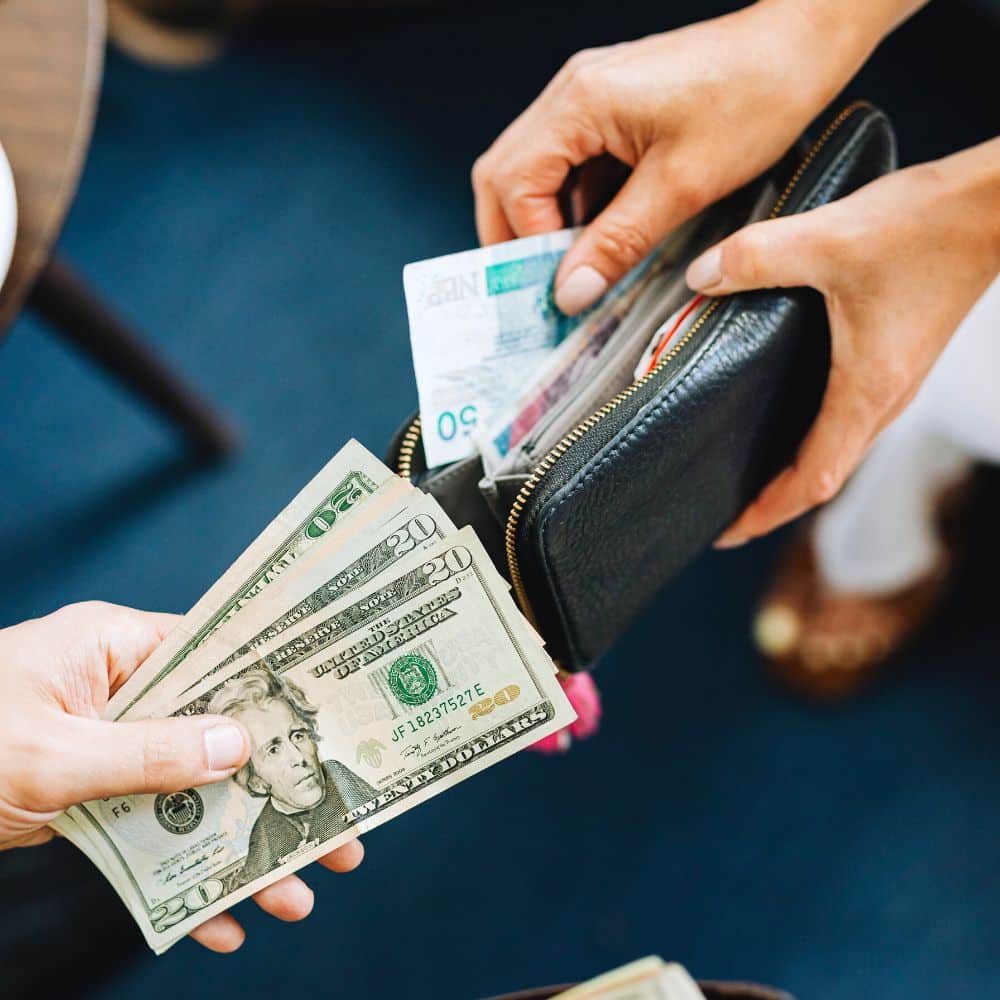
Korea is a safe, modern country and one that has pushed hard for the mass adoption of cards. Almost every location that deals with money is required to accept card payments. This is great news for travelers to Korea as you can use a card to pay for meals out, entrance tickets, trains, and lots more.
Cash is still needed for some things, such as topping up transportation cards like the T-Money Card (more on that soon) and for paying for small things like street food. Please note, as Korea doesn’t have a tipping culture, you don’t need cash for leaving a tip. In fact, if you try to leave a cash tip, it’ll be returned to you in most places.
Read on to find the best tips to avoid getting ripped off when exchanging money and how to pay the lowest fees when you use a card to pay in Korea. Be a smart traveler and save more money for shopping and souvenirs.
Korean Money Exchange Options
Once you arrive in Korea, there are several options for exchanging money. First, you can exchange money at a money changer in tourist areas such as Myeongdong. These money changers used to have the best rates in Seoul.
However, a better option these days is to use the currency exchange machines from WOW Exchange. These machines are located all over Seoul’s most popular tourist spots, stations, and hotels. They allow you to exchange foreign cash directly to Korean won, with better rates than at the airport. You can also use these machines to claim a tax refund for your shopping before heading to the airport. Both options require a passport.
Should I Change Money At The Airport?
Exchanging money at the airport is easy and convenient as you can instantly get cash to use for shopping, transportation, and general use. However, the exchange rate at the airport is usually much worse than you’ll find in other places in Korea, as mentioned previously. If you need cash as soon as you land, withdraw a small amount ($50) and then exchange the rest in Seoul.

Travel Money Cards For Korea
While cash is useful and familiar when traveling, a much better option is to use a travel money card (also known as a currency card). Travel money cards, such as the Wise Travel Money Card, allow you to pay for travel expenses without the need to carry cash or convert money.
A travel money card offers the convenience of using a credit card without high fees that a regular bank could charge. It also allows you to withdraw cash from an ATM without a fee (up to a limit), so you can avoid carrying any cash on the flight or using a money exchange. The exchange rate is the mid-market rate, meaning it’s better than you’ll find even at the money exchanges listed before.
Can I Use My Bank Card In Korea?
Credit cards are widely accepted in Korea. Visa and Mastercard users shouldn’t face a problem, but other cards aren’t as widely accepted. Debit cards and cash withdrawals might not work depending on the bank. Your bank may charge a fee when using it overseas, or give a bad exchange rate. Check with your bank before traveling.
The best option for travel money in Korea is to have a mixture of cash and cards, with a backup credit card just in case. Taking some USD with you is always a good option as you can find plenty of places to exchange it to Korean won and probably at a better rate than you’ll get in the US. If you want to withdraw money in Korea, look for the global ATMs in tourist areas.
Taking a travel money card will be safer, cheaper, and more convenient than relying on your own bank or credit card, too. These cards offer competitive rates and are widely accepted around the world so you can use them to visit other countries, too. If you use a travel money card and it gets lost or stolen, you can freeze the card instantly with the app and not have to worry about losing the balance on the card.
When you visit Korea, you’ll notice that most people pay for goods with a card or payment app, even for small purchases like a bottle of water. Unfortunately, the payment apps that are common in the US, such as Apple Pay or Google Pay, aren’t available in Korea. Korean apps, such as Kakao Pay, require a Korean bank account, and therefore aren’t an option for travelers.
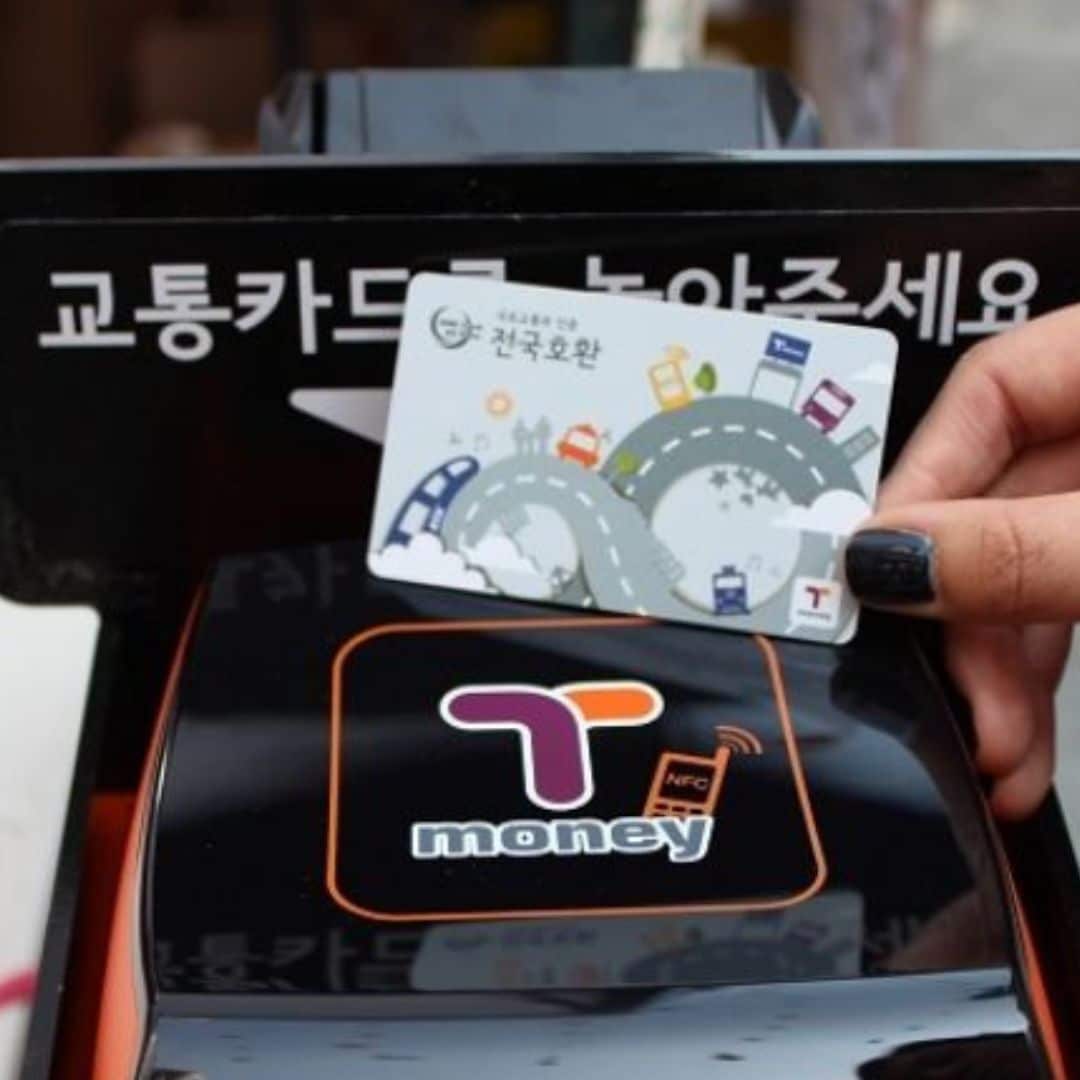
T-Money For Public Transport
The T-Money Card is an essential purchase for every traveler to Korea. The T-Money Card is a transportation card that allows contactless travel on Korea’s buses and subways. Simply buy a T-Money Card, top-up the card, then use it to travel.
Not only is this transportation card really convenient, it also saves you money. You’ll receive a discount on every bus or subway journey when you pay with the T-Money Card. These discounted fares are available in all cities across Korea, not just Seoul.
This isn’t the only use of the T-Money Card. You can also use to buy a coffee from Starbucks, get lunch in McDonald’s, shop for Korean cosmetics, and even to watch a baseball game. It’s a very useful card that can be used anywhere you see the T-Money Card.
You can get the T-Money Card in Korea from subway stations and at certain transport centers, including Seoul Station and Incheon Airport. The card costs 2,500 KRW. You can buy the card with a credit card, but to top-up the card, you need to use cash. If you buy a Discover Seoul Pass, this card includes the T-Money functions.
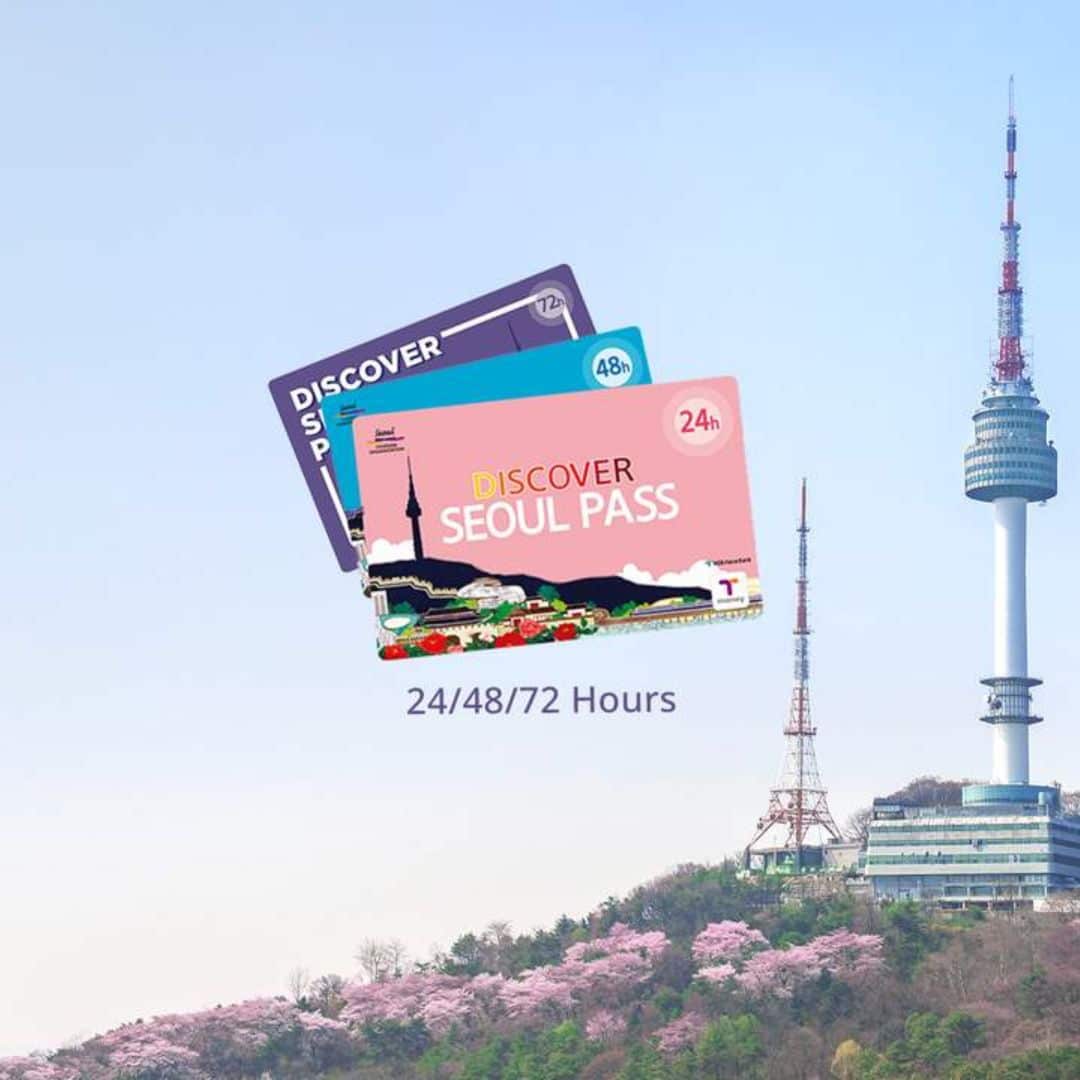
Save With The Discover Seoul Pass
Travelers to Seoul have a lot of options for incredible attractions to enjoy and experience. However, tourists, especially families, can find that the cost of these attractions quickly add up, especially when you are visiting many locations in a short time.
A great way to save money when you travel in Seoul is to buy a Discover Seoul Pass – a special card that offers you big savings on some of Seoul’s top attractions, as well as other benefits.
If you plan to visit Seoul’s Royal Palaces, N Seoul Tower, Lotte World Adventure Theme Park, the COEX Aquarium, Alive Museum, Seoul Zoo, or other premium attractions, you can gain free entry when you purchase a Discover Seoul Pass.
Not only that, you can also get a free river cruise, free hanbok rental, free ride on the Airport Express from Incheon Airport to Seoul, free City Tour Bus Ride, free T-Money Card and lots more.
The Discover Seoul Pass is valid for 24 | 48 | 72 hours and is valid from the moment you first use it until that many hours later.

Things To See & Do In Korea
If you want to build your own itinerary for South Korea, then this section of the South Korea Travel Guide will provide the building blocks you need to craft the perfect trip.
South Korea is a country packed with famous landmarks and sights, unique culture – modern & historical, family-fun activities, outdoor adventures, cozy cafe districts, and natural wonders. There’s more to do in Korea than you could imagine and it’s impossible to explore it all in one trip. Try to plan your itinerary by cities and locations. For example, plan your day in Seoul stay by district.
Here are some of the best things to see and do in South Korea, broken down into different themes so you can find things that interest you the most. The location of each of these attractions is included, too, so you can create a city by city itinerary, seeing the best South Korea has to offer.
These attractions are available all year round so whenever you go to Korea, you can enjoy them. There are plenty of things to see and do in Korea that only happen during certain seasons. Check out the Season Guide in this South Korea Travel Guide for more information about Korean festivals and seasonal events.
Here are 10 of the best Korean landmarks:
- Lotte World Tower (Seoul)
- Bukchon Hanok Village (Seoul)
- Nami Island (Gapyeong)
- Banwol ‘Purple Island’ (West Coast)
- N Seoul Tower (Seoul)
- Dongdaemun Design Plaza (Seoul)
- Seoraksan National Park (Gangwon Province)
- Hwaseong Fortress (Suwon)
- Cheonggyecheon Stream (Seoul)
- Gamcheon Cultural Village (Busan)
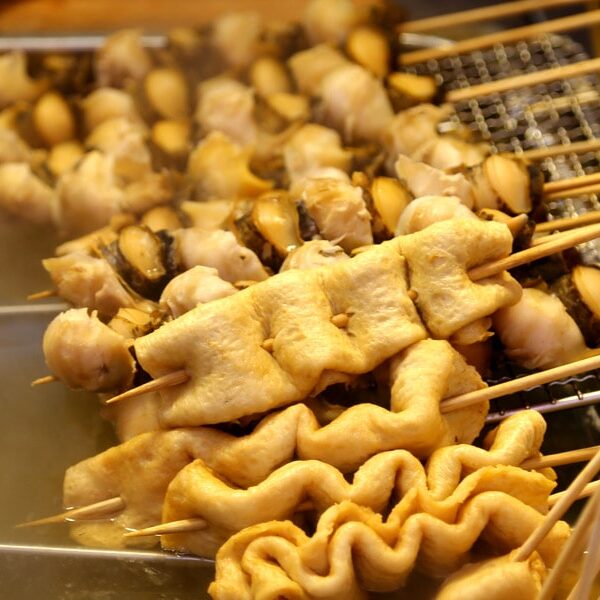
Why travel to a diverse country such as Korea and not embrace the local culture? Here are 10 of the best unique Korean experiences you can only enjoy fully in Korea. Be brave, try something new and create lasting memories of your Korean adventure.
Here are 10 of the best uniquely Korean experiences:
- Wear Traditional Korean Hanbok (Royal Palaces)
- Sing In A Korean Noraebang (Everywhere)
- Sleep In A Korean Hanok House (Hanok Villages)
- Visit The Kimchi Museum (Seoul)
- Eat Street Food (Traditional Markets)
- Experience A Korean Temple Stay (National Parks)
- Drink Makgeolli – Korean Rice Wine (Everywhere)
- Visit The World’s Most Dangerous Border – The DMZ
- Relax In A Korean Sauna (Everywhere)
- Visit A Korean Green Tea Field (Boseong, Jeju)

Here are 10 of the best Korean historic sights:
- Gyeongbokgung Palace (Seoul)
- The Secret Garden (Seoul)
- Bulguksa Temple (Gyeongju)
- Jeonju Hanok Village (Jeonju)
- Seoul Fortress Walls (Seoul)
- Haedong Yonggungsa Temple (Busan)
- Andong Hahoe Folk Village (Andong)
- Gyeongju Historic Area (Gyeongju)
- Baekje Historic Area (Gongju, Buyeo)
- Jangsaengpo Whale Museum (Ulsan)

Here are 10 of the best modern K-Culture spots:
- K-Pop Headquarters (Seoul)
- HYBE Insight (Seoul)
- COEX Artium (Seoul)
- K-Style Hub (Seoul)
- Hongdae Shopping Street (Seoul)
- Hallyu K-Star Road (Seoul)
- Asia Culture Center (Gwangju)
- Busan International Film Festival Square (Busan)
- MBC World Theme Park (Seoul)
As you’ll see, there’s just so much to see and do in Korea. You could spend a whole week in Seoul and not run out of exciting activities to do and sights to explore. Our advice is to try to avoid planning to do too many things in one day and adding in plenty of free time.
There’ll be many random things that catch your eye, such as a curious side street, or your nose, like the delicious smells from a food stall. Make sure you’ve got flexibility in your schedule to investigate these surprises and to take a rest if you need to – walking and traveling for days on end can get tiring.
Korea comes alive at night and markets and city streets are often best explored after the sun goes down. Drab concrete buildings come alive with neon signs, lanterns, and electric lights and are quite a sight to be seen. Visit popular tourist attractions such as the royal palaces and hanok villages during the morning as they’ll be less crowded.
If you plan to visit the Secret Garden in Changdeokgung Palace (you really should!), tickets are available on the day and sell out fast. Getting to these places early can guarantee you get tickets, see the sights unobstructed, and have time in the evening to soak up the night life and culture.
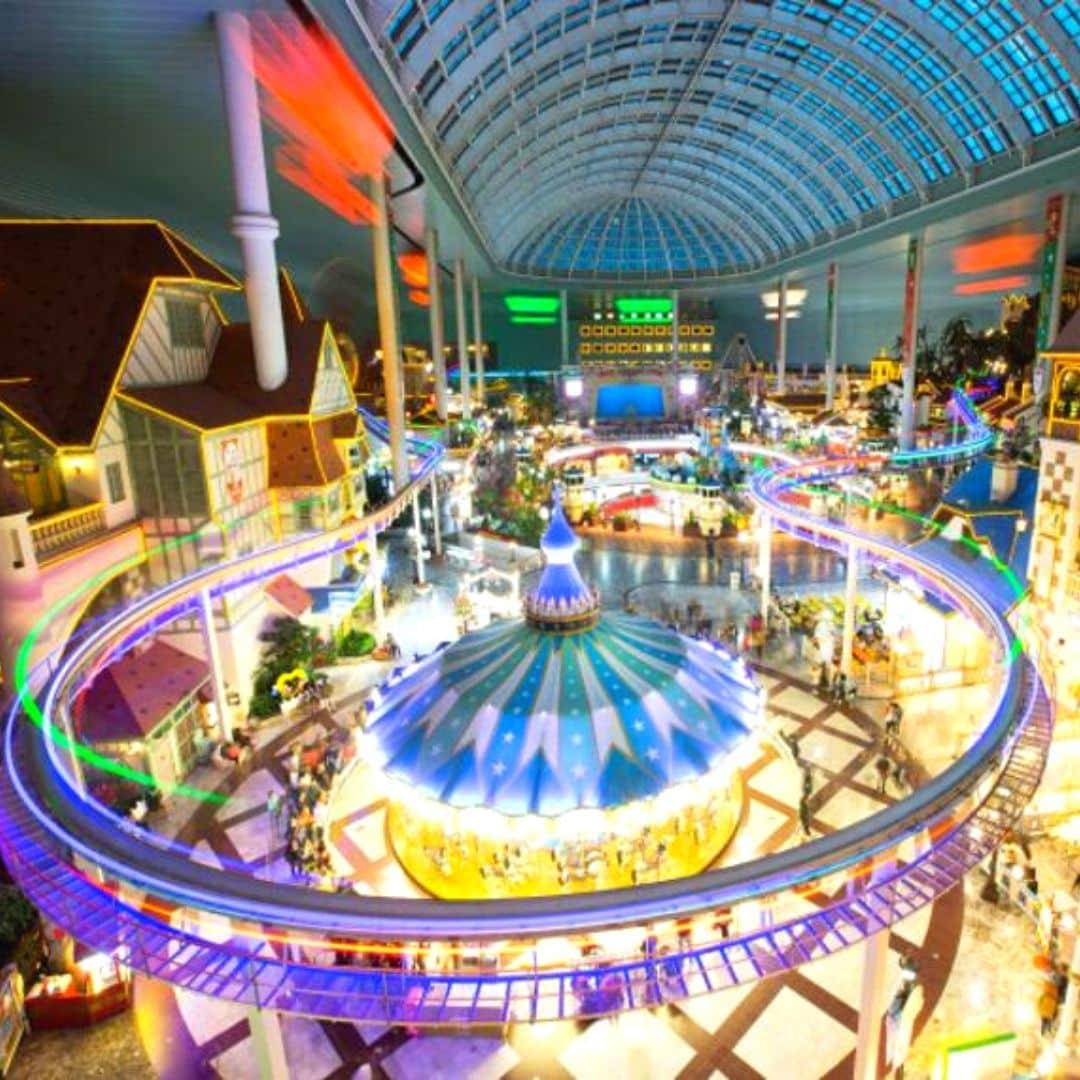
Here are the 10 best family-friendly activities in Korea:
- Nami Island & Garden of Morning Calm (Gapyeong)
- Seoul Grand Park & Zoo (Seoul)
- Lotte World Adventure (Seoul, Busan)
- Alive Museum & Dynamic Maze (Seoul)
- Seoul Children’s Grand Park (Seoul)
- Seoul Children’s Museum (Seoul)
- Everland & Caribbean Bay Theme Parks (Near Seoul)
- Sea Life Busan Aquarium
- Jeju Dinosaur Island (Jeju)
- Alpaca World (Gangwon Province)
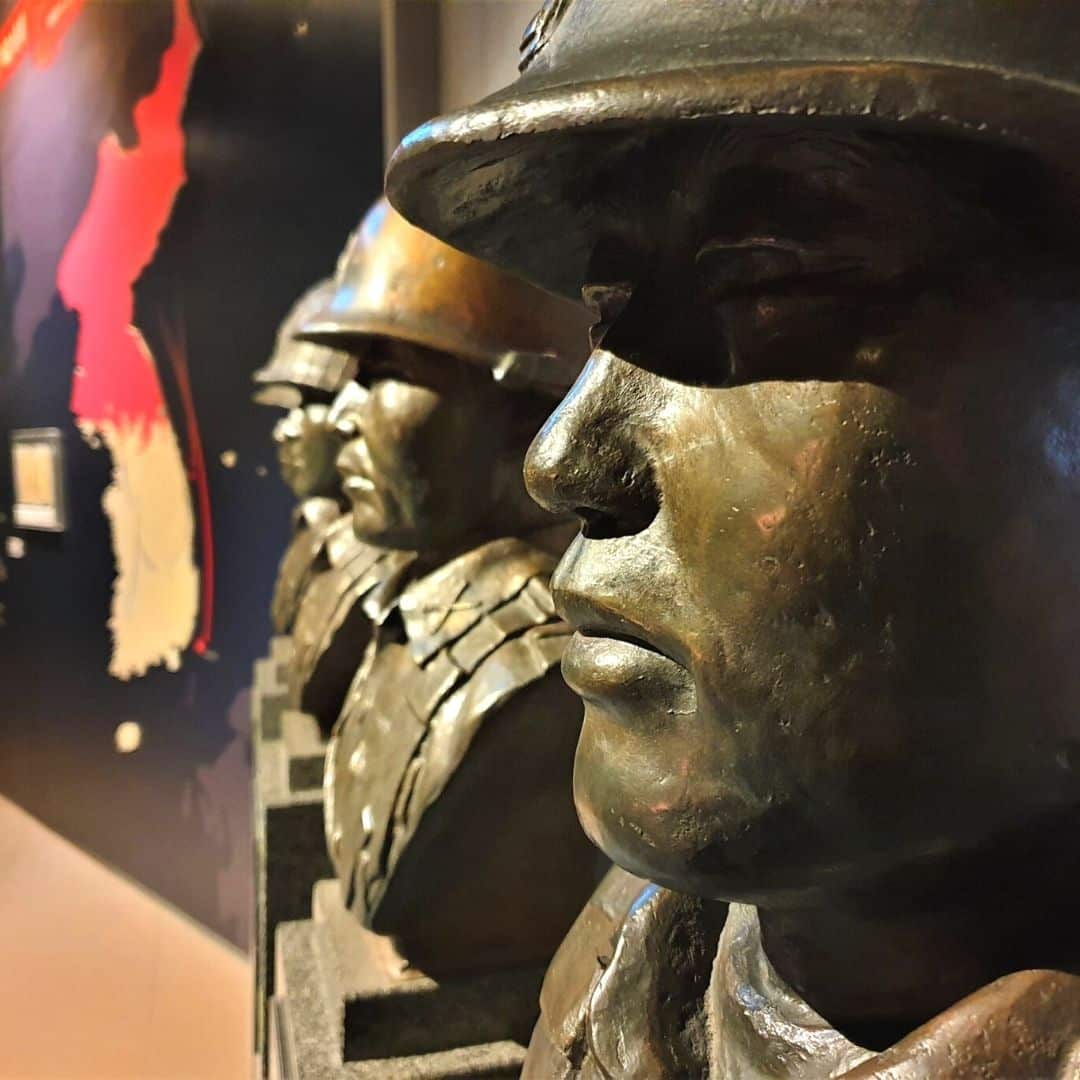
Here are the 10 best museums & galleries in Korea:
- National Museum of Korea (Seoul)
- Seoul Museum of Art (Seoul)
- Gyeongju National Museum (Gyeongju)
- War Memorial of Korea (Seoul)
- National Folk Museum of Korea (Seoul)
- National Maritime Museum (Busan)
- Seodaemun Prison History Museum (Seoul)
- Seoul Museum of History (Seoul)
- Museum Kimchikan (Seoul)
- Daegu Art Museum (Daegu)

Here are the 10 best cafe areas in Korea:
- Ikseondong Hanok Village (Seoul)
- Gyeongui Line Hongdae (Seoul)
- Samcheondong Cafe Street (Seoul)
- Jeonpo Cafe Street (Busan)
- Hwangnidan-Gil (Gyeongju)
- Gangneung Coffee Street (Gangneung)
- Sinsa-Dong / Garosugil Road (Seoul)
- Jukjeon Cafe Street (Seoul)
- Hwaseong Haenggung Area (Suwon)
- Kim Kwang Seok Gil Street (Daegu)

Here are 10 of the best Korean markets and shopping areas:
- Gwangjang Market (Seoul)
- Myeongdong Market Area (Seoul)
- Jagalchi Fish Market (Busan)
- Centum City Mall (Busan)
- IFC Mall (Seoul)
- Starfield COEX Mall (Seoul)
- Nambu Market (Jeonju)
- Seomyeong Underground Shopping Center (Busan)
- Seogwipo Maeil Olle Market (Jeju)

Here are 10 of the best natural sights in Korea:
- Hallasan Mountain (Jeju)
- Jirisan National Park (Jeollanam Provice)
- Seoraksan National Park (Gyeonggi Province)
- Seongsan Ilchulbong Sunrise Peak (Jeju)
- Damyang Juknokwon Bamboo Forest (Damyang)
- Boseong Green Tea Plantation (Boseong)
- Haeundae Beach (Busan)
- Udo Island (Jeju)
- Hwaamdonggul Cave (Gangwon Province)

Travel Itinerary For Korea
When planning a travel itinerary for South Korea, it’s best to think about what kind of experience you want when you travel to South Korea and build your itinerary from that. What kind of traveler are you and what do you want to take away from your Korea trip? Are you planning a trip for yourself, for your family, or as a romantic escape?
Do you want to learn about traditional Korean culture and history? Are you visiting to immerse yourself in modern Korean culture and maybe meet your idols? Are you planning to get out into Korea’s mountains to hike and join a Buddhist Temple Stay? Or are you going to eat, drink, shop, and make the most of Korea’s discounted goods? Or all of the above?
This section of this South Korea Travel Guide will offer some of the best one-week and two-week itineraries for South Korea. These itineraries are rough guides, created to help you begin planning your trip. Feel free to pick and choose the parts from them that you like to create your own travel itinerary for South Korea. We’ll be adding more great itineraries soon, be sure to check back for the latest ideas.
Classic 1 Week Itinerary For Korea: Seoul, Busan, Gyeongju
This is one of the most popular of the 1-week itineraries for South Korea and will take you to the most famous and interesting places that are top of most travelers’ South Korea bucket lists. Starting in Seoul, Korea’s capital, you’ll explore the best sights in this city before taking a day trip out to the lovely Gapyeong County to get a breath of fresh Korean countryside air.
From day 4, zip across the whole of Korea on the high-speed KTX train and explore Korea’s second city, Busan. See coastal temples, fish markets, wide beaches, and more in Busan before taking a day trip to Korea’s historic UNESCO World Heritage City, Gyeongju. On the last day, it’s time to return to Seoul to pack your bags full of the best souvenirs and snacks and say farewell in the highest part of the city.

Afternoon : Dressed in your hanbok, enjoy more traditional Seoul with a walk around the narrow streets of the Bukchon Hanok Village. Visit traditional Korean teahouses, galleries, markets, and more.
Evening : Check out the stalls and shops of artsy Insadong, contemplate Jeogyesa Temple, and take an evening stroll along the Cheonggyecheon Stream before dining in Myeongdong or the Jonggak Avenue of Youth. This Full Day Tour of Seoul will show you some of the hottest spots in the city, while this Customized Private Tour of Seoul will allow you to choose where to go.
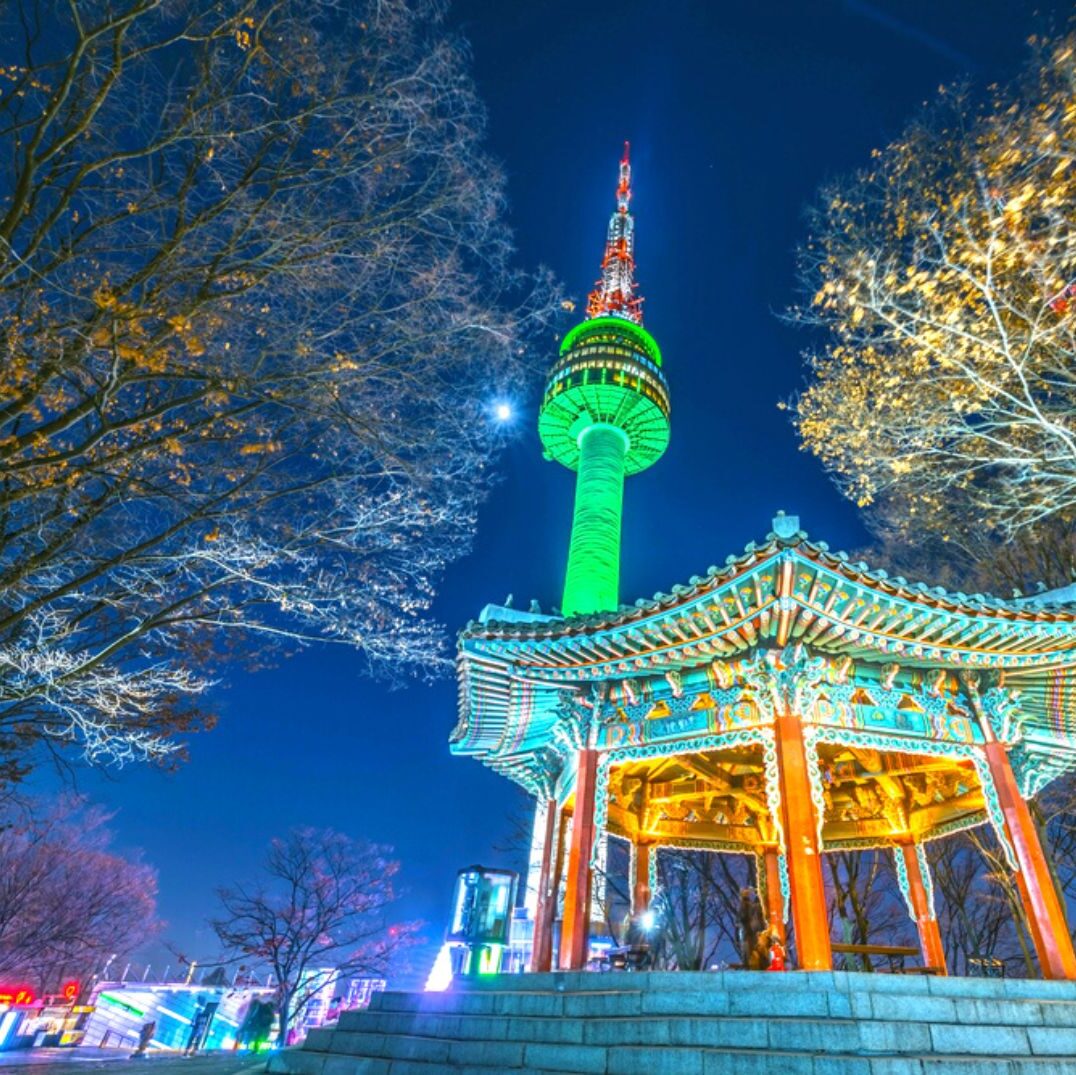
Afternoon : Head back to central Seoul and witness the bustling sights and delicious smells of Seoul’s traditional Gwangjang and Dongdaemun Markets. Try delectable Korean street foods here.
Evening : Take the Namsam Cable Car to the top of Namsan Mountain and watch the sunset from N Seoul Tower. See some of Seoul’s fortress walls before heading back down to go late-night shopping at Myeongdong Market.
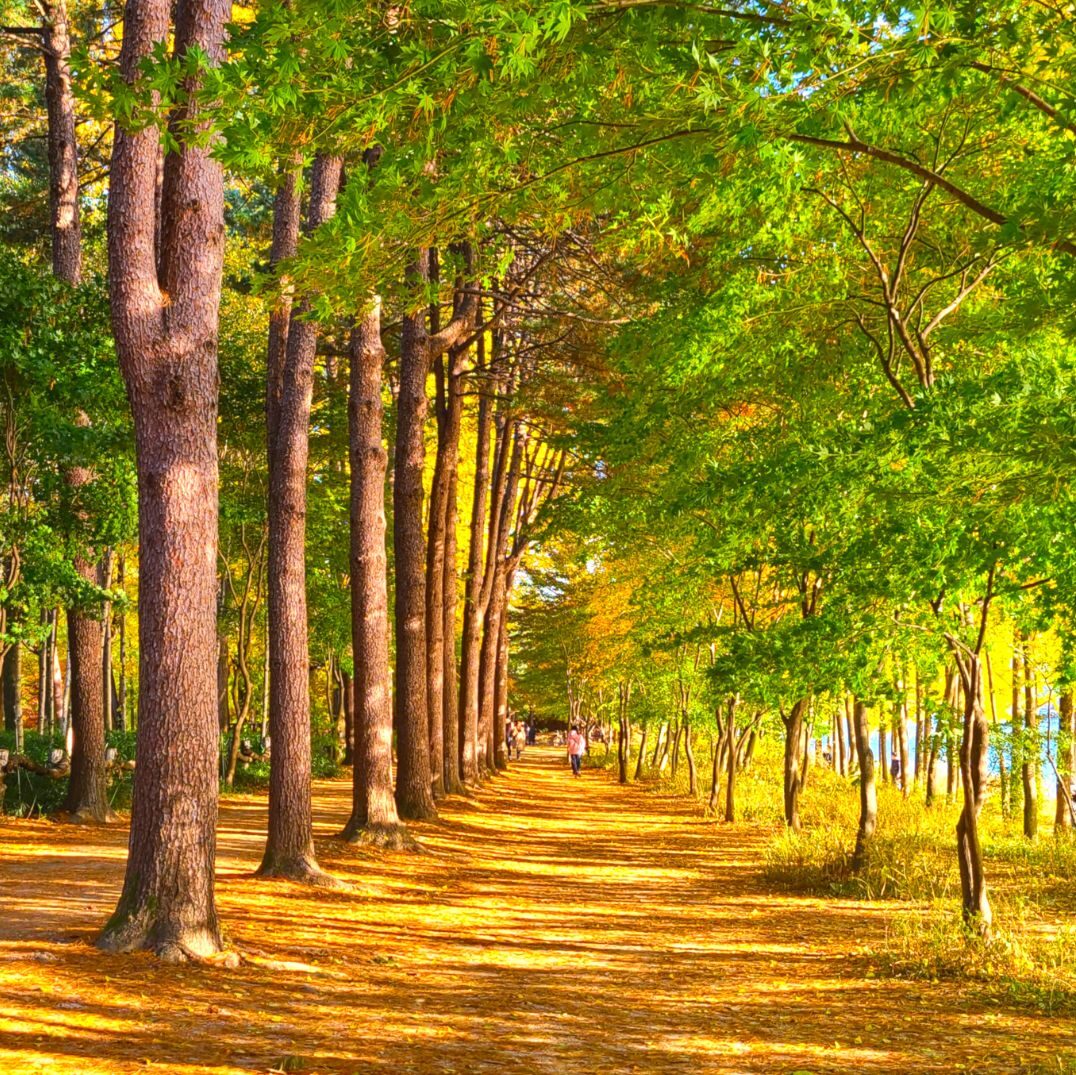
Afternoon : Zip line or sail over to Nami Island for impressive nature, bike rides, leafy walks, and cozy cafes. See popular scenes from K-dramas and even some wild animals, like deer and rabbits.
Evening : Pedal your way along an abandoned railway at the Gangchon Rail Bike Park before heading back to Seoul for fine dining in Gangnam’s Apgujeong Rodeo district.
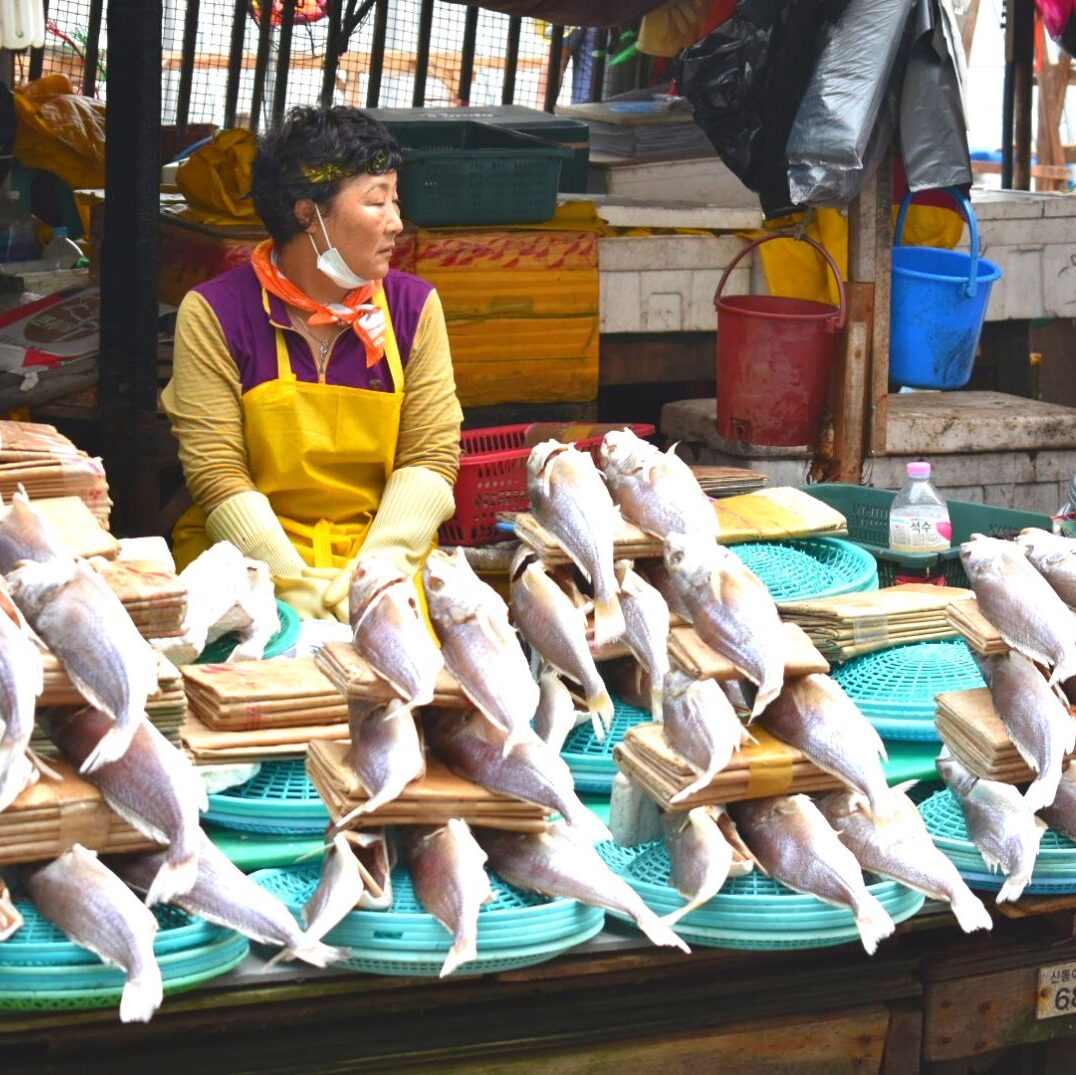
Afternoon : Head to the Nampo-dong near Busan Station and visit Jagalchi Market for a fresh seafood lunch. Then explore cosy Bosu-dong Book Alley or take a taxi to the Huinnyeoul Culture Village.
Evening : Take the subway up to Haeundae Beach for Busan’s best night-scenes. Grab dinner overlooking the beach, or at one of the market stalls. If you’re feeling brave, visit BUSAN X the SKY to see breathtaking views over the coast and city.

Afternoon : Head to the Gyeongju Gyochon Traditional Village for a traditional meal and to see the stunning Woljeonggyo Bridge. Gyeongju National Museum is nearby, too.
Evening : See the tranquil night views of Wolji Pond where palace buildings reflect perfectly in still waters. Stop at Hwangnidan-gil area for dinner and drinks before returning to Busan.
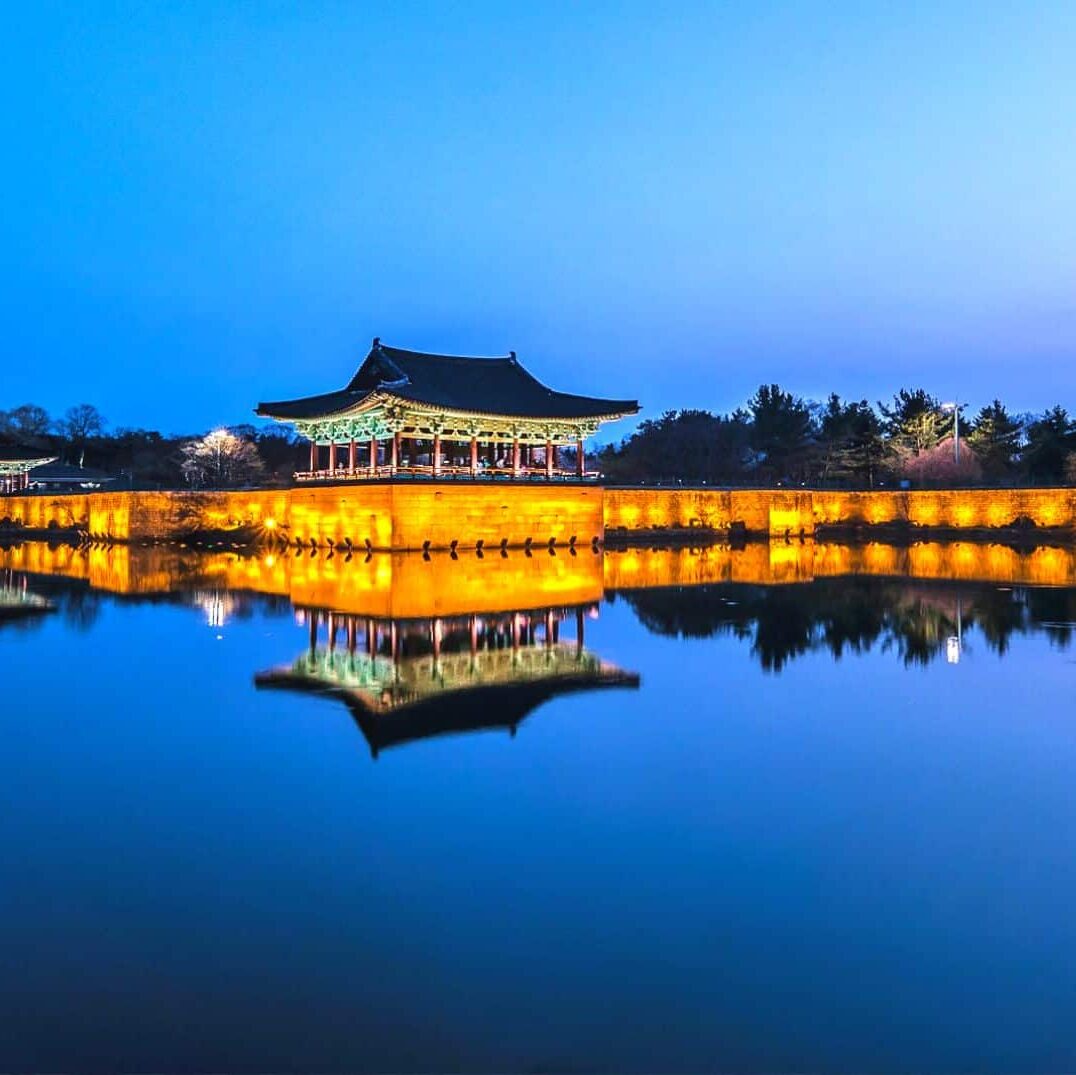
Afternoon : Explore the artistic shopping streets of Hongdae for last minute souvenirs and gifts for yourself. Take a break in one of the unique animal or artsy cafes.
Evening : Either take a night cruise along the Han River from Yeouido Hangang Park or dine in style at the Lotte World Tower in Jamsil, the world’s 6th tallest building. Both offer great night views of Seoul and unforgettable memories to take home.

Korean Seasons Guide
The best time to visit South Korea is during the warm spring or fall seasons. The weather is mild and clear, there’s a range of festivals and seasonal activities to enjoy, and you can travel to Korea comfortably.
The best months to visit are April, May, September, and October. These months are all during the Korean school semester, so there won’t be as many local travelers around during the weekdays. However, expect the weekends to be busy as people leave the cities to travel within Korea.
Large public holidays, including Chuseok (mid-autumn festival) in September / October) and Buddha’s Birthday (May), provides travelers with the opportunity to experience Korean culture and celebrations. These holidays change each year based on the lunar calendar.
Korean Weather & Climate
South Korea is a country that experiences four very distinct seasons, with temperatures ranging from 100 Fahrenheit in the summer to below 0 Fahrenheit in the winter. Each of South Korea’s seasons brings opportunities to see unique natural views and enjoy the different climates in Korea.
Spring has some of the gentlest weather, with light rain and a quick jump in temperature to the 60s and 70s by late March. Summer begins with the rainy season in late June and becomes extremely humid and hot throughout July and August before cooling again in September.
Fall has the best weather in Korea, with many warm, sunny days. Cold winter weather appears very quickly in mid-November and the first snow usually appears by late November. Winter is dry and sunny with the lowest chance of rainfall but is also very cold. Snow isn’t constant, but can fall for several weeks on and off during winter.
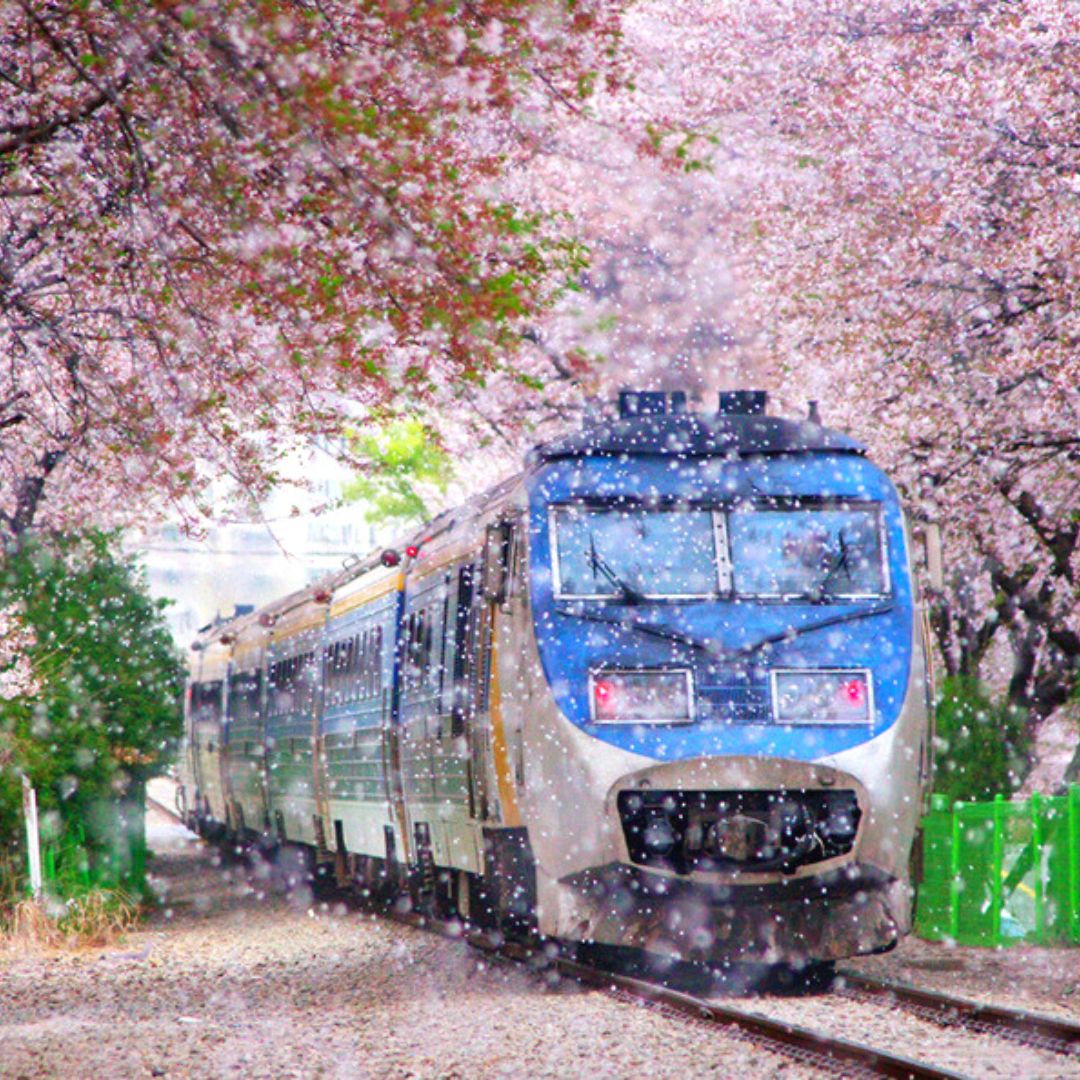
Visiting in spring offers the chance to see beautiful cherry blossoms stretch across the country, as well as many other spring flowers that brighten up Korea after a cold winter.
Spring starts in late March with the awakening of the cherry blossoms and ends in early June with the start of the rainy season. South Korea is a country with a close connection to nature, which can be witnessed in the many spring festivals and celebrations that happen throughout the year.
Some of the best spring festivals include the Jinhae Cherry Blossom Festival, Damyang Bamboo Forest Festival, Yeon Deung Hoe Lotus Lantern Festival, Jindo Sea Parting Festival, and Boseong Green Tea Plantation Festival.

The weather in summer is perfect for getting outside and relaxing on one of Korea’s many beaches. Some of the best activities include spending a weekend camping or glamping by the beach, hiking in shaded valleys in the national parks, and water sports such as surfing, kayaking, and scuba diving.
Unfortunately, the heat may put off some travelers, and high humidity makes it uncomfortable to move around too much. Fortunately, Korea is a modern country with lots of air-conditioning and ways to deal with the hot weather, including delicious summer dishes.
Cool down with a bowl of Korean bingsu (shaved ice dessert) or a cool latte in one of the many cozy Korean cafes in popular beach destinations.

Travelers to Korea in the fall are treated to spectacular fall foliage creeping far and wide. You can see it falling on palace grounds, sprawled on mountains in national parks, and along city streets.
The start of the fall foliage season in Korea coincides with the end of the hot and humid summer, with clear skies and cool weather, making it the perfect time to travel in Korea. Like spring, the fall season in Korea is one of the festivals and celebrations.
The Chuseok holidays in late September / early October are the biggest public holidays of the year, with cultural events held in popular tourist destinations. There’s also a range of cultural festivals, such as the Andong Mask Festival, Baekje Culture Festival, Jinju Namdang Yudeung Lantern Festival, Jeonju Bibimbap Festival, and the Seoul Kimchi Festival.

Winter, like summer, has more extreme weather than spring and fall, with temperatures often in the 20s and 30s and below. This season, however, is also one of the best for travelers who want to see clear, blue skies and experience good weather.
Winter is the driest season and it very rarely rains. If you don’t mind the cold weather, it’s perfect for traveling around South Korea. One of the biggest draws during winter is the chance to see snowy Korean landscapes, from snow-bedecked royal palaces to frosty peaks atop Korea’s many mountains.
Winter sports are popular in Korea, with ski and snowboard resorts aplenty. Winter also offers the chance for family fun with winter attractions including sledding, winter illuminations, and Christmas parades.

Cost To Travel To Korea
The cost to travel in South Korea largely depends on your personal style of travel. You can travel on a low budget in Korea, for under $50 per day, or you could also travel for 10 times that amount if you wished to.
Food costs range from a few dollars for a bowl of jajang (black soybean) noodles to hundreds for premium hanwoo (Korean beef) steak. The same applies to accommodation, with budget hostels costing $10 per night and premium 5 stars hotels costing hundreds.
Most travelers to Korea will already know what they want to prioritize their spending on. Some travel to Korea to eat, others to shop, and many more to experience the unique culture and history that Korea has to offer.
The costs in this section of our South Korea Travel Guide are based on the latest costs in Korea from this year. Examples of different costs have been covered to give you an idea of what to expect when you try to budget.
Please note, these prices are based on traveling in Seoul during non-peak times. Prices may be higher in peak times, which include cherry blossom season (Apr) and fall foliage season (Oct). Popular tourist cities, such as Gyeongju and Jeonju, may also have higher prices on weekends.
How Much Does It Cost To Travel In South Korea?
Travelers may find they want to spend more on hotels and less on eating out, or vice-versa, so don’t feel like you have to only follow the costs for one section. This is only a guideline to help you plan based on your own personal preferences.
To make it easier to figure out your expected costs to travel in Korea, this South Korea Travel Guide has broken down the costs into 3 different categories. These categories loosely fit 3 different types of travelers, as described below:
- Accommodation: $200+ per night, per room (double)
Korea has a wide range of luxurious hotel options, including rooms in the Lotte World Tower, historic hanok houses, and glamping for those who want to escape to the countryside.
- Food & Drink: $100+ per day, per person
It’s easy to spend a lot on food and drink in Korea as there are so many delectable restaurants. Fresh seafood, Korean steak, or the finest foreign foods are all available.
- Transportation: $20+ per day, per person
Taxis and transportation are relatively cheap in Korea. A taxi journey across Seoul can cost less than $20 for 30 minutes and even the 1st class options on Korea’s high-speed trains are under $100 for the longest journey (Seoul to Busan).
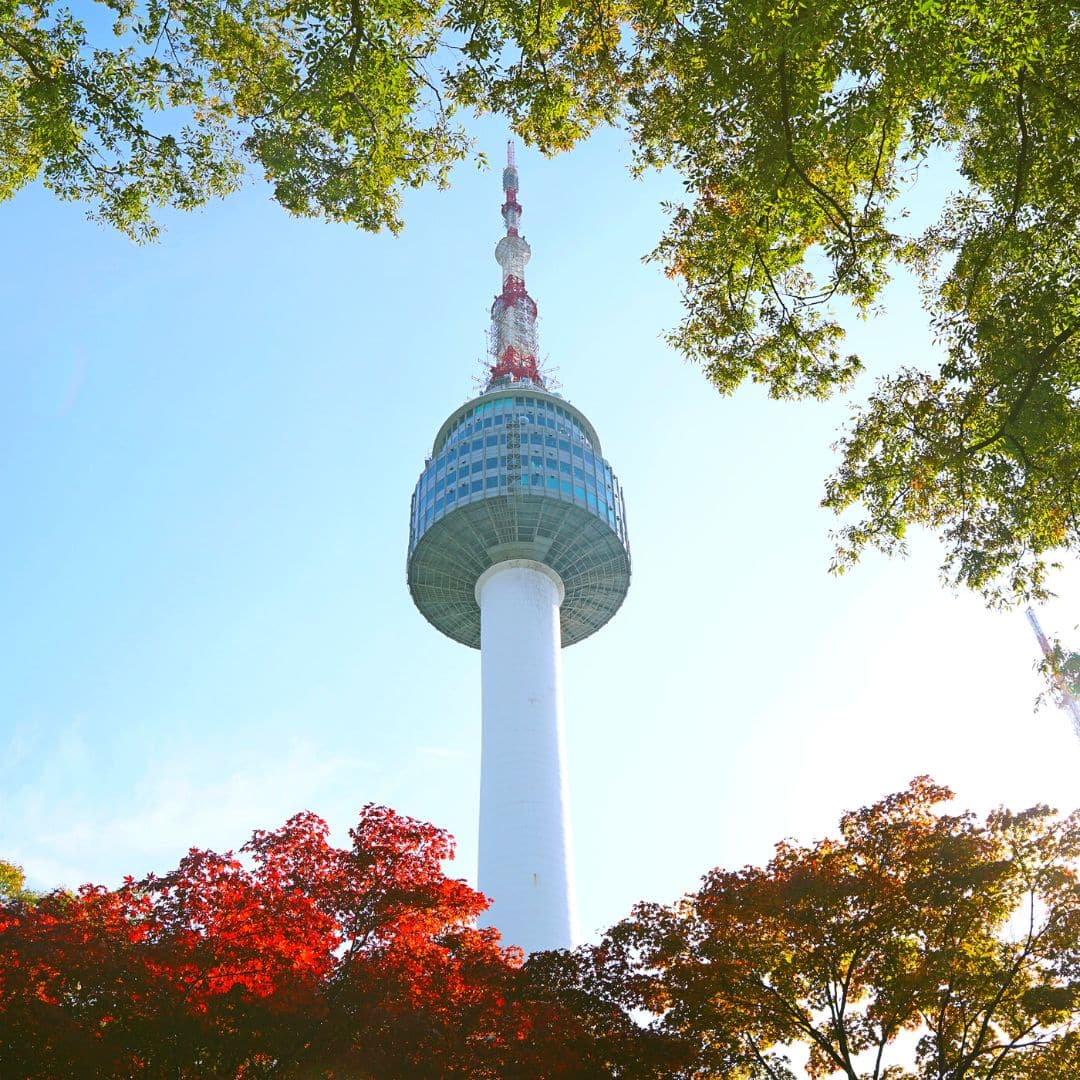
- Accommodation: $100 ~ $200 per night, per room (double)
You can book 4-star hotels in Seoul for very reasonable prices and enjoy both comfort and lower prices than you’d find at home. Korea has a wide range of comfortable mid-priced hotels.
- Food & Drink: $50+ per day, per person
With all-you-can-eat Korean restaurants that serve unlimited Korean BBQ and other dishes for under $20 or $30 per person, it’s easy to enjoy the best food Korea has to offer without breaking the bank.
- Transportation: up to $15 per day, per person
Use the subway and buses to get around the big cities and trains to travel further around Korea without breaking the bank. You can even splash out on a taxi and pay only a few dollars per person when traveling as a group for a few dollars extra.
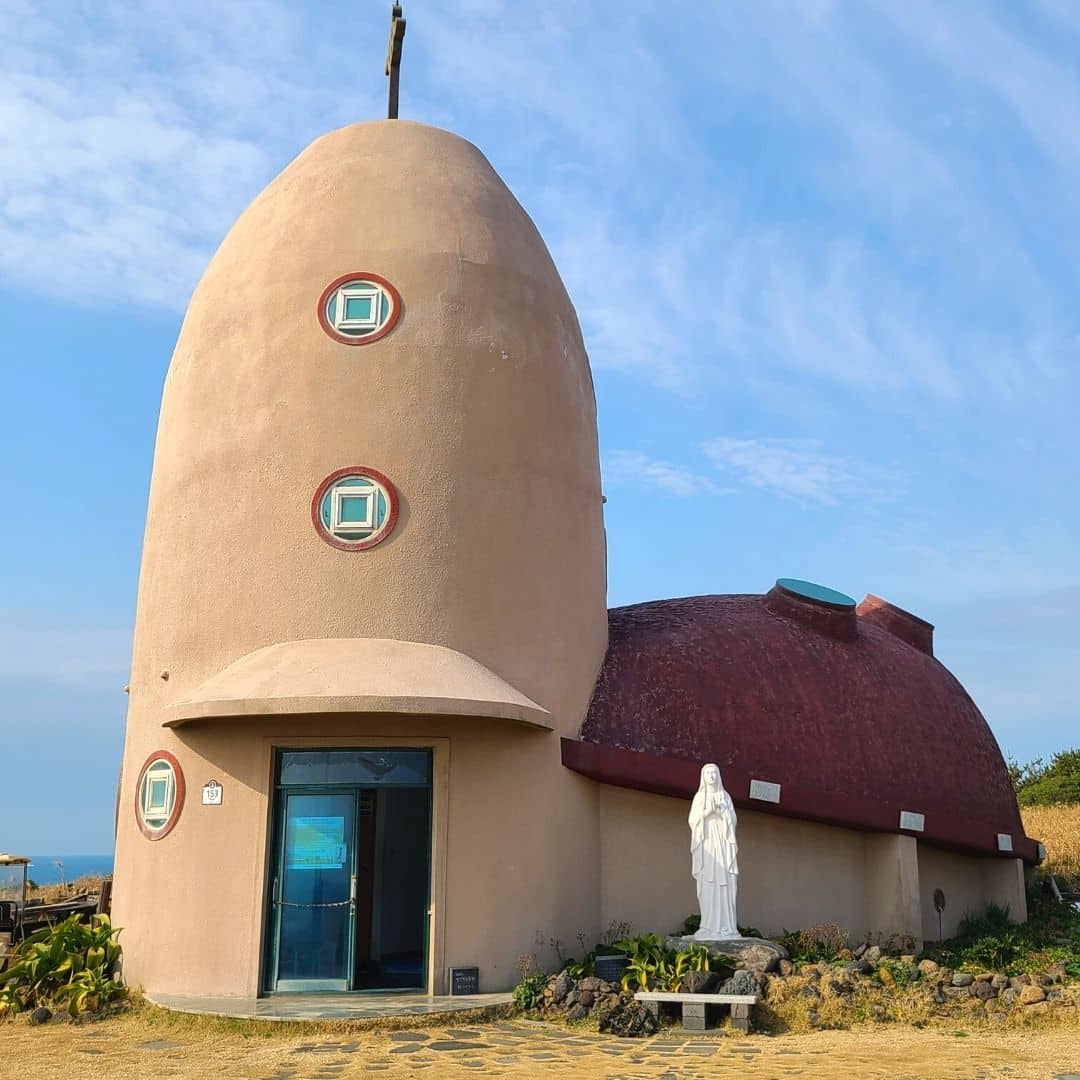
- Accommodation: up to $100 per night, per room (double)
Hostels and guesthouses can be found for under $50 per night and are perfect for somewhere to rest and recharge. If that’s all you need, save money here and spend it elsewhere.
- Food & Drink: $20 – $30 per day, per person
If you budget well and stick to street food, free hotel breakfasts, and convenience store foods, you can eat well and still have enough to splurge on good food for dinner.
- Transportation: up to $10 per day, per person
Walking and buses are cheap and convenient ways to travel around Korea’s biggest cities. Traveling from city to city is also cheap, with intercity buses costing less than $10 for 1-2 hour journeys.

Further Costs To Travel In South Korea
Besides these everyday costs to travel in South Korea, there are other costs that you’ll need to cover from time to time. These costs include internet & phone access, day trips, activities, souvenirs, travel insurance, and flights. These costs will be broken down into low and high-end costs that you can expect to pay in Korea.

Museums and galleries offer unique (and authentic) Korean souvenirs such as pottery, painting, tea & soju sets, and more. If you want something a bit more special, head to the underground markets near Gwangjang Market in Seoul and get your own handmade hanbok, which you can get posted back home to save luggage space.
- Small Souvenirs: $5+
- Korean Cosmetics: $5+
- Korean Artworks: $10+
- Korean Tea (box of): $10 to $20
- Korean Soju Set: $10 to $20
- Korean Handcrafts: $10+
- Tailored Hanbok: $200+
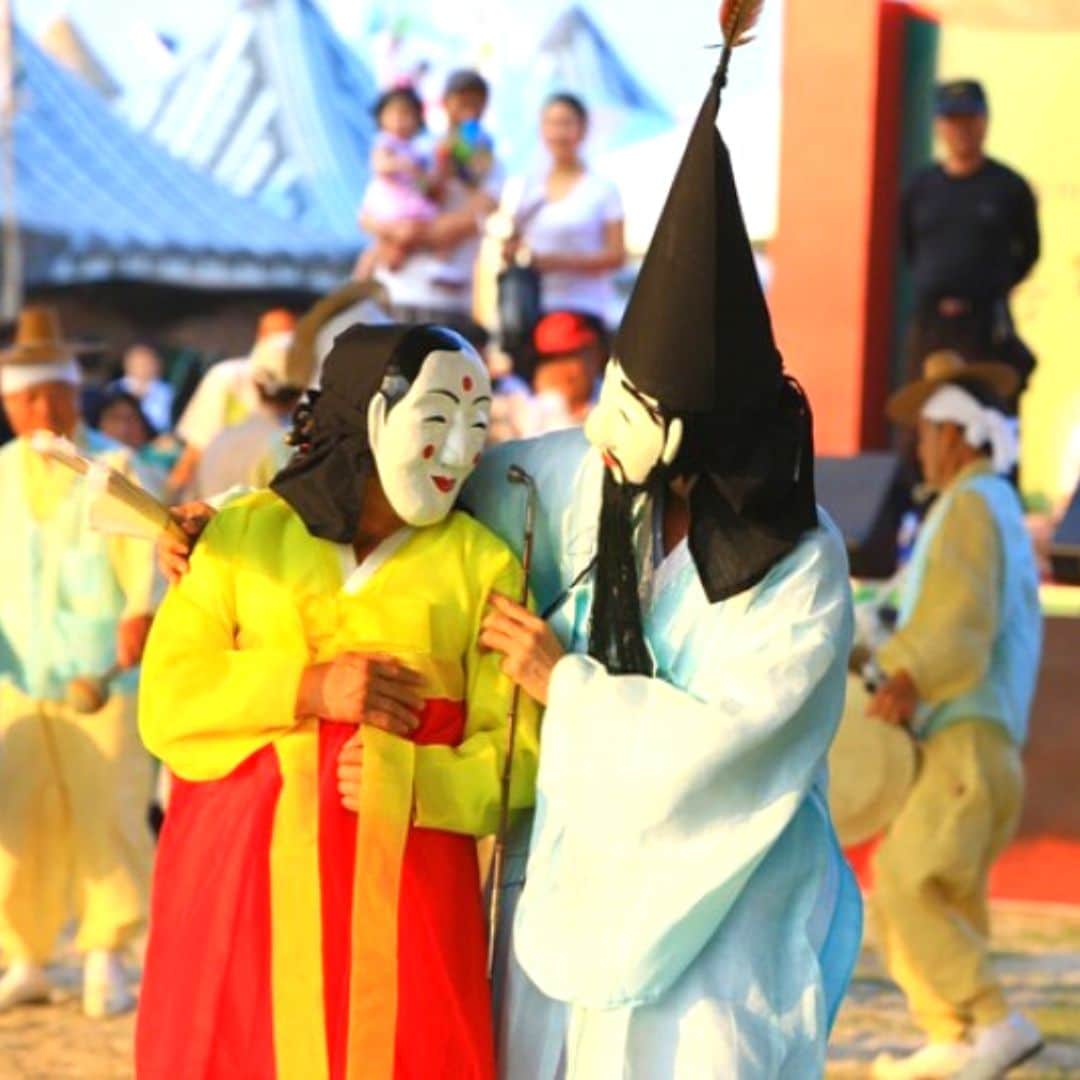
The day trip prices quoted below are the prices you can expect to pay with a reputable tour company like Klook or Trazy . Hiring a private guide will be a lot more expensive and might come to $200+ per day.
Please note: The prices quoted below are estimates and may change depending on the season or tour services.
- DMZ Tour – $50 to $120
- Nami Island Area – $40 to $70
- Everland Theme Park – $30 to $50
- Jeonju Hanok Village – $50 to $70
- Korean Folk Village – $50 to $60
- Seoraksan Mountain – $70 to $150
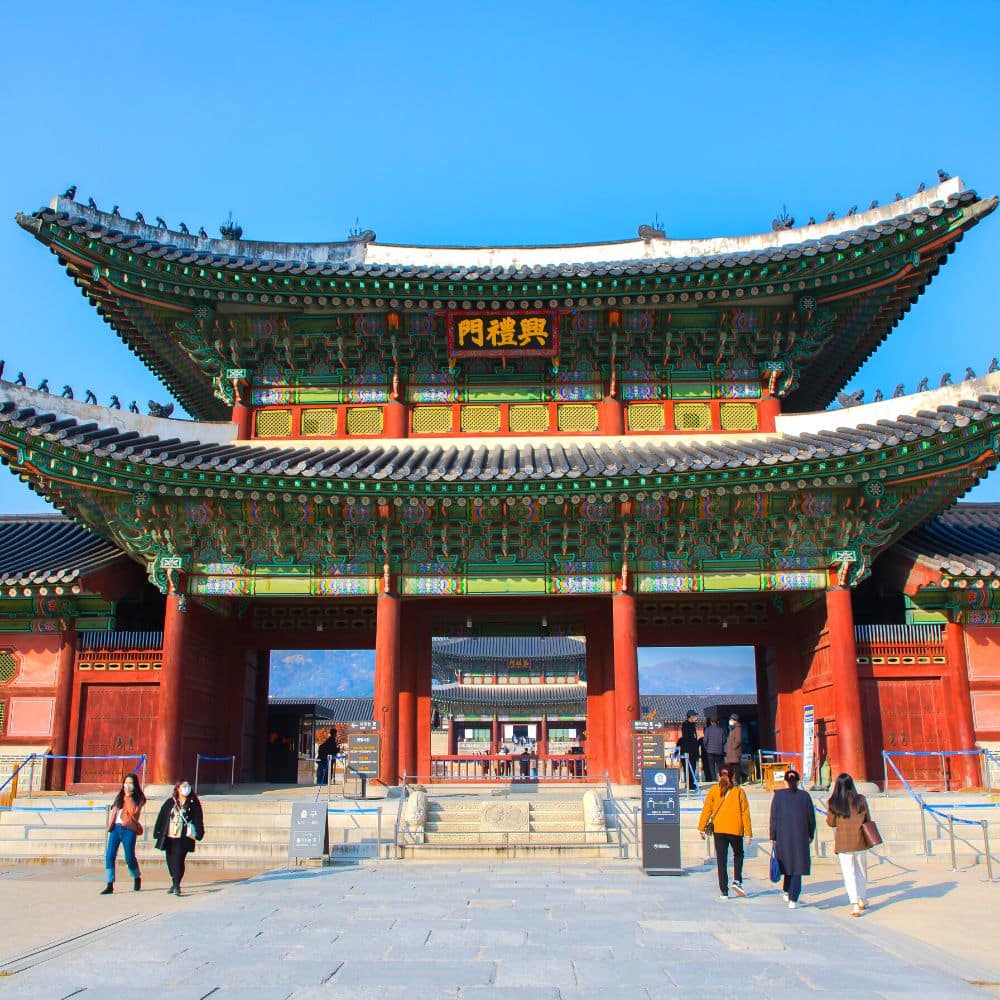
As mentioned earlier in this South Korea Travel Guide, buying a Discover Seoul Pass is a great way to save money on Seoul’s premium attractions.
- Royal Palaces – $3
- N Seoul Tower – $10
- Hanbok Rental – $10+
- Seoul City Tour Bus – $10
- Han River Cruise – $15 to $30
- Seoul Sky Observatory – $30 to $50
- Aquariums – $20 to $30
- Seoul Zoo & Seoul Grand Park $10
- Amusement Parks – $30 to $40
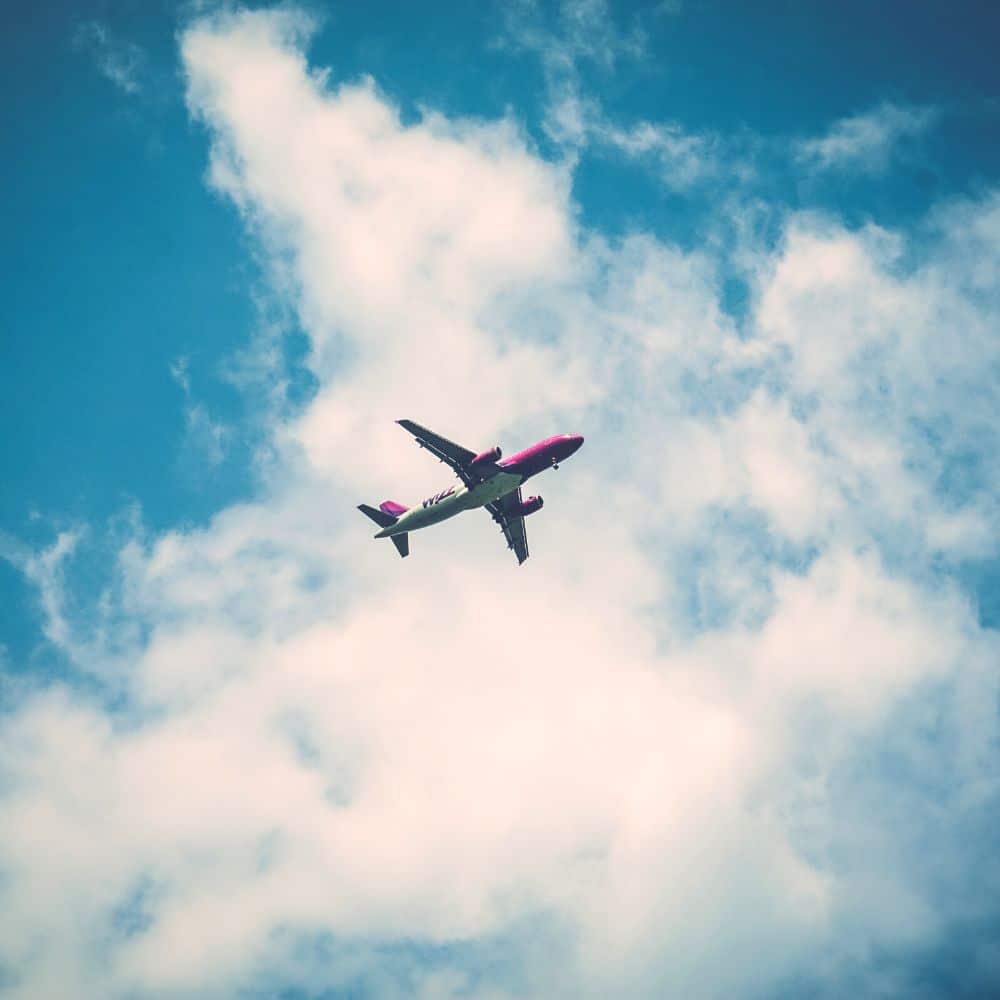
The cost to fly to Korea is more than twice the normal price right now. Fortunately, Korea ended the restrictions on the number of flights into the country from June 2022 and flight costs and availability should be improved in the near future.
Best of Korea recommends Skyscanner and Expedia for the best flight deals to Korea.

Why Travel To South Korea?
In recent years, travelers from around the world have been increasingly drawn to South Korea. The country is a must-see destination in Asia, with more than 17 million travelers in 2019. After reading this South Korea Travel Guide, you’ll understand what draws so many people to the Land of The Morning Calm, as Korea is also known.
There are myriad reasons why people visit Korea. Many come to experience life in a unique country, packed with historical and cultural sights that you won’t find elsewhere in the world. In the afternoon you can walk through a royal palace dressed in hanbok (traditional Korean clothes), sip green tea in a hanok (traditional Korean house), and pass Buddhist monks walking peacefully through an ancient temple.
Modern South Korean culture is conquering the world, with chart-topping acts that include BTS and Black Pink, Oscar-winning movies like Parasite, and phenomenally successful TV shows like Squid Game. This brings in legions of fans flocking to shooting locations and film sets to relive their favorite K-Culture moments. Some lucky travelers even get to catch sight of their favorite K-Stars walking around Gangnam, a hotspot for Korea’s most famous citizens.
Not only is Korea a beautiful country, it’s a country that will make you beautiful, with some of the world’s best fashion and beauty shops. Korea is famous for its K-Beauty products and is a beauty and fashion shoppers paradise. From the street fashions of Hongdae, to the luxurious fashion malls of Gangnam, and the wall-to-wall malls with discount clothes in Dongdaemun, you’re guaranteed to find something you can’t resist at a great price. If you prefer a cultural shopping experience, there are traditional markets all over Korea, where you can experience street food, buy novel gifts, and see how locals live and socialize.
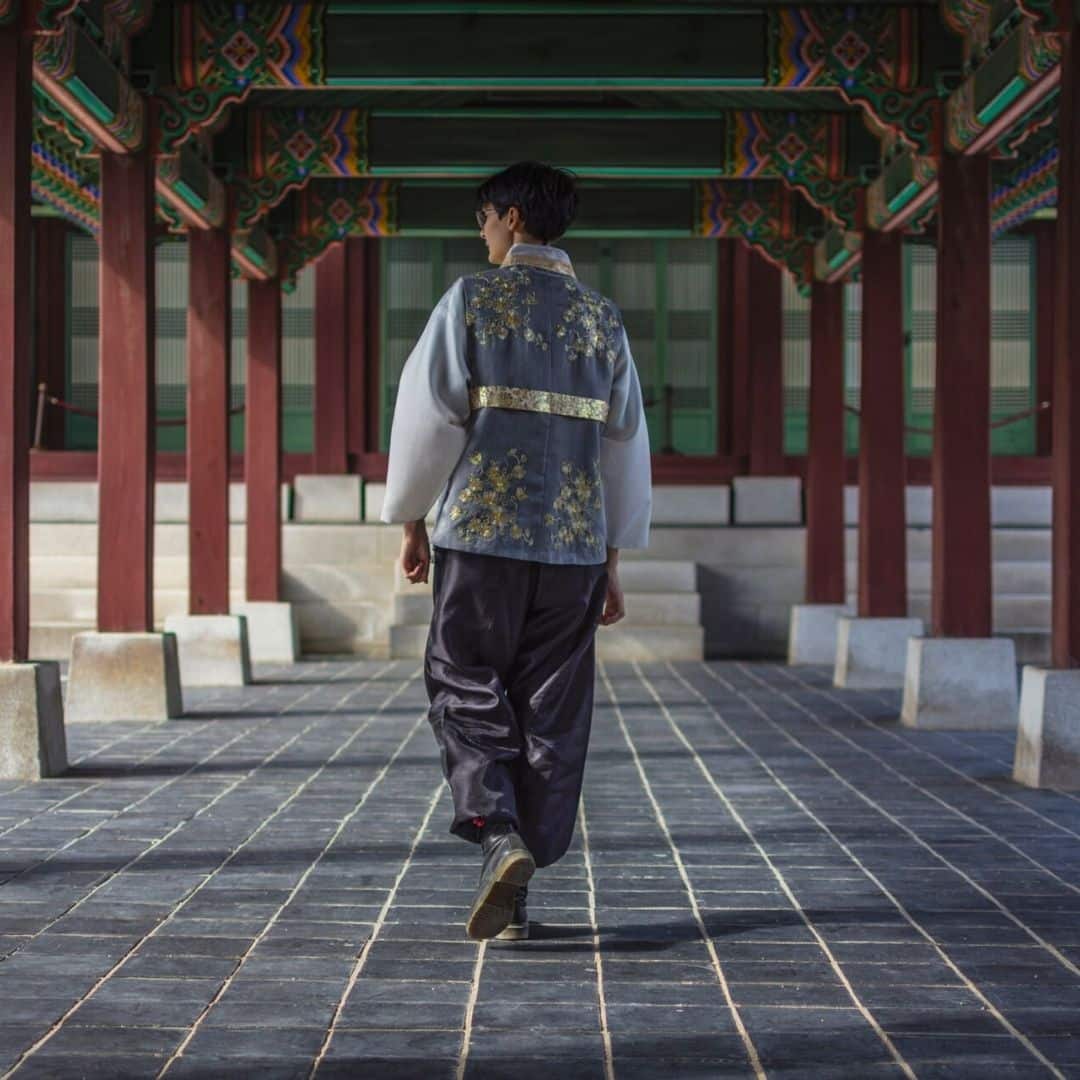
There’s so much more to South Korea than what you’ll find in the cities, however. South Korea, a country that’s 70% mountainous with coasts on three sides, offers so much to nature and adventure lovers. Hiking, South Korea’s national pastime, is a popular way to see more of the Korean countryside, looking down over rice fields, forested valleys, and pockets of urbanization. Skydiving, parasailing, scuba diving, water sports, cycling, rock climbing, white water rafting, and lots more are on offer and very reasonably priced. South Korea is a great place to enjoy the great outdoors.
The real jewel in South Korea’s natural crown, however, has to be Jeju Island – one of the New 7 Wonders of the Natural World. Explore lava caves, hike to the peak of the central dormant volcano (Hallasan Mountain), trek around the rugged coast, relax on a sandy beach in a modern cafe, and even try your hand at horse riding.
Whatever your reason to travel to South Korea, you’re sure to find more and more reasons to return again and again. Let this South Korea Travel Guide whet your appetite for your first trip, inspire you to plan a follow-up trip, and guide you to the best things to see and do in South Korea.

South Korea Travel Guide FAQs
Not sure about the South Korea travel restrictions and want to know more about visas, vaccinations, and what the rules are? This next section covers some of the most frequently asked questions about traveling to Korea now. If you have more questions that aren’t covered below, feel free to write to us on the Best of Korea Facebook page.
Do I need a visa to travel to South Korea?
US citizens and tourists from 111 other countries, including Canada and Mexico, don’t need a visa to travel to South Korea. The US government and South Korea have a visa-free travel arrangement and tourists can stay for up to 90 days.
What happens when I arrive in South Korea?
From September 2022 onwards it is no longer necessary to provide any vaccination status or take any PCR or RAT tests. A mandatory health check will be required, but this is only a simple form you can fill in on arrival.
What happens if I get a positive PCR result?
If you test positive for COVID-19 while in Korea, you will need to quarantine for 7 days at government facilities. Travelers who break the quarantine rules are subject to deportation or fines.
Can I travel to Korea if I'm unvaccinated?
Yes, you can still travel to South Korea if you’re unvaccinated. South Korea no longer restricts travel based on vaccination status (as of October 2022).
However, if a traveler (vaccinated or unvaccinated) tests positive for COVID-19 in Korea, they will have to self-quarantine until negative.
South Korea is a dynamic and culturally rich country that deserves a place on everyone’s travel bucket list. Known for its stunning blend of tradition and modernity, Korea features futuristic technology, bustling markets, and a thriving pop culture scene. Perhaps most importantly, visitors can expect a high level of safety and cleanliness while exploring the country and savoring its delicious cuisine.
This South Korea Travel Guide shows you where to go, what to see, and when to travel. Start your journey with itinerary ideas and pre-travel tips, the best day trips, and lots more essential Korean travel advice. Let’s go!
LATEST KOREA TRAVEL UPDATES
How to travel to korea, best destinations in korea, where to stay in seoul, korean travel tips, things to see & do, travel itineraries for korea, korean season guide, cost to travel to korea, further costs to korea, why travel to korea now, south korea travel faqs.
6/1/23 From June 1st, 2023, there is no longer any mandatory quarantine for COVID-infected people in Korea – both locals and travellers. The Korean government now recommends that infected people showing symptoms should self-isolate (voluntarily) for 5 days.
4/1/23 From April 1st, 2023, travelers from the USA and 21 other countries no longer need to apply for the K-ETA to travel to Korea. This will run until 31st December, 2024 and is designed to make it easier to travel to Korea.
3/20/23 From March 20th, 2023, the indoor mask mandate has been removed for public transport, including buses, trains, subway, taxis, and flights. The only remaining mask mandate is for medical facilities, including hospitals, care homes, and pharmacies.
How To Travel To Korea
Current Travel Restrictions For South Korea 2023
If you’re suspected of infection when you arrive (high temperature, feverish signs), you may be asked to take a PCR test. PCR tests are now free for travelers suspected of being COVID-19 positive within the first 3 days of arrival. This South Korea Travel Guide is regularly updated with the latest Korean travel restrictions.
Requirements To Travel To Korea
Here’s a simple 2-step guide about how to travel to Korea right now. Most restrictions have been lifted so travel to Korea is easier than ever. This applies to travelers from the US, Canada, and many other countries . As mentioned, it doesn’t matter whether you’re vaccinated or not.
Check the Korean Embassy if you’re not sure in either situation.
- When you travel to Korea, you will be asked to complete a self-check health questionnaire to show you’re not sick. You can do this when you arrive or complete it before you depart on the Q-Code website .
- You don’t need to do any testing before you fly, but it is a good idea to take a self-test to make sure you’re safe. If you’re infected in Korea, it’s necessary to do 7 days self-quarantine. You don’t need to bring copies of your vaccination records but printing a copy of the K-ETA is recommended.
No, travelers from the USA don’t need a tourist visa to enter South Korea. You can visit for up to 90 days visa-free. However, you must apply for the K-ETA before traveling and upload your travel plans and hotel details.
Here are 6 of the best destinations in Korea that you absolutely must visit, as well as some of the sights you’ll want to check out while you’re there. We’ll be bringing you lots more detailed destination guides in the future, so be sure to visit again soon

This Full Day Tour of Seoul will show you some of the hottest spots in the city, while this Customized Private Tour of Seoul will allow you to choose where to go.

Korea is a unique country with a written language that looks nothing like English, interesting Korean Cultural And Etiquette Rules , and an always busy lifestyle. Travelers may be lost trying to do even the simplest things.
If you’re traveling to Korea, you’re almost certainly going to want to get access to the internet to help you navigate, translate Korean, or even book tickets to attractions. Korea has one of the world’s best mobile internet and the prices are very reasonable. 5G mobile internet services are available across the country and Korea was one of the first to get the super-fast service. You won’t have problems connecting with a sim card or WiFi router when you travel
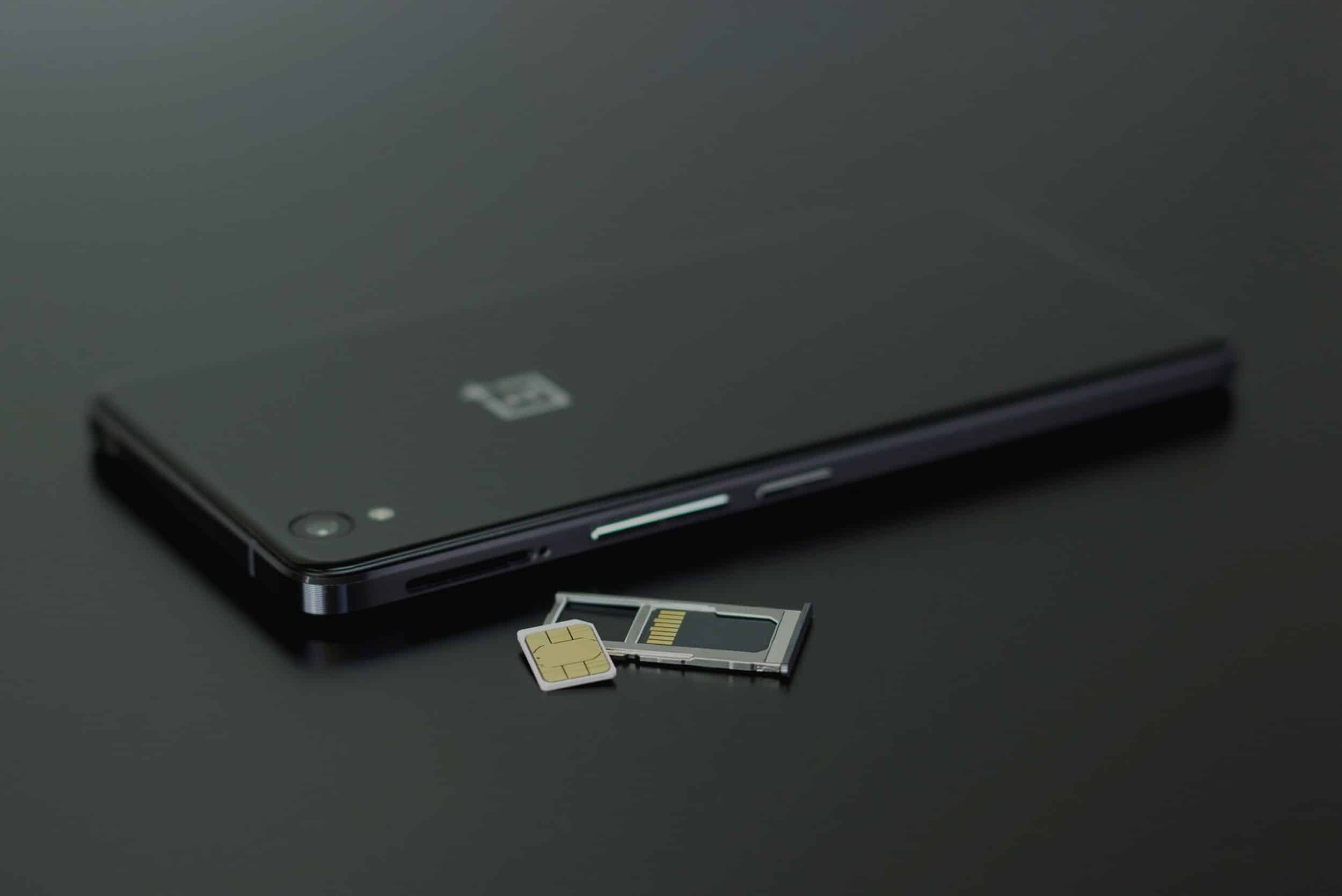
Traveling to any country involves potential scams, bad exchange rates, mistakes, and confusion when it comes to dealing with foreign currency. Fortunately, travelers to Korea have a wide range of options for travel money both before and while they travel.

South Korea is a country packed with famous landmarks and sights, unique culture – modern & historical, family-fun activities, outdoor adventures, cozy cafe districts, and natural wonders. There’s more to do in Korea than you could imagine and it’s impossible to explore it all in one trip. Try to plan your itinerary by cities and locations. For example, plan your day in Seoul and stay by the district.
Here are some of the best things to see and do in South Korea, broken down into different themes so you can find things that interest you the most. The location of each of these attractions is included, too, so you can create a city-by-city itinerary, seeing the best South Korea has to offer.
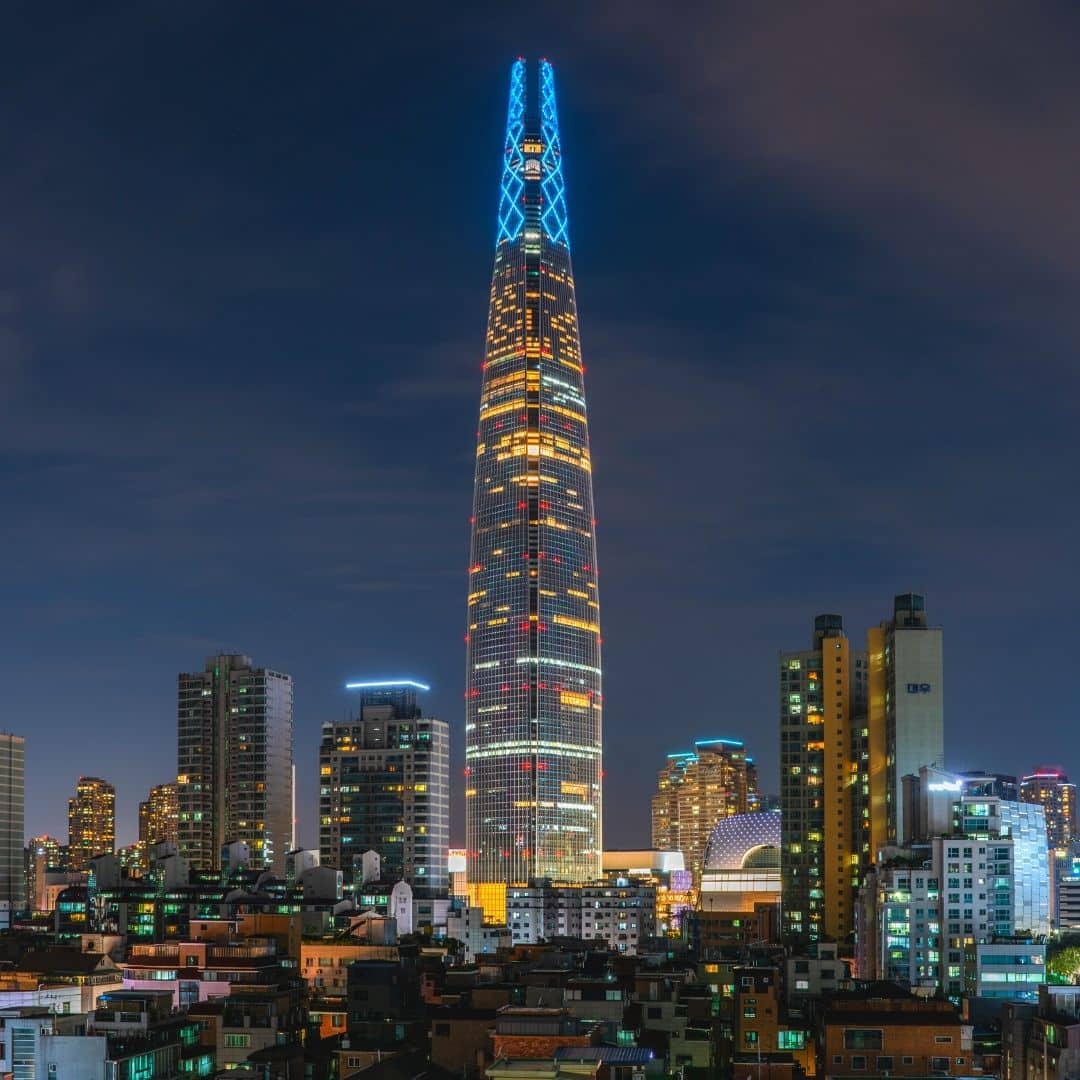
Any South Korea Travel Guide would be incomplete without thee top landmarks & famous areas in Korea. These unmissable Korean attractions offer some of the best sights in Korea, showing you Korean history, culture, design, and sense of humor.
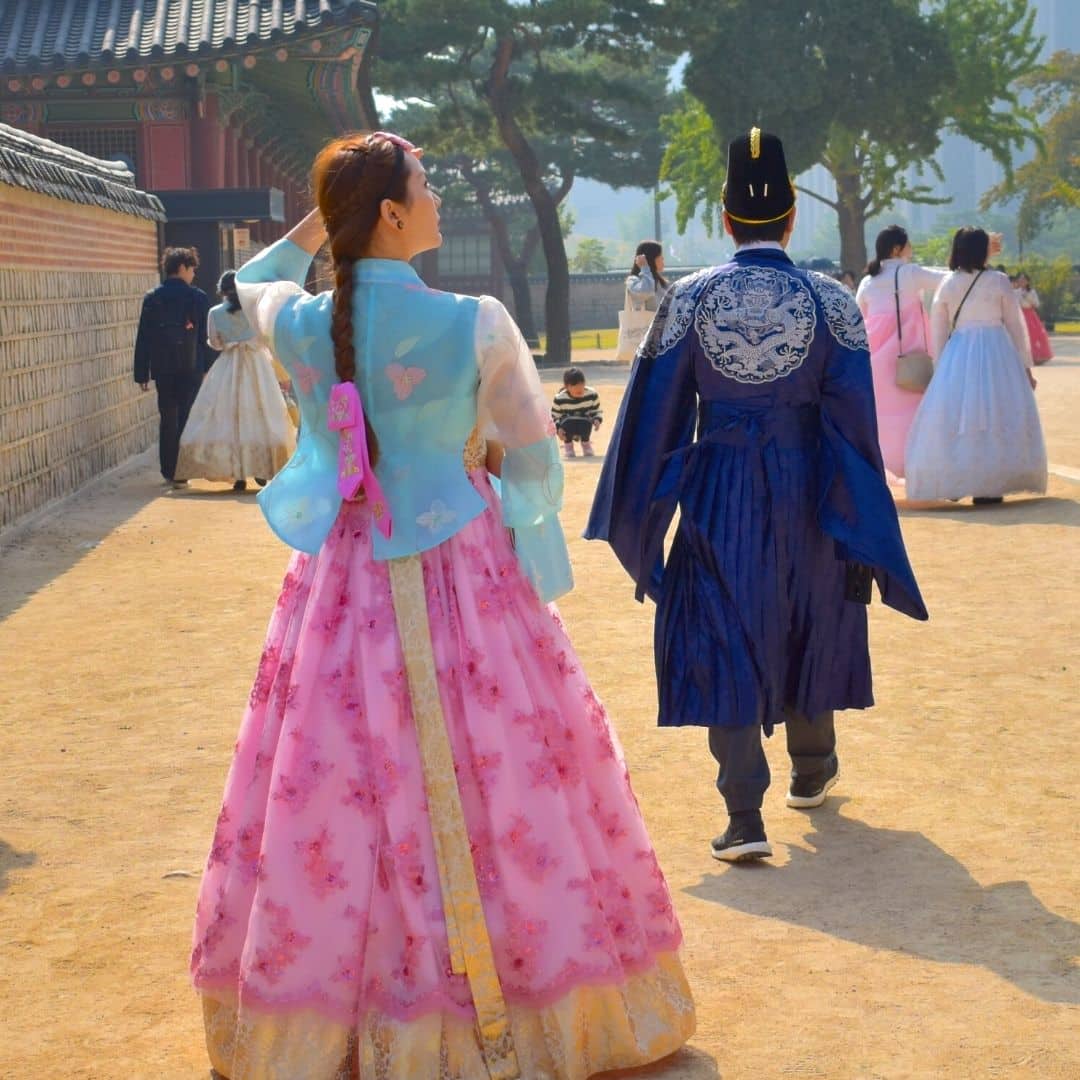
Learning about Korea’s past is not only enjoyable, it’ll also open your eyes to how modern Korean culture has evolved. Witness the majesty of grand palaces and the humble Buddhist temples and gain an insight into life in Korea with these fascination historical sights.

Are you a fan of Korean culture? Then check out these 10 modern K-Culture locations in Korea. Whether you’re ARMY or an arthouse cinema fan, you’ll love these sights. K-Drama fans, check out these K-Drama Filming Spots in Seoul .

If you’re traveling to Korea with your family, you don’t need to worry about the kids getting bored. There are plenty of family-fun attractions in Korea to keep them amused and to show them what Korea’s really like.

Culture lovers will find no shortage of places to learn about Korean, Asian, and world history & culture. Korea has a rich history and displays this through a range of museums. Learn about traditional life, Korean wars, the democracy struggles, and even kimchi .

Once a land of teahouses, Korea has now fully embraced coffee culture. Korea’s late-night culture makes cafes a great place to gather and chat. The rise of social media has also led to hundreds of insta-worthy cafes with photogenic decor, unusual coffee designs, and delicious desserts.

Many people travel to Korea just to shop, thanks to the low prices, haggling in the markets, and good quality items. From traditional markets to high-end designer goods, there’s somewhere to shop for everyone. Be sure to try authentic Korean street foods in the markets, too.

Korea is a country surrounded by sea on 3 sides and 70% mountainous, giving it a wealth of natural beauty. Besides Korean cherry blossoms , flowers, and fall foliage, there are sculpted gardens, shimmering ponds, riverside parks, and a volcano to see.

Morning : Explore Seoul’s historic royal palaces starting with Gyeongbokgung or Changdeokgung Palace in central Seoul. You get free entry if you’re wearing a Korean hanbok, so be sure to pick one up from the rental shops outside.
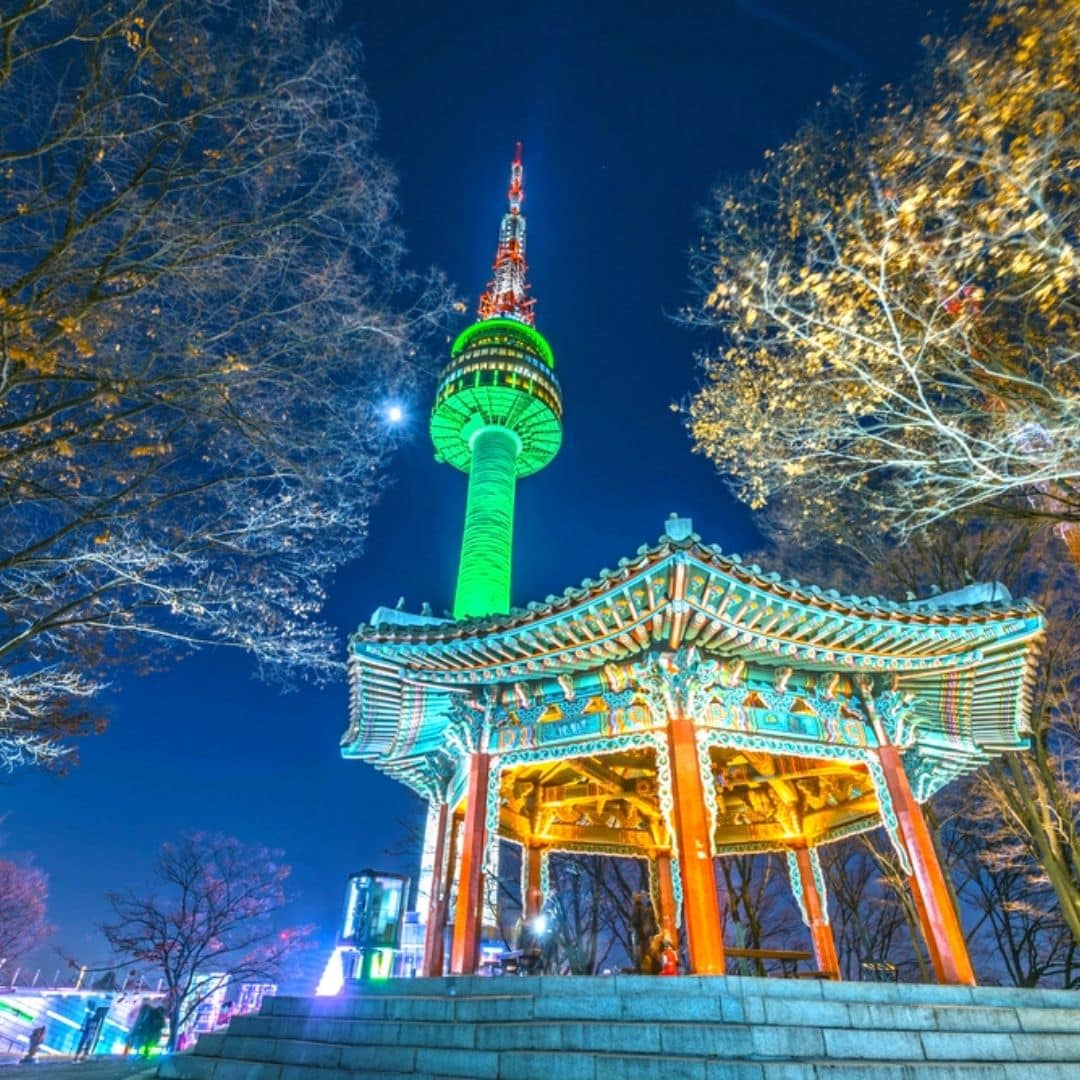
Morning : Learn about Korea’s history at the National Museum or War Memorial in Yeongsan. These fascinating museums have interactive exhibits and feature 1000’s of years of Korean history.

Morning : Take a day trip from Seoul to explore Gapyeong County. See the wonders of the Garden of Morning Calm and its idyllic nature. This is one of the most beautiful gardens in Korea.

Morning : Grab an early breakfast at Seoul Station and ride the high-speed KTX train directly to Seoul. It takes less than 4 hours and rides past rice fields, mountains, and the Korean countryside.

Morning : Take a day trip to the UNESCO World Heritage City of Gyeongju and roam the Gyeongju Historic Area. See Daereungwon Tomb Complex and Cheomseongdae Observatory.

Morning : Pack your bags and ride the KTX back to Seoul. Head to Hongdae for street food snacks or Michelin-starred delights in famous restaurants.

March to May

June To August

September to November

December to February
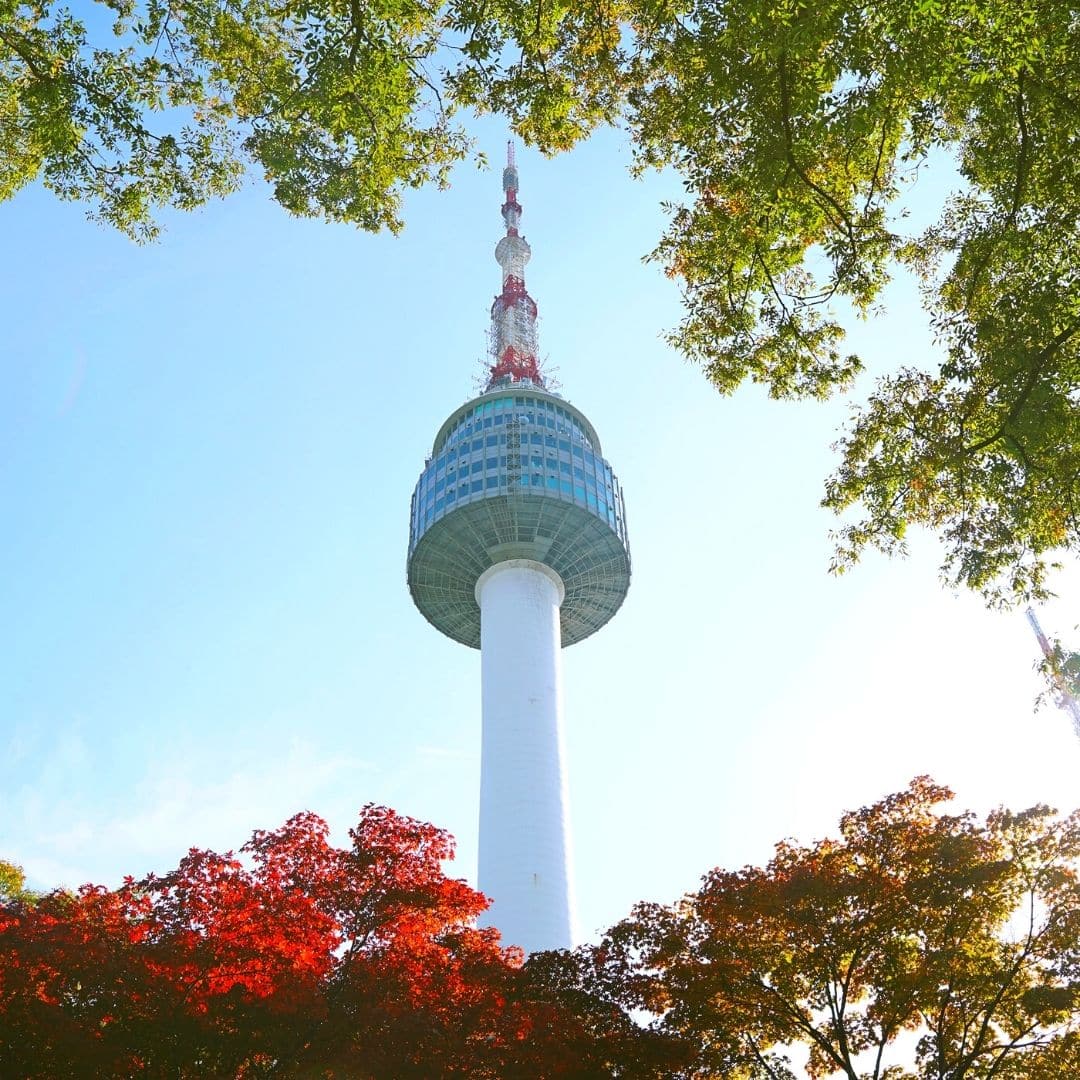
Korean Souvenir Costs
The best places to buy souvenirs in Korea are in the traditional markets and tourist areas. Insadong in Seoul has a lot of art and souvenir shops, as do the market streets around Bukchon Hanok Village. Hongdae offers lots of bargain snacks and souvenirs to take home.

Day Trip Costs From Seoul
A day trip from Seoul is a must to see a different side of Korea from what you’ll experience in the capital. Taking a day trip is a great chance to experience Korea’s countryside, nature, and hard-to-reach cultural attractions.

Korean Activity Costs
Seoul and other Korean cities have so much to offer to tourists. From historical palaces to exciting theme parks and attractions, it’s easy to have fun, explore, and discover more about Korea’s history.

Flight Costs To Korea
Flight costs depend on which airports you’re traveling from. A flight from Los Angeles to Incheon Airport (Korea’s main airport) costs around $1370 right now. Flight costs vary depending on the season and time of day.
Welcome to Best of Korea!
Please Sign Up for Updates
We hate spam. You can unsubscribe anytime.
Book Tours in Korea with the #1 Korean Travel Agency

Already know what you want to do?
Then find your perfect tour in Korea using our search box!
More results...
Why book with VIP Travel?
Best tour guides.
Our senior management personally handpicks each of our guides to ensure we have the best team.
No Middle Man
When booking your tours in Korea with VIP Travel, you are booking directly with the underlying tour provider!
Our Own Resources
We use our own team and resources to ensure consistent quality and the best level of service.
The Ultimate Korean Experience
Nami island tours, visit a scenic island of adventure, seoul tours, explore our vibrant and colourful capital, private tours, complete flexibility, luxury and comfort, our most popular tours in korea, - during spring 2024 -.
Still not sure what to do in Korea? Here are some of our most popular tours in Korea right now. And rest assured, whatever you choose, our top-notch, friendly, and knowledgeable team will do their best to ensure you have a truly memorable time.
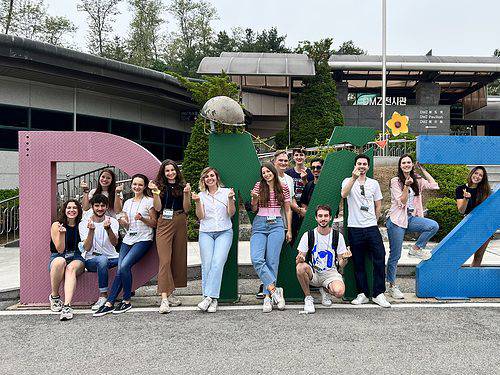
Free Cancellation
When cancelling by 5 pm the day before most tours.
What do our guests recommend?
Having been a successful travel agency in Korea since 2010, we know how important it is to listen to our customers. So here is what they have to say about our service and some of our local South Korea tours.
I did a half day DMZ tour with VIP travel. Our guide was Moon. I was very satisfied and highly recommend this. It was efficiently organized and Moon was an excellent guide.
Half day DMZ tour
Went to Nami Island and Rail bike. Our guide is Nancy and she is amazing. She showed us around and help us with translation. Very friendly and I highly recommend!! Thank you Nancy.
Nami Island tour
We are very glad we decided to book with VIP Travel. Grace was an amazing guide with so much information, and a joy to be with. We would have loved to spend more time with her learning about beautiful Korea!
– CELESTE C
Gyeongbok Palace tour
Can't recommend this tour enough. Our guides were all great and couldn't be more kind and helfpul! Their english was very good and answered all my questions about Korean war and history. So Thank you VIP!
DMZ JSA tour
Great 1 day trip esp our guide Hy Young. She is good and keep the smile throughout the day. Really 1 of the best tour guide.
Seoul City tour
We wanted to go to Gangwha Island to experience something different. VIP Travel arranged the trip for us and it was wonderful. Our guide, Grace, was very knowledgeable and scheduled a great day of activities.
Private tour
DMZ tour with VIP Travel was excellent. They picked-up me on-time and provided an excellent information related DMZ and Korean History. No shopping stop with VIP Travel, which is the best. Really recommended to book with them!
Had a lot of fun, very great time. Nancy was very informative with explaining the palace, and about the legacy of king and queen. She brought us to Ginseng. Today was the best she explained the geographics. Nancy is very pleasant, speaks clearly, and kept us informed. Nancy is a great tour guide, I would ask for her again.
You're in safe hands
As an STO certified quality travel agent, we strive to uphold a high standard and work hard to maintain our reputation as one of the leading Korean travel agencies.
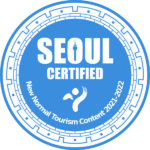
Ready to make the most of your time in South Korea?
Let us help take away the stress of planning where to go and how to get there while ensuring you don’t miss out on anything along the way!
- Skip to primary navigation
- Skip to main content
- Skip to primary sidebar

17 South Korea Travel Tips (From a Longtime Resident)
Last Updated: Nov 12, 2023 by Max · This post may contain affiliate links · 2 Comments
When I first came to Korea, I made the mistake of thinking that I could just wing it and survive in a totally different culture without almost any preparation. Within my first week, I’d read every article on South Korea travel tips available on the internet.
It was embarrassing coming to Korea without knowing how to do the simplest of things by myself, so I went into observation and Korean language study mode. In the meanwhile, I definitely looked ignorant making mistakes I could have easily avoided had I prepared myself beforehand.
For instance, one of the biggest mistakes I ever made was wearing tank tops to school my first few weeks as an English teacher. In the US, it’s nothing to comment on. But in Korea? I was embarrassingly pulled aside at a school assembly and told I was making other teachers uncomfortable, yet I’d been dressing the same for weeks and nobody had said a word. I was mortified.
A smaller error I made during my first week was in assuming that you can just say anything in any way in Korea. But due to Confucian social conventions, there are important levels of formality I should have been mindful of.
Imagine how offended my teacher looked when I replied “ Annyeong ” without the “ haseyo !” It was such an embarrassing moment that, again, I could have avoided had I read some Korea cultural tips before arriving.
We don’t want you to offend the locals, so to ensure that you do not make the same mistakes I did, I made a list of my top South Korea travel tips to help you on your trip.
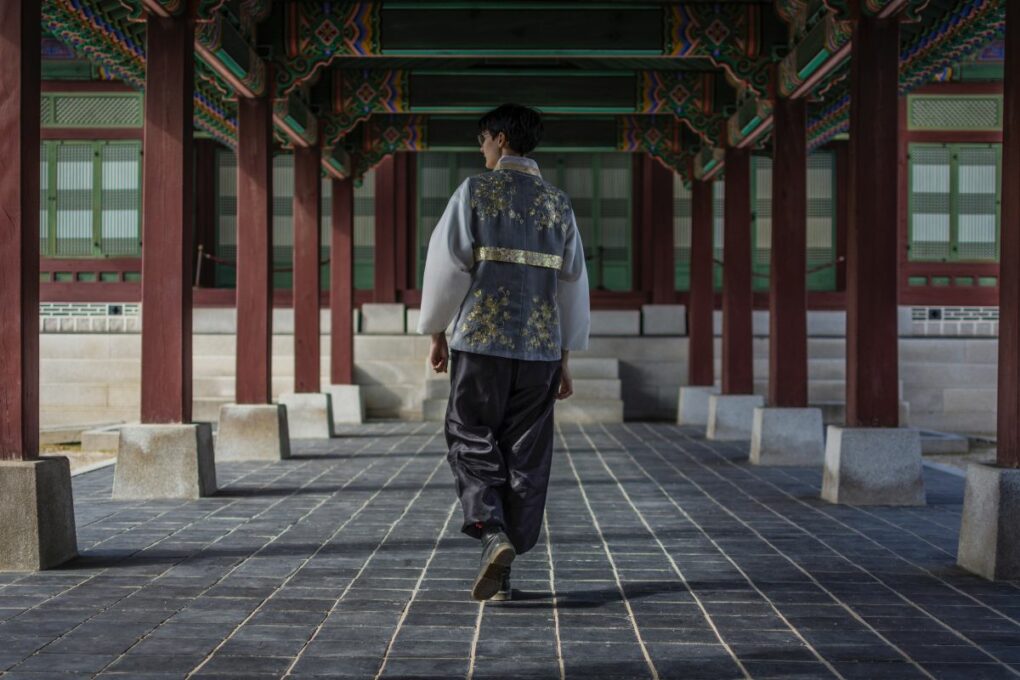
Basics of Travel in South Korea
What to know before visiting korea (tips from locals).
Visa: Most travelers will need a K-ETA ( Korean Electronic Travel Authorization ), applied for at least 72 hours before departure. If you needed a visa before, you'll need a K-ETA now. Note that from April 1, 2023, to December 31, 2024, passport holders from 22 countries, including the US, UK, Canada, and several EU nations, can visit visa-free – no K-ETA required!
Currency: South Korean won ( KRW or ₩ )
Arrival in Korea: all international flights arrive at Incheon Airport (ICN), one of the best-rated airports in the world. It usually takes about 1 hour to get through security & pick up checked bags.
Getting Around: Korea has an extensive & reliable public transport system. A refillable T-Money card is your ticket to buses and trains across the country; you can buy and refill yout TMoney card at any subways station or convenience store in Korea.
Internet & SIM Cards: Rent a Wi-Fi egg or purchase a prepaid Korean SIM card at the airport, available for up to one month of connection.
Travel Insurance: always recommended, though some credit card companies offers limited coverage when booking.

Asking about your age is okay
You might feel offended if a Korean person suddenly asks about your age, but this is a totally normal thing to them. Refusing to answer this question also gives them great stress, because then they don’t know how to properly address you; there’s an explicit social hierarchy in Korea.
So as much as this question might make you uncomfortable, understand that this is their custom, and they primarily use it to learn how they should talk to you.
Know the proper honorifics to use
The worst thing about conversing with people is that you don’t know whether you’re using the right honorifics, and there’s always a chance you might use the wrong one.
Even if you’re speaking with them in English, there are different ways to address someone depending on their status (usually relative to yours). So if you’re unsure where you might fall in the hierarchy, you can prepare yourself with this guide on how to properly address people in Korea first.
Don’t forget to bow!
One of the things I’ve learned here in Korea is that: “when in doubt, bow.” Koreans bow whenever they greet, thank, and even apologize. Sometimes I wonder if I’m bowing too much, or if I’m bowing lower than I should.
But Koreans don’t really expect you to bow at all, especially if it’s totally obvious that you are not from their culture, but it’s still respectful and appreciated if you try.
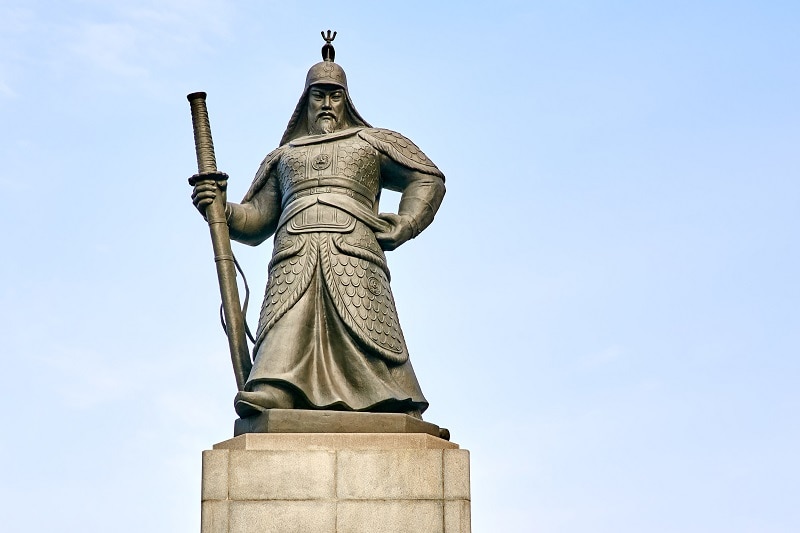
Remove your shoes as soon as you enter a home
One fascinating thing about Korean homes is the existence of the ondol system, or the traditional method of keeping their floors warm. This is why Koreans find winters tolerable and comfortable; their feet are never cold.
The issue with Westerners is that they oftentimes forget this, and they walk into places with their shoes on, leaving grimy bits of dust and pebbles that sully the pristine floors. But shoes are not acceptable in most Korean homes or restaurants, so if you are not comfortable with exposing your bare feet, at least keep your socks on.
Koreans eat from the same bowl
You might think this is unhygienic, but in Korea, this is absolutely normal. Sharing is a massive part of the culture, and if you do not participate in this custom, they may take it personally. Also, while we’re talking about bowls – never lift it up while eating!
Your bowl should stay in front of you at all times, which is why you generally see Koreans stoop over their bowls and scoop food using a soup spoon.
Never stick chopsticks in your food
While sticking our chopsticks in a bowl of rice is not really a big deal to us, to them it’s an insensitive act. This is because it replicates a jesa , or a funeral ritual that Koreans do to offer food to the dead.
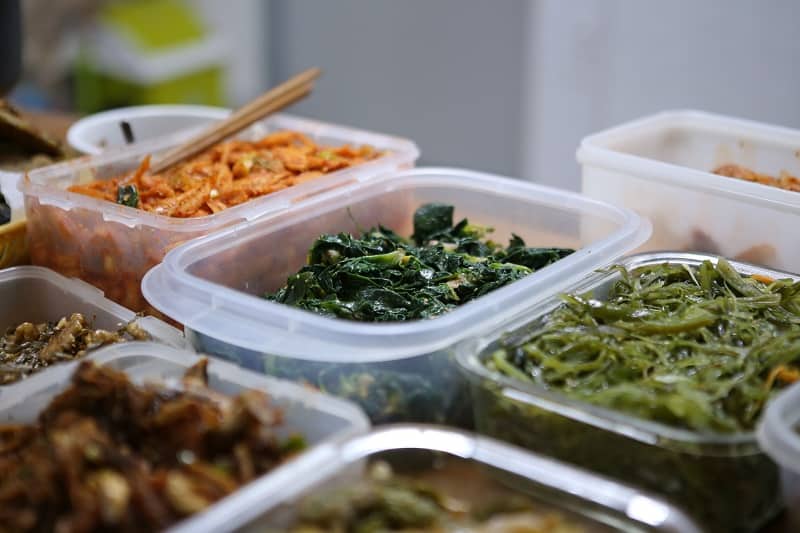
The eldest eats first
Koreans love to eat together, but remember that age matters in Korea, so if the eldest person is not ready to eat yet, you really have to wait.
Also, the seating arrangement when eating is also different in Korea, but my trick here is to wait for everyone else to be seated and then wait for their gesture to tell me where to sit. Works like a charm.
Even if it’s too spicy for you to handle, don’t blow your nose at the table
Koreans are known for their spicy food, and we have a tendency to sniffle if we are not used to it. But Koreans find it rude to blow your nose at the table (and you don’t want to send your snot to the food ), so as much as possible, hold it in or excuse yourself to the bathroom. That way you can blow as much as you want without getting flak for it.
If you’re drinking with the elderly, turn your head away when taking a shot
There are so many drinking rules in Korea , and one thing you have to keep in mind is always to mind the seniority. If you have to clink glasses with somebody older than you, make sure your glass is slightly lower than theirs. Then you turn away and take the shot, not looking back until you’re all done.
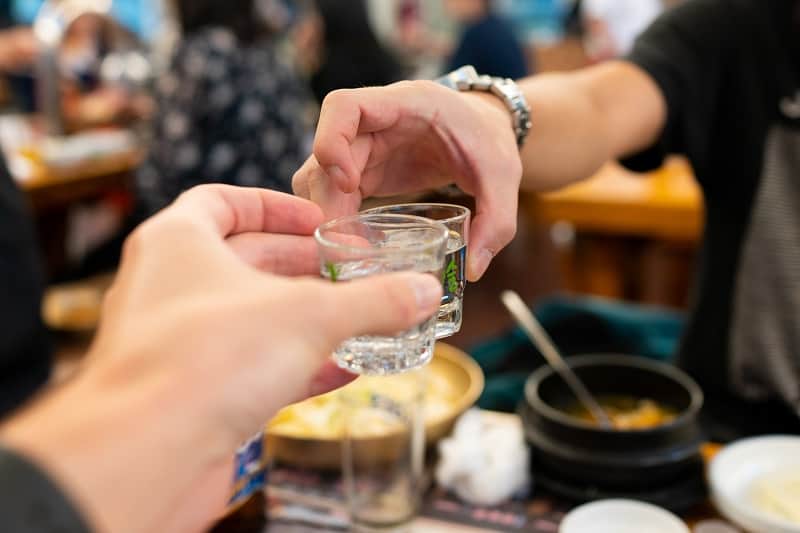
Don’t pour your own drink
You should never serve drinks to yourself in Korea, though if you’re the youngest, you should pour for everyone else. Instead, you should wait until someone pours it for you, and always receive it with both hands.
You should also keep a lookout for whether those who are older than you need a refill, and when you pour, never forget to use both hands.
Don’t tip in Korea!
Koreans do not like it when you tip, as it imbalances a careful power dynamic between customers and proprietors. In Korea, they hold the strong belief that the customer is King, and that they should uphold the highest quality of standards whenever they serve you.
So if you find yourself impressed by someone’s service, just thank them and leave a nice review in Kakao Maps (and offer them a compliment, if you can!).
Writing people’s names in red ink is a big no-no
Koreans love receiving handwritten letters, and if you want to show your gratitude and appreciation for a new friend, a helpful Korean tip would be to avoid red ink. You’ll actually rarely see red ink pens for sale in Korea, because writing names in red ink is believed to bring death upon the person whose name was written.
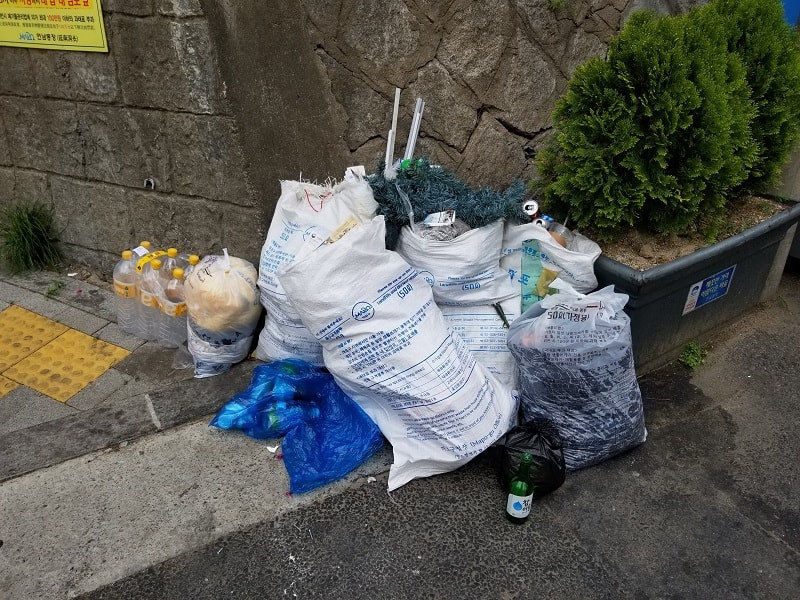
Don’t be part of the problem: toss your trash properly
Korea has a serious littering problem. Even if there are clear, established rules on how to properly segregate trash, you’ll still see bottles, plastic cups, and cigarette butts on the side of the road across the country.
What you can do, however, is to bring your trash with you wherever you go, and throw it in proper bins in the public spaces.
Don’t give gifts in fours
Giving gifts is a big thing in Korea. People seem to love exchanging things as a sign of appreciation, hence Teacher’s Day, Single’s Day, and White Day (all gift-giving holidays). However, if you give them something that comes in a set of 4, they might freeze for a moment, as the number four is inherently connected to death in Korea.
This is because this number sounds a lot like death in their language, so avoid this unlucky number by choosing just one thoughtful gift. There are plenty of places where you can buy gifts in Korea !
Take the time to appreciate a business card
While in Korea, you’ll likely encounter interesting people, many of whom may offer you a business card. This is a common way to non-threateningly try to connect with foreigners, so remember to receive it with both hands.
Then make an effort to at least appreciate the fine details of it before storing it; rushing to pocket these things often rubs them the wrong way.
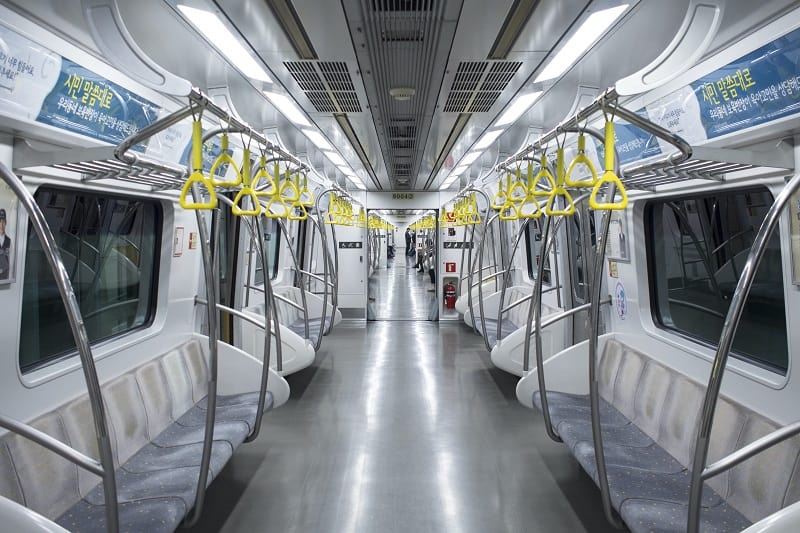
Don’t cross your legs in the presence of other people
This is another custom I never knew was rude, since I grew up being told as a woman that I should keep my legs crossed if I don’t want to look improper. In Korea, however, crossing your legs is a sign of disrespect, though foreigners sometimes get a pass.
If you have to sit across from somebody and you’re wearing a skirt that’s too short for your liking, instead of crossing your legs, aim to straighten your posture and keep your hands on your lap.
Shoving is okay
I know this is something that may confuse you, because in most cultures, shoving is rude. But in Korea they don’t like getting held back or blocked.
So if people shove you in Korea, they may do it with such force that it throws you off balance – but here’s the rub: if you get mad, people will think you’re making a scene. This is totally normal behavior to most Koreans, especially from the elderly, but this fact took me years to accept.
Now that you’ve seen all my most important Korea tips, I hope that my advice will help keep you away from trouble and speed up your acclimating process.
More South Korea
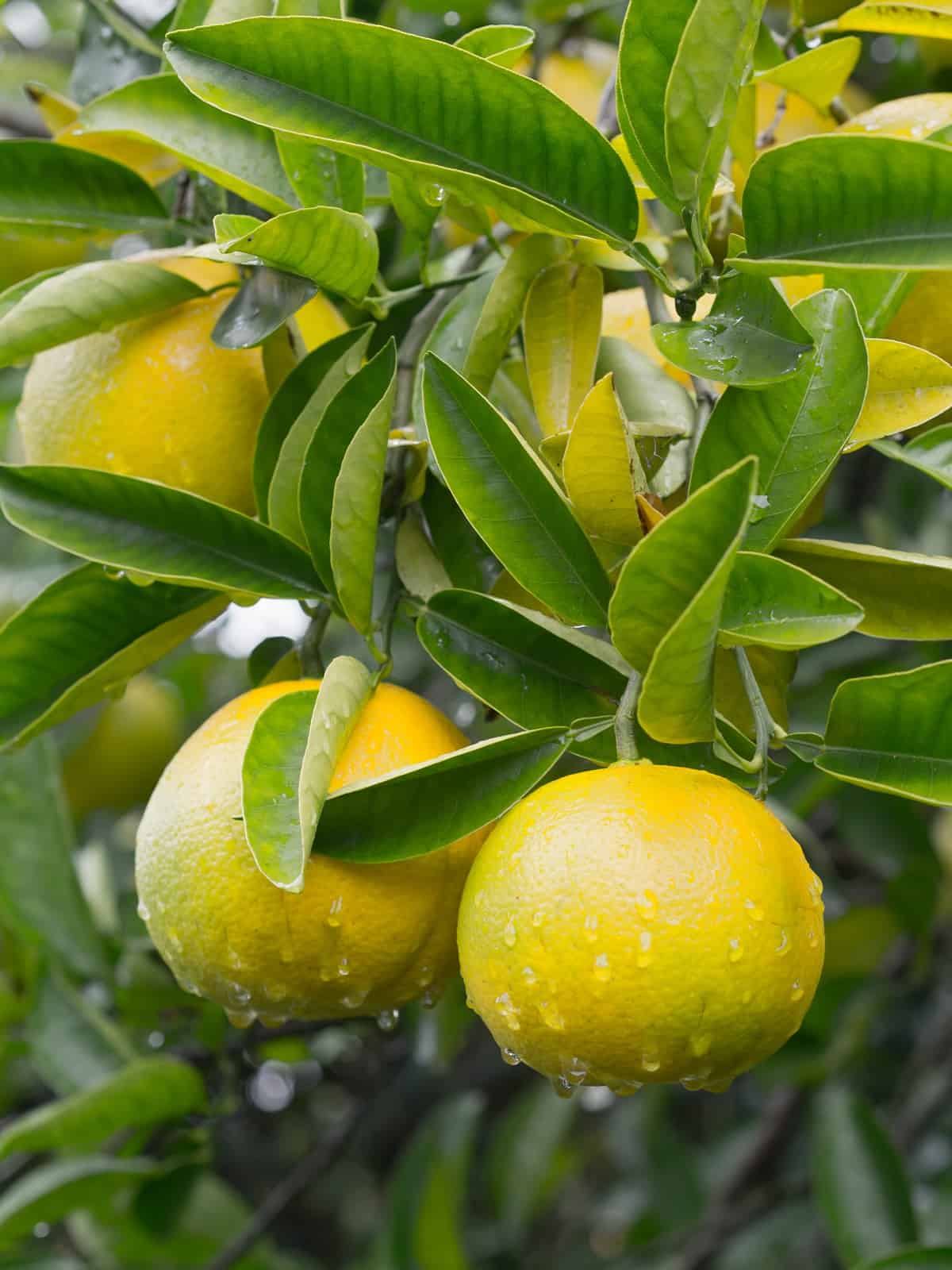
Sharing is caring!
Reader Interactions
Max Ritchie says
October 01, 2022 at 8:23 pm
Hi Max, I'm a Max as well and love all things Korean. I'm planning a trip early next year and will concentrate just on Seoul (as I'll be back). I found your information very helpful and will keep reading. I'm planning the trip alone and I'm a very active 73yr old female, if i fitted the criteria I would have loved to teach english there so I could experience the country more fully than just a trip.
regards max
October 01, 2022 at 8:48 pm
Awww thanks, Max! I'm glad you've found it helpful, and please let me know if you have any questions. My mom (an active 69-year old, herself!) had a similar sentiment when she came to visit me in Korea for the first time. I hope you have a wonderful trip!
Leave a Reply Cancel reply
Your email address will not be published. Required fields are marked *
This site uses Akismet to reduce spam. Learn how your comment data is processed .

What to Pack for Korea – Make sure to bring these items
Last modified: Dec 19, 2023 | 23 min read | By 90 Day Korean
Curious about what to pack for Korea ? You might be packing for a trip or moving here for a while.
Either way, we’ve got you covered! We’ll tell you the things to bring when you plan to visit Korea and the items you can leave behind at home.
With a bit of foresight and preparation, you’ll be sure to make your trip to Korea a smooth and memorable one.
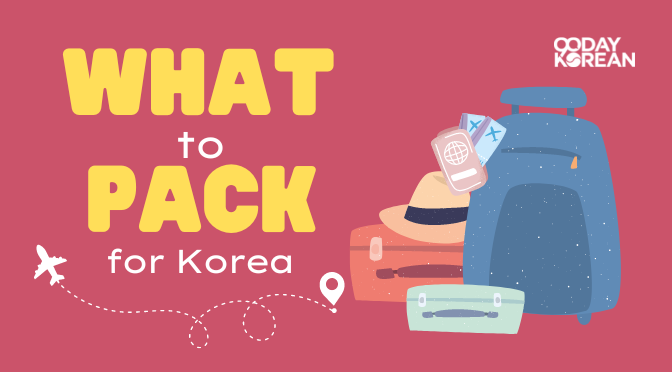
Let’s prepare your packing list for South Korea !
Skip to the parts that apply to you, or read everything below to become an expert on what to pack for South Korea .
- 1.1 Essential Things to Pack for Traveling to Korea
- 1.2 What to Pack (Non-Essential Items)
- 1.3 What NOT to pack for South Korea
- 2.1 Clothing
- 3.1 Toiletries
- 3.2 Deodorant in Korea
- 3.3 Makeup & Cosmetics
- 3.4 Prescription medicine
- 3.5 Over-the-Counter Medicine
- 3.6 Bedding, Sheets, & Towels
- 3.7 Korean Phrase Books
- 3.8 Reminders of Home
- 4.1 Mobile Phones & Smartphones
- 4.2 Plug Adapters and Outlets
- 4.3 Power Converters
- 4.4 Power Banks
- 4.5 Computers and Laptops
- 4.6 Books and e-readers
- 4.7 Camera Equipment
- 5.1 Luggage
- 5.2 Backpacks
- 6.1 Supermarkets
- 7 How to Get Help Once You’re in Korea
What to Pack for a Trip to Korea
So, you plan to get away for a few days or weeks, and you’ve decided to go to Korea. It may seem like a daunting task to prepare for a trip out to Korea, but it’s easier than you think. It doesn’t matter if it’s your first time or your 10th time visiting the country. We’ll give you the packing tips you need to make your trip successful.
What are the things that you should include in your South Korea packing list? What things should you leave at home? You’ll be thanking yourself for tackling these questions beforehand.
Make sure you know what to pack when you visit South Korea. We’ll break this down into essential, optional, and leave-at-home items.
Essential Things to Pack for Traveling to Korea
Here are the things you’ll likely need to bring with you if you’re traveling to South Korea. These are essential items for packing . Make sure that these are on top of your South Korea packing list. This will be useful for you if you’re moving to South Korea or just taking a short trip.
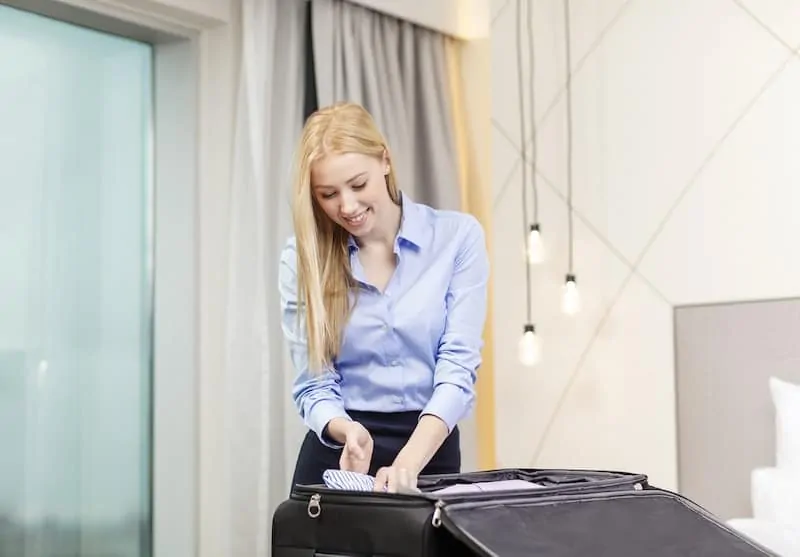
If you’re moving to South Korea, continue reading past this list for a more in-depth look at what you need to bring and what you can get here.
Here are the essentials of what to pack for South Korea. Make sure you include these in your packing list:
- Passport : You can’t get far without it. You might also get a passport case to keep your book looking new.
- Credit Cards/Debit Cards : Almost every store (even street vendors!) take credit cards. Make sure to alert your credit card company that you’re traveling so you don’t get any blocks on purchases.
- ATM Card : There are ATMs everywhere that you can use should you need to withdraw some cash.
- Electrical plug adapter : Check the specs of your electrical devices in case you also need a power converter.
- Toothpaste : If you like brands like Colgate and Crest , bring them from home.
- Travel Medical Insurance : The medical care is excellent here. Some credit cards offer travel insurance if you book the ticket with a credit card. Here is a popular service for travel medical insurance .
- Medication : The pharmacies in South Korea are fantastic, but do bring prescription meds. Especially useful if you have allergies and you have to travel during yellow dust season.
- Unlocked phone : Some companies require you to make a special request for this. You can see SIM card and data rates here .
- Essential Documents – Whether you’re traveling for business or pleasure, prepare a list of documents you might need when you’re in South Korea. (Travel insurance documents, paperwork required for work, or the itinerary from your travel agent)
Pretty much everything else you can buy once you get here if you need it; no need to pack too much. There are 24-hour convenience stores on every corner in every major city and pharmacies on every block. You will be able to get a SIM card at the airport, and the data here is blazing fast.
What to Pack (Non-Essential Items)
The items below are non-essential, which means you’d survive without them. However, you may want to add them to your South Korea packing list:
- Swimsuit : These can be tank tops, board shorts, and bikinis. Depending on when you come, you may not be able to buy them here. Often they stop selling them during the last few weeks of summer.
- International driver’s license : An international driver’s license is helpful if you want to rent a car here.
- Dress clothes : Depending on your style of travel, some night venues or restaurants may have a dress code.
- Shaving cream : If you’ve got a particular brand you like, bring it from home.
- Deodorant : Pack a stick of your favorite.
- Travel Toiletry Bag : These are nice to hang in the bathroom while traveling.
- Towels : People often use smaller towels or hand towels here, so you may want to bring one.
- Bedsheets : The sheets here may not be as soft as what you’re used to, so you could bring a set from home .
- Vitamins : You can get most vitamins here, but you might want to bring if you have anything that you’re unsure about being able to find.
- Kindle : Unlimited books, light, takes up little space.
- Reusable Water Bottle : Although you can buy clean bottled water virtually everywhere in Seoul, bringing a water bottle with you when traveling is always a good idea. Plus, using a reusable water bottle is more eco-friendly if you compare it to buying a plastic bottle every time you’re thirsty.
What NOT to pack for South Korea
Here are some things you should leave at home :
- Makeup : Beauty products are generally not difficult to find. There are plenty of stores on every street.
- Shampoo : Unless your hair needs special care, you can get away without bringing shampoo to South Korea. Easy to find at Olive Young, Watsons, convenience stores, etc.
- Soap : Lots of options, plus some premium soap shops like Lush and Body Shop.
- Hairdryer : Hair dryers from other countries may need a power converter, so easier to get one here.
- Books : These will be heavy and take up space. If you can read on an eReader or smartphone, you will thank yourself for the extra space.
- Cash : Unless you have a specific reason for bringing cash, it’s easier to use ATMs and credit cards. Many tourists can get away with just using their credit cards.
If you’re unsure what you can find here, try searching on Coupang or GMarket . Chances are you can have it delivered to wherever you are staying. Remember that you may need a Korean to help you order depending on where you are visiting, what you are ordering, and your payment method.
What to Bring to Korea
In this section, we’ll cover what you may want to consider bringing, either for travel or for living. What you need to pack depends on how long you stay and what kind of experience you want while you’re here. These should be a top priority on your packing list.
If you have any specific questions, let us know in the comments below!
Korean clothing sizes are a bit different than that of the West. If you have trouble fitting into Asian sizes, you should be able to find something at stores like Zara, H&M, Giordano, and Uniqlo. You might pack a few extra pieces just in case.
Shirt sizes in South Korea
The shirt sizes in Korea generally go up to about a size “large” for Western sizes. If you wear anything past that, you’ll probably have a more challenging time finding your size here. In that case, pack a bit more from home. Here are Korean clothing sizes for men:
Here are Korean clothing sizes for women:
Even if you can’t find your exact size, there are still options to get clothes to fit you. The tailors here are excellent, so you can buy something a bit larger and then have it altered for a reasonable price.
Shoe sizes in Korea
In Korea, you can find shoes up to 285mm (10.5 US) for men and up to 270 mm (10 US) for women. If your shoe size is larger than that, you should plan. Walking shoes, or shoes that are comfortable for long walks/runs, are very important in South Korea since you will be walking A LOT. You want to be comfortable, so you don’t have to stop your day early.
Korea to US shoe size for men:
American shoe size to Korean for women:
Walking around Seoul will wear out your shoes much faster than you are currently used to, so unless your walking shoes are very comfortable and are made for walking, you’ll notice the difference by the end of the trip. Pack comfortable shoes with thick soles, so you don’t have to worry about this problem – your feet will thank you!
You can check out our complete guide here to learn how to express these numbers in Korean.
Shopping for clothing in Korea
If you don’t pack enough clothing or shoes, fear not! You can always take a trip to one of the main shopping areas, such as Myeong-dong . These shopping areas have many Western-branded clothing stores , and who doesn’t love a good shopping spree on vacation? Korean fashion, both for men and women , is something you should try out!
This could be one of the best places to reliably find stylish clothing that fits properly, so be sure to check it out if you need to augment your wardrobe while you’re abroad. There are several great places to shop in Seoul , so you’re not out of luck if you forget your favorite top.
Online shopping in Korea
Thankfully, Amazon now ships to Korea. This makes life a whole lot easier when ordering the clothing and shoes you need. The shipping fee is reasonable, and it arrives pretty quickly.
You can also shop on Korean sites like Gmarket and Coupang. Knowing the Korean alphabet and how to use a Korean dictionary will help tremendously.
Plus Size Clothing
If you’re a plus-size in undergarments , make sure to pack those in your suitcase for the same reasons listed above. Koreans, on average, are physically smaller than people from most other countries , so you can’t find all sizes here. Do plan ahead to make sure you’re well-stocked and comfortable.
Packing for the Weather
Something that became very obvious shortly after I arrived in South Korea is that it truly has all four seasons – a true winter, spring, summer, and fall . The spring and fall seem to get shorter every year, so pack accordingly!
Winter Weather Gear
Winter in Korea gets cold (-10 °C | 14 °F), especially with strong winds. If you’re from an area where t-shirts all year round are the norm because the temperature never drops below “comfortably warm,” then you might quickly realize that you need to do some clothes shopping to introduce some winter clothes into your wardrobe.
Uniqlo has some excellent winter clothing, and they’ve got stores all over South Korea. Their heat tech inner wear comes in a few different thickness varieties based on how warm you want to be.
If you wear a size that would be hard to find in Korea, consider packing some thermals or warmer layers to keep you cozy in the Korean winters so you’re not spending your days in Korea sad that you can’t spend more time outside without freezing.
Summer Weather Gear
South Korea can get pretty warm in the summer (30 °C | 86 °F), so pack some light gear if you’re coming between June and August. Uniqlo also has you covered here; they’ve got some lightweight shirts called Airism.
If you plan on hitting the pools or beaches, remember to bring swimsuits with you!
Personal Items
Another important thing to pack is your personal items. This includes a set of toiletries, hygiene products, makeup, and the like. We’ll go over them one by one below.
Regarding toiletries, Korea is very reliable regarding the accessibility of toiletries – if you need it, they’ll have it. Unless you have an affinity for particular brands, most things you can get here very quickly if you simply need to pick up a new bottle of shampoo or a new tube of toothpaste.
Deodorant in Korea
A deodorant in Korea might be more expensive than in other parts of the world. I would highly recommend bringing deodorant . It’s not as widely used as in other areas of the world, so you’ll usually have to buy your deodorant at international stores, where it can be pricey.
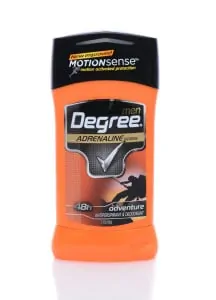
If purchasing a deodorant stick for a price 2-3x more than you’re used to isn’t on your vacation agenda, then be sure to pack it in your bag!
Makeup & Cosmetics
If you love makeup, you’ll be thrilled to find out that Korea is one of the cosmetic capitals of the world – there’s always a new and exciting purchase to be made.
Almost any product you desire, you can buy from Korea. From essential skincare products like moisturizers, lip balms (it gets cold and dry during the winter, so it’s best to buy a good lip balm for your trip), and sheet masks to high-end makeup products, name it, and they’ll have it.
If there’s a specific product that’s been hard to find in your hometown, check out the local Korean cosmetic markets, and you very well may find it.
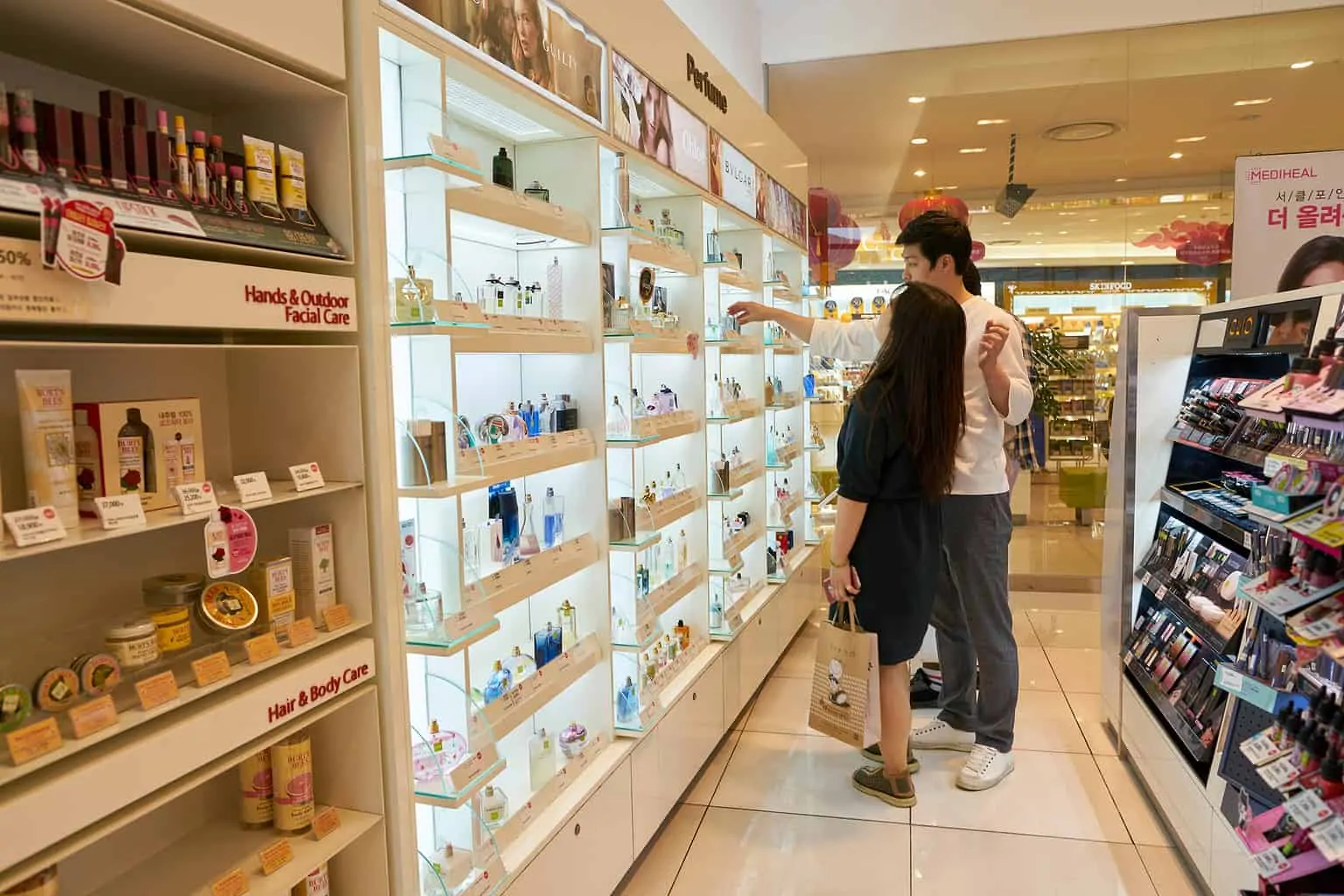
It will help immensely if you learn the vocabulary of what you’re looking for and how to read it in Hangeul (Korean alphabet). That way, you can easily find it on Naver (Korea’s version of Google). If you can’t read Hangul, it is possible to learn Hangul in just ninety minutes , so what are you waiting for?
As a bonus, there will likely be many products you have never seen or heard of before, so you’ll return home with a bunch of novelties. It could be a fun adventure and an excuse to buy a bunch of souvenirs for your nearest and dearest!
Prescription medicine
If you have any kind of prescription, bring as much of it as possible – better safe than sorry! Depending on what it is, it might not be available here in Korea, and you don’t want to spend your time abroad hunting down a prescription medication instead of exploring and sightseeing.
However, the medical system in Korea is quite advanced, so it’s likely you will be able to get a Korean equivalent of what you need if you did not pack enough, so fear not.

Over-the-Counter Medicine
If you catch a cold or have a headache while you are here, you’ll be able to get all of the common types of over-the-counter medicine that you’d be used to in your home country. Most pharmacists speak at least a little bit of English, so you should be able to get what you need.
There are pharmacies on every corner, so locating one will be easy. The packaging may look slightly different than what you’re used to, but the relief you’ll feel from taking anti-cold medication will be very familiar if you’re not feeling well.
Bedding, Sheets, & Towels
One of the major complaints that visitors have about products in Korea is concerning sheets and pillowcases. The bedding quality here is different from many other countries, and it can take some getting used to.
Buying nice sheets can be expensive at department stores in Korea. Upgrading your bedroom will cost you money.
Towels also fall into this category, so if you’re looking for a fluffy towel, be prepared to pay more than you would back home.
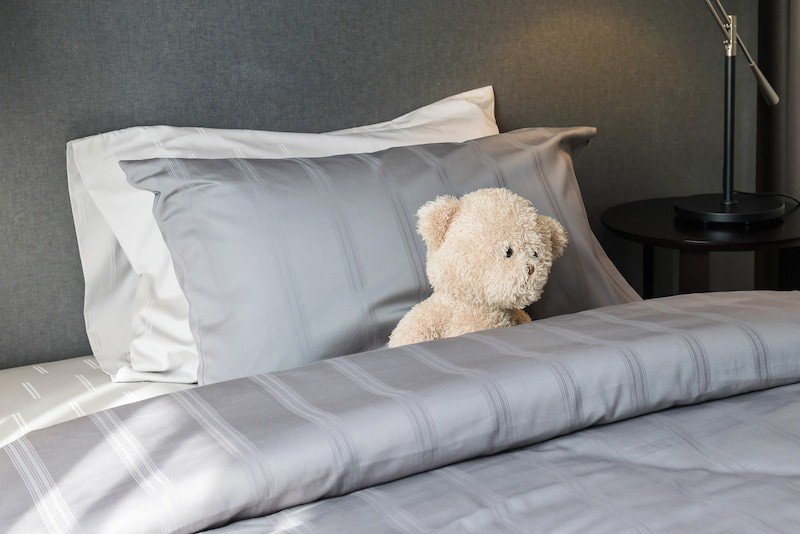
Thankfully, stores like Costco and Muji have nice bedding and towels. It’s probably not the best use of your luggage space to bring a set of queen-size sheets. However, figure out your priorities and decide from there – there’s nothing wrong with needing to be your version of comfortable to fall asleep!
Korean Phrase Books
It pays to invest 60 minutes of your time learning the Korean alphabet . Your pronunciation will be much better, and you’ll be able to read menus and signs while you’re here.
You can download a free PDF with basic phrases to make conversation easier. You can use this as part of your overall Korean language learning plan .
If you visit South Korea, it’ll be helpful if you speak Korean . We have a step-by-step structured online Korean course that will teach you how to have a 3-minute Korean conversation in the first 90 days.
Reminders of Home
As with any long-term trip, you must remember to pack things that remind you of home. Having pictures of friends and family to decorate your apartment is very important. These will take up barely any room in your suitcase, and you will be pleased you brought them.
To keep from getting homesick, consider picking up some fun postcards to send back to your friends and family back home. You can get these in the major tourist areas like Myeongdong and Insadong.
Electronics
Here are our tips on how to pack your electronic gadgets when going on a trip to Korea.
Mobile Phones & Smartphones
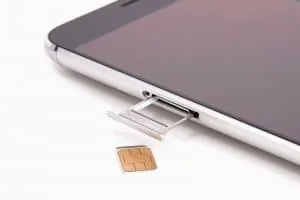
If you want to have the latest phone, you might find mobile phones cheaper in your home country than in Korea. All major brands are available, but the prices are often higher and require a two-year contract.
Plug Adapters and Outlets
Plugs in Korea are different than in many other countries, so pack at least one plug adapter.
What electrical adaptor do I need for South Korea?
A Type F power adapter, which can run 220-volt appliances or equipment, is something you can bring and use in South Korea.
Most electronics, such as mobile phones and laptops, will work without needing a power converter (more on that below).
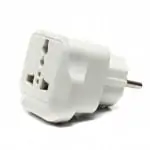
Power Converters
Korea uses 220V outlets. Most common modern electronics will not require an electricity converter. Make sure you read the specs on your devices, but a simple plug prong adapter usually does the trick. You likely aren’t going to need these unless you’re bringing specific items like a toaster or a hairdryer.
Power Banks
Not essential, but they will make your life a lot easier. You can pick these up anywhere in Korea. They even have them at some convenience stores. Get something 10,000mAh and compact .
Computers and Laptops
If you have a compact laptop that isn’t heavy and isn’t bulky, consider bringing it with you on your trip. Your laptop will allow you to upload photos as you go through your trip to keep your friends and family posted on social media, but it will also let you stay up to date on current events, pay bills while you’re gone, etc.
That doesn’t mean you should spend your whole vacation on your laptop, of course – it’s just nice to have a way to get in touch and stay up to date if you need to.
If you don’t have a laptop that you’d feel comfortable bringing with you, you can also use computer cafes to keep in touch with the rest of the world through news and social media.
Books and e-readers
If you’re big on books, you might consider picking up an e-reader before heading to Korea. Even though many people still love looking at physical books, the space-saving feature and convenience of a digital device can make your stay much more comfortable.
More likely than not, your flight will be long, and you’ll be grateful that you have a variety of books to choose from without packing multiple physical books.
If you absolutely must have physical books, you’re in luck! Books in English are very easily attainable in Korea. One popular place to order books no matter where you are in Korea is What The Book .
You’ll probably want to buy them while you’re here since packing books is not a good use of space in your two free checked airline bags.
Fear not – if you find a book you must have while you’re in Korea and you simply have no room in your checked baggage on the way back, you always have the option of mailing it to yourself back home to save space while you’re packing to return home.
Speaking of space, most living arrangements in Korea are pretty small . Stacking up books in the corner is not the best use of that space. With many long subway and train commutes in the near future, having something to read is very important.
Camera Equipment
While you’re in Korea, you will spend time in a beautiful country with photo opportunities everywhere you look. Korea has something for you, whether you enjoy taking pictures of natural landscapes, interesting people, or cityscapes!
If you’re a photography enthusiast, consider what you’d like to bring with you on your trip. A lot of camera equipment is bulky, heavy, and extremely expensive, so unless it’s insured and you can’t live without it, think twice.
Point and shoot cameras are better to pack than large DSLR cameras because they’re compact and can be safely stowed in a small fabric case rather than a large, over-the-shoulder camera bag.
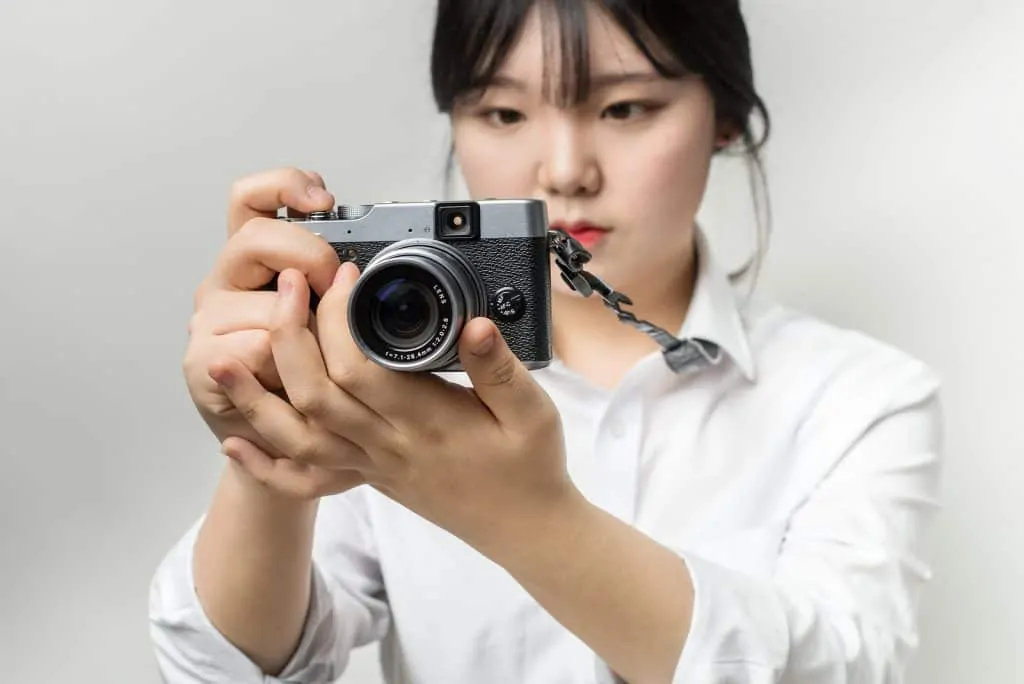
If you’re bringing a cell phone with you with a good camera, you can also take photos on your phone without bothering to carry a separate camera.
Most importantly, don’t bring anything that is insanely expensive or that you’d hate to see damaged – traveling is tough on camera equipment, and luggage can get lost, so set yourself up for success and pack accordingly. You’ll thank yourself later when you have beautiful photos to show off your trip!
Can't read Korean yet? Click here to learn for free in about 60 minutes!
Luggage and Travel Gear
When it comes to traveling to Korea or to any place in general, the luggage or bags where you place your stuff is very important. Its capacity and convenience are something to consider not only when heading to but returning from your vacation.
Korea is quite dialed in for rolling luggage. People travel around the country, so you’ll typically see them rolling luggage on the sidewalk or into the subway cars. If you have 4-wheeled luggage, then you’ll have a slightly easier time. This is what I use , and it works great.
The larger buses have storage below, and there are special luggage areas in the subway car.
Have trouble fitting everything in your luggage? Here are helpful tips: Use packing cubes to help save luggage space, try to buy the smallest and most compact version of as many things as you can (cosmetics, gadgets, etc.), and follow the list of things to bring in this article to help you decide what to bring and what to leave behind.
Bring a light backpack for day trips around the city. Keep in mind that you’ll likely be on public transportation, so it’s best to have something that’s a reasonable size. It gets crowded on the subways and buses, and it’s hard to walk by when a backpack is in the way.
Look for a backpack that can be rolled up and stowed without taking up a ton of space in your suitcase. Then you eventually pack to return home.
Alternatively, you can use your backpack as a carry-on bag to bring souvenirs back to your friends and family! If you’re planning to take many things from Korea back to your home country, it’s best to find a backpack that’s big and sturdy.
Something that might not come to mind quickly is spices or non-perishable foods. Spices and seasonings from your home country will likely not be readily available here in Korea, especially if they’re obscure.
This can add flavor to your home-cooked meals when you are trying to save money and give you a little reminder of home while you eat.
If you have any must-have non-perishables or spices that you cook with regularly, try to make room for them in your baggage. Thankfully, sites like iHerb make it easy to have a variety of spices and cooking items shipped internationally at reasonable prices.
Cheese lovers, don’t get your hopes up. Korea is not big on cheese variety, so most of you’ll see processed single-wrapped slices. Thankfully, Costco has come to the rescue with massive selections of cheeses from all over the world, so if you’re looking for some brie or some bleu cheese, head to Costco before you go anywhere else.
South Korea does have some amazing Korean food to offer. You can eat in a restaurant or try the local street foods .
If you can’t pack the things you want from home, why not explore the many traditional and modern Korean foods? We promise you; it’s worth it.
Supermarkets
When you’re out shopping at supermarkets in Korea, almost every grocery store charges extra for a bag (it won’t break the bank, but it will add up). Also, trash bags need to be purchased.
The small ones will cost around 200 won ($0.20 cents), while the larger ones can cost over 1,000 won ($1.00) each. When possible, track down a reusable grocery bag to bring with you on shopping trips – it’s better for the environment, and you’ll be saving money as well!
How to Get Help Once You’re in Korea
Once you’re here, if you need help with translations or locating anything challenging, just call 120. That’s the Dasan Help Line. They help with everyday life in Korea and have an English-speaking department.
Also, in the main tourist areas of Seoul, there are Korean guide helpers dressed in red with red cowboy hats (seriously!) who are pretty helpful. They’re easy to spot and can point you in the right direction.
It’s also a good idea to keep the international number of your travel insurance agent handy once you’re in Korea. In the unlikely event that anything untoward might happen to you, you may call them and ask for assistance.
A common question travelers ask during their travels is, “What should I pack?”. As you can see, packing for Korea may be a bit different than the trips you’re used to taking, but it’s manageable with a bit of foresight.
Thanks to the increasing availability of international goods worldwide, it’s becoming easier and easier to make Korea feel like your home away from home during your stay. Another essential thing to keep in mind is it’s best to know everything about Korea before your travel.
Can you share your South Korea packing list for those who’ve traveled to South Korea? What items do you recommend packing for Korea?
Be sure to let us know in the comments below if we’re missing anything!
Related Posts
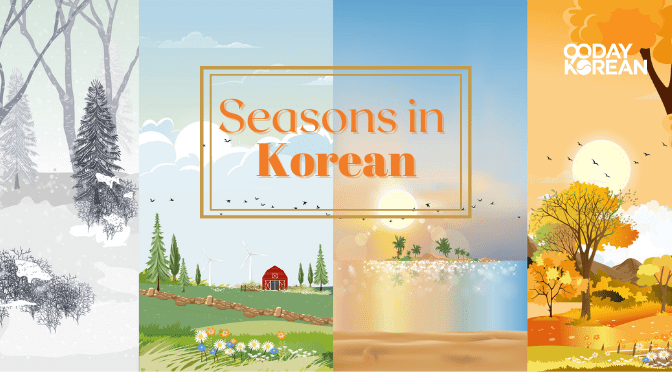
Weather & Seasons in Korean – Know this for your next trip
Last modified: Apr 25, 2024 | 12 min read | By Laura Toyryla
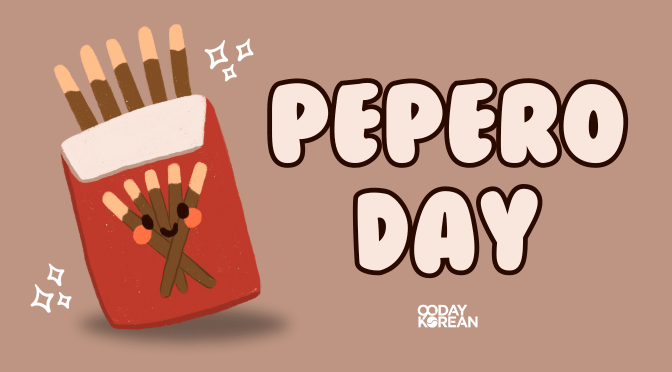
Pepero Day – A Korean Holiday with Valentine’s Day Vibes
Last modified: Nov 07, 2023 | 9 min read | By Laura Toyryla
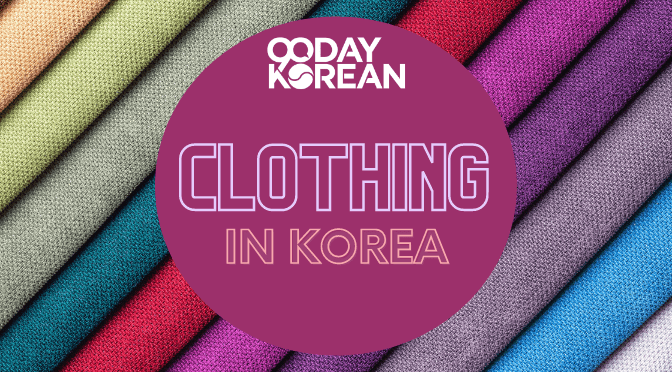
Clothing in South Korea – Modern and traditional attire
Last modified: Feb 08, 2024 | 16 min read | By Laura Toyryla
Leave a Comment Cancel Reply
Your email address will not be published. Required fields are marked *
Choose your skill level and start getting fast results with your Korean:


50 South Korea Travel Tips

This post will cover all the Korea travel tips I can think of, from what to do before you come to accommodation tips to safety concerns and more.
I’ve been meaning to write some sort of practical guide with tips for visiting South Korea for ages now, but I just never got around to it! I think when you live in a country vs. visiting for a short time, you just don’t think about certain things.
Anyhow, since ending my last teaching contract in 2018, I’ve been back a handful of times as a tourist and had to think about things I didn’t have to consider when I had an E-2 visa and a residency card (ARC). If you’re traveling to South Korea for the first time, here are 50 tips you may want to keep handy!
I’ve divided it up by:
What to Do Before Traveling to South Korea
- Korea Itinerary + Things to Do
Where to Stay in Korea + Tour Options
Korea transportation guide.
- What to Eat
- Safety + Sanitary Concerns
Little Things to Know About Korean Culture
- What to Buy in Korea
- Final Notes
Feel free to click the link to jump to each section if you don’t want to scroll.
Once you’ve decided to visit South Korea, there are a few things I suggest doing so you can get from Point A to Point B with little to no issue.
1. Learn Hangul + some key phrases.
I cannot emphasize enough how much easier it will be if you just learn Hangul, the Korean alphabet. It was literally created to be easy enough for commoners to learn to read under King Sejong, so trust me you can learn it.
It took me an afternoon of watching a Youtube video on loop and copying the sounds and letters down. I even have a handy guide to start learning.
2. Try to book with Asiana or Korean.
It’s a long journey to get from most places in the U.S. to Seoul, which is where you’ll most likely fly into. I’ve made the journey multiple times now and used a different airline each time: American, United, Asiana, and Japan Airlines.
I honestly don’t remember Japan because I was so tired that I think I just fell asleep for most of it. American and United were hellish to put it lightly, but Asiana has always been my favorite. I flew it to and fro my first time in 2011 and then again coming from Denver.
Book with Asiana or Korean as much as you can. It’s SO worth it. Usually, this means flying from San Francisco or Los Angeles (not sure of their other main US hubs), so if you want a little California side trip before you go, it’s the perfect excuse!
3. Read up a bit on Korean history
I think to really enjoy a new country, you should do at least a little research into the country’s history and culture. Even if you just pop on a Crash Course video to get the gist, it gives you more of a connection with a place than not.
If you really want to get in depth, feel free to again browse Amazon’s Korean history section . Look for things about the Joseon dynasty and the Korean War if you want something specific to focus on.

3. Watch some Korean dramas, movies, or K-pop music videos.
This is totally NOT necessary, but, hey, I love both of these things, so I’m biased. While Korean dramas are incredibly glossy versions of this country, they do still give you a general idea of the modern culture, beautiful scenery, and some of the quirks. I recommend:
- Reply 1997 or 1988 to learn more about Korea’s own nostalgia period
- Taegugki – a SUPER good movie about the Korean War
- Boys Over Flowers , Secret Garden , or My Love from the Star are some more recent insanely popular shows
- She Was Pretty is a personal favorite, and I think the message of it is so lovely
- Two newer movies: 1987 and I Can Speak
4. Do you need a SIM Card?
This honestly depends! If you’re a good planner and can speak decent Korean, then you can get by without needing one.
In general, I’d probably recommend it, especially if this is your first time. Whether it’s translating something on the fly, trying to pull up KakaoMap, or fiddling on your phone for the duration of a long bus ride, it’s worth it. Korea’s data plans and wifi are insane, and you might get a little spoiled.
The fun thing is NOW Korea has a thing called an eSIM ! This means you don’t even have to physically buy one at a kiosk, but can sign up online and just snap a picture of the QR code (or manually input the info, which is a pain). I JUST did this on my most recent trip and it makes life so much easier not having to worry about my US SIM card.
Get one online here . It’s much cheaper than waiting until you’re in the airport and buying one off your phone or at the kiosk.
5. Best Time to Go to Korea
Fall or spring.
The weather is the best during these seasons, and the country is absolutely beautiful. Early spring has the cherry blossoms while autumn has the gorgeous foliage . Winter and summer aren’t bad but if you have the freedom, don’t come during those seasons. Summer is so humid , you’ll never want to leave your hotel room, and winter is, well, winter.
6. Exchange + Money Matters
Korea uses the won, and 1,000 KRW is roughly $1 USD. There are 1,000, 5,000, 10,000, and 50,000 notes and 500, 100, 50, and 10 coins.
You can use a card mostly anywhere in the country, though smaller places may prefer cash. Every convenience store should have an ATM that works with a foreign card.
7. Is Korea expensive?
I’m not the best person to dole out budget advice because I suck at budgeting , but I’d say Korea falls in the middle for Asian countries. It’s a lot cheaper than traveling Japan , but you’ll be in for a bit of a shock if you’re used to Cambodia or Vietnam prices. In general:
- A Korean meal can be anywhere from 5,000 KRW to 20,000 KRW depending on where you go, but typically 5,000-10,000. Korean BBQ usually costs between 10,000-15,000 KRW per person, but they often want you to buy more than one serving.
- Drinks in bars can be pricey, sometimes up to 7,000 KRW, so what some people do is pregame at one of the convenience stores and then buy one drink there.
- Club cover fees are around 10-15,000 KRW
- A regular hostel can range from 15,000-20,000 KRW/night while a franchise hotel can be 150,000 KRW+.
- Street food can be 1,000 – 5,000 KRW
- Entrance fees are 1,000-3,000 KRW, sometimes 8,000-10,000 KRW for bigger nature areas like Suncheon Bay or the Camelia Hill in Jeju .
- A subway or local bus ride is usually between 1,000-2,000 depending on how far you go.
Korea Itinerary Tips + Things to Do
Before I get into this section, if you want some inspiration on where to go exactly, I have a massive post outlining 102 beautiful places in Korea , and I re-organized them so they were grouped by similar location.
8. Where to go if you have…
If you only have one week, then I recommend basing yourself out of Seoul or Busan . If it’s your first visit, then definitely choose Seoul . There’s plenty in the city to keep you occupied, and even after studying there and spending too many weekends to count, I still haven’t scratched the surface of things to do .
You’ll have time for a day trip or two and not feel too rushed. I’ve heard of some people opting to do an overnight trip to Busan, but honestly, that’s just a lot . Check here for my Korea itinerary for 7 days.
If you have 2 weeks, then you have a little more wiggle room! I’d choose to either spend the 2nd week in Busan, Gwangju, or Jeju depending on what you want to see. If you want a full breakdown, I have a post with four sample 2-week itineraries.
Busan is a beautiful city, and you’ll find plenty to keep you occupied. It’s also more laid back, so if you want to go enjoy the beach or relax, then save your rest days for here. Gwangju is great if you want to see more of the Korean countryside. It’s a huge city itself, but it’s a good hub for day trips like Suncheon , Yeosu , Namwon , Boseong , and more. Jeju is great if you want Korea’s version of an island experience. It’s personally one of my favorite places in the country, but you definitely need to rent a car and not stay in Jeju City.
4 Weeks/ 1 Month
This is honestly the best option if you really want to get a full idea of Korea, but I get that most people don’t just have 4 weeks of vacation! I would split my time up so I have 1 week in Seoul, Busan, Gwangju, and Jeju. Bookend your trip with Seoul and Busan (or reverse) depending on where you’re flying to next. For a more detailed guide, check this 1-month itinerary guide .

9. Major things to do in Seoul
Okay, Seoul is overwhelming. Once you get used to it, though, it’s an awesome city to explore. And the subway system is one of the best in the world. I actually have been working on a crazy long “Things to Do in Seoul” post but I just keep adding to it! Here are some things to get you started:
- Traditional Culture – Check out the palaces, Bukchon Hanok Village, and Jongmyo Shrine, do a temple stay
- Trendy Things to Do – Look up all the random cafés , visit the filming locations of your favorite dramas, go to a K-pop show (hey, no judgment, I almost cried when I couldn’t get tickets to Kyuhyun’s solo concert), visit the many funky museums or outdoor parks… The sky is really the limit in a city where the poop cafe isn’t even the most random cafe!
- Scenic views – Head up to Namsan tower, hang out the manmade stream, Cheonggyecheon, hike Bukhansan, stroll near the city walls, go to Pocheon Herb Island , take a day trip out to Gapyeong or Suwon … the list goes on!
- Things related to the Korean War – Visit the DMZ/JSA and spend the afternoon at the War Memorial Museum of Korea
For more on Seoul, check these guides:
- Where to Stay in Seoul: Best Neighborhoods
- 15 Fun Day Tours in Seoul and Nearby
10. Some other good hubs to base yourself out of:
- Sokcho – Good if you want to hike Seoraksan and travel Gangwondo.
- Jeonju – Good for Jeollabukdo and a lot of big outdoorsy/hiking spots
- Gwangju – Good for Jeollanamdo and popular countryside spots — Boseong Green Tea Fields , Suncheon Bay , Damyang Bamboo Forest , Yeosu, Gokseong Rose Festival , Namwon + Jirisan , Hwagae Cherry Blossom Festival , and more.
- Busan – other fairly close by spots include Tongyeong , Gyeongju, and Ulsan, also a good place for the Jinhae Cherry Blossom Festival .
- Seogwipo – Good place to stay in Jeju that isn’t Jeju City! Check here for where else to stay in Jeju if you don’t want to be in a city.
11. Go hiking!
No, seriously. It always irks me how underplayed Korea’s hiking culture is to those visiting from the outside. This peninsula is mostly mountainous! There are tons of beautiful hikes no matter where you’re staying, so bring your sneakers and dedicate a few days to the mountains. Most of the popular mountains have trails to follow, and you really don’t even need special hiking boots.
Here are some of my posts on hiking:
- Daedunsan near Jeonju
- Jirisan’s Baemsagol Course near Namwon
- Wolchulsan near Mokpo
- Jogyesan near Suncheon

12. Check out the big festivals for when you visit.
If there’s a statistic out there for the countries with the most festivals, I’m going to bet Korea is on there somewhere. You name it, there’s probably some sort of festival for it. I would look up any big festivals for when you visit because they can be a lot of fun, and many are the biggest events of the year for the smaller town.
Namwon’s big event, for example, is the Chunhyang Festival sometime in May. From the beauty pageant to the Gwanghallu performances and more, it’s a huge deal!
13. Is the cafe culture really a thing?
It is, and it’s amazing. I really don’t think you could walk too far without stumbling across at least one cafe, and with Korea’s wifi availability, this is actually a great country for digital nomads.
If you want quirkier cafes, just imagine any kind and look it up.
Here are some cafes I’ve specifically covered:
- Zapangi: The Pink Vending Cafe in Seoul
- Stylenanda Pink Pool Cafes in Seoul
- Dreamy Camera Cafe near Seoul
- Enrogel Teapot Cafe
- Grand Garden near Mokpo (sadly no longer exists)
14. Is a love motel what I think it is?
It is, and they’re probably more plentiful than actual hotels or hostels!
Love motels are exactly what the sound like — hotels for couples to have some private time. I’ve heard of them even being rented by the hour.
While some can be on the grungier side, there are actually a lot of nice love motels, and they’re a good middle ground if you want something more private than a hostel but don’t want to pay the hotel prices.
15. How is the hostel culture in Korea?
It’s a lot better than the U.S! There’s at least one hostel in most towns, and they usually come to around $20/night. Chances are you will have to share a room and a bathroom.
Keep in mind, the “whole bathroom is the shower” will be the case in most places. I’ve gotten used to it with my two apartments here, but it can be a bit of a shock for a foreign traveler! Yes, the whole bathroom gets soaked, and there’s usually a small window that’s always cracked to let the place dry out.
It’s fine, though I will say my hostel bathroom in Hyeopjae was a little gross. It was perpetually wet because 6 girls shared one normal bathroom and there wasn’t a window to air it out…
16. Can I get an Airbnb in Korea?
You can! Airbnb is on the rise here, so you’ll find plenty of options! I’ve written about my little apartment stay in Seoul ages ago (unfortunately that apartment is no longer listed), and I’ve stayed at this studio one weekend in Seoul, this cute home in Jeju, and this apartment in Ulsan.

17. How are the hotels?
The hotels are really nice but the price gap between hostels and hotels is a lot higher than you’d expect. I did a sponsored stay at Holiday Inn in Gwangju , and the price for our room would be at least $300+. I can’t imagine a Holiday Inn in the US costing that much or being quite that fancy.
There are guesthouses that have decent prices, but they’re more concentrated in bigger cities.
18. Do you recommend taking a tour or is it easy to DIY?
It depends on where you’re going and who you’re with. For some of the hikes, I’d definitely recommend a tour if you’re solo traveling just because you’ll be with other people and someone who can translate if anything happens.
Also, some places like Naejangsan are much easier to get to if you go on a tour than alone, especially if you’re coming from Seoul.
A lot, though, is easy to do on your own. For example, it’s super easy to organize your own itinerary for Seoul and any of the bigger cities.
I’d figure out what you want to do and look at the different tour packages to see for yourself.
19. What are the best websites for tours?
If you want to take a tour, I’m affiliated with:
- Trazy – mainly for Korea with some Thailand options
- Klook – mainly for Asia, and I also compare prices for Korea options
- And I went on a tour in Jeju with Indieway.
I’d check all three sites to compare tours for what you want to do. Sometimes one is slightly cheaper than the other!
20. Don’t rely on Google Maps.
Korea’s not a huge fan of outside companies, so they block them as much as feasible in this day and age. While I won’t get into how that can be both good and annoying here, let’s just say this mindset manifests itself the most in Google Maps.
Google isn’t allowed access to Korean information in order to update their maps, and I heard 2009 was the last update. I just checked to see for any updates in 2018, and it’s still pretty bad.
On the plus side, my favorite app is KakaoMap and it even has an English interface! Another option is Naver Maps, but I discovered in one of my classes that it’s not nearly as detailed as Kakao.
Check my post on which apps to download for travel in Korea
21. Using KTX
There are a few different train options in Korea, but the KTX is the nicest and fastest. For example, the KTX takes me about 2 1/2 hours from Seoul’s Yongsan Station to Suncheon Station. Another train would take 4 1/2 hours. The one downside, of course, is how much more expensive it is.
The website is a little tricky to use if it’s your first time, so here’s a super quick guide:
- Go to www.letskorail.com
- Choose “ENGLISH” in the top right corner
- In the center tabs, hover over “RAIL TICKETS”
- Then click “TICKET RESERVATION”
- I usually just pick: Normal Type, Direct, “All” for Type of Train
- Hit Inquiry.
- You can see all the train times so you know when you need to be at the station, and if you want, you can book online. I usually just book in person at the station, but if I’m going somewhere at a busier time or I just want to do it then, I book online with my US credit card. You also have to input your Passport Number to buy and will need some form of ID to get your ticket (which is just a piece of paper).
Below I have a screenshot of what it looks like if I’m traveling from Suncheon to Seoul. There are two stations in Seoul (Yongsan station and Seoul station), so if nothing comes up when you search “Seoul,” try looking up “Yongsan. The site will show you all the different train options, not only the KTX.

21. Intercity buses
Another option that I typically use is the intercity buses. I use them because the KTX is twice as expensive, they take as much time to get to Seoul as the slow trains, and they actually stop in between for a 15-minute break.
I’d also much rather kill time in Seoul’s Express Bus Terminal, which is connected to a Shinsegae Department Store and has a million things to do, while Yongsan is much more limited. Also if you miss a bus, it’s cheaper to get a refund and a new ticket than with a train. Learned that one from experience…
I buy mine at the kiosks in the terminals, but you can get them online too at www.kobus.co.kr and www.bustago.co.kr .
22. Tips for booking flights
And yet another option is flying! There are a few smaller airports around Korea, but the main ones you’ll probably want to use are Incheon and Gimpo in Seoul, Gimhae in Busan, and Jeju International Airport. I usually just book on Expedia or Kiwi, but if you want specific Korean airlines, they are:
- Asiana Airlines
- T’Way Air
I’ve flown Korean, T’Way, Asiana, Air Busan, Eastar Jet, and Jeju personally. They’re all fine, some obviously nicer than the more budget-friendly ones, but the longest flights around the country are only an hour or less, so save your money and get the cheapest one with the best luggage policy.
23. Using Seoul’s subway
Seriously, this subway is the best, and I’ve ridden many a subway in my travels. It’s clean, fairly cheap, and will get you everywhere in Seoul and nearby.
You can get a T-Money card from any convenience store and fill it up as you need. The machines are in English too, so don’t worry about making a mistake. You can also use the same card for local buses both in Seoul and the rest of the city.
They’re also clean! Like super clean! Download the Subway Korea app before you go, and it’ll help you plan your route out.
24. Using local taxis and buses
Everywhere in Korea pretty much has a local bus system, but some cities are way more reliable than others. Another nice thing is that there are taxis everywhere, and there’s usually a stand at every train station and bus terminal.
Taxi drivers are generally fine and some are even lovely and friendly, but it’s the same thing as any city you’d take a taxi in. Sometimes it can be a frustrating experience! I’d just screenshot the Korean address and name of where you want to go and show them that.
Most I’ve seen start at 2,800 KRW ($2.80 USD) with that number being a little higher in the countryside areas.
Tips on What to Eat in Korea
26. so…. the dog thing..
Dog soup does exist here. No, I haven’t tried it nor do I have any desire to, but I won’t judge someone who chooses to try it. Here’s the thing: Yes, the story behind how dog soup is made here is pretty horrifying, but so are the stories we hear about farms in the U.S. and around the world.
I choose not to eat dog soup, but I’m still not able to say no to Korean BBQ or lamb skewers. How can I judge someone who wants to eat dog soup just because culturally I was brought up loving them as extended family members?
For the record, though, dog soup is quickly dwindling in popularity and if my elementary students are anything to go by, it’ll be out of fashion in one or two generations. It’s already quite rare to see them in bigger cities, and the only 보신탕 restaurants I’ve seen are in the countryside.
26. What food should I eat while I’m here?
Korean food is one of my favorite styles along with Vietnamese and Italian. Here’s a quick list of food to try:
- Naengmyun in the summer
- Gamjatang in the fall and winter
- A Buddhist temple meal (great for vegetarians)
- Korean street food! There are so many, and I don’t even know the names of all of them
- Pajeon, especially after a hike
Pro and also slightly biased tip: Korean food outside of Seoul is 10000x better than in it!
If you want, while you’re here, try a Korean cooking class in Seoul or even a food tour if you just want to eat and not cook.

27. How is vegetarian and vegan-friendly Korea?
Um… It’s not. Korean food by nature relies heavily on meat or fish. While Seoul may have a lot of options, you’re going to struggle. I’d always look at Happy Cow for restaurant ideas.
28. Any unique drinks to try?
Ha! Yes! I’ve tried these at least once even if I don’t drink:
- Soju – Korea’s alcohol of choice. You can get different mixes of it too, from yogurt soju to fruit soju. I’ve heard that Hallasan soju is the best tasting on it sown
- Makgeolli – Especially with pajeon, it’s a sweet rice wine type alcohol and you drink it from little bowls
- Cider – This is my favorite soda, and you can get it at any restaurant or grocery store. I don’t know what it is, but I always get addicted
- Omijacha – This is a really yummy tea you can get at cafes. It’s supposed to have five different flavors in it, so it tastes a bit tart and sweet at once.
- Hallabong drinks – Hallabong are the orange fruits from Jeju, and they’re delicious in drink form.
29. What’s the deal with the takeout culture?
Korea loves takeout. It’s amazing. In bigger cities, you can order to the exact place you’re at, even if you’re not in a building or home! The most popular things to order are fried chicken, pizza, pig’s feet, and random Korean dishes that are easy to transport.
If you can use Hangul, then download the 배달요기요 app.
Safety and Sanitary Concerns
31. is it safe to travel to south korea now.
Short answer: YES!
I wrote about it in a post on the Department of Wandering with more details. You can read it in full here.
32. Sooo… North Korea…
The North Korean threat is kind of blown out of proportion by the Western media. At this point, I’d be more concerned about living in NYC or LA.
Now…if you’re asking about visiting North Korea while you’re here, well, I have some strong opinions on that.
33. How safe is public transportation?
Super safe. I can’t tell you how many subways, buses, and trains I’ve taken here, and I’ve never felt uncomfortable.

34. How safe is Korea for a solo female traveler?
One of the safest places. Korea is honestly one of the safest countries in the world.
Of course, be as cautious as you’d be anywhere. Watch your drink, don’t get too inebriated if you’re on your own, and, you know, keep an eye out for your fellow female! I feel like there’s a silent solidarity of women around the world against creepy, drunk men, so if you ever feel uncomfortable, just go towards a woman and quietly let her know your situation.
35. How clean is Korea?
Overall, it’s clean. There are some areas that are kind of gross, but it’s no different than any other super industrialized country.
36. What’s the deal with this squat potty? Am I going to have to squat?
Ahhh, the squat potty. If you don’t know what it is, you’re blessed. I know it’s actually more hygienic than regular toilets, but I just can’t get used to the idea.
Fun fact, in the 3 years I lived there, I never once needed to use one. Regular toilets are far more common, especially for most of the places you’re visiting.
Some more rural areas may only have a squat potty, such as hiking trails or campgrounds, but major places will have normal ones. And hey, the fancier buildings even have the seat bidets, which are truly the greatest toilet invention since indoor plumbing.
These are just some things I and other friends have noticed, and that I think you might be surprised by if you’ve never been here. I should preface this section with this: Of course, not ALL Koreans are like this, and many of these things you may not even experience. This is from my personal point of view and some trends I’ve seen with other foreign friends who live here.
37. You will get stared at.
Maybe not in Seoul, but in the rest of the country, just be prepared. There’s the episode of Conan when he goes to Korea and all the kids are craning their necks and just staring. That’s pretty common even if you’re not a tall ginger with a camera crew.
If you hear “wayguk,” they’re just pointing out that you’re a foreigner. I had a friend who would reply in the same awed tone, “hanguk saram,” or Korean!
38. Here’s a typical line of questioning:
- Korean: Where are you from?
- Me: America.
- Korean: Are you Korean?
- Me: No, I’m Chinese-American.
- Korean: Ahhh you speak Korean well.
- Me: Thank you.
- Korean: Are you married?
- Korean: Ahhh.
Couple culture is also very real here, and you’ll probably see plenty of couples out and about enjoying their day in matching gear. Elissa and I always joked that if you’re not sure where exactly to go on your way to a major site, just follow the couples! Works like a charm.
39. Are Koreans actually racist?
Ummmm, for the most part, no. And the more they see of foreign visitors and travel, the less likely they are. There are a few, especially from the older generation, who might be racist. Once in a blue moon, you might come across a bar that bans foreigners, but that’s super rare.
I will say, MANY of my friends have pointed out that the xenophobia in Korea really, really jumped out during COVID. However, this is not something I think you’d have to deal with as a visitor, but it maybe be something you start to get frustrated by if you’re here long term.

40. A note on the introverted nature of many Koreans.
A lot of Koreans keep to themselves. Don’t get me wrong, they can be insanely nice and kind, and I’ve had complete strangers stop to lead me to my next destination. But you have to ask for that to happen.
Also if you’re in trouble, such as feeling harassed by a drunk old man, they won’t help on their own. They’ll kind of stare and avoid the general area.
41. What the heck is an ahjumma and ahjussi?
Okay, so technically:
- Ahjumma – married woman
- Ahjussi – married man
However, that’s not quite accurate. If you called a 22-year-old married woman an ahjumma, she’d be pretty offended!
Ahjummas are considered tough as nails mothers with cropped perms, comfy pants, and a brusque attitude that can be helpful or frustrating depending on the situation. If you ever need to get through a crowd, follow the ahjumma openly just pushing her way through.
Ahjussis are middle-aged men, and the connotation is that they’re soju drinking, sometimes grumpy, sometimes nice men. A lot of times they drive taxis. Now, gaejeossis are something else entirely.
42. Do you Koreans really get drunk all the time?
No, though you’d think that, wouldn’t you? While the drinking culture is huge in Korea, the country is not a giant group of alcoholics.
However, some of my friendliest interactions with Koreans have been while they were drunk singing norebang. I guess I could say the same for America too.

43. Treatment of animals in Korea.
Animal treatment is getting so much better, even in the time I’ve been here. However, I do think I should warn any diehard animal lovers that you’re not going to love what you see, especially out of the cities.
It’s very common to see bigger dogs chained up outside their homes all year round, and one of my adult students told me that near her apartment building, people were feeding the stray cats poisoned food to kill them.
Again, things are seriously improving, and there are so many great groups around the country that help strays. In Suncheon, there’s a cate cafe that’s strictly for helping stray cats!
44. What should I know about the suicide culture?
The suicide culture is a really unfortunate part of Korean culture, but it’s not something you’re really going to encounter unless you’ve been living here, and even then it’s fairly rare.
I wanted to make note of it, especially with SHINee’s Jonghyun passing and because it’s just something to be aware of, but I feel like to really discuss it, I’d have to dedicate a whole post which I’m not ready to delve into researching.
What to Buy for Souvenirs
On a much lighter note, here’s a fun section of what to buy in Korea for souvenirs!

45. The deal with Korean skincare products
Korean skincare is top notch, and it’s all I really use. There are so many brands compared to the U.S., and they all have their own marketing and store locations. I personally love Innisfree the most, so I buy from there for classic products. I like Etude House for make-up, and I just pop around to the different brands if I want something trendy or quirky to give as gifts. Some other brands are:
- Nature Republic
- The Face Shop
- Dr. Jart (check Olive Young)
- Peripera (check Olive Young)
If you have time, do research on what kind of products you want for your skin type, but as gifts, my go-to buy is face masks.
46. Clothes + Accessories
There are a ton of clothing stores in Korea, and the two big areas are Myeongdong and Dongdaemun in Seoul. I’m not really that big into clothes shopping here because everything is free size, so it’s either too small or a sack, but it’s worth looking around if you’re on the slim, petite side.
If you want something quirky, then I recommend getting either something with Hangul on it or, for fun, get one of the super bad English motto shirts!
Another clothing item that could be really lovely is a modern hanbok. Instead of buying a regular hanbok, which is crazy expensive, you can buy a modern looking one. Sometimes they’re really subtle details, so you can wear them in normal life without it feeling like a costume.
47. Food and drinks to buy for home
Soju bottles, Korean snacks found in any convenience store or grocery store, specialty teas… The only two specific things I can think of are Pepero and brown rice green tea packets.
48. Any other unique souvenirs to know about?
Hmm, there are quite a lot! Most souvenir shops have similar items that are supposed to be more for traditional Korea. If you have friends getting married, you could get them cute wedding ducks.
The cute culture is very real, so you could always get cute versions of everyday items like stationary or pens. If you’re a fan, go to the Naver Friends or Kakao friends stores and pick up one of their mascots.
There are a lot of adult coloring books too, so if you can find ones for Korean places, then I think those would make super cute gifts.
Other souvenirs would be, of course, K-pop related things if you have friends who love specific groups. I bought the physical CDs of a few groups and singers I like.
Final Notes on Traveling Korea
49. koreans are actually really lovely and kind..
As a whole, Koreans are the bomb. They’re so kind, and even if some things can feel frustrating, they’re always polite and try to be as helpful as they can. I’ve had frustrating moments here, but, in all honesty, my overall frustration levels living in Korea are less after 3 years than the semester I spent living in Madrid, so that should say something.

50. Ultimately, traveling this country is what you make of it.
If you come in thinking you’re going to have a meet-cute with some perfect-skinned chaebol oppa, you’re probably going to leave pretty displeased.
My best advice is to take Korea for Korea and not compare it to other places. It’s pretty unique, for better or worse, and it so wants to be better known for welcoming foreign travelers! I’ve been here, cumulatively, for 3+ years, and I wouldn’t keep coming back if I disliked my time.
And there you have it! Fifty things to know about traveling to South Korea. Let me know if I’m missing anything or if you’re planning your own trip here this year!
SHARE THIS ON PINTEREST

want to support?
I’m always grateful when friends and readereach out wanting to support There She Goes Again . Truthfully, I’m just happy my posts are helping people travel! If you’d like to support the blog, here are some companies and brands I’m affiliated with. Simply click the links, and I receive a small commission at no extra cost to you!
- Booking (Hotels)
- Sixt (Car Rental)
- Klook (Tours)
- Viator (Tours)
- Get Your Guide (Tours)
- Trazy (Korea Tours)
- Tiqets (Entrance Tickets)
BLOGGING / SOCIAL MEDIA
- WPX Hosting (Advanced)
- Bluehost (Beginners)
- Lezé the Label (Clothing)
- Printfresh (Pajamas, etc)
- Promptly Journals
- Encircled (Clothing)
- Girlfriend Collective (Athleisure)
- Birkenstock (Sandals)
- Bookshop (For Local)
- Amazon Books
37 Comments
Thank you for providing such a wealth of information. I was born in Busan circa 1980 and have lived in the States for 41 years. I am planning to bring my husband and our two sons back in the next year or so and have no idea what to expect!
Ahh have an amazing time!! Busan is so lovely – I don’t think I’ve ever had a bad time there. Gamcheon Culture Village is one of my favorite places in all of Korea!
Great tips! I’m making a list of the things to prepare before going to Korea. You don’t know how helpful it is to me. I’m becoming a lot more excited. Thank you! What do you think of getting a tour guide in South Korea? Found a guide that offers customized tours Do you think I should also consider this?
Hi! Think it depends on how you like to plan. Sometimes it’s nice to have someone else plan for you altogether, but I personally like researching every aspect of my trips!
Rock on. This is a really great blog with so many useful tips, thank you so much for all the details! I’m looking forward to visiting Korea and this has helped a lot!
Thank you for all the awesome tips and helpful information. We’ll be going in April, 2023 and will be visiting Jeju Island. In Seoul we’re planning use subway and train, but while in Jeju Island we are thinking renting a car. Is it expensive and easy to rent a car there? How are the road there? Do you have a car rental place you recommend in Jeju? :)
Hi! Fun! I might be in Korea around that time too depending :)
For Jeju I definitely recommend a car, though the bus system is pretty robust (way better than when I first went). I rented one the last time I went and it wasn’t too bad! I used Trazy – https://thereshegoesagain.org/korea/jeju/car-rental and while April is too far in the future, it looks like it’s around $40 a day.
Hi Samantha! Thank you for your helpful articles. My question is when at Incheon airport the priorities are to get just enough KRW till you get to myundeong (i hope im right T T) but to get there using public transportation, you do need cards for subway/train/bus? Or not necessary? Do you buy them at kiosks or machines near the terminals? Do you just buy an adequate plan card according to your stay (3 weeks in seoul)
Hi Maha! I promise the subway system is really, really easy to use and tourist-friendly in Incheon! (Like easily the best I’ve ever seen). Honestly, when you take out cash, I’d do like 100,000 KRW max. Korea is really card-friendly, so you really only need cash for subway/bus tickets and food stands! Everywhere else takes CC even if it’s only buying a water bottle.
When you arrive, follow signs for the metro. It’ll take you down a level or two and then you’ll see the entrance to the subway. There are literally arrows on the floor! In front are kiosks to buy tickets – you’ll need cash for them. If you just buy a single journey, you can get it there and it’ll pop you out a little ticket. If you want to get a subway card, you can buy one in one of the convenience stores like GS25. Ask for a TMoney card, and then you can just recharge that at any kiosk. Subway cards are super cheap and so easy to use and have on hand; I’d recommend getting one if you’re visiting for 3 weeks.
There’s also at least one or two stands/travel centers to help you if you get truly lost!
I love buying at stores in Korea and getting lots of free samples
Agree, the free samples are so fun!
We are taking our daughter to Seoul for the fall semester as an exchange student to Yonsei University. We are equally excited for her and also fearful at the same time. She has severe food allergies to fish and all tree nuts and peanuts. She already had a few anaphylactic reactions here at home while on college campus so when she said she applied to study abroad, my worry meter just shoot up!!! Anyways, we are set to fly with her and plan to spend a week in Seoul. Your blog and tips are extremely helpful. Thank you!
Ahh enjoy your week in Seoul! I think as long as she has everything she needs on her and explicitly avoids any restaurants using fish/tree nuts/peanuts she should be ok. Luckily most Korean cuisine doesn’t use anything peanuts or tree nuts.
i’m going to south korea next september and you blog has been so useful! thanks a lot <3
Aw yay, I’m glad it’s been helpful!!
So happy I came across your site. So many great articles. My partner and I will be travelling to South Korea (3 weeks) with our 6-month old. We are still struggling on the logistics: rental car or train/bus. I think it all comes down to the question what can we carry comfortably. Q / Is a infant car seat required for taxis and distance buses? I struggle to find reliable and up to date information. Q / Feom your travelling experience in South Korea what would you recommend?
So the only time I’ve driven in South Korea is on Jeju because I’m too scared to drive otherwise haha. BUT I highly recommend reaching out to my friend, Hallie – https://thesoulofseoul.net/ ! She has a daughter in Korea, and she’ll know all the ins and outs of carseats, etc. I think your best bet is DMing her on Instagram or joining our FB group ( https://www.facebook.com/groups/108958789789483 ) and asking there!
Great information! My husband and I are planning to spend a week in Seoul next year. I’m Black and he is Filipino American. Do you think we will encounter any racial issues?
Hi Stephanie! Good question. Racism in Korea is a pretty loaded topic. Essentially everyone who doesn’t look Korean or East Asian has a good chance of experiencing some sort of micoaggression at least. However, because you’re in Seoul for only a week (aka a short time and in the most progressive part of the country used to seeing international visitors), you’ll most likely be fine.
Thank you for this info. Love the content! This is very helpful for those people like me who’s planning to go to Korea. Hopefully I can visit there next year! May I ask what are the requirements to get Korean Visa?
Hi Juliet! Depends on the visas. I recommend checking out the Korean embassy website in your country for specific details. The E-2 visa for teachers is a whole process!
Hi thank you so much for a detailed outline for tips on traveling to south korea, this helped a lot!
Traveling soon there, do I need to know someone in South Korea as a list of contact or do they ask that when first time travelers arrive there? What if i do not know anyone?
Thank you! I don’t think so, but I’m not sure how things have changed with COVID!
Thank you for this! I am planning my 40th birthday for 2022 and this came up in my search!
Ooh so exciting!! I hope you have fun planning!
I loved this so much! I’m hoping to go to korea next year on my own and i’m so excited but very nervous. and this has been so helpful! I’m not sure if you have already but do you have an article or any advise on getting visas or how it works depending on how long you plan on staying. Thank you x:)
Aw you’ll love it!! I have one on getting the E-2 visa but I’m not familiar with the rest. You’ll want to check out some of the Facebook groups for Korea for that :)
So detailed and so impressive! There are lots of articles of Korean travel tips, but I haven’t seen like this one :) Thanks for your post!
Hi! Thank you :) This means so much to me!
This is so helpful, I’ll be going next year and I can’t wait! When you first traveled to South Korea; did you have to book a hotel and give them the hotel information?
Hi! That’s so exciting; I hope you have the best time!!
Yes! So when you go through immigration, they’ll have you fill out the typical form and it’ll ask for an address and phone number. If I’m not staying with friends, I’ll book an Airbnb in Hongdae or hotel and use their address and phone number on the form.
Hi! I’m going to South Korea this year with 4 other girls (2 of whom are my sisters). I came across your post and it gave a very usueful insight to visiting South Korea for the first time. Thank you!
I cannot wait for my trip in 3 weeks!
Thank you so much :). I hope you ladies have such a fun trip! If your timing is just right, I think you should see the cherry blossoms!
Hi, I’m a Korean preparing to be a tour guide for foreign travelers.
I’m impressed by this post full of affection for Korea. I love it! I think most of, no, all of tips you wrote in this post are super helpful to travelers considering trip to Korea. And actually this post is a good text for me to take a foreigners’ perspective, too.
I’m keeping to see your other posts that is so worth to study(!). Nice to meet your posts. :)
Hi Narae, thanks so much for your kind words :) Good luck with your tour guide prep!
I’m a Korean In this post, I think that you got realistic Korean knowledges and useful tips. I didn’t think about foreigner’s perspacetive. And I am amazed by your tips that is most right thing. Thx for your post :)
Thank you, Jae Youl! I’m glad you like the post :)
Leave a Reply Cancel reply
Your email address will not be published. Required fields are marked *
This site uses Akismet to reduce spam. Learn how your comment data is processed .
Deals of the Week Solo is the new black Up to 50% OFF
South Korea Tour Companies
Looking for an unforgettable South Korea tour? Book a fully-organized trip with the best tour companies in South Korea and let the tour operator take care of everything for you. Check out the tour details and read 63280 reviews from our customers to help you choose the perfect tour for you.
List of South Korea travel companies & tour operators with 63280 reviews

G Adventures
- Excellent - 19,117 reviews for South Korea tours
Michael, our tour guide, was patient, friendly, and flexible with different age travelers and physical abilities by adjusting the activities for them. The Best of Korea tour's itinerary was very full. I think many of us enjoyed the itinerary and the experiences we had. I, particularly, enjoyed the various transportation methods which added to the experience. The War Memorial Hall of Korea museum is a big museum and had very important history. Most of us needed more time. I think this activity could of come at the beginning of the tour for us to have better knowledge of Korean history. On the tour's last day, after the museum, most of us thought there was going to be a group dinner. The tours I have been in the past had end of the tour dinner to say good bye and show our appreciation to the tour guide. It's nice to have a closure after spending a week together. We were disappointed that the day just ended after returning to the hotel. After the DMZ visit, we had a very nice lunch at a well known restaurant. This time could of have been a good opportunity to say good bye but I think due to limited time, food came out late, we didn't linger.
Our tour guide Tommy Lee was awesome—highly recommended!!

Scenic Luxury Cruises & Tou…
- Excellent - 35 reviews for South Korea tours
- This operator has no South Korea reviews

HanaTour ITC
- Excellent - 173 reviews for South Korea tours
Our tour guide Jay was efficient, friendly and informative. His choice of food for lunch and dinner was spot on as we wanted to taste local Korean cuisine at every opportunity. We thoroughly enjoyed our Korean West Coast Tour.
This was a great tour that covered a lot of amazing places, fun experiences and delicious food (sooo much food!) in a short amount of time. I was very lucky to be a part of an amazing group of people that clicked so well together from the start and this made the whole experience even better. Our guide Mr. Jay was very active and fun, but also very well organized. I appreciated that he was asking for the groups feedback after every activity. You could see that he really wanted to give us a great experience of his country.

Intrepid Travel
- Excellent - 11,714 reviews for South Korea tours
Fantastic introduction to Korean food and culture. This trip had a great mix of walking, eating and chillin. If you’re an expert in Korean food, this may not be the best tour since it’s an intro with slightly more western tastes in mind, but we did try exotic things like murder hornet soju! Haha everything was good and the group was awesome. Everyone got along well, and the guide Michelle made the tour go very smoothly. Some days were >20k steps so def being comfortable walking shoes. One thing to remember is that the dmz visit is not a part of the tour, and in general the dmz is not available on Mondays… so if adding on, you’d have to stay until Tuesday or do it Sunday before tour starts.
I have way to many positive things to mention about this trip. First of all Jacob our tour guide went beyond being an amazing leader. The first few days by myself in in Seoul were overwhelming but having Jacob who knew what he was doing in the city made it feel like our group was part of the city, and we felt safe and comfortable walking the streets Jacob's amount of knowledge about the food , history and hidden gems made the days fly by. All accommodations and restaurants were fantastic. I absolutely recommend this tour. The only problem with the tour was that it ended too early. Because of this tour I am absolutely coming back to South Korea and hope Jacob can be my tour guide. Thanks for an amazing trip.

Europamundo
- Good - 3,025 reviews for South Korea tours
Wasting so much time for bilingual translations for the last 2 weeks. Tour guides and busses keep changes every 2-3 days with no reason even all buses goes the same direction. Not sure about Spanish side, but English was awful from all 4 guides we had throughout those 2 weeks. You better pick other companies who would provide a single bus with a single tour guide and ONLY with your language. You’re getting what you're paying for, 100%.
Horrible, tour guide doesnt even speak proper english, never again!

The Dragon Trip
- Excellent - 326 reviews for South Korea tours
Truly amazing trip that shows you many different sides of South Korea, and lead by the best guide who was super fun and helpful the entire time! CheongAn gave additional tips everyday to make planning our free time seamless and we totally trusted and followed all his daily recommendations. Would definitely recommend this trip to anyone looking for an adventure!
It was a great tour! The itinerary was well planned and organised so I was able to experience a broad range of activities, from visiting monasteries and temples to learning K-pop dancing and visiting the bustling streets of Busan. Transport was well managed and accommodation was good. A highlight was our excellent tour guide CheongAn who was a very knowledgeable and supportive presence. I learnt a great deal about South Korean food, culture and history from him, and his positivity and enthusiasm really enriched the experience.

Intrepid Premium
- Excellent - 320 reviews for South Korea tours

Culture Trip
- Excellent - 241 reviews for South Korea tours
It was a great trip! We kept busy the entire time while also having some free time, had a lot of really great traditional Korean food at spots you would probably never find otherwise. And did a lot of activities! A lot of tours tend to be less focused on food/activity and more on museums/things to see. So it was nice to get one to keep me active! Everything was nicely planned and alternatives were always ready should there be bad weather.
We had a wonderful time on an excellent culture trip with a wonderful group,- really like a family. Our local tour guide Sam showed us a lot of cultural and historical sights with background information. He looked for the group like a father and showed us a really southful South Korea with a lot of heart and soul. Thank you, Sam. It was an amazing, unforgetable time for us and we will keep it in good memories. It was a pleasure to travel with all of you.

Agate Travel
- Excellent - 283 reviews for South Korea tours

Bamba Travel
- Good - 1,691 reviews for South Korea tours
I really hate giving a bad review and liked Frank Shinn. He tried to do his best but his English was lacking. He did not explain much or give any information or interesting stories about places we were going or while on the way to. It seemed we were on our own and not led to the more interesting spots that were in the tour. The bus driver was excellent and felt very safe with his driving. Of the four hotels, the Commodore was the worst, bad food, and hot rooms.
Frank Shin was such a nice man but his English was not proficient enough to lead an English speaking tour. He worked very hard and went out of his way to be helpful, however, there was very little information given about each site we visited. The tour was quite disappointing because we were pretty much left on our own to navigate each stop. While he tried to give us information, it was all so basic and uninteresting. I was envious of other tours that had better guides who directed their guests to the best spots to see or take photos. We actually had a Spanish speaking tour guide, Cathy, who lead a family of five on our bus, and she was often directing them to the best places to go. I feel like we wasted a lot of time trying to figure out where to go. We’ve been on many other tours in Europe, Japan, and the US, in which we were very entertained with unusual or unknown anecdotes about the places we visited. I hate to leave a negative review, because I truly liked Frank as a person, but I would not recommend this tour to others. He was truly so sweet. Another thing about the tour that was unfortunate, was that on two occasions we were taken to lunch and had to pay out of pocket. We didn’t mind the added expense, but we did not have a choice of where or what to eat. We all had to go, and it was a set meal. I think they could have just added that to the price of the tour since there wasn’t an alternative. It was a hassle to have to wait to pay. Also, the timing of the trip was strange. We had a lot of time in some uninteresting places and had very brief times in fascinating places. Meaning we were often either bored or rushing around. The timing was just really off. Perhaps tour company is trying out new route? The last two nights of the tour, we got to the hotels so late at night that we had no choice but to just eat at the hotel instead of venturing into town to experience the local flavors. The hotel dinners were meh. For the most part, the hotel rooms and breakfasts were fine. However, do not expect to adjust temperature in your room. It is set, so we had some warm-ish nights. The Yeosu Ramada was the best. Newest, most comfortable. The worst was the Commodore Gyeongju, and it was pretty bad. Old. Worst breakfast. All in all, it wasn’t horrible, but I wouldn't book a Bamba/Tour Radar tour again. I am sorry to write such a critical review, but I hope this helps the tour company to improve. We spent a week in Seoul on our own, and I think we will travel independently the next time we visit South Korea.

- Excellent - 43 reviews for South Korea tours
The only problem was getting food in the evening from some of the towns and hotels because they were either closing for the night or the hotels didn’t serve after 8 or 9 pm. So maybe knowing this the tour guide can arrange for something earlier. Otherwise the tour guide and driver were wonderful.
Well organised, excellent communication from our tour guide.

When it comes to travel, we all know there’s so many different options, tho we were so lucky to come across Odynovo, it was the BEST choice as we were planning a Japan & South Korea Tour Lynn, Senior advisor at Odynovo was always super helpful and profesional providing the best itinerary options for our needs, giving different alternatives and giving details on each one so we could make the best out of our trip, she really delivered personalised service to fit our preferences as customers Everything worked perfectly from day 1 an until last day, from airport pick up, to hotels & tours, with very helpful drivers and also tour guides, everything was on time and wonderful As for the tour guides, in Tokyo we had Lyn who was great, super knowledgeable about the tours topics and also very helpful overall, even taking great pictures And for Seoul, we also had an amazing tour guide: Jones, who was the BEST !, he was very patient explaining all, super flexible if we had a request and super helpful, he truly was AMAZING ! He would always make sure we were ok and enjoying the tour ! So in summary, we had an unforgettable trip to both Tokyo & Seoul and if we travel in the future, I will definitely use Odynovo again ! Thank you !
Overall planning was great ( flights, hotel, pick up from the airport, guide). Few areas for improvement would be knowledgeable updates on tourist visa information, distance between locations were widely miscalculated and generally took an hour or more to get to our destinations between cities, the number of stops between drives was too frequent also causing delays, location of hotels wasn’t in the best locations (generally out of the way) and it would have been helpful to let us know we would be responsible for our tour guides lunch and snacks and that we would be taking lunch with them for all our lunches.

US Travel Korea
- Average - 1 review for South Korea tours
Most of this tour’s destination were just ok, only 2 locations were better and the duration of stay per location can use some improvements. For example, they gave us over 2 hours at one temple and not enough time at the national park. Most of our lunch times were pressed short, everything is in Korean so we have to google translate after waiting in lines after we find which place we want to order from. And it went on like that throughout our week. I read the itinerary when I signed up but their details were not very clear. We take at least 1 multi day tour if not more during our vacations and this tour did not compare at all. After this tour ended, we had a few extra days left and trained back to Busan, bought a day tour in Busan and it had so much more to see. The good parts of this tour was that we got to visit all the different villages and learned some of their history.

Tweet World Travel
- Excellent - 88 reviews for South Korea tours
It was great. Guide took us to number and variety of local Korean restaurants. They took us to many historical places and many temples and National parks. We felt that we were truly immersed in Korean History and came away with a much better understanding of that history.
The whole trip was extremely well organised from start to finish. Could not fault anything with regards to the guides we had, cars were very comfortable and clean. Hotel standard and location in Seoul was great. The hotel in Jeju was in a great location as well but the interior was a bit dated to be rated as a four star accommodation. The guides were great in introducing us to different foods of the regions and we classified this trip as a sightseeing and culinary tour. We would highly recommend anyone to do this private tour for two.

Delightful Travel
- Excellent - 46 reviews for South Korea tours
A very good tour that I would highly recommend. But, it could be better. We loved the various destinations and generally had ample time to take everything in. Our bus was fine and the driver was excellent. A good driver and helpful with luggage. The hotels were good, but food wax an issue. Restaurants were closed so twice we had to go out and find a suitable restaurant. MacDonalds. Twice we found a 7-11 type shops and bought food and took it back tour room. Our guide was a good bloke, but his English was just OK. Given those issues, it was a terrific tour and gave us a good insight to this fabulous country.
It was an amazing experience. The trip provided a great opportunity to experience Korean culture and view Korea. As a solo traveller it was comforting to have the tour guide. The accommodation was lovely- I paid the extra for a single supplement. I would definitely recommend Tourradar and consider using them for future trips.
List your company on TourRadar
Popular tour operators in:.
- Far East (257)

Birth Family Search
Adoptees in Crisis

Language Scholarships

Become a Volunteer
G.o.a.'l. news and blog.
Stay up-to-date on what’s happening at G.O.A.’L. and in the adoptee community!
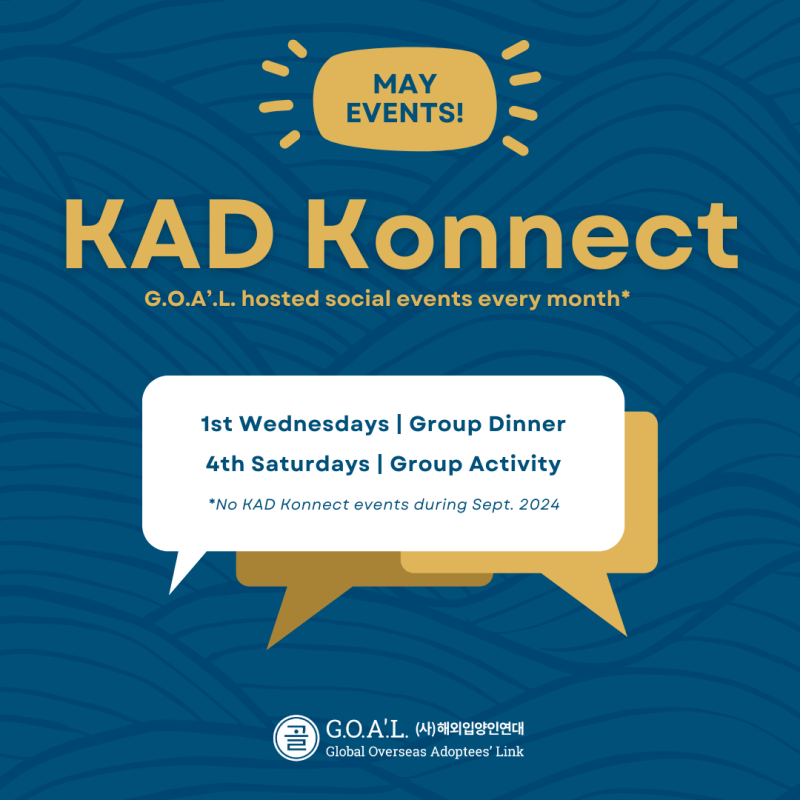
KAD Konnect May Events

Let’s Geoje!
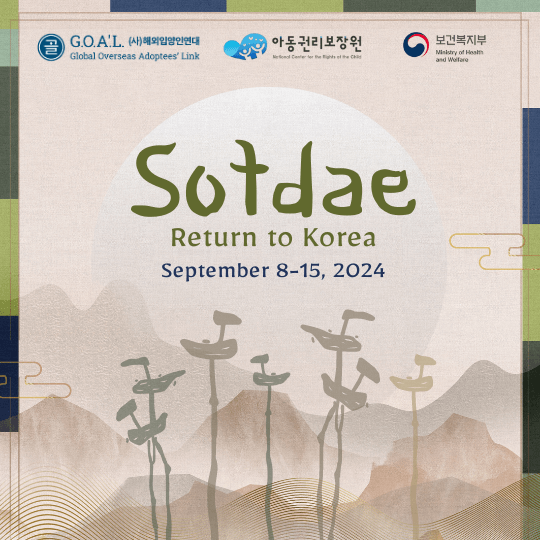
Sotdae 2024 – Motherland Tour
200,000+ adoptees in 15 countries ..
Since the 1950s, over 200,000 Korean children have been sent overseas for adoption. In recent years, adult adoptees have started to return to Korea in increasingly large numbers to search for their Korean birth families, seek connection to Korean identity, and learn about the language and culture.
Global Overseas Adoptees’ Link (G.O.A.’L.) was founded in 1998 by overseas Korean adoptees who returned to Korea. It soon became, and remains today, the only adoptee-led non-profit and NGO in Korea.

Secretary General
Kara rickmers.
Adoptee | Eng, Kor [email protected]
Kyeong Mi Paek
Korean-American | Kor, Eng
Dual Citizenship & F4 Visa
Korean | Kor, Eng [email protected]
Social Worker
Yoonduk lee.
Korean | Kor, Eng [email protected]
Office Manager
Dr. br chin.
Korean | Kor [email protected]

These partners, contributors, and donors help us maintain and improve the services we provide to our members.

Our website was sponsored by the Community Chest of Korea (designated donation by Korean Air) & Meritz Fire & Marine Insurance.
Welcome back,
Remember Me
- Commissioner
The Overseas Koreans Agency will be with the 7 million overseas Koreans.
Service Guide Information
Overview
Duties and Function
Location

Everything you need to know for your South Korean road trip (2024 edition)
By: Author Kris
Posted on Last updated: January 23, 2024
Are you planning a South Korea road trip? You came to the right place.
We would encourage you to explore South Korea by car.
There’s nothing wrong with the public transit system in cities like Seoul, it’s actually much better than what we’re used to at home.
Korea Train Express ( KTX) operated by Korail, offers reasonably good connections across South Korea.
But still, there’s nothing that can beat the freedom of having your own car.
You’re the master of your own schedule and you just need to load your bags into your trunk.
Taking the train often means that you will be dragging your bags up and down several flights of stairs. Yes, there’re elevators but they’re not always very easy to find.
So here we will share what you need to know about driving in Korea and how to do the perfect South Korean road trip.
There is a really good chance that this post contains affiliate links. If you click one of them, we may receive a small commission (for which we are deeply grateful) at no extra cost to you.
Table of Contents

South-Korea essentials
- If you want to score cheap flights to Seoul, click here.
- Here is an overview of all our South Korea articles.
- Since foreign credit and debit cards don’t always work, we advise you to bring some extra cash.
- Don’t lose time upon arrival at the airport and order your Korea travel SIM or portable WIFI device in advance so that it’s ready and waiting for you at the airport when you arrive.
- The most comfortable way to travel around Korea is by renting a car. However, if you plan to travel around by train, preorder your discounted Korea Rail Pass here.
- We found it easy to travel independently around South Korea. However, if you are looking to join an organized tour, take a look at Tourradar or read our post on how to choose the best Korea tour package.
- We prefer to stay in hotels while we are traveling. In this Korean travel blog post, we share a lot of nice hotels. However, South Korea has a lot of nice Airbnb’s and vacation rentals too. If this is the first time you will be staying in an Airbnb, you can enjoy a great discount by signing up through this link.
- Be sure to become a member of our Korea Travel Planning and Tips Facebook group. The purpose of this group is to help you plan an amazing vacation to Korea. You can ask questions and exchange tips with fellow travelers.
- Last but not least, make sure you have travel insurance.

South Korea Travel Tips
Here we will share some more South Korean travel tips.
What’s The Best Time To Visit South Korea?
May, September, and October are the best months to visit South Korea.
June, July, and August are rainier and hotter with temperatures reaching 25 to 30 degrees. Moreover, the risk of typhoons is also greater.
In May everything starts to bloom and in September and October, the autumn colors make the landscapes very photogenic.
We visited South Korea in April and had 2 rainy days over the course of 2 weeks and a half.
Money In South Korea
Cash is king for visitors. Koreans can swipe their cards everywhere but foreign cards are not always accepted.
There were many ATMs at Incheon airport but it took us at least an hour to find one where we could withdraw cash.
Most tourists were helping each other by pointing out other ATMs to their fellow tourists.
It seems all foreigners were having the same problems.
- The perfect Korea itinerary.
- Best things to do in Korea.
Once we had left the airport things didn’t get better. It was always a hit or miss with the ATMs we tried.
Most wouldn’t accept our cards, but some did. Usually, we never suggest bringing cash but it looks like it may be a good idea to bring some cash to South Korea.
And once you have found an ATM that gives you cash make sure to withdraw enough! We couldn’t use our credit cards for toll fees. We had better luck in restaurants and gas stations were our cards were usually accepted.
Book Attractions Online
It’s almost always cheaper to book your tickets for attractions online in South Korea. Most attractions offer discounts from 10% to 50% for tickets that have been bought online.
Here is an overview of the best-organized tours in Korea.
An organized tour saves you time and, moreover, the tour guide will enlighten you about the different sights you visit.
We partnered up with GetYourGuide , Klook, and Trazy for these activities.
GetYourGuide
We love GetYourGuide because they’re flexible. Sometimes your plans change last minute and then you want to be able to cancel your tickets and get your money back.
It’s also good to know that GetYourGuide has your back when the local tour operator doesn’t show up or cancels your trip.
GetYourGuide is a reliable platform where you can book thousands of tours anywhere in the world.
Check tours and tickets on GetYourGuide: Tours in Korea
Klook is a trustworthy travel company headquartered in Hong Kong that teams up with local operators to offer all kinds of travel experiences.
Check tours and activities on Klook: Klook
Trazy is another reliable and easy-to-use website for tours and activities in South Korea.
Check tours and activities on Trazy: Trazy
Safety In South Korea
We didn’t encounter any problems whatsoever (except getting cash :-)) during our 7 days in Korea but if you would you can call the travel hotline in 4 languages (Korean, English, Japanese and Chinese) 24/7.
Do I Need Travel Insurance For Korea?
Travel Insurance is something that can be overlooked when you prepare for your vacation. Certainly when you’re traveling to a safe and civilized country.
We didn’t get travel insurance for our first vacations.
A few years later we both took out new credit cards that came with travel insurance and relied on those. We know better now…
Overall, chances are slim that you will encounter any problems while traveling through a civilized country such as Korea. But when things go wrong in civilized countries, the medical costs can be high.
We learned it the hard way when we once had to visit a hospital in the United States.
The medical care was excellent but we had high out-of-pocket expenses as it turned out the insurance that came without credit cards didn’t cover these costs. It turned out we were underinsured.
Drawing up a travel insurance policy may seem expensive at first but it can potentially save you a significant sum, significantly more than the small insurance fee.
Good travel insurance, such as the one from SafetyWing and HeyMondo , covers things like medical expenses, trip cancellation, overseas medical costs, evacuation, baggage damage or loss, and theft.
Get a free quote now:

Our Road Trip In Korea
Here we share the best tips for your South Korean road trip.
Our Korea Road Trip Itinerary
Here you can find our 7 days Korea road trip itinerary.
As mentioned above you don’t need a car in Seoul.
- Day 1-2: Seoul
- Day 3-4 Gyeongju
- Day 5-6: Busan
- Day 7: Seoul
Read more about our South Korea self-drive itinerary here.
Driving In South Korea
Driving in South Korea may look like quite a challenge for foreigners but it’s actually a lot easier than we had expected.
South Korean roads are well maintained, often better than in Belgium.
The language may seem an obstacle at first but knowledge of Korean is not required to do a self-drive around South Korea.

Car Rental In South Korea
Renting a car in South Korea won’t be a problem for most tourists but there are some restrictions.
The most important thing to take care of before you leave for South Korea is your driving permit.
Here’s more important information about the rules to rent a car in South Korea.
South Korean car companies
Many international brands are present in the Korean market but there’re some local players as well. Hertz , which in South Korea is affiliated with Lotte rent-a-car, has the most locations.
We rented our car with Avis which is affiliated with AJ Rent-a-car.
Other major brands are Sixt , National , HI rent-a-car, and Jeju-OK rent-a-car . I couldn’t find the website of Hi rent-a-car.
Jeju has only one location on Jeju Island and as their website is in Korean only it’s best to book with them through Rentalcars.com . Here is more information on renting a car on Jeju Island.
It’s easy to compare rates and car models on rentalcars.com.
You’re often able to find some good deals and all bookings come with instant confirmation and free cancellation.
Check for prices and availability on Rentalcars.com:
Rental Cars
You don’t need a car in Seoul, because it’s much easier and cheaper to use public transport. We recommend picking up your car once you leave Seoul.
The best Seoul itinerary for first-timers and 39 of the best things to do in Seoul and the perfect 4 days Seoul itinerary. Here you find a complete guide about where to stay in Seoul.
We picked up our car in a location in the center of Seoul and the language barrier turned out to be challenging when we got offered a rate that was more than 10% of the rate that we had booked.
We finally resolved this by calling the Avis location at the airport who mastered English better and acted as an intermediary.
We used Google Translate a lot during our South Korean road trip. Make sure you have the app installed on your phone.

International Driver’s License Korea
An International Driving Permit is required if you want to rent a car in South Korea.
The permit shouldn’t be older than 1 year and needs to be issued by a country that has signed either the Geneva or the Vienna Convention (or both).
You need to present your driving license together with your international driving permit and your passport when you pick up your car and the driving license and international driving permit need to be issued by the same country.
Your rental agency may mention that the International Driving Permit needs to be issued by an embassy or consulate.
We read that in the confirmation mail we got from Avis and this confused us initially.
Don’t worry too much about this and just follow the steps that are valid in your home country.
In Belgium, you will be able to get the international driving permit at your local town hall.
Other Qualifications For Renting A Car In Korea
Most car rental agencies will require that the driver is 21 years or older and has at least 1 full year of driving experience.
This is not required by law and by comparing various rental agencies you may find some that are not as strict about age.
Picking Up Your car
Don’t forget to bring the following items when picking up your car:
- Make sure to bring both your international driving permit and your regular driving license. Both must have been issued by the same country.
- A credit card. This credit card must be in the name of the driver.
South Korea is officially still at war with North Korea.
Don’t worry, you won’t notice anything about this, but as a consequence, Google Maps and Waze are mostly useless.
Some people report that Waze works for them, we tested this and it worked smoothly initially until about halfway when Waze urged us to turn around and started guiding us back to where we came from.
We would advise you to either rent a car with a built-in GPS or install the local Naver Maps App (available for Android and iPhone ).
The Naver maps website is available in Korean only but the app is available in English and works perfectly (we used the Android version).
It looks very similar to any other GPS app you’re familiar with.

Local SIM card
A local SIM card comes in handy when you want to use the Naver app.
We initially thought this was the only reason we needed it but once we got the SIM we discovered other useful apps like the Seoul Metro app ( Android and iPhone ) and Mangoplate to find delicious restaurants.
You can order your sim cards upfront online or you can buy them upon arrival at the airport.
The possibilities to buy SIM cards once you have left the airport are limited.
KT has a SIM card office nearby Hongik University Station Exit 2 and you should be able to buy them in the 7-eleven stores in Myeoung-dong, Hongdae, Dongdaemun, Jongno or Haeundae.
Rates are lower online so we would recommend buying your SIM card upfront online.
If you want to go online with multiple devices you can use your local SIM card together with a mobile WIFI device: WIFI device

All major highways are turnpikes.
The good news is that the rates are on the low side.
We took local roads in some instances where we only had to cover small distances but for long trips, like Seoul to Busan, it is much faster to take the turnpikes.
South Korea is mountainous. Highways sometimes seem like an endless chain of tunnels and bridges while the local roads meander around every hill.
Toll fees can be paid using credit cards, cash or the hi-pass system.
We initially tried to pay with our credit card but both our American Express and our Mastercard were denied.
Make sure to bring cash if your credit card is not issued in South Korea.
You can plan your routes in the Naver Maps app (available for Android and iPhone ) to see the toll fee. The fee that Naver Maps showed was always the exact fee we had to pay.
How It Works
You could verify if your rental car comes with a hi-pass device.
Don’t just trust the hi-pass logo on eg. your rearview mirror.
There needs to be a card in the device for it to work. We had driven through several hi-pass lanes before we finally discovered that there was no card in the device.
We didn’t think of it when we picked up our car but I would suggest that you ask them if you can use the hi-pass lanes or not.
If you can use the hi-pass lanes all you need to do is follow the blue lanes and slow down near the toll gates. Your toll will be registered and your car rental agency will send you the bill for the toll afterward.
If you don’t have the hi-pass device you should avoid the blue lanes and pick any of the other toll booths where you will either get a card that shows where you entered the highway or will have to pay using cash or credit card.
Make sure you have cash as foreign credit cards will most often not work.
What Can Go Wrong
You enter the highway and the toll gate does not provide a card : Some modern versions of the toll gates no longer offer cards when they notice that you have a hi-pass system.
What they fail to notice is that your hi-pass system does not contain a card.
That’s how we once ended up without a card to prove where we entered the highway.
14 amazing day trips, day tours and weekend trips from Seoul.
What you can do in this case is to write down the name of the entry gate together with the amount you should have to pay that you can find on your GPS.
We were getting ready to provide this information on exit but we didn’t even need to do so as we were automatically charged the correct price.
Not sure how this works so I suggest taking note of the entry gate just in case.
You could also drive through the blue lane by accident . Or on purpose, because you think you have the hi-pass device only to find out later there’s no card inside (as we did :-)).
If you accidentally used the blue lane on entry you can correct your fault on exit and just provide them the name of the entry gate you used.
If you accidentally used the blue lane on the exit and missed a payment you shouldn’t worry too much.
3 days in a row we were using the blue lane convinced as we were that we had the hi-pass device.
We contacted Avis about this and they advised us to use the other lanes from now on.
We didn’t need to take any action to correct our error, they would just send the bill for these fees afterward.
And so it happened that a few weeks after our holiday we got a bill for € 9 in our mailbox.
This was the exact toll amount we had to pay, with no additional fines, and no extra handling fee from Avis.

Speed Cameras
The quality of the highways is excellent but don’t think about speeding because speed limits in Korea are usually 100 km/h or less and all roads in Korea are literally littered with speed cameras and CCTV.
Luckily most GPS systems will inform you of upcoming cameras and even if you don’t have a GPS of your own you can follow the Koreans who seem to make a sport of driving too fast to hit the break last-minute at every speed camera.
In addition to the cameras, you will also come across average speed zones, the only highway sections where nobody speeds.

Driving Style
Overall, I found the Korean driving style to be courteous and relaxed.
Based on older articles I read when I was preparing for my Korean road trip this used to be different but has improved significantly over the last years due to the strict enforcement and omnipresent CCTV coverage.
Still, there’re some things you should be aware of.
We often noticed how red lights are ignored, certainly after dark and especially by buses and trucks. Make sure to slow down at intersections even if the lights are on green.
What I disliked most was driving on the two-lane roads. I mentioned earlier how Koreans are always speeding and speeding limits are absurdly low, certainly on these types of roads.
If you stick to the speed limit, like I tried to do most of the time, you will have a long line of vehicles behind you.
Not fun at all and certainly not as some Koreans tend to be impatient.
Don’t let this scare you. Most of the time you will be driving on highways with little traffic that have 4-lanes.

Some Important Traffic Rules
South Koreans Drive on the right side of the road
Cell-phones can be used handsfree only
Safety belts are obligatory for all passengers
Right turn on red is allowed except if there is a red-arrow traffic light
Left turns on intersections are only allowed when there is a green arrow (see photo above)
Bus lanes are indicated by blue lanes
So we hope these tips will encourage you to do a road trip to South Korea.
Don’t be scared by the stories you find on the internet. Renting a car and driving in South Korea is fun and easy with these tips.
Did you ever drive in South Korea and do you have other tips? Please share them in the comments.
If you like this article, pin it

Monday 10th of June 2019
South Korea is such an amazing travel destination for me. I have been there for a couple of time.
I loved your honest and resourceful travel guide, photos are mind-blowing.
Tuesday 18th of June 2019
Thanks for the compliment.
Tuesday 12th of March 2019
Hello, nice story.
I am planning to driving from Seoul to Busan in 5 days. I want to make a stop at Gyeongju and Andong, however I was wondering is there any difficulty with parking your car? As i cannot read any signs I do not know if I have to pay for parking or not. What where your experiences?
Many thanks!
Both Gyeongju and Andong have large parking lots where you can park your car for free. At Gyeongju there's a large parking at the Donggung Palace and more parking a bit further across the street. Most other sights are within walking distance from the Palace. Andong has free parking with a shuttle to the folk village. We didn't use our car in Seoul, you don't really need it, the metro is excellent. Our hotel in Busan had free parking (as did all our hotels in South Korea) and we never had to pay for parking at any of the sights we visited. We never parked in public parkings but we noticed that they accepted all major credit cards (or at least Visa and MC). I'm not sure how parking meters would work. We didn't see many of them.
Parking enforcement is not the strongest point in South Korea. Cars were parked in the middle of intersections, on bike lanes and footpaths. Everybody tries to park as close as possible, this often results in chaotic situations and huge traffic jams nearby popular temples and parks. If you don't mind stretching your legs once in a while pick one of the many empty parking spots 100 meters from your destination and have a good laugh as you slalom through the sea of stationary cars as you make your way to the entrance.
Safe travels, Kris
about dubai frame
Sunday 30th of December 2018
Fantastic blog! Do you have any tips and hints for aspiring writers? I'm planning to start my own site soon but I'm a little lost on everything. Would you advise starting with a free platform like Wordpress or go for a paid option? There are so many choices out there that I'm completely confused .. Any tips? Thanks a lot!
Monday 31st of December 2018
Thanks for the nice comments. I was familiar with Wordpress so I opted for this platform straight away. Overall it's very user-friendly although some tech-knowledge comes in handy every once in a while. I really cannot compare with any of the paying platforms. I suppose these might be better options if you support. There're a lot of very active support forums regarding Wordpress but when things go wrong it's a matter of trial and error sometimes to get things back to work. Good luck with your future blog and Happy New Year!
TOUR GONGBANG CO.,LTD
Korea travel mate, where travel is made for you.
Local Tours
[1N2D] 2024 Boryeong Marathon Tour
[1N2D] Love Festival & Coastal Charms Tour: Namwon to Boryeong
[1 D ay T our ] Train + Legoland
[1N2D] Yeongju Package Shopping Tour (Bus)
[1DAY TRIP] Yeongju Taxi Tour (KTX)
[1DAY TRIP] Gimpo & Ganghwa
[1N2D] 2024 Eumseong Pumba Festival
What Our Travelers Say
Become A Korea Travel Mate Member to Receive Our Newsletter
SNS Platforms
1 . Is Korea Travel Mate a Travel Agency?
Tour Gongbang Co., Ltd. or (주)여행공방 (commonly known as Korea Travel Mate among foreigners) is a registered Korean Travel Agency based in Yongsan, Seoul.
2 . Are Koreans allowed on trips?
Korea Travel Mate tours are primarily supported by the Korean government for foreigners. As a result, we will be unable to accommodate your Korean friends. However, we do occasionally organize tours in which Koreans can join. This information is always available in the signup form for each trip.
3 . How to pay for the trips?
Payment Options:
1. wise (transfer payment) : [email protected] / account ending 7909 / tour gongbang co.,ltd, in case of a refund we would have to pay you back in cash or through a korean bank account (we are not able to use w ise fo r money transfers, only for receiving). thank you for your understanding and cooperation., 2. local bank transfer : 우리은행 (woori bank) acct. no. 1002-341-827909 강호선 (name of ceo), you can make a cash deposit at any bank with your passport. or transfer money through internet banking., international wire transfers will not be accepted, if you are unable to complete the following alternatives, consider having a friend pay for you..
4 . Do you provide only weekend trips?
Korea Travel Mate trips are mainly operated on weekends either a day trip or an overnight trip. However, we occasionally run trips on weekdays as well.
5 . Are there overseas tours too?
About once or twice a year, Korea Travel Mate ventures out of Korea to take you on some great travel adventures to neighboring countries, such as Japan.
6. Who can join the trips?
Any foreigners who are living in Korea or traveling to/in Korea.
7. Do you provide private tour packages?
Yes, private tours can be organized and run while keeping Korea Travel Mate's policies and strategies in mind. As a result, if you have a community with whom you would like to have your own customized tour, you are only a phone call, email, or message away from getting it started.
8. Do you provide private rooms if needed?
Yes, on most of the trips private rooms can be provided for the extra cost that is mentioned in the signup form of the specific trip.
9. Do you provide Halal or Vegetarian/Vegan food?
We always do our best to provide food that suits the specific needs of each individual, however, please keep in mind that Halal meat is not provided on our travels since we travel to rural locations where Halal meat is not available, also it is not in our tour budget. If you require Halal, please consider yourself a vegetarian on our trips. Where feasible, we do our best to cater to everyone's needs but as it is always indicated in our signup forms "at some points you may be obliged to pick and choose from what is supplied".
- South Korea Tours
- Tour Operators
Top Tour Operators and Travel Agencies in South Korea 2024/2025
Top Tour Operators and Travel Agencies in South Korea. Below you will find 16 of the best tour operators and travel agencies in South Korea offering in total 49 tours and holidays through-out South Korea. Combined they have received 57 customer reviews and an average rating of 5 out of 5 stars. The top tour activities offered in South Korea are: Sightseeing, attractions, culture and history, Adventure and sport & Beach, romance, getaways and relaxation.
- Tours in South Korea
- South Korea Travel Guide
- Best Time to Visit South Korea
15 Tour Operators in South Korea with 57 Reviews

The Dragon Trip
- Address Rm. 202, Building 4, 689 Xinhu Rd, Baoshan District, Shanghai, PR China , Shanghai, China
- Response Rate 100%
- Response Time 3 hours

- Best-in-Class Top 5% of companies
- Excellent Service Top 10% of companies
- Superior Service Top 15% of companies

G Adventures
- Address G Adventures Ltd, 60 Bastwick Street, London, England
- Response Rate 90%
- Response Time 2 hours

On The Go Tours
- Address 3 Shortlands, 4th floor, Office 19, Hammersmith, England
- Response Rate 88%
- Response Time 1 hour

Intrepid Travel
- Address 380 Lonsdale Street, Melbourne, Australia

Exodus Travels
- Address Grange Mills, Weir Road, London, England
- Response Rate 85%

Encounters Travel
- Address Leigh House, Varley Street, Leeds, England
- Response Rate 94%

- Address 2461 FM 778, Mineola, USA
- Response Rate 95%

Indus Travels
- Address 233, 11951 Hammersmith Way, Richmond, Canada
- Response Rate 98%

- Address Soi Pridi Banomyong 26, Bangkok, Thailand
- Response Rate 52%

I Love Seoul Tour
- Address #804, 8F Koreana Hotel bldg, 135, Sejong-daero, Jung-gu, Seoul, Korea, 04519, Seoul, South Korea
- Response Rate 71%

- Address Suite 222, 3-9 Spring Street, Chatswood NSW 2067, New South Wales, Australia
- Response Rate 99%

- Address #3702, Lotte Castle President, Mapodaero 109, Mapo-Gu, Seoul, Korea, Seoul, South Korea

US Travel Korea
- Address #1110, 92, Saemunan-ro, Jongno-gu, Seoul, South Korea

- Address 40 Cheonggyecheon-ro, Da-dong, Jung-gu,, Seoul, South Korea
- Response Rate 47%
Traveling to South Korea? Chat with a local travel specialist in South Korea who can help organize your trip.

South Korea Tour Reviews
- Mei Lin Millicent Yeo
- South Korea budget tours
- Eco tours in South Korea
- South Korea guided tours
- South Korea family tour packages
- South Korea luxury tours
- South Korea private tours
- South Korea small group tours
- South Korea solo trips
- South Korea tailor-made vacation packages
- South Korea tours for senior citizens
- South Korea tours for young adults
- South Korea group tours
- South Korea last minute deals
- South Korea travel deals
Popular Destinations
- Seoul Tours
Upcoming Departures
- Spring 2024/2025
- Summer 2024/2025
- Winter 2024/2025
- August 2024
- September 2024
- October 2024
- November 2024
- December 2024
- January 2025
- February 2025
- August 2025
- September 2025
- October 2025
Best price guaranteed - No booking fees
Sign-in to unlock instant trip discounts. Create wish lists and save up to USD 1,500.

- + 91 98111 90137
EPIC 8 Days Korea itinerary for First-timers (2023)
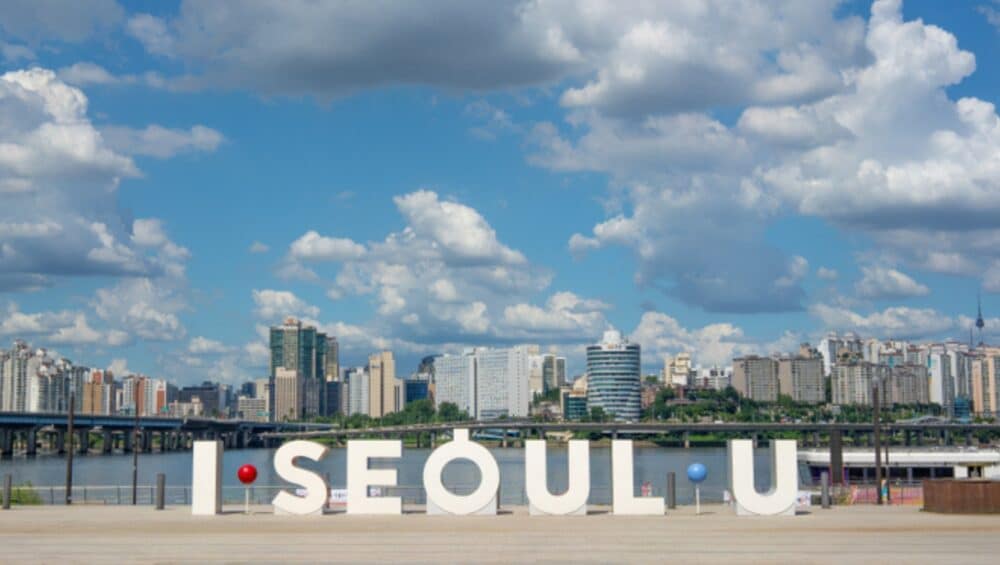
We, at Dynasty Korea, present an 8-day itinerary for a trip to Korea, covering some of the most captivating destinations across the country. Our itinerary includes visits to Seoul, Busan, and Jeju, with an emphasis on exploring the top attractions and experiencing the rich cultural heritage that Korea has to offer.
Day 1: Departure from Delhi International Airport
On day one, we depart from Delhi International Airport at 22:30, ready to embark on our Korean adventure.
Day 2: Arrival in Seoul
We arrive at Incheon International Airport at 09:45 on Day 2, where we meet our guide and transfer to Seoul. Our first day in Seoul begins with a visit to Bukchon Hanok Village , a traditional Korean village that has been preserved to showcase the architecture and culture of the Joseon Dynasty. We then move on to Insadong Arts and Crafts Market , where we can find unique and traditional Korean souvenirs. Next, we explore Cheonggyecheon Stream, a beautiful urban oasis that stretches for 10km and has become a popular spot for both locals and tourists. Finally, we end the day by visiting the N Seoul Tower , one of the city’s most famous landmarks, where we can enjoy panoramic views of the city at night. We have dinner at an Indian restaurant and stay overnight at the Ibis Insadong Hotel or similar.
Read more related blog: Seoul Travel Tips: Make the Most Out of Your Trip
Day 3: DMZ Tour and Nami Island
Day three starts with breakfast at the hotel, followed by a visit to the Demilitarized Zone (DMZ) and Joint Security Area (JSA), where we can see the border between North and South Korea. We then head to Nami Island , a beautiful half-moon-shaped island that has been used as a filming location for several Korean dramas. We also visit Petite France , a small French village in Korea that has been recreated to resemble a European town. We have dinner at an Indian restaurant and stay overnight at the Ibis Insadong Hotel or similar.Day 4: Sightseeing in Seoul
After breakfast at the hotel, we visit Gyeongbokgung Palace , the largest and most iconic royal palace in Korea. We also pass by the Blue House, the official residence of the President of South Korea. We then visit the Museum of Korea War Memorial, which provides an insight into the history of the Korean War. We also visit Jogyesa Temple , one of the most significant Buddhist temples in Korea, and end the day with a relaxing Han River Cruise tour. We have dinner at an Indian restaurant, return to the hotel, and stay overnight.
South Korea Tour Package:
KOREA CULTURE HERITAGE TOUR 7 DAYS
KOREA EXPRESS 6 DAYS
Day 5: Busan
After breakfast at the hotel, we take the KTX to Busan. Upon arrival, we visit Gamcheon Culture Village , a colorful and picturesque village that has become a popular tourist attraction. We then move on to Jagalchi Market, Korea’s largest seafood market, where we can sample some of the freshest seafood in the country. We then visit Hedong Yonggungsa Temple , a scenic temple located on a cliff overlooking the sea, and finally, we visit Haeundae Beach & Dalma Road , one of Busan’s most famous beaches . We have dinner at an Indian restaurant and stay overnight at the Ibis Ambassador Busan Haeundae Hotel or similar.
Day 6: Jeju Island
After breakfast at the hotel, we take a flight to Jeju Island, known for its natural beauty and stunning landscapes. Our first stop is the Jeju Folk Village Museum, which showcases the traditional lifestyle and culture of the Jeju people. We then visit Seongsan Ilchulbong Peak , a UNESCO World Heritage Site and a volcanic crater with breathtaking views. Next, we head to Manjanggul Cave , one of the longest lava tubes in the world, and finally, we visit Cheonjeyeon Falls, a stunning three-tier waterfall surrounded by lush vegetation. We have dinner at an Indian restaurant and stay overnight at the Ramada Encore by Wyndham Jeju Seogwipo East or similar.
Day 7: Exploring Jeju Island
After breakfast at the hotel, we start our day by visiting the Teddy Bear Museum , a unique museum dedicated to teddy bears from all around the world. We then move on to O’Sulloc Tea Museum, where we can learn about the history and culture of Korean tea and sample some of the best teas in the country. Next, we visit Jeju Loveland, a quirky theme park that showcases a collection of erotic sculptures and artworks. Finally, we end the day with a visit to Jeju Shinhwa World, a massive entertainment complex that includes a casino, a theme park, and luxury hotels. We have dinner at an Indian restaurant, return to the hotel, and stay overnight.
Day 8: Departure from Jeju Island
After breakfast at the hotel, we transfer to Jeju International Airport for our return flight to Delhi. We depart at 13:10 and arrive in Delhi at 20:00, bringing our unforgettable Korean adventure to a close.
In conclusion, our 8-day itinerary offers a comprehensive and exciting tour of Korea’s top attractions, with a perfect blend of culture, history, and natural beauty. Our itinerary is designed to cater to the interests of all travelers, making it an ideal option for families, friends, or solo travelers. With the help of our experienced guides and comfortable accommodations, you can sit back, relax, and enjoy the beauty of Korea.
Discover our exclusive South Korea Package for an unforgettable trip to this stunning destination! Click here to book now.
Follow us on Instagram
Dive deeper into the world of South Korea travel by delving into additional travel blogs
South Korea Tourist Visa for Indians (Requirements And Visa Fees)
Where To Stay In Seoul With Family
10 Best Cities to Visit in South Korea
Best Places To Go Shopping in Seoul
Your email address will not be published. Required fields are marked *
Save my name, email, and website in this browser for the next time I comment.
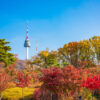
DYNASTY KOREA CO. LTD #32-23 Bukahyeon-ro Seodaemun-gu, Seoul, South Korea T : +82-2-736-0338 MB : +82-10-6850-0338
DYNASTY HOLIDAYS PVT. LTD. 212-A Crown Height, Sector 10, Rohini Delhi 110085 T : +91-9811190137 +91-9811900137 E : [email protected]
Follow Us to stay Updated!
- Photo Gallery
- Privacy Policy
- Terms of Services
- Payments and Cancellation
- Feedback & Complaints
Destinations
- Gyeonggi-Do
- Chungcheong-Do
Popular Attractions
- N Seoul Tower
- Bukchon Hanok Village
- Nami Island
- Gyeongbokgung Village
- Jeju Island
- Haeundae Beach
- Haedong Yonggungsa Temple
- Changdeoggung

Seoul strives to attract more foreign tourists
City government showcases unique attractions to international travel agencies
The Seoul Metropolitan Government is taking proactive steps to entice more international tourists, inviting officials from overseas travel agencies to craft tailored tourism products targeting the younger generations.
According to the city government and Seoul Tourism Organization, Monday, six officials representing overseas travel agencies from five countries — China, Malaysia, Singapore, Thailand and the Philippines — visited Seoul from April 29 to May 2 for a preliminary exploration tour of the city.
The trip was part of a strategic initiative by the city government aimed at fostering B2B partnerships with major international travel agencies. This aims to showcase the city’s unique attractions while providing active backing for the creation and implementation of travel agencies’ tourism products within Seoul.
Since 2016, the city has signed business agreements with 45 travel agencies from 22 countries, including key markets in the tourism sector like China, Japan and Southeast Asia, as well as emerging regions such as Europe, the U.S. and the Middle East.
This strategic maneuver has laid the groundwork for a robust collaboration framework aimed at bolstering Seoul's global tourism appeal and ensuring its competitiveness in the international tourism market.
Following the recent inaugural Seoul Fam Tour, the city plans to host two additional pre-exploration tours in June for travel agencies from Europe, the U.S. and Middle Eastern nations, and in September for those from Taiwan, Hong Kong and Japan.
The first preliminary tour of the year focused on key locales such as Seongsu-dong in Seongdong District as well as Yongsan, both experiencing a surge in popularity among the influential 20s and 30s demographic, driving the city’s tourism trends.
During their tour, the participants also visited the Seoul Hiking Tourism Center near Mount Bugak and attended Seoul Festa 2024, which is one of the city’s representative spring festivals. These experiences showcased Seoul's diverse and engaging tourism offerings, ranging from urban hiking experiences to immersive cultural festivities.
Seoul Hiking Tourism Center, located on Samcheong-dong Street in Jongno District, caters to both local and international tourists by offering comprehensive hiking tour information in multiple languages, such as Korean, English, Chinese and Japanese. Rental services for hiking gear are also provided, ensuring a seamless and enjoyable hiking experience without the need for prior arrangements.
Seoul Festa stands out as the city's premier spring festival, spanning iconic tourism locations such as Seoul Plaza, Gwanghwamun Plaza, Myeong-dong and Jamsil Hangang Park. This year's festival commenced on May 1 and ran until Monday. Open to both local residents and international visitors, the festival offers a vibrant immersion into Korean culture across diverse realms such as beauty, fashion, K-pop, gastronomy and art.
After the tour, travel agency representatives exchanged insights on emerging tourism trends and suggested enhancements for the city’s tourism infrastructure. Each travel agency reportedly intends to unveil distinctive tourism offerings in Seoul, drawing inspiration from their experiences on the preliminary tour.
Seongsu-dong emerged as a standout tourist destination according to multiple travel agencies. Despite the intermittent operation of pop-up stores, the area's vibrant street atmosphere with a diverse range of pop-up establishments was highlighted for its appeal to a wide spectrum of tastes and age groups.
Additionally, officials from travel agencies proposed enhancements for tourism in Seoul. One suggestion was the installation of information signs at tourist spots with numerous alleys to improve visitor convenience. They also recommended increasing the number of trash cans to promote cleanliness and a pleasant tourism experience within the city.
"We are committed to ongoing collaboration with leading international travel agencies to develop distinctive tourism offerings in Seoul that resonate with global audiences," said Kim Young-hwan, the director general of the Tourism and Sports Bureau at the city government.

- Car Rentals
- Airport Transfers
- Attractions & Tours
- Flight + Hotel
- Destinations
- Trip.com Rewards

Korea International Furniture & Interior Fair 2024 | Korea International Exhibition Center (KINTEX)
The upcoming Korea International Furniture & Interior Fair (KoFurn 2024) in Seoul, South Korea, is set to showcase a wide range of high-quality products for the interior design industry. From August 29 to September 1, 2024, the event will take place at the Korea International Exhibition Center (KINTEX) located at 217-59 Kintekseu-ro, Songpo-dong, Ilsanseo-gu, Goyang-si, Gyeonggi-do. KoFurn 2024 will present a diverse array of offerings, including Wall & Floor Products, Windows and Doors Products, Blinds, Lighting, Indoor Landscape Architecture, Floriculture Decoration, Indoor Fountains, and Interior Related-products. With its focus on the latest trends and innovative designs, the fair aims to provide a platform for industry professionals and enthusiasts to discover and connect with leading suppliers and manufacturers. KoFurn 2024 promises to be an exceptional event, bringing together the best of the furniture and interior design sectors. Attendees can look forward to exploring a wide range of products and gaining valuable insights into the evolving world of interior design.
Provided by PilotLevi | Published May 10, 2024
Are you interested in Korea International Furniture & Interior Fair 2024?
Recommended products for korea international furniture & interior fair 2024 | korea international exhibition center (kintex), sono calm goyang, more contents about goyang-si.
- Customer Support
- Service Guarantee
- More Service Info
- Website Feedback
- About Trip.com
- Terms & Conditions
- Privacy Statement
- About Trip.com Group
Other Services
- Investor Relations
- Affiliate Program
- List My Property
- Become a Supplier
- Election 2024
- Entertainment
- Newsletters
- Photography
- Personal Finance
- AP Investigations
- AP Buyline Personal Finance
- AP Buyline Shopping
- Press Releases
- Israel-Hamas War
- Russia-Ukraine War
- Global elections
- Asia Pacific
- Latin America
- Middle East
- Election Results
- Delegate Tracker
- AP & Elections
- Auto Racing
- 2024 Paris Olympic Games
- Movie reviews
- Book reviews
- Personal finance
- Financial Markets
- Business Highlights
- Financial wellness
- Artificial Intelligence
- Social Media
Arrested US soldier to be held for two months in Russia on theft charges
FILE - A view of the bridge connecting the Russky Island and Vladivostok, in Russia’s far east, is seen on Aug. 26, 2023. An American soldier has been arrested in Russia and accused of stealing. That’s according to two U.S. officials who spoke to The Associated Press. The soldier, who is not being identified, was stationed in South Korea and was in the process of returning home to the United States. Instead, he traveled to Russia. According to the officials, the soldier was arrested late last week in Vladivostok. It was unclear Monday, May 6, 2024, if the soldier is considered absent without leave, or AWOL. (AP Photo/Alexander Khitrov)
- Copy Link copied
WASHINGTON (AP) — The U.S. Army soldier arrested in Russia last week was being held in a pretrial detention facility, the Army said Tuesday. Russian reports said he would be held for two months pending an investigation.
Staff Sgt. Gordon Black flew to Vladivostok, a Pacific port city, to see his girlfriend and was arrested after she accused him of stealing from her, according to U.S. officials and Russian police.
The Army confirmed Tuesday that he had not sought clearance for the international travel and it was not authorized by the Defense Department. Under Pentagon policy, service members must get clearance for any international travel from a security manager or commander and that was not done.
The State Department strongly advises U.S. citizens not to go to Russia, and given the war in Ukraine and ongoing threats to the U.S. and its military, it is extremely unlikely he would have been granted approval.
The regional branch of the Russian Interior Ministry said in a statement Tuesday that Black and his girlfriend had a conflict and she reported him to the police, claiming that she found cash missing after he stayed with her.
The statement said Black was arrested at a hotel in Vladivostok.
Russian media reports quoted Elena Oleneva, a spokesperson for Vladivostok courts, as saying the city’s Pervomaisky District Court on Friday ordered Grant held in custody until July 2. He faces up to five years in prison if convicted.
The U.S. Army is also conducting an administrative investigation into what happened.
Black was on leave and in the process of returning to his home base at Fort Cavazos in Texas from South Korea, where he had been stationed at Camp Humphreys with the Eighth Army. The U.S. officials said Black, who is married, met his girlfriend in South Korea. The officials spoke on condition of anonymity to discuss personnel details.
“Official and leave travel is currently restricted pursuant to the DoD Foreign Clearance Guide.” said Cynthia Smith, an Army spokeswoman, adding that “There is no evidence Black intended to remain in Russia” after his leave time ended.
Smith said Black enlisted in the Army in 2008, and deployed to Iraq from October 2009 through September 2010, and to Afghanistan from June 2013 until March 2014. He is an infantry soldier.
According to Smith, Black signed out for his move back home and, “instead of returning to the continental United States, Black flew from Incheon, Republic of Korea, through China to Vladivostok, Russia, for personal reasons.”
According to the U.S. officials, the Russian woman had lived in South Korea, and last fall she and Black got into some type of domestic dispute or altercation. After that, she left South Korea. It isn’t clear if she was forced to leave or what, if any, role Korean authorities had in the matter.
Smith said that an official from the Russian Interior Ministry informed the U.S. Embassy in Moscow on Friday that Black was arrested on Thursday in Vladivostok, “for theft of personal property.” The embassy and Eighth Army notified Black’s family of his arrest.
Russia is known to be holding a number of Americans in its jails, including corporate security executive Paul Whelan and Wall Street Journal reporter Evan Gershkovich. The U.S. government has designated both as wrongfully detained and has been trying to negotiate for their release.
Others detained include Travis Leake , a musician who had been living in Russia for years and was arrested last year on drug-related charges; Marc Fogel, a teacher in Moscow, who was sentenced to 14 years in prison, also on drug charges; and dual nationals Alsu Kurmasheva and Ksenia Khavana .
The arrest comes less than a year after American soldier Travis King sprinted into North Korea across the heavily fortified border between the Koreas. North Korea later announced that it would expel King , who was returned to the U.S. He was eventually charged with desertion.
실시간 주요 뉴스 PUSH 알림서비스를 구독할 수 있습니다.

korea joongAng daily
Home > culture > food & travel.

Korea welcomes 3.4M tourists in Q1, industry ‘nearly fully recovered’ from Covid
![overseas trip in korean Foreign travelers in Gwanghwamun, central Seoul, over the weekend. [YONHAP]](https://koreajoongangdaily.joins.com/data/photo/2024/04/29/77a77f80-f65c-43e9-a901-15f330d5a17a.jpg)
Foreign travelers in Gwanghwamun, central Seoul, over the weekend. [YONHAP]

More in Food & Travel
From Manila to Budapest, Korean cultural festivals ignite global interest
Release your inner kid with these Children's Day activities
Travelers collect gift bags, coupons as gov't launches Welcome Week
Everland's gardens bloom with flowers and visitors this spring
Related Stories
BTS's ARMY protests gov't move to investigate HYBE for chart rigging
Korea to throw money at content industry, Paris Olympics to boost culture
Culture Ministry to increase funding for art projects, support more artists next year
President pushes through his pick for culture minister
Ministry of Culture to host New Year's concert online on Wednesday
You might also like

To write comments, please log in to one of the accounts.
Standards Board Policy (0/250자)


IMAGES
VIDEO
COMMENTS
Current Requirements To Travel To Korea In 2024. This part of the South Korea travel guide is for tourists. If you plan to travel for business, employment, or other reasons, check your nearest Korean embassy for the latest travel requirements. Most of the restrictions and requirements for travelling to Korea have now been scrapped.
4. Take advantage of Korea's world-class public transportation. Korea's subways, trains and buses are clean, convenient and efficient. It can sometimes seem like a new station is added to the Seoul metro every month, and the rail and intercity bus networks will take you to every corner of the country.
4 nights in Seoul; 2 nights in Busan; 3 nights on Jeju Island; Start your trip in Seoul. For a special family experience, we could arrange many authentic activities to help you delve into Korean history, culture, and food. For example, experience a private K-pop dancing class and shoot a video, explore the DMZ tunnels with a guided tour, indulge in a cooking class, and spend a night at a ...
High school exchange programs in Korea fulfill academic requirements in your home country and are a great way to integrate into high school life with other Korean teens. Summer: Summer immersion programs usually combine learning and travel with a group of other high schoolers from around the US. Programs can last several weeks to several months ...
Enroll in the Smart Traveler Enrollment Program (STEP) to receive security messages and make it easier to locate you in an emergency. Call us in Washington, D.C. at 1-888-407-4747 (toll-free in the United States and Canada) or 1-202-501-4444 (from all other countries) from 8:00 a.m. to 8:00 p.m., Eastern Standard Time, Monday through Friday ...
The cost of study abroad programs in South Korea can vary depending on if you enroll through a program provider or directly through a university. Generally, direct enrollment tuition fees range between $4,350 to $6500 USD per semester, while third-party program provider fees range between $5,000 - $10,000 USD.
15. Drinking cup sizes. One thing that was very difficult for me to get used to in Korea was the size of the drinking cups. Americans love big drinking cups, but in Korea, the average sized drinking cup fits in your palm. It's like kiddie cup size. 16. Soju. Soju is the preferred alcoholic beverage in Korea.
11. Korea Isn't Cheap. Expenses in Korea aren't quite as scary as Western Europe in summer but this isn't Thailand either, so you need to be prepared to spend a little more. Hostels will cost at least $15 USD/night but usually a bit more, and proper meals will start at around $8.
Korean Seasons Guide. The best time to visit South Korea is during the warm spring or fall seasons. The weather is mild and clear, there's a range of festivals and seasonal activities to enjoy, and you can travel to Korea comfortably. The best months to visit are April, May, September, and October.
Let us help take away the stress of planning where to go and how to get there while ensuring you don't miss out on anything along the way! Book a Tour. Book tours in Korea with the #1 Korean Travel Agency & Tour Operator in Seoul! FREE hotel pickups + Best Guides, experiences & service [SEE TOURS]
Visa: Most travelers will need a K-ETA (Korean Electronic Travel Authorization), applied for at least 72 hours before departure.If you needed a visa before, you'll need a K-ETA now. Note that from April 1, 2023, to December 31, 2024, passport holders from 22 countries, including the US, UK, Canada, and several EU nations, can visit visa-free - no K-ETA required!
Deodorant: Pack a stick of your favorite. Travel Toiletry Bag: These are nice to hang in the bathroom while traveling. Towels: People often use smaller towels or hand towels here, so you may want to bring one. Bedsheets: The sheets here may not be as soft as what you're used to, so you could bring a set from home .
Look for things about the Joseon dynasty and the Korean War if you want something specific to focus on. A statue of the man, the myth, the legend — King Sejong. 3. Watch some Korean dramas, movies, or K-pop music videos. This is totally NOT necessary, but, hey, I love both of these things, so I'm biased.
Book a fully-organized trip with the best tour companies in South Korea and let the tour operator take care of everything for you. Check out the tour details and read 63261 reviews from our customers to help you choose the perfect tour for you. View all South Korea Tours.
⭐️G.O.A'.L. invites you to our 2024 cultural trip "Let's Geoje!" - free to all adoptee G.O.A'.L. members! ... 200,000+ Adoptees in 15 Countries. Since the 1950s, over 200,000 Korean children have been sent overseas for adoption. In recent years, adult adoptees have started to return to Korea in increasingly large numbers to search ...
Our travel checklist for Korea will help you plan your trip step by step to ensure you have the best possible trip, and includes a free printable. ... The only places you can draw cash using a credit or debit card from outside South Korea are from an 'International Automatic Teller Machine (ATM)'. International ATMs have a global ATM logo ...
Korea Travel Budget. If it's your first time visiting Korea, it might be hard to estimate your overall travel budget. Subsequently here is a suggested average budget for a trip to Korea including accommodation, transportation, and food. Accommodation. - Guest House (Bunk bed): $20~$40/night.
Haedong Yonggungsa Temple. Take the Blue Train or Sky Capsule from Cheongsapo Station (청사포정거장) Haeundae Beach. Gwangalli Beach. Day 6 - Gangnam (Lotte World) Day 7: day trip outside of Seoul (DMZ, Suwon, etc) Other things to know when planning for one week in South Korea.
The Overseas Koreans Agency will be with the 7 million overseas Koreans. FAQ . Service Guide Information. Learn more. Overview . Learn more. Duties and Function. Learn more. Location . Learn more. Main Office 34F ~ 36F, 241, Incheon tower-daero, Yeonsu-gu, Incheon, Republic of Korea Tel : +82-32-585-3100. Service and support center for overseas ...
Our Road Trip In Korea. Here we share the best tips for your South Korean road trip. Our Korea Road Trip Itinerary. Here you can find our 7 days Korea road trip itinerary. As mentioned above you don't need a car in Seoul. Day 1-2: Seoul; Day 3-4 Gyeongju; Day 5-6: Busan; Day 7: Seoul; Read more about our South Korea self-drive itinerary here.
Tour Gongbang Co., Ltd. or (주)여행공방 (commonly known as Korea Travel Mate among foreigners) is a registered Korean Travel Agency based in Yongsan, Seoul. 2. Are Koreans allowed on trips? ... Are there overseas tours too? About once or twice a year, Korea Travel Mate ventures out of Korea to take you on some great travel adventures to ...
Address #804, 8F Koreana Hotel bldg, 135, Sejong-daero, Jung-gu, Seoul, Korea, 04519, Seoul, South Korea. Response Rate 71%. Response Time 2 hours. I Love Seoul Tour is a travel agency in South Korea. We offer our service within transportation, tours and sightseeing excursions for travellers visiting South Korea.
Day 1: Departure from Delhi International Airport. On day one, we depart from Delhi International Airport at 22:30, ready to embark on our Korean adventure. Day 2: Arrival in Seoul . We arrive at Incheon International Airport at 09:45 on Day 2, where we meet our guide and transfer to Seoul.
The global popularity of promoting anything Korean is happening all around the world and in Seoul, services targeting international guests are riding the gnarly K-wave beyond K-pop and ...
According to the city government and Seoul Tourism Organization, Monday, six officials representing overseas travel agencies from five countries — China, Malaysia, Singapore, Thailand and the ...
Trip.com has also prepared more similar exciting activities and discounted flight and hotel packages. Searching for information and tickets regarding Korea International Furniture & Interior Fair 2024 | Korea International Exhibition Center (KINTEX) taking place in Goyang-si on Aug 29-Sep 1, 2024 (UTC-5)? Trip.com has you covered.
Under Pentagon policy, service members must get clearance for any international travel from a security manager or commander and that was not done. The State Department strongly advises U.S. citizens not to go to Russia, and given the war in Ukraine and ongoing threats to the U.S. and its military, it is extremely unlikely he would have been ...
More in Food & Travel. Release your inner kid with these Children's Day activities. Korea welcomes 3.4M tourists in Q1, industry 'nearly fully recovered' from Covid ... Seven travel packages leverage Korean pop culture to draw overseas visitors. Related Stories. Korea to throw money at content industry, Paris Olympics to boost culture.
U.S. Army spokesperson Cynthia O. Smith said Black was stationed at Camp Humphreys in South Korea until taking a permanent change of station (PCS) leave April 10, when he was expected to travel to ...